


| MAY 2015 ISSUE 189 Cyclone Gabrielle uncovers new secrets set in stone Creating sponge cities Rebuilding from Peru’s El Niño floods water Disaster recovery and mitigation SEPTEMBER/OCTOBER 2023 ISSUE 231

President: Lorraine Kendrick
Board Members: Helen Atkins, Troy Brockbank, Fraser Clark, Tim Gibson, Lorraine Kendrick, Priyan Perera, Dr Deborah Lind, Shelley Wharton, Chief Executive: Gillian Blythe
Water Group Co-ordinator: Katrina Guy

Membership Administrator: Pip Donnelly
Technical Manager: Noel Roberts
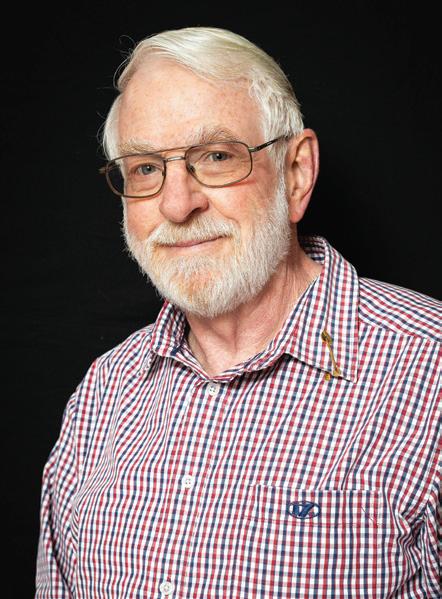
Technical Advisor: Nicci Wood
Insight and Sustainability Advisor: Lesley Smith
Training Development Manager: Belinda Cridge
Communications Manager: Debra Harrington
Design and Marketing Coordinator: Ranya Adolf
Executive Administrator: Ali Bray
Bookkeeping and Administration assistant: Zoe Hubbard
OUR SPECIAL INTEREST GROUPS
Backflow
Climate Change
Smart Water Infrastructure
Modelling
Onsite Waste Water Management

Stormwater
Water Service Managers’ Group
WeCan
Young Water Professionals:
Chapters in Auckland, Wellington and Christchurch.
For information contact: Katrina Guy 04 495 0891, email: Katrina.guy@waternz.org.nz
WATER JOURNAL
Editorial: Mary Searle Bell, Contrafed Publishing
M: +64 21 676 034
Advertising Sales: Debbie Laing
M: +64 27 455 0223
Design: Jonathan Whittaker
M: +64 21 147 5591
Publishing: Contrafed Publishing, General Manager: David Penny, 1 Grange Road, Mount Eden, Auckland 1024 PO Box 112 357, Penrose, Auckland, 1642
P: +64 9 636 5715 www.contrafed.co.nz

Distribution: Pip Donnelly, enquiries@waternz.org.nz
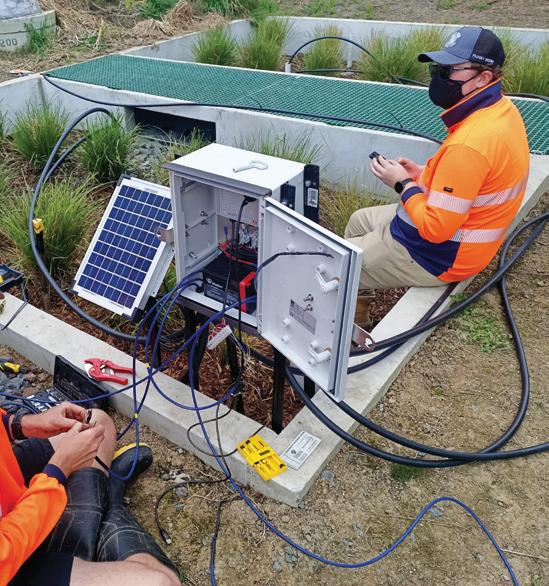
P: +64 4 472 8925
DISCLAIMER: Water New Zealand reserves the right to accept or reject any editorial or advertising material submitted for publication.
The opinions expressed in contributions to Water are not necessarily those of Water New Zealand. The information contained in this publication is given in good faith and has been derived from sources believed to be reliable and accurate. However, neither Water New Zealand, nor any person(s) involved in the preparation of this publication accept any form of liability whatsoever for its content including advertisements, editorials, opinions, advice or information. This extends to any consequences from its use. No part of this publication may be reproduced, stored in any retrieval system, or transmitted in any form or by any means electronic, mechanical, photocopying, recording or ink–jet printing without prior written permission of the publishers.
ISSN 1179-2949 (Print)
ISSN 2382-1906 (Online) www.waternz.org.nz
Water is printed on environmentally responsible paper, sourced from PEFC certified fibre from sustainably managed and legally harvested forests, and manufactured under strict ISO 14001 environmental management systems
91 New Waiho River threats investigated
92 Embracing and encouraging innovation
102 Plastic pollution in NZ lakes
104 Sale of single-use plastic water bottles banned at LAX
106 Paper: The dark side of artificial greening
114 Reconstructing hope: Rebuilding from Peru’s El Niño floods
120 Flash flooding exacerbates crisis
REGULARS AND COMMENT PIECES
18 Legal update
20 Profile: Boyd Miller
22 Profile: Josiah Simmonds
24 Profile: Natalie Van Leeuwen
30 Comment: Why we need a ministry for the ocean
54 Is saving water the new key to unlock our housebuilding future?
58 Dismissing the plausible – is human behaviour the primary barrier to risk
72 Creating ‘sponge cities’ to cope with more rainfall needn’t cost billions
86 Concrete industry on road to net zero carbon

98 Human capital – a solution to the water crisis
100 A streamline methodology for source risk management plans
74 42
SEPTEMBER/OCTOBER 2023 WATER NEW ZEALAND 3 CONTENTS WATER NEW ZEALAND Issue 231 SEPTEMBER/OCTOBER 2023 INSIDE 04 President’s comment 06 Water loss guidelines updated 07 Journey to carbon zero – our challenges and opportunities 10 Backflow prevention is proactive protection 12 Reflections on the Drinking Water Protection Conference FEATURES 26 Constructed wetland developed for WWTP 28 Water flows between Ōpōtiki seawalls for first time 32 Tackling new pest seaweed 34 Game on 36 Making beer from recycled water 38 Navigating water’s digital currents: The power of data collection 42 Record investment will deliver long-term benefits 46 The odd couple 48 Country’s first MABR installation at Helensville 62 Rebuilding Hawke’s Bay 67 Cyclone Gabrielle uncovers new secrets set in stone 70 Sponge cities model urban flood risk 74 International Stormwater MFD evaluation protocols 82 Sorting our stormwater assets 85 £100 million fund to save UK water The official journal of Water New Zealand – New Zealand’s only water environment periodical. Established in 1958, Water New Zealand is a non-profit organisation.
‘Ka ora te wai, ka ora te whenua, ka ora nga tangata’
‘If the water is healthy, the land is healthy, the people are healthy’
-
-
20
COVER PHOTO COURTESY OF:DAVE ALLEN, NIWA.
Water sector reaches major milestone
Lorraine Kendrick President, Water New Zealand
By the time this publication goes to print, the long journey of water reform legislation that began after the Havelock North contamination in 2016, will have reached the end of the road – at least for now.
The work over the past seven years has been leading the way in water sector transformation. The new water services regulator has now been in place for more than a year and, as well as drinking water regulation, will have oversight of wastewater and stormwater from October.
The Government’s reform programme has passed a new milestone with all the required legislation being passed just before Parliament went into recess prior to the election. This means the legislative pieces of the programme are now in place.
In the wider environment, the Spatial Planning Act and Natural and Built Environment Acts have replaced the Resource Management Act, and the new Climate Change Adaption legislation is set to be introduced next year.
Water New Zealand has played a strong advocacy role for our members submitting on all legislation, which ensured that the voice of the water community was heard and considered as part of the select committee processes, and has resulted in positive changes in the legislation.
While the political future of water reforms may be less than certain, we will continue to see much needed transformation because we need to find an affordable way to address our infrastructure deficit and we need to improve the quality of our freshwater environment.
In my last column, I talked about the work that Water New Zealand has been doing around how we can ensure a long-term sustainable water future.
Our document, Towards 2050: Transformation vision for the water sector, pulled together industry thoughts in key areas such as Te Mana o te Wai, capability and education, climate and environment, people and community, as well as digital, planning and standards, and smart buying.
Many of our members as well as others in the wider water sector contributed to this aspirational document and we very much appreciated their time and knowledge-sharing at our various workshops, online events and interviews.
Water New Zealand’s acting technical manager, Lesley Smith,
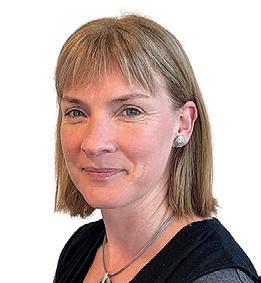
shares her vision of what a leap into the water sector future may look like – read her article on page 15.
The transformation challenge will vary regionally but we hope you will find the insights helpful in moving towards a future with Te Mana o te Wai at the centre of water service delivery.

As we go forward, it’s also clear that we’re not alone in our challenges. As your water community, it’s our role at Water New Zealand to help provide links to international organisations because right around the world, countries are grappling with the same challenges of affordability, resilience to climate change and declining water quality.
This past year, we’ve been strengthening our global connections through working with the Water Environment Federation(WEF) and the Australian Water Association (AWA). We’ll continue to build on these connections through the rest of the year and beyond. Water New Zealand chief executive, Gillian Blythe, will be representing us at the massive WEFTEC Conference in Chicago in late September.
Then, in October, Gillian and I will be leading a delegation to Taiwan to further discuss our hosting of the International Water Association – IWA-ASPIRE Conference alongside the Water New Zealand Conference and Expo here in 2025.
The IWA is a global network of water professionals, spanning the continuum between research and practice, and covering all facets of the water cycle. The IWA-ASPIRE Water New Zealand Conference and Expo 2025 will be a major event, and will help keep us firmly on the international water circuit.
And of course, coming up we have our flagship event at home –the Water New Zealand Conference and Expo 2023 – this time in Te Whanganui-a-Tara Wellington.
It’s looking to be another key event on the water sector calendar and I’m particularly looking forward to the extraordinary line-up of keynote and thought leadership speakers along with the high calibre of technical presentations.
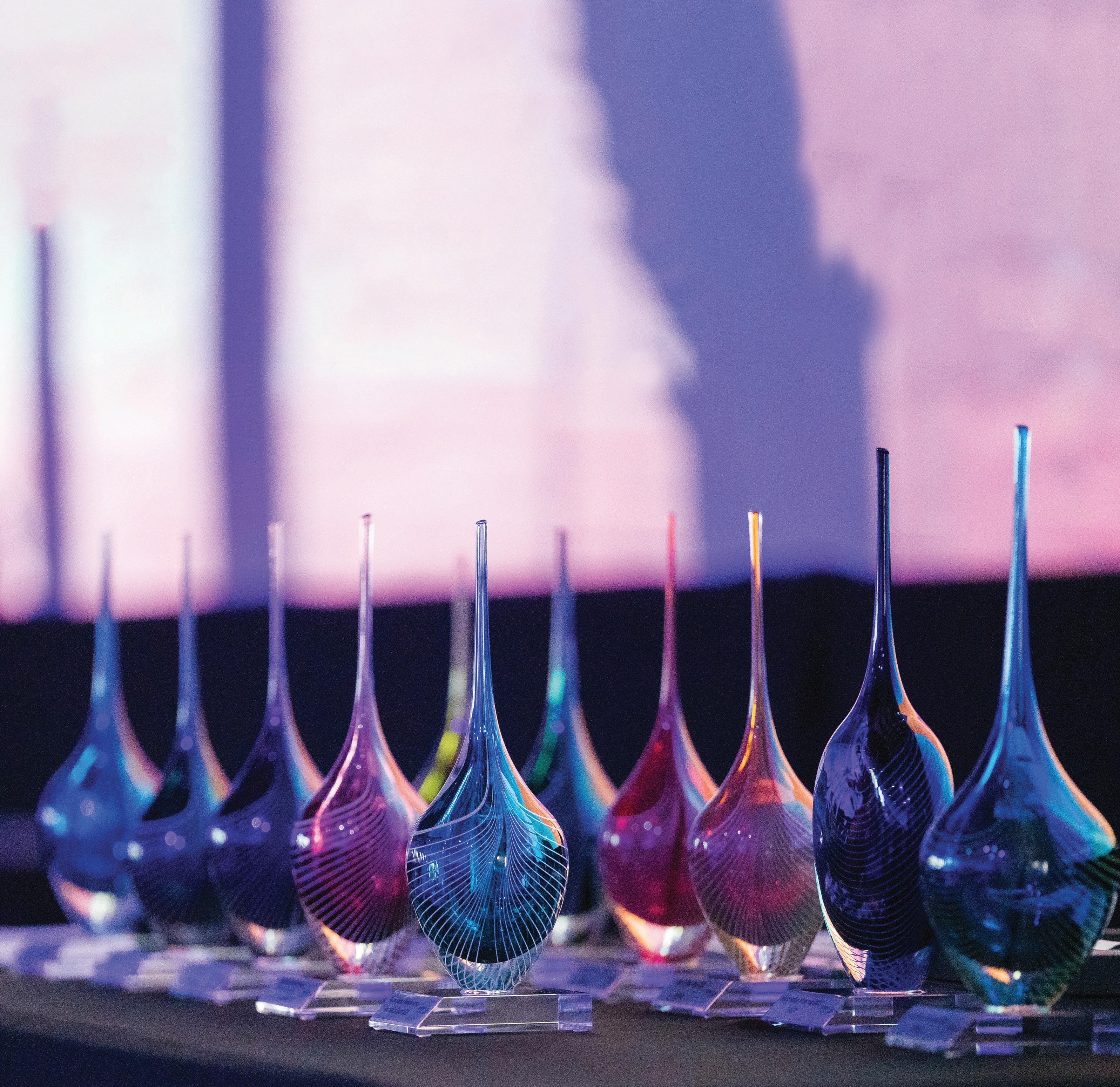
Certainly an event not to be missed and I look forward to seeing you there.
kite anō Lorraine Kendrick President
4 www.waternz.org.nz WATER NEW ZEALAND FROM THE PRESIDENT
Ka
Celebrating excellence at the Water New Zealand Conference and Expo 2023
The Water New Zealand Excellence Awards recognise outstanding achievement across the water sector.

The awards honour exceptional performance across a range of categories from trainee of the year and young water professionals to projects, innovation and environmental sustainability, health & safety and more.
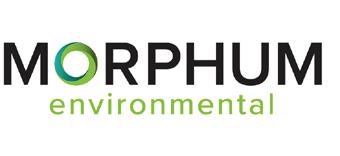
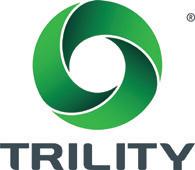

We will celebrate excellence and conference award winners and finalists at the Downer Gala Dinner on Wednesday 18 October, during the Water New Zealand Conference and Expo 2023.

THANKS TO OUR AWARD SPONSORS
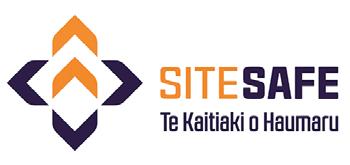

BROUGHT TO YOU BY GALA DINNER SPONSOR

Water loss guidelines updated
 By Lesley Smith, Water New Zealand; Richard Taylor, Thomas Consultants; and Christine McCormack, Water Cycle Consulting.
By Lesley Smith, Water New Zealand; Richard Taylor, Thomas Consultants; and Christine McCormack, Water Cycle Consulting.
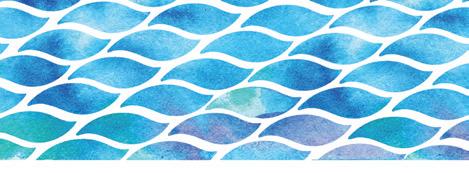
Around one fifth of all the water entering our networks is lost as leaks. This is roughly equivalent to the combined annual volume of water supplied by Christchurch City Council and Wellington Water. For some networks around the country, more than half the water supplied leaks out along the way.

Reducing these losses is a huge, no-regrets, opportunity. Water is a precious taonga, reducing water wastage meaningfully gives effect to Te Mana o te Wai. Lowering our water loss make us more resilient to droughts, which are predicted to become more severe with climate change.
It returns water to the environment, reduces the energy and chemical inputs required to treat and transport water, in turn, helping us to mitigate greenhouse gas emissions. Increasingly, these benefits are being recognised and driven by regulatory and compliance requirements.
Articulating the drivers for water loss reduction is easy; achieving low losses is not. Determining the level of losses in underground
pipe networks, especially those without customer water meters, is a challenge.
Physically reducing the level of water loss requires integrated programmes of work and multiple initiatives across the organisation. Some programmes, such as watermain renewals, are also very expensive and take years to implement.
Scoping, prioritising and integrating these programmes and initiatives to achieve optimal results is complex.
To support these efforts, the Water Efficiency and Conservation network, a Water New Zealand special interest group, was keen to reinvigorate the use of the NZ Water Loss Guidelines. The need was recognised by the Water Service Managers Group, who have provided funding to update guidance material.
The updated guidance is now available online in the technical documents section of the Water New Zealand resource hub.

Presented in a range of formats, the updates include an overview document, a detailed technical guide, and two new Excel based calculators; one for analysing minimum night flows, and one for analysing winter water use (to use when calculating a water balance for
networks with unmetered customers).
The resources build on the first edition of the Water Loss Guidelines, and provide steps to measure, monitor, and manage down losses. The revised edition has a maturity matrix, developed to help water network operators understand how their ‘status quo’ measures up to best practice, and where to focus improvements.
The update has been led by Richard Taylor, Thomas Consultants, the guidelines original joint author and supported by other experts, Jon Reed of Beca, Dan Johnson of WSP, Christine McCormack of Water Cycle Consulting, and Allan Lambert (UK expert).
Connect with other professionals working to reduce losses in your region at an interactive workshop at the Water New Zealand Conference and Expo on October 17.
WSEs need emergency plans from Day 1
Water Services Entities (WSEs) must have an Incident and Emergency Management (I&EM) Plan in place on the first day of their operation to meet the needs of their community, as well as meet legislative requirements.
The Water Services Reform National Transition Unit (NTU) is developing Water Sector Incident and Emergency Management Framework Guidelines to enable WSEs to develop their own emergency response and recovery arrangements, beyond ‘business-asusual’ incident management.
“The I&EM Guidelines will include before, during and post event procedures for WSEs, recommended I&EM plans and documentation, and key relationship interdependencies,” says Tim Hammond, NTU operations lead.
“On Day 1 WSE staff need to understand when, and how, to escalate an issue and understand their role in a major response situation to offset the current variations in I&EM practices across existing agencies.”
WSEs will be a ‘lifeline utility’ (critical infrastructure) under the Civil Defence
Management Act, which means they must be able to function, even if it’s at reduced levels during and after an emergency.
The I&EM Guidelines are being developed by a working group made up of eight council representatives, the National Emergency Management Agency (NEMA), Taumata Arowai, and the National Transition Unit.
The draft guidelines are being reviewed by subject matter experts and socialised across the emergency management and water sectors.
6 www.waternz.org.nz WATER NEW ZEALAND UPFRONT
August 2023 WATER LOSS GUIDELINES SECOND ED TION Overview info@ckl.co.nz • www.ckl.co.nz Auckland: 09 524 7029 Hamilton: 07 849 9921 Te Awamutu: 07 871 6144 Tauranga: 07 262 2282
INTEGRATED PLANNING, SURVEYING, ENGINEERING, AND ENVIRONMENTAL SOLUTIONS THAT WORK.
Journey to carbon zero –our challenges and opportunities
You’re not going to find a more climate dependent business than a company in the water services sector – it affects how we take our water, where we take our water, where we return the water back, how much water people use. If we’re not taking action to look after the water and climate then our services will be reduced over time.
These were the words of Wellington Water’s Fraser Clark speaking on part one of Water New Zealand’s four-part Tāwara o te Wai podcast series on the water sector’s low carbon journey.
Fraser, who’s also a Water New Zealand board member, says that while taking action to reduce carbon emissions is obviously the “right thing to do anyway”, future investors will want to see demonstrable action on climate change and that’s something that as a sector “we ignore at our peril”.
The new podcast series is hosted by Water New Zealand’s former Climate Change Special Interest Group chair Jon Reed and committee member Hannah Edmond, and follows the group’s publication last year of Navigating to Net Zero: Aotearoa’s low carbon journey - a practical guide to help the water sector cut emissions.
Each of the four episodes focuses on a particular aspect of the sector’s carbon zero journey and how different organisations are grappling with their approach.
Jon says the podcasts look at the context of the carbon emissions targets, developing a baseline and forecasting, as well as what is being done by some organisations already down the track on their journey and the culture change needed within organisations and overseas.
In the first episode Jon and Hannah talk with Fraser about Wellington Water’s roadmap to net zero and the challenges and opportunities to achieve that.
Fraser spoke of investment benefits of a low carbon approach and the need to understand scale and opportunity.
He says it’s harder to shy away from action if you can make people aware of the benefits of a low carbon approach and that there’s a pathway towards reduction.
In episode two, Jon and Hannah discuss with Queenstown Lakes
Tāwara o te wai
Water Talk
District Council senior three waters engineer Calum Pringle, how the council is applying its net zero goals to work programmes.
The council has 60 actions spread across its Long Term Plan cycle with smart and ambitious but achievable goals.
A key challenge, he says, is ensuring that the work that is happening at grassroots level is encompassed into the overarching network and adopted by the people who run the many projects across the region.
Episode three will focus on the culture change needed, while episode four takes a look at what’s happening overseas.
You can listen to the series by going to the resources section of the Water New Zealand website and then into the Tāwara o te Wai podcast page or searching Water New Zealand in Spotify.
Te Mana o te Wai definition broadened
Water New Zealand chief executive Gillian Blythe has welcomed changes to the reform legislation that will ensure that the definition of Te Mana o te Wai will include water in any form while in a pipe, tank or cistern.
Following discussions at the Stormwater conference in May, Water New Zealand wrote to Local Government Minister Kieran McAnulty expressing concern over the lack of definition in

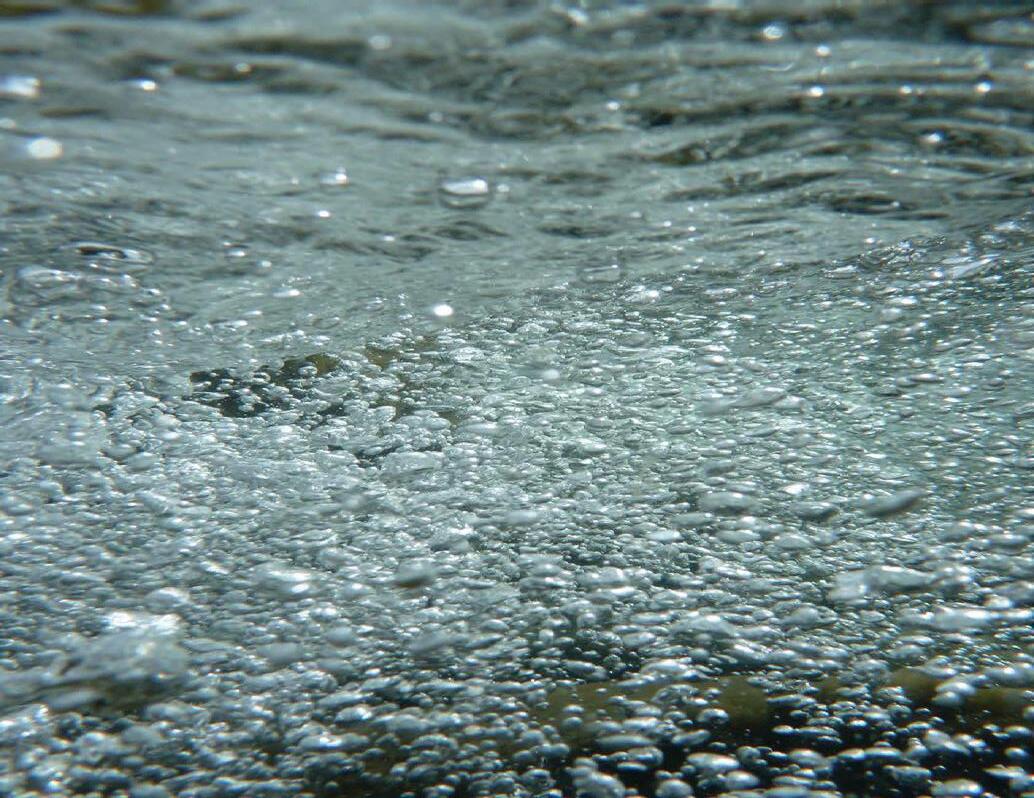
water services legislation.
“In our letter, we told the Minister that we believed there was a need for the legislation to recognise that drinking, wastewater, and stormwater all have mana, whether enclosed in pipes or on the surface.”
Since then, the Governance and Administration Select Committee agreed that a definition should be included to provide certainty across the water system, particularly in relation to the scope and
application of Te Mana o te Wai and community priority statements.
“This important change sends clear and unambiguous direction to water service providers and the regulatory system for the funding and delivery of Te Mana o te Wai outcomes.
“It also demonstrates that making a submission makes a real difference.”
You can read the Minister’s letter in our submission section on our website.
SEPTEMBER/OCTOBER 2023 WATER NEW ZEALAND 7
Cultural significance and importance of wai learning module
October will be the last opportunity this year to take part in one of Water New Zealand’s most popular digital learning opportunities.
The Cultural Significance and Importance of Wai module is designed to help people in the water sector – in whatever area you work –to deepen your understanding of wai (water) through a Te Ao Māori lens.
The last module for the year will begin in mid-October and will involve a total of nine online sessions.
It is being led by Troy Brockbank (Te Rarawa, Ngāti Hine, Ngāpuhi). Troy is a civil engineer, a water practitioner, and pou ārahi Māori - Māori advisory lead (principal) at Pattle Delamore Partners, and a member of the Water New Zealand board.
The module aims to help grow understanding of Māori values and
perspectives, bridging the Māori and engineering worlds, and combining the best of both for the protection of water into the future.
You can find out more about this module by going to waternz.org.nz/ training.
The cultural significance module is one of seven digital learning opportunities by Water New Zealand. Our other digital badges are designed as flexible, digestible opportunities for you, or your staff, to learn at times that suit you.
This year we added Small Water Supplies 101 and Water Sampling 101 to our digital badge stable and next year there are plans to launch two new ones – Rural Water Supplies 101 and School Water Supplies 101.


Take a look at what’s on offer by visiting the career development page on our website.
Survey reveals key areas of interest
Water reform, climate change, Te Mana o te Wai, and stormwater are key areas of interest to our members, according to the latest membership survey.
The survey also revealed that Water New Zealand members particularly value connecting with sector developments through our webinars and events, as well as staying up to date with industry news through our publications such as the Water journal and our Pipeline and Pipeline+ e-newsletters.

Chief executive Gillian Blythe says it’s heartening to see that areas that members value most are where we have been putting much of our effort.
“More than 80 percent of respondents ranked events, conferences, webinars and publications as main membership drawcards.”
She says there has also been a positive reaction to our new-look website with three quarters of respondents saying they find it easier to find what they’re looking for.
The survey also revealed areas that we need to continue to work on. For instance, there is a lot of interest in training and professional development.
“That’s a key area for us and we already have new digital badges in development including rural supplies and school watersupplies. We’ll also be continuing our popular Cultural Significance and Importance of Wai module.”
She says building our competency frameworks into our training design and offerings will continue to be a key work programme.
Special Interest Groups are another way that members can connect with the sector.
The survey revealed that a third of the respondents were not involved in any groups because they don’t know what is expected of them.
“We will be looking further to see how we can make our groups more accessible to a wider group of members.”
Most respondents regard Water New Zealand membership as good value for money with 81 percent rating it as either excellent, very good, or good value.
Going forward, respondents want to see continued focus on water reform, climate change, education, as well three waters and freshwater issues. Digital technology and asset performance also feature, as well as important topics.
“We’ll be taking those views into account as we progress through our work programmes in the coming year.”
8 WATER NEW ZEALAND UPFRONT
2024 Proudly brought to you by Water New Zealand 15 – 1 7 May | Takina Wellington Te Whanganui-a-Tara Visit our website www.stormwaterconference.org.nz to see 2023 conference highlights and join the mailing list. BROUGHT TO YOU BY Stormwater Conference 2024 Save the Date 15 – 17 May 2024 Te Whanganui-a-Tara Wellington Mark your calendars to join us for the Water New Zealand Stormwater Conference 2024 at the Tākina Convention & Exhibition Centre.
Backflow prevention is proactive protection
Peter highlighted that every drinking water supplier has a responsibility to assess the risk of backflow to their reticulated network and to ensure backflow prevention devices are installed where they are needed.
Historically, backflow prevention was voluntary. The Health Act 1956 only expected a water supplier to consider backflow if there was a risk and if the water supplier considered it desirable and necessary.
With the introduction of the Water Services Act 2021 (the Act), registered suppliers now have a duty to ensure that supply arrangements protect against the risk of backflow if their supply includes reticulation.
Backflow occurs when contaminated or dirty water is sucked back into the drinking water network from pipes, taps or outlets.
When the pressure drops in the mains nearby it can suck liquid back into the network from connections to houses or businesses. This could be through a hose sitting in a tank of chemicals, an irrigation outlet lying in a puddle of fertiliser, or countless other sources. If the outlet is connected to the mains, it is vulnerable to backflow, unless a backflow prevention device is installed.
When things go wrong
Backflow is known to be a major contributor to network and drinking water safety issues. There have been situations where caustic soda, water from rural troughs, and even beer, has contaminated drinking water networks through backflow.
While it is not known exactly how many people become ill from drinking water that is contaminated by backflow issues, it is a serious risk to the health of communities.
The caustic soda backflow incident that occurred in May 1994 was one of the most serious reported in New Zealand. It was reported that caustic soda from a dairy factory back-siphoned into a common water main. At least six people received chemical burns. This incident is reported in the Water New Zealand publication, Boundary Backflow Prevention for Drinking Water Supplies, and helped inform early work on backflow prevention.
Rules for drinking water suppliers

The Drinking Water Quality Assurance Rules came into effect on 14 November 2022.
For small supplies (serving 26 - 100 people) rule D1.2 requires the supplier to assess the distribution system for backflow risks at least every two years. Any point that is found to be at risk for backflow must have a backflow prevention device fitted. Supplies that serve 101 – 500 people are covered by rule D2.7, which requires annual assessments
of the distribution system for backflow risk. A record needs to be kept of any identified risks and suitable backflow prevention devices fitted and tested annually.
The rules for large supplies serving over 500 people are more comprehensive. Large suppliers will need to:
• Prepare and implement a backflow prevention programme. (D3.1);
• Surveys of a distributions system at least every five years to assess backflow risks. (D3.2);
• Notify local authorities of risks, determine what backflow prevention devices they need and make sure they are installed within a reasonable timeframe. (D3.3;)
• Test all backflow prevention devices annually. (D3.4);
• Maintain a register of all backflow prevention devices, including the device types, and test results. (D3.5);
• Access to a water network through use of a standpipe is not permitted except by authorised parties. (D3.6).
Visit taumataarowai.govt.nz for more information about the Drinking Water Quality Assurance Rules.
Peter Wood is a regulatory team leader at Taumata Arowai based in Palmerston North. He was part of the team that drafted the Drinking Water Quality Assurance Rules that came into effect in November 2022. Peter has been involved in drinking water regulatory roles since 1991 as a health protection officer, and as a drinking water assessor from 2007.
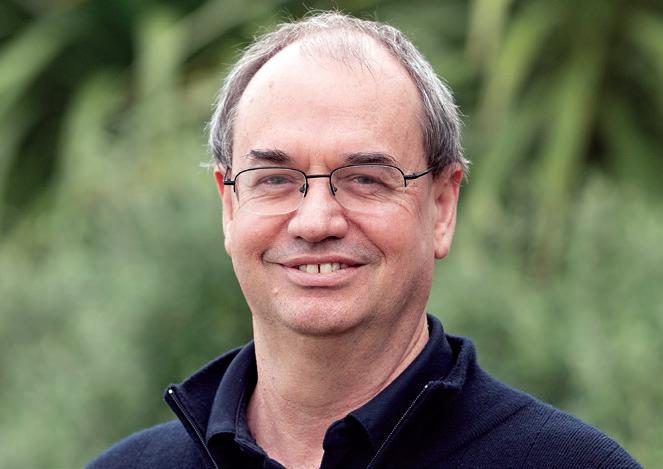
Managing risks through drinking water safety planning
A Drinking Water Safety Plan records hazards and risks to the drinking water supply. Preparing a Drinking Water Safety Plan is a risk management process.
Backflow is a significant risk to safe drinking water. The management of this risk, including the use of prevention devices in line with the Drinking Water Quality Assurance Rules, needs
to be considered and addressed as part of drinking water safety planning.
Taumata Arowai has started to review Drinking Water Safety Plans on a prioritised basis in accordance with our Compliance, Monitoring and Enforcement Strategy.
Drinking water suppliers are now required by the Act to consider how they will manage
the risk of backflow through drinking water safety planning. Backflow incidents can present a serious risk to the health of people due to the contamination of drinking water after treatment. Implementing a backflow prevention programme is a proactive way to protect people and communities from water contaminated as a result of backflow incidents.
10 www.waternz.org.nz WATER NEW ZEALAND UPFRONT
At the Drinking Water Protection Conference, Peter Wood of Taumata Arowai talked about the importance of managing the risk of backflow to drinking water networks.
Peter Wood
Find out the latest thinking on innovation and technology, Te Mana o te Wai, partnerships, resilience, sustainability and much more. Take part in discussions and make new contacts while helping shape the future in Aotearoa New Zealand.
Monday 16 October – Preconference workshop
Join Taumata Arowai for an update on drinking water rules and regulations, the Commerce Commission on economic regulation and Ministry for the Environment on NPS-FM and operationalising Te Mana o te Wai.

If your interest is water, don’t miss this important conference
Find out more at waternzconference.org.nz
BROUGHT TO YOU BY

THANK YOU TO OUR PREMIER PARTNERS

REGULATORY PARTNER

SEPTEMBER/OCTOBER 2023 WATER NEW ZEALAND 11
GALA DINNER
SPONSOR
Reflections on the Drinking Water Protection Conference
 By Backflow Group chair Richard Aitken and the Backflow Group Committee
By Backflow Group chair Richard Aitken and the Backflow Group Committee
We welcomed delegates from all corners of the water industry to the conference – from as far away as the United States, to a young local student keen to get into the water industry.
The heartfelt opening words from a representative of Ngāti Whātua Ōrākei (Tāmaki Makaurau Auckland), set the scene for what has been one of our best conferences to date.
With a focus on end-to-end drinking water protection, it was encouraging to see networking between industry groups that may not normally interact.
The change in conference focus was an active return to the original Backflow Group mission statement of drinking water protection –from the source to the last flowing tap, as drinking water protection is much more than just backflow prevention (that should be the last line of defence).
After calling for abstracts for the first time, we had a wide range of presentations and presenters, providing something for everyone.
With a mix of theoretical, design, and research papers and some nuts-and-bolts papers, topics ranged from the use of metagenomics tools for characterising bacteria in drinking water to legislation and regulation updates, to design challenges, training, and identifying the components of a survey programme.
With the current environment of changing legislation and regulation, the two main regulators, Taumata Arowai and MBIE, are creating rules that encompass multiple environments, including rural and small water supplies.
Having these regulators attend and present generated healthy conversations about identifying and bridging the gaps where the two sets of rules interface. It was clear from the conversations that these rules come with a few challenges.
One example is the question, where does a water supply stop and sanitary plumbing start for rural properties and small supplies?
For rural and small supplies, rules created by the water services regulator need to be complied with by installers that are not up to date with requirements under the Water Services Act 2022 and Drinking Water Quality Assurance Rules. This means that they are supplying and installing non-compliant systems and equipment.
Water New Zealand is planning to facilitate a working group across the industry to address this knowledge and awareness gap. It is anticipated the outcome will be a targeted training roadshow to explain the roles and responsibilities under each set of rules, including training and competency requirements.
While we had representation from a good cross-section of the
water industry, we have identified a need to directly engage with more disciplines in the water industry on a regular basis.
One of the many opportunities we are investigating is the delivery of continuous professional development (CPD) in the plumbing industry. We will continue to engage, and work, with other industry associations to share knowledge and training.
Finally, we would like to express our thanks to our Australian counterparts who shared their knowledge and experience through their presentations on backflow in Australia and America, and touching on the important lesson to be learned around legionella in potable water systems.
We look forward to continuing our close working relationship with Australia, including working towards holding a combined Australasian conference in the near future.
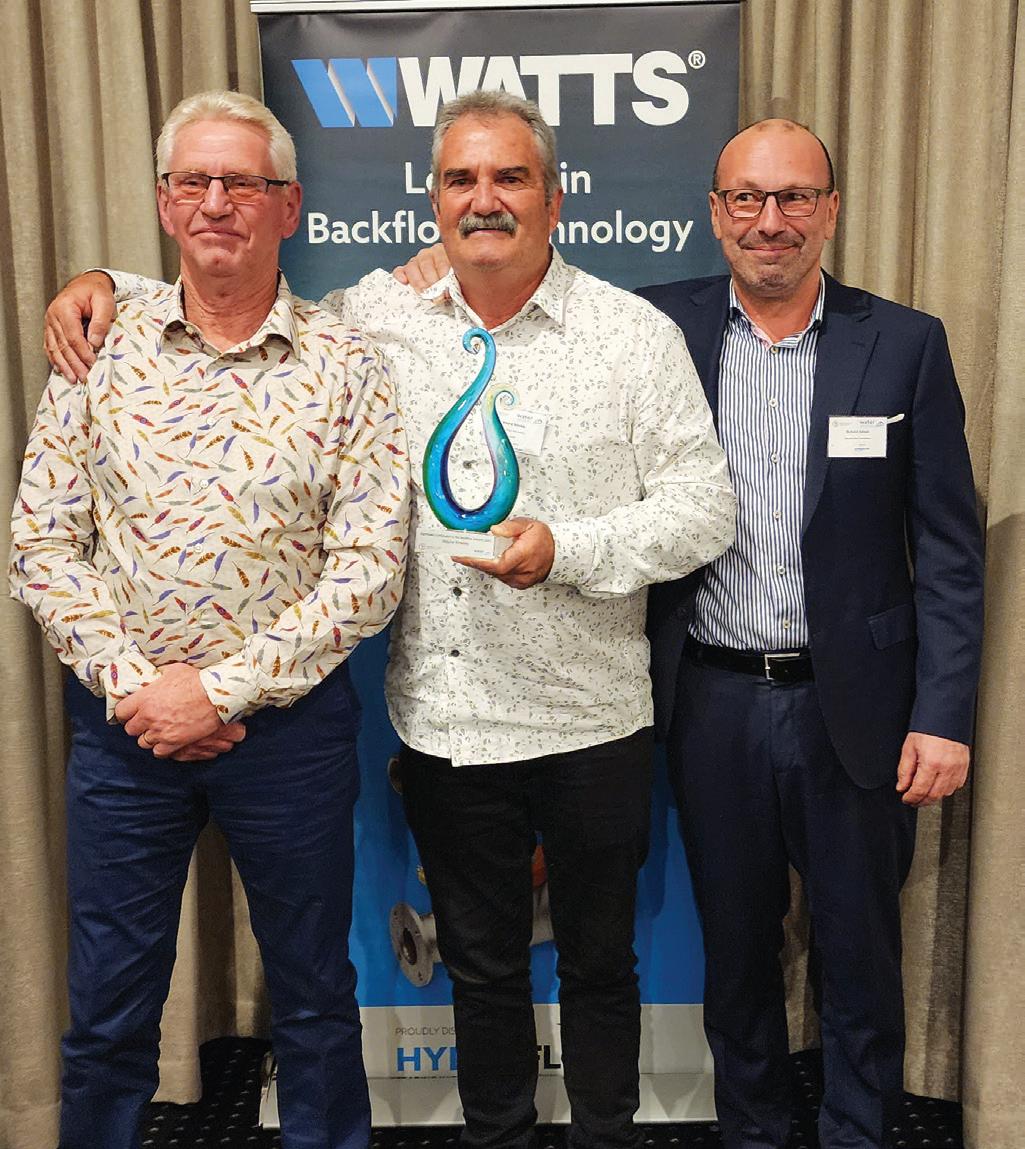
12 www.waternz.org.nz
WATER NEW ZEALAND UPFRONT
At the recent Backflow Conference, Wayne Shields (centre) was named as winner of the Award for Significant Contribution to the Backflow Industry 2023. He's pictured with former chair Paul van den Berg, left, and Backflow Group chair Richard Aitken.
TOWARDS 2050:
Transformation 2050
Water New Zealand’s acting technical manager Lesley Smith takes a leap into the future to see how we could be living with water in the middle of the 21st century.
The year is 2050. Recently retired, I wake late. The blistering Wellington sun pours in my window. I reach for a glass of ‘new’ water to cool down.
With rising carbon prices, my community elected to switch to high-quality ‘new’ water from our local decentralised recycled water treatment plant. The rising carbon cost has led to lower carbon desalinated supplies introduced in the late 2020s, when alternatives were sought to protect biodiversity and swimmability during low summer flows.
The water is clean, refreshing, and I trust its safety. After all, the recycled water plant is just down the road and run by my neighbour Leilani, one of many climate immigrants who have recently arrived. With well-structured career pathways, and great working environment, Leilani, like many others, has found the water sector offers a career of choice.
Checking the forecast, I see another tropical deluge is approaching, so I clean my electric scooter and empty my rainwater tank to ease first flush pressure from the stormwater network. As a retiree, I’m always keen to save dollars, and the reduction on my tariff makes this well worth my while.
Recent storms downed the national grid, so I decide to take my compost to the co-
generation plant attached to Leilani’s sewer mine. These decentralised biogas facilities have proved a real lifeline with centralised networks buckling under the new climate extremes.
I hope the power holds so I can visit my grandkids’ school, where they ensure waterway protection by checking sediment traps before heavy rains. The integrated education programme has been a big part of filling the water sector skills gap, allowing me to retire in peace…
Of course, there are many alternative futures that may have manifested by 2050, ranging from full blown eco-apocalypse to a techno-topia and many in between.
Regardless of our future, many working in the water sector hold common aspirations for future water service provision.
Earlier this year, my colleagues and I had the great pleasure of compiling these to develop Towards 2050: Transformation vision for the water sector. Now available on our website: waternz.org.nz/ transformation.
Through a series of events, one-on-one interviews and workshops around the country, we sought the views of over 500 members and stakeholders.
The document articulates future aspirations, and steps to get there, clustered
around seven focus areas shown in the figure.
By having a collective vision, we aim to provide a waypoint to help navigate and seize the opportunities created by water sector reform: a once-in-a-lifetime opportunity to change the delivery settings for water services and the ways in which we work.
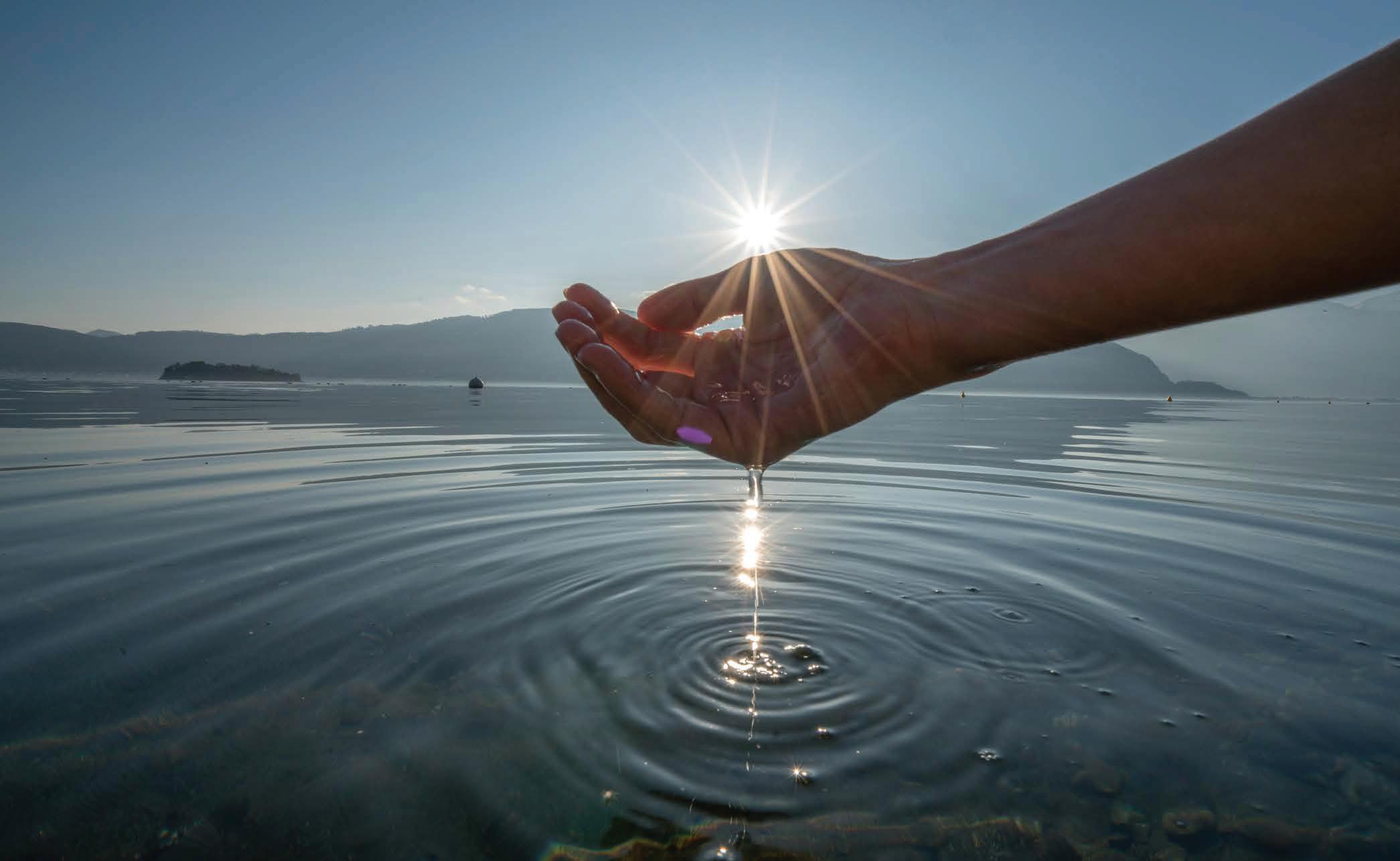
However, the reforms will not solve all challenges facing the industry; the transformation document reflects supporting actions that must occur across our supply chains, our workforce and supporting institutions, that will require collective action on multiple fronts.
The transformation challenge will vary regionally, with our current disaggregated service delivery creating multiple starting points. We have not attempted to determine the priorities, and the necessary trade-offs across focus areas. Instead we encourage you to use this document as an input into your organisation’s unique role in supporting necessary change.
Over the coming months, we will be developing our website to help access the actions relevant to your area. We would love to hear your stories, ideas, and suggestions for the next steps to bring these visions to life. Email me at, lesley.smith@waternz.org.nz.

SEPTEMBER/OCTOBER 2023 WATER NEW ZEALAND 13
Transformation vision for the water sector
Te Wiki o Te Reo Māori
By Troy Brockbank (Te Rarawa, Ngāti Hine, Ngāpuhi),
Water New Zealand board member

Water New Zealand Waiora Aotearoa is proud to once again tautoko and support Te Wiki o Te Reo MāorI – Māori language week 11–17 Mahuru September 2023. This year we highlight ‘Te Waiora’ – the life giving waters.

All waters originate at the puna, the source/spring, and flow continuously within te hurihanga wai/the water cycle, carrying life giving properties – not only to the taiao but to the animals and people.
The waiora from above, rain down from the skies of Ranginui through the winds of Tāwhirimātea, before falling on the mountaintops of Hineparimaunga, and the ngahere of Tāne Mahuta. These then flow overland, forming the cloaking waterways of Papatūānuku.
The waiora from below springs up from
the underground source where it joins the flowing waters of Parawhenuamea and Hine te Wairere. These waters carve through and transform valleys, transversing the creeks, streams, and rivers to the nurturing wetlands of Hine te Repo, and residing out to the great oceans of Tangaroa and Hine Moana.
As the tūpuna of tomorrow, our greatest obligation is to sustain the life force of our future mokopuna. It is important that we protect and enhance not only waiora, but the source of these life giving waters – the puna of the sky, the puna of the land, and the puna of people.
Go to waternz.org.nz/to find out more and download and print our poster(see opposite page). Or scan the QR code to access the webpage for more information.
Integrated Ultrasonic Water Meters

Cost effective metering accuracy with ultrasound technology
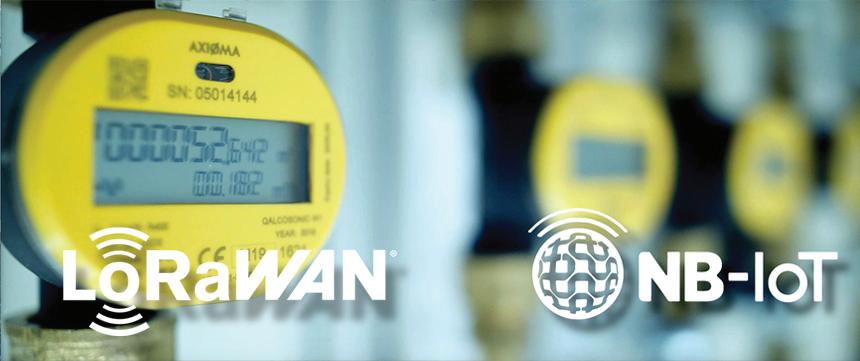
14 www.waternz.org.nz
www.adriley.co.nz/axioma
WATER NEW ZEALAND UPFRONT
Highly reliable metering products produced and certified in Europe
THE LIFE-GIVING WATERS
Waiora originates at the puna (the sources, or springs), of Ranginui and Papatūānuku and flow continuously within te hurihanga wai (the water cycle), carrying life-giving properties to the taiao (the environment), to the animals, and to the people within.

Ko te wai te ora o ngā mea katoa. Water is the life source of all things.

TE WIKI O TE REO MĀORI Māori Language Week 11–18 MAHURU 2023 Scan to explore Te Waiora further
TE WAIORA
Pūkohu FOG/MIST Pae Maunga MOUNTAIN RANGE Kapua CLOUDS Toka ROCKS Ngaru WAVES Wai Mānawa MANGROVES Au CURRENT Repo WETLAND
Wai
Wahapū
Puna
SPRING Hikuwai HEADWATERS Wairere WATERFALL Ngahere FOREST Hōpua POND
ESTUARY Ngutuawa RIVER MOUTH Takutai COASTLINE
KEYNOTE SPEAKERS INCLUDE:
Erin
Erin is a formerly unknown legal researcher who became a 20th century icon following her persistence in uncovering the poisoning of water in the small US town of Hinckley.
As a result of her investigations, the utility giant, Pacific Gas & Electric was forced to pay $333 million in damages to more than 600 Hinckley residents. At the time it was the largest direct action lawsuit of its kind Erin has since lent her voice to other key issues such as the Flint Water Crisis.
Erin uses her life experiences to motivate and bring inspiration to audiences, providing lessons on her four steps to success, her motto for resilience and perseverance, and advocacy for causes that matter.
Helmut is an experienced director, executive, and consultant with specialist skills in implementation and change management, business, and economic development (including new venture identification, planning, and establishment), strategic analysis and planning, public policy, and finance.
Helmut has extensive consulting experience in a wide range of private and public sectors (particularly health) including appointment to the boards of PHARMAC, Capital & Coast District Health Board, Health Information Standards Organisation, and Health Information Strategy Action Committee.
In July 2021, Greater Western Water was formed through a merger between Western Water and City West Water and Maree was appointed the inaugural managing director.

The formation of Greater Western Water was identified as the best way to cater for population growth in the west while continuing to supply high quality, affordable water services.
Prior to her appointment, Maree had been managing director of City West Water, leading the delivery of water services to over one million Melbournians across the Melbourne CBD, inner suburbs and the growing western region, as well as the delivery of major new assets vital for growth, urban renewal and government infrastructure.

Maree combines her water sector experience with a diverse and commercial driven background, and her leadership was also recognised by her inclusion as IPAA Top 50 Women in Public Sector (Victoria) 2018.
Jon Lamonte
Chief Executive, Northland & Auckland - Water Services Entity
Jon was Watercare CEO until February 2023, when he began his current role at the DIA after being appointed to lead Water Services Entity A when it begins operating on 1 July 2024.
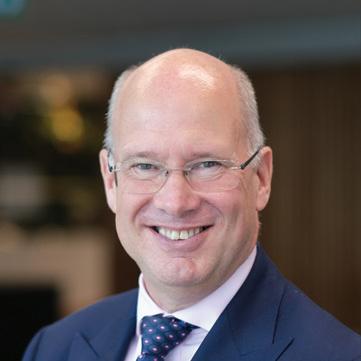
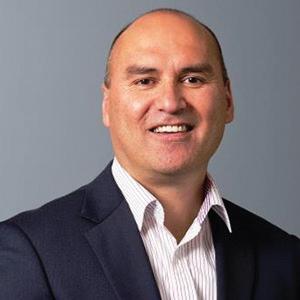
He is a director of the Water Services Association of Australia (WSAA)
Prior to joining Watercare, Jon held chief executive roles in the transport sector in Australia and the United Kingdom, where he has overseen significant development and investment in infrastructure projects, working collaboratively with a wide variety of stakeholders to deliver key projects. Jon began his career in the Royal Air Force in the UK and became a senior officer before leaving to work in the transport sector.
Helmut Karewa Modlik CEO – Tumu Whakarae
Brockovich Virtual Keynote
Maree Lang Managing Director –Greater Western Water
Ziena Jalil
With a career ranging from diplomat to business leader to entrepreneur across New Zealand and Asia, Ziena draws on a rich experience of many worlds to bring equity and opportunity to those with diverse cultures, abilities and experiences.
As a young(ish) Kiwi Fiji Indian woman, Ziena regularly speaks and writes about diversityrelated issues.
She is a keynote speaker, facilitator, MC and commentator on topics as diverse as economic development, international and vocational education, Asia business, leadership, crisis management, country branding and politics.
Ziena consults on strategy and stakeholder engagement, and is a board member of Manukau Institute of Technology, Unitec, Asia New Zealand Foundation, DNA Design, and the Cancer Society Auckland Northland, and Education New Zealand.


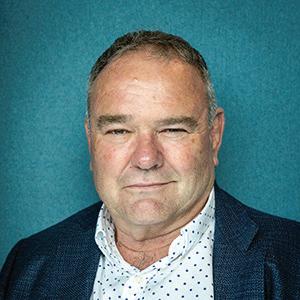
A New Zealand Women of Influence awards finalist, she was also recognised by Campaign Asia Pacific as part of its 2020 Women to Watch, a group of 40 outstanding women in the Asia Pacific

Dallas King Hokianga, Ngāpuhi
Dallas King is a kai kōrero for Ngāti Kaharau & Ngāti Hau Hapū in Hokianga and is recognised for her work in advancing the representation of communities in local decision making.
She provides expertise both here and across the world promoting indigenous knowledge systems as a sustaining basis for systemic and responsive transformation.

Dallas has studied biology, ecology, and environmental sciences and promotes Te Ao Māori scientific concepts from alternative points of view.

She continues to walk alongside her elders as knowledge holders & practitioners, learning and sharing kōrero tuku iho and contributing to its continuum through ngā mahi tirotiro (observing signs within the living world).
She has been a staunch advocate for tikanga Māori & te mana o te taiao within her rohe, especially with regard to wai.
Karlene Maywald
Karlene is the South Australian water ambassador for the South Australian government, the managing director of Maywald Consultants Pty Ltd, chair of WaterAid Australia and a director of WaterAid International.
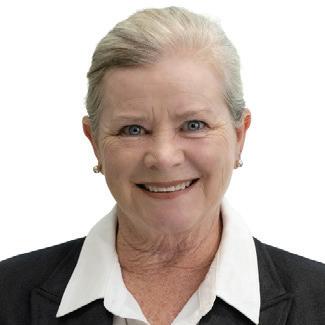

Her time as a cabinet minister with the SA Government has given her extensive experience in high-level strategic planning, oversight of major infrastructure planning and delivery, reform of governance and organisational structures, budget oversight, change management, problem-solving across a broad range of high-risk sectors and driving the delivery of major policy reforms.
Karlene has held such positions as chair of the National Water Commission, representative for the seat of Chaffey in the South Australian House of Assembly, South Australia’s Minister for Water Security and the River Murray and director of the South Australian Water Corporation. She has also served on numerous national ministerial councils including the Murray Darling Basin Ministerial Council, the Natural Resource Management Ministerial Council, the Primary Industries Ministerial Council and the Regional Development Ministerial Council.
REGULATORS PANEL:
THANK YOU TO OUR PREMIER PARTNERS AND REGULATORY PARTNERS


BROUGHT TO YOU BY REGULATORY PARTNER
 Bill Bayfield Facilitator Allan Prangnell Chief Executive, Taumata Arowai
Andy Burgess General Manager Infrastructure, Commerce Commission
Fiona MacTavish Chief Executive, Bay of Plenty Regional Council
Bill Bayfield Facilitator Allan Prangnell Chief Executive, Taumata Arowai
Andy Burgess General Manager Infrastructure, Commerce Commission
Fiona MacTavish Chief Executive, Bay of Plenty Regional Council
Legal update
plans (excluding regional coastal plans).
This process must be used for proposed regional policy statements or regional plans (or changes) that give effect to the National Policy Statement for Freshwater Management (NPS-FM) or otherwise relate to freshwater. If only part of the planning instrument relates to freshwater, the council must use the FPP for that part, and use the RMA schedule 1 process for the other parts.
Freshwater management, including freshwater farm plans
In the last journal we noted that freshwater farm plans have been rolled out in two regions – Waikato and Southland as from August 1, 2023, giving farm operators 18 months from this date to prepare their plans for certification. Consistent with other regulatory requirements, by the end of 2025, the regulations will be in effect across all regions.
The other regulatory requirements refer to the fact that, by the end of 2024, every region must have ensured it has notified plan changes that give effect to the National Policy Statement for Freshwater Management 2020. This requires all regional councils to update their regional rules to give effect to stricter national targets.
To recap on the process, plan changes will be determined via the Freshwater Planning Process, which streamlines decisions on freshwater plans.
The freshwater planning process is a new plan-making process that regional councils and unitary authorities must use for proposed freshwater provisions in regional policy statements and regional
The process is:
• Requiring regional councils to notify freshwater plans that give effect to the NPS-FM by 31 December 2024 and make final decisions within two years of notification;

• Establishing independent freshwater hearings panels with enhanced hearings powers, made up of expert freshwater commissioners, council and tangata whenua nominees;
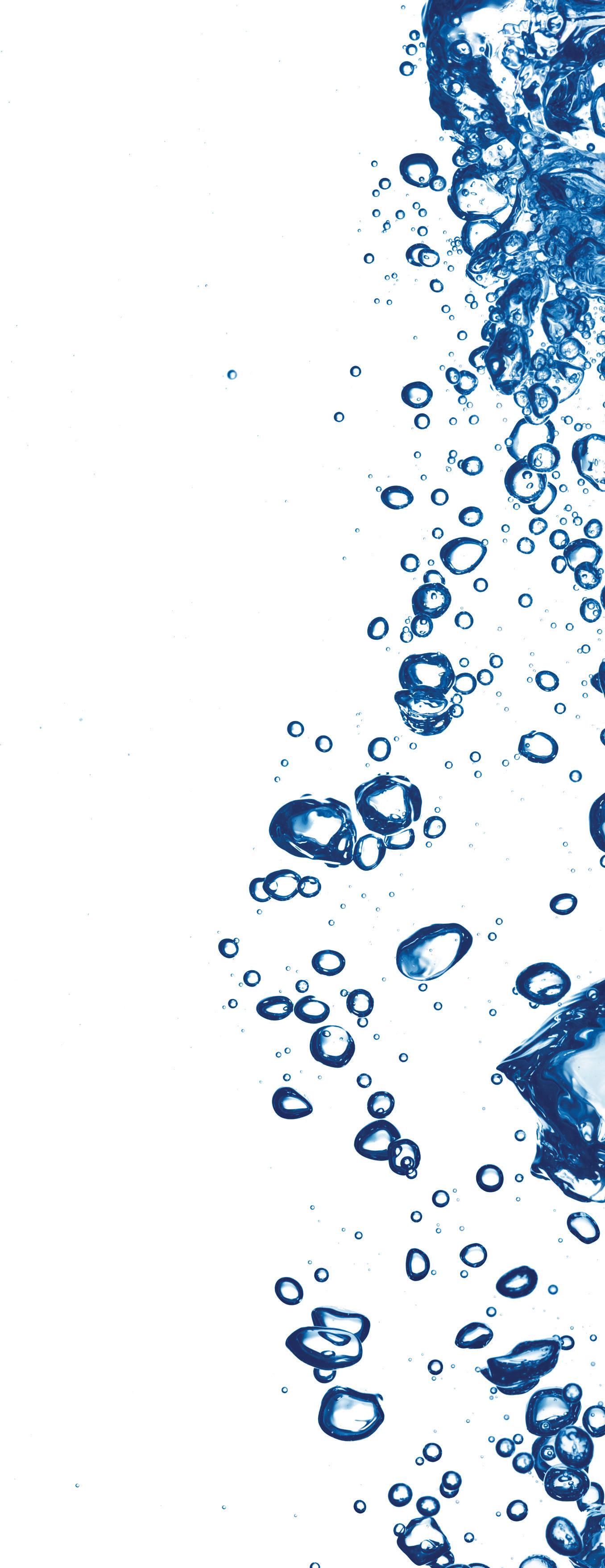
• Providing for submitter appeal rights to the Environment Court only in certain circumstances.
A number of regional councils have already begun extensive work and individual information is easily found on their websites.
There has been no hint from the opposition parties that they intend to substantially review the freshwater management process, so it is assumed that it will be business as usual for this regardless of who wins the election in October.
Changes to the RMA
As noted in previous articles, changes to the RMA have been signalled for many years by the current Government. This
began back in late 2022 when two pieces of proposed legislation were released –the Natural and Built Environments Bill (NBE Bill) and the Spatial Planning Bill (SP Bill).
Both these Bills have now passed all stages, and are now enshrined in legislation.
The third leg of the stool is the Climate Adaptation Bill. It is still to be introduced and it is unlikely this will happen, as was planned, prior to the election this year.
As noted by the Environmental Defence Society: “We live in a climate changing world. Weather-related disasters are becoming increasingly commonplace. We know that such events will increase over time.
“These changes in the climate place more and more humans and other species in harm’s way. Māori are particularly susceptible to a climate changing world which threatens their connections to land and ecosystems.
“To address this unprecedented challenge the Government proposed a new piece of legislation in 2020 called the Climate Adaptation Act. This Act is intended to address the complex and distinctive issues associated with managed retreat such as funding, compensation, land acquisition, liability and insurance.”
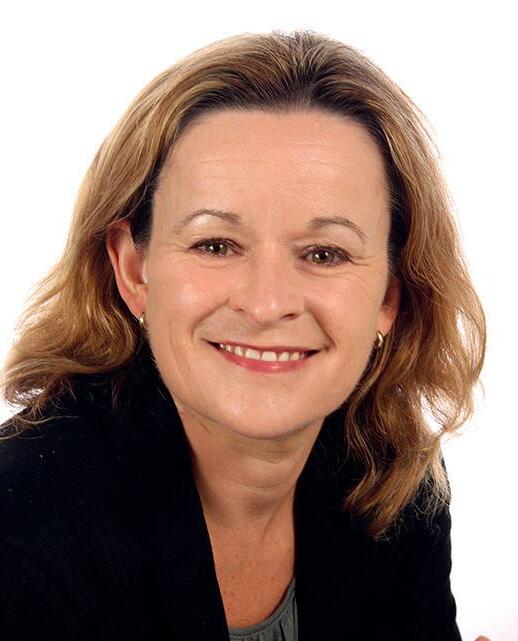
Apart from a few noes below this article does not recap in any detail on what the NBE Act and SP Act cover. Suffice to say, the Environment Select Committee, when it reported back, recommended a few changes.
The changes recommended from the Select Committee include:
• Amendments to the purpose section to
18 www.waternz.org.nz
WATER NEW ZEALAND LEGAL
By the time this article is published, Parliament will have adjourned, and the election campaign will be in full swing. This is very relevant to the matters covered in this review which focus on the various legislative amendments that the Government in power, when this was written, had been pursuing with some rigour, and some would postulate undue haste.
Helen Atkins, barrister/commissioner
make it clear that the protection of the environment prevails over development and to ensure the system outcomes more closely align with purpose;
• The National Planning Framework, Regional Spatial Strategies and the NBE Plan framework have largely remained as in the original introduced Bills with some tweaks;
• Some changes have been made to the criteria for determining the category of activities;
• Local authorities and iwi/hapu committees will be left to determine the membership of Regional Planning Committees;
• Significant changes to the implementation and transition provisions.
The new legislation will be the subject of further articles once we are sure that they will last the distance on our statute books post election. As readers will know many of the opposition parties (notably National and Act) have stated that they intend to repeal these Acts.
National Policy Statement on Indigenous Biodiversity
The National Policy Statement on Indigenous Biodiversity (NPS-IB) was gazetted on 7 July 2023 and came into force on 4 August 2023.
The overall objective of the NPS-IB is to maintain biodiversity so that there is ‘at least no overall loss in indigenous biodiversity after the commencement
date’. The BPS-IB relates to the terrestrial environment and needs to be read together with the New Zealand Coastal Policy Statement (for the coastal marine area) and the NPS-FM (for freshwater).
There is a carve out for renewable electricity generation and electricity transmission in that the NPS-IB does not apply to activities involving such assets (note they do have their own national policy statements).
Once an area is formally identified as a significant natural area there are onerous avoid directions in the NPS-IB.
There are also exceptions for infrastructure and mining which includes lifeline utility infrastructure and regional significant infrastructure (which should apply to much of our water services infrastructure) but there is a requirement to show that, there is a functional or operational need for an activity; there is no practical alternative locations; or the effects can be managed in accordance with the ‘effects management hierarchy’ in the NPS-IB.
It is likely that although it is possible to pass these tests, the uncertainly, cost and delay proving these things could be enough to deter even the most hardened applicant.
Water services legislation
The final piece of the legislation puzzle to comment on is the water services legislation.

As noted in the July edition, June saw the release of Select Committee reports on two Bills, along with the introduction of a final Bill to round out the suite of reform legislation. Details of this legislation have been covered in other articles.
These Bills were also passed under urgency and received Royal Assent before the House rose.
In a nutshell the Bills are:
• Water Services Economic Efficiency and Consumer Protection Act;
• Water Services Legislation Act;
• Water Services Entities Amendment Act.
As readers will know, there is a variety of political opinion on the suite of water services legislation, but time will tell if the opposition win the election what they will do to the legislation.
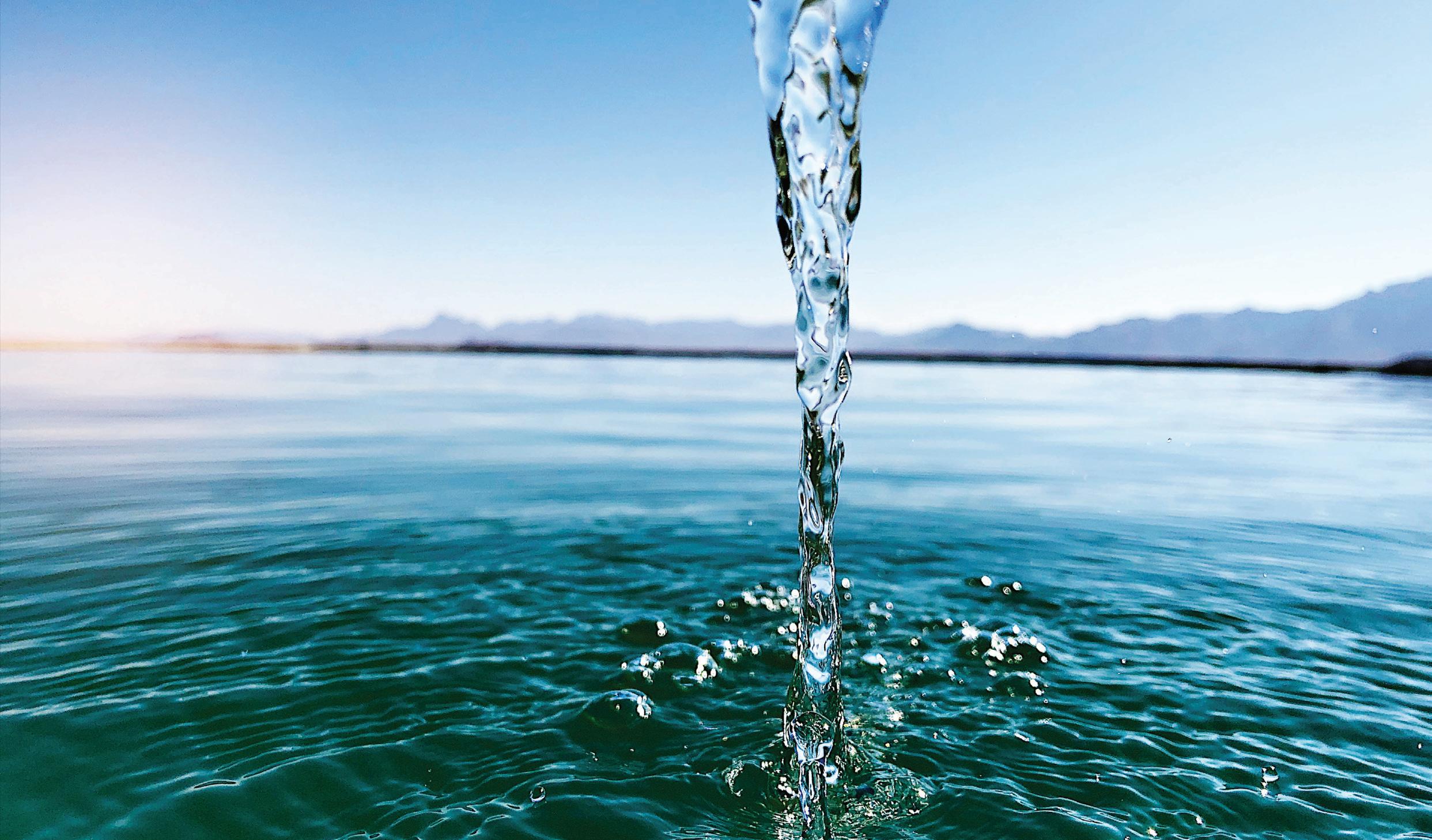
Given the amount of work that has been done by local authorities to get ready for these changes, it is unlikely that a change in government would see a wholescale repeal of the legislation. But at this stage is it is anyone’s guess exactly what the opposition would actually do.
Helen has contributed a legal column to Water for many years, along with other members of the team at Atkins Holm Majurey. Helen has resigned from Atkins Holm Majurey and set herself up as a barrister/commissioner. She will continue to write these articles in that capacity going forward.
SEPTEMBER/OCTOBER 2023 WATER NEW ZEALAND 19
Consistent contribution
Throughout his long career, Boyd Miller devoted many hours to the water industry. He was pivotal in the development of what has grown to become Water New Zealand, and is responsible for creating a significant number of the original documents that underpin the association and wider industry. By Mary Searle
Boyd grew up in Balmoral, Auckland, next to Potters Park. His father had a small contracting company, doing work on school grounds and building roads and footpaths.
However, ill health forced his early retirement and the family moved to a small farm on the edge of Te Puke in 1951. Here, 12-year-old Boyd learned to milk their herd of 12 cows.
Boyd went to Te Puke District High School before being sent to Gisborne High School as a boarder, where he took up rowing and became a hostel and school prefect.
Critically, at this time, Boyd went away for a weekend with the Gisborne Tramping and Canoe Club, setting him up for a lifelong passion for tramping and climbing.
“It was my first taste of the mountains. When I got to university, I joined their tramping club – one of the largest and most successful clubs on campus, and that’s where I later met my wife Hilary.
“We did a lot of trips – Waitākere, Coromandel, Kaimanawa, Egmont and Tongariro National Parks, and, among many others, I climbed Mount Aspiring, Mount Tasman, and Mount Cook .
“Through the club, I also got involved in Search and Rescue, eventually becoming one of four search advisors to the police in Auckland.
“I did a bit of canoeing and had one particularly memorable trip down the Whanganui River, from Taumarunui to Whanganui, in two-person canvas canoes. Let’s just say we got pretty good at patching holes. I also spent some time caving.”
He had moved to Auckland to do a Bachelor of Engineering degree, and while his tramping passion soared, his academic life got off to a shaky start.
By taking part time and evening work, including two years with the Waitemata County Council and a lot of Christmas holiday jobs, Boyd was able to pay his way through university, finally graduating in 1969.

“At the end of the year, I went along to the Auckland Regional Authority and asked for a job – I had no CV, I simply told them what I had been doing. And they hired me.
“I started by doing miscellaneous design work, mostly water reservoirs.

“One memorable project was the design of the valve tower and bridge for the Mangatangi Dam in the Hūnua Ranges, Auckland’s biggest water supply dam, which I did with David Gross and Peter McCurdy.
“It is a 75 metre high tower, 10 metres in diameter, with a 102 metre long steel truss bridge to it. In the middle of the bridge is a 50 metre high pier.
“After completing the design I went overseas, and it was built while I was away. I actually didn’t see it until nearly 40 years later in 2021!
“Interestingly, very few designers go back and see what they’ve designed, and this can
Bell
lead to operational issues. I’m an advocate for operators to get involved in the design in the early stages – designers should be asking them, ‘you’re going to be operating this, what do you think?’”
Boyd and Hilary had headed off on their OE in 1972, travelling to London, where Boyd worked as a civil engineer for Binnie & Partners, doing mostly sewer work.
“I ended up in the same department as John Harding and Phil LeGros, both of whom had graduated with me.
“In fact, in the two years I was in London, I met 21 engineers I had been at university with.”
Naturally, Boyd spent a good amount of his OE indulging his passion for the great outdoors, spending two weeks climbing in Switzerland, as well as two three-month periods touring throughout Europe.
In 1974, the couple returned to New Zealand, via Africa: “We travelled from Morocco to Kenya through 10 countries over three months – 34 of us in two old army trucks, camping every night. From Nairobi we took a taxi to Mombassa then hitchhiked to Nairobi and flew home from there.
“You can’t do anything like that now.
“I have actually hitchhiked some 20,000 miles in New Zealand – often with a big pack, sometimes with an ice axe in my hand – and didn’t often have a problem getting a ride.”
Back in Auckland, Boyd resumed work with the ARA in the drainage design section. Over time, the Regional Authority became the Regional Council and soon after the water services division became Watercare.
Boyd’s roles evolved over the years, from design to supervising construction contracts to operations and maintenance
20 www.waternz.org.nz WATER NEW ZEALAND PROFILE
Boyd Miller
engineer, managing a team of 40 looking after the main sewer network.
“I moved within Watercare to the asset management group, and later to the design services group.”
Boyd ‘retired’ from Watercare in 2004, but promptly set up on his own company and contracted back to Watercare for another three years. He did some work with Babbage and Partners and then some on his own account.
Throughout his career, Boyd was involved in various community and industry associations, first joining IPENZ, where he was in the Technical Group on Water (serving as chair in 1991).
“I was also a member of the NZ Water Supply and Disposal Association. Under Ian Gunn’s guidance, we operated the Auckland Combined Water Group as an informal technical forum for the joint membership of the two organisations.
“In 1992, at the request of the members, these organisations were merged to form the NZ Water & Wastes Association.
“I wrote the constitution and was vice-
president to Jeff Booth, who’d been president of NZWSDA, for the first two years, before coming president myself for the next three years.”
Boyd says the activities of the NZWWA quickly grew, fueled by the increasing scale of the annual conferences, and trade shows, and with David Ogilvie’s enthusiastic editorship of the Water journal. This drove the association to change from a committeeled technical society, to a business, with a board and a business manager, and by 1994 it had a number of staff.
In his time with NZWWA, Boyd contributed to several publications related to asset assessment and network operation.
“The early 90s saw the beginning of asset management as we know it. Local authorities were asked by government to value their assets, but half of them didn’t know what they had, let alone the condition or the value of their assets.
“From 1995 to 2000 I represented NZWWA on the National Asset Management Steering Group, tasked with formalising asset management processes
and procedures, and utilising my Watercare experience.
“The group prepared the NZ Infrastructure Management Manual, which referenced several NZWWA publications, and became the definitive document to guide the procedures.”

In recognition of his service to the association, Boyd was awarded life membership in 2007, and honoured with the Water New Zealand Association Medal in 2014 for his outstanding contribution to the industry.
Although he is retired (“engineers never really retire”), when he and Hilary are not travelling, Boyd still regularly attends Water New Zealand conferences as he likes to “try and keep up with what’s going on in our industry”.
He hasn’t stopped learning either, joining U3A, where he convenes the geology group.
“All retired engineers should get involved with U3A. You get to share your knowledge and study all sorts of things you would have liked to have studied in your youth but just didn’t have time for.”
SEPTEMBER/OCTOBER 2023 WATER NEW ZEALAND 21
Are
in Pipeline Construction & Maintenance?
with PCM Programme+ Find out more
you already qualified
Continue skilling up now
Bringing the best of all worlds together
Josiah Simmonds’ unconventional childhood, mixed with his love of maths and creating things, and his Māori ancestry (Ngāti Raukawa, Ngāti Ranginui), has resulted in an outstanding young engineer, passionate about stormwater and getting things done right. By Mary
Searle Bell
This year’s Young Stormwater Professional of the Year is a man who is successfully bringing together his love of engineering with his cultural heritage. By tapping into the ancestral knowledge of local iwi, Josiah helped solve a stormwater engineering dilemma.

The project was the busy State Highway 1/29 Intersection Upgrade in Piarere, Waikato, where the interchange is being replaced with a two-lane roundabout to improve the safety. It’s also the junction of two catchments – both the Waikato River and Waitoa Stream are fed from here.
Josiah held the role as stormwater lead for the project from 2020, taking the project through consenting and design. Construction is due to start by the end of this year.
“The project is on the shores of the Waikato River, (just upstream of Lake Karapiro), but stormwater modeling showed that a lot more water than expected flowed northward away from the Waikato River into the Waitoa Stream catchment and on out to the Firth of Thames.
“Depending on the storm event, the catchment boundary would change, impacted by the highway itself and the fact the landscape is very flat causing some backwater effects.
“As such, it was hard to define the catchment boundaries. We sat down with representatives from Ngāti Koroki-Kahukura and Ngāti Hauā, who brought mātauranga Māori to the discussion.
“They told us that this area had historical significance to iwi and is a key landmark within the legend of how the Waikato River changed its course from travelling north and discharging into the Firth of Thames to flowing towards the Taupiri and discharging at Port Waikato.
“The story goes, that many years ago the young river was encouraged through a powerful karakia by Mana Whenua to change its direction towards the Taupiri Maunga and fulfil its purpose of providing healing to this sacred mountain.
“Interestingly, the geomorphological evidence agreed; that the Waikato River once flowed north and eventually changed course, with the drastic diversion occurring at the site of the SH1/29 intersection.”
In more recent history, Josiah says the highway, built more than 100 years ago, was shown to be impacting the flow of stormwater from the time of its construction.
“The road is acting as an embankment, preventing water travelling southward into the Waikato River catchment.
“The project team was able to consider the even older,
pre-settlement scenario as a baseline, given by mana whenua, to restore the catchment boundaries of the two rivers, inform the stormwater design and give effect to Te Ture Whaimana o te Awa o Waikato (The Vision and Strategy for the Waikato River).”
He says the soil drainage in this area is excellent – rainwater flows readily through the sand into the groundwater table.

“The location of the intersection upgrade is upon the ancient river plain made of clean Hinuera sands, which is seen as a taonga (treasure) to mana whenua in providing great free-draining land to manage flood waters. Because of this, the decision was made to focus on soakage-related stormwater systems that would treat and recharge the groundwater table.
“We designed bioretention ponds, swales, and soakage pits as water-sensitive features that were sympathetic to the rural environment.
“The groundwater system feeds the Waikato River while most of the surface water flows to the Waitoa Stream northwards.
“It’s nice to acknowledge the history of the river.”
The fact that he has found a career which he loves in the stormwater industry is something he terms “a happy accident”. As
22 www.waternz.org.nz WATER NEW ZEALAND PROFILE
Josiah Simmonds
a schoolboy, his plans were to pursue a career in architecture as he loved maths, science, and building things.
“I didn’t know what engineering was. In fact, my ideas of engineering all came from computer games like Sim City and Sim Roller Coaster. All I knew was, when you were playing the game, if you paid for engineers then, magically, your rollercoaster got better.
“But my mum talked to a colleague about me, and he told her he thought I would be good for engineering and so she brought me home some brochures. I thought it was cool and decided to swap architecture for civil engineering.”
He started his degree at the University of Canterbury, where, as a first year, he got a taste of many disciplines. Josiah then decided to switch from civil to forestry engineering – which he says is basically civil engineering combined with forestry science.
“I liked the idea of working in nature instead of in an office.”
Halfway through his degree, he came across a scholarship through Waikato-Tainui and Opus, tailored for protection and enhancement of the Waikato River.
“I thought, that sounds interesting, and I have a personal attachment to the Waikato as it is my awa. So, I applied and was fortunate to be awarded the scholarship.”
Along with funding for his tuition, the scholarship also gave him summer placement work with Opus and time in the Waikato-Tainui office.
He then felt he was in a dilemma: “I was doing forest engineering, but I thought I should do natural resources instead, but changing would mean prolonging my studies.”
Fortunately, he was told it wouldn’t matter in the end as there was a lot of overlap between the two.
After graduating, he took a full-time role with Opus in Christchurch as a graduate environmental engineer.
“I joined their water engineering team not long after the earthquakes had devastated the city. A lot of students stayed after graduating as there was so much work to do.
“As tragic as the earthquakes were, it was a great time to be studying engineering as we got a lot of hands-on geotechnical study.”
He began working on hydraulic modelling and pipeline renewals and upgrade design for water, wastewater, and stormwater.
“Over time, I did more and more stormwater work – I found it to be the most interesting of the three.”
After three years in Christchurch, Josiah and his wife moved to Cambridge to be nearer family. Josiah transferred to Opus Hamilton office and continued to explore his specialty.
“I really enjoy doing stormwater detailed design for ponds, pipelines, culverts, and wetlands, as well as the construction management of these, rather than things like modeling. You get to go all the way through the process until it’s built – it’s very satisfying.”
Josiah says engineering satisfies his need to create, but also, it allows him to help people.
“As I was growing up, my parents were humanitarian aid workers, working with orphanages. When I was two, we were living in the Philippines, then as a five-year-old, we moved to Tajikistan, spending eight years in the poverty-stricken, postcivil war-ravaged capital city of Dushanbe.
“All the roads had potholes everywhere and there wasn’t a single manhole cover. Those got stolen just as soon as they were replaced. There were a lot of waterborne diseases due to pipelines being contaminated and a lack of good water treatment.
“I still clearly remember a child of another New Zealand expat family, who was my age, almost dying of typhoid.”
His parents’ work had a lot of influence in his choice of career.
“I wanted to grow a skill set that could help people. Engineering fits that perfectly.
“As a student, I joined Engineers without Borders, taking volunteer roles – both education and project work – in various Pacific Islands.”
At the moment, his volunteer work is on hiatus, thanks to the demands of life with two very young children, but he is expecting to pick it up again once they are at school.
“Winning the Young Stormwater Professional of the Year Award has been a catalyst for me to think how I can give back: How can I inspire young engineers and promote the stormwater industry?
“Troy Brockbank [Water New Zealand board member] has been encouraging me to pursue governance roles, and to be a role model to help get other Māori into engineering.”
Very recently, Josiah was appointed as a trustee with the Engineering New Zealand Foundation, which promotes and helps the engineering industry get better outcomes through scholarships for engineering students, financial hardship support, and fundings for innovations that drive change.
Protecting the core of OT networks from cyber security risk

• Delivering asset visibility, monitoring and active protection
• Providing multilevel Security Operations support (SOC) and;
• Assessment, training and remediation services
SEPTEMBER/OCTOBER 2023 WATER NEW ZEALAND 23
first-watch.co.nz
A cut above
Natalie Van Leeuwen is challenging traditional expectations of the possible pathways into successful water industry leadership.
Natalie has come into Veolia’s Central Hawkes Bay operations team from an unusual background – starting in meatworks and hairdressing – and through her abundant capability and willingness to develop her skills, is currently the water treatment supervisor for the district.

Natalie says it wasn’t part of a grand plan, but a series of personal challenges at work that lead her to Veolia.
“When I first left school, I went to work at the meatworks – a family member suggested it to me and it paid reasonably well at the time.
“I soon moved into hairdressing and did that for many years. I enjoyed dealing with people all day, but it got to a point where I didn’t know what the next step would be. I wanted to get out and about a bit more, and I wanted challenging problems to solve and new skills to learn.
“About six-and-a-half years ago, I joined the Central Hawke's Bay District Council as a three waters officer. I had no experience whatsoever in the water industry or in local council.
“It was an entry level role – a lot of meter reading, dealing with billing enquiries, and being the first line contact to council’s customers. It was completely different from what I was used to – it was all new and interesting.
“There was so much variety. I learned about water sampling and testing and started to become aware of the treatment process. I took on as much new stuff as I could, and three months in I was asked to join the Veolia team.”
Once Natalie hit the ground running in the corporate water and services sphere, she encountered more opportunities to challenge herself.
“The role that I started in was as a water treatment operator, but I became the team lead in water and waste pretty quickly.
“Then as the team grew, water and wastewater were split into distinct teams and I moved in a supervisory role.
The progression has been amazing.
“It’s been great to have so many people around me to learn from. The contract manager and the operations engineer were always just a phone call away.
“I’d also make sure I’d learn as much as possible from specialists – our internal experts and contractors. I wanted to know every single thing about the plants I was operating, so that I could be fully self-reliant.”
“We were very focussed on building the team at first, so I relied extensively on informal conversations to learn and develop.”
Natalie was able to formalise that learning by enrolling in the New Zealand Level 4 Certificate in Drinking Water Treatment

“I’m currently working on my Level 5 treatment diploma, and I’m very excited to think about what’s next in my learning journey, and how that will support moving on to bigger and better things.
“I love this career, and I can’t see myself anywhere else. There’s the excitement of learning new skills constantly. For me, the main reason I do this job is to serve the community. My previous experience has definitely helped me with engaging with community members.
“People should be able to take the safety of their drinking water for granted, and I am delighted to work behind the scenes to enable that.
Natalie says her natural curiosity and strong time management skills have helped her succeed.
“I am super keen to know everything about this business, the industry, and all technical aspects. In operations you don’t know what will happen next. Issues pop up out of the blue all the time, and so you need to be prepared.”
Managing the impacts of Cyclone Gabrielle is an example of how Natalie showed team leadership in a difficult situation.
“I remember the first sleepless night, when 500mm of rain fell overnight. I stayed awake checking the plants remotely, and making plans for what we’d need to do if the plants got inundated. The next morning started ok, but then the waters from the hills reached our sites.
“I had started planning, and the key focus for the day was securing the team we’d need. We had a team of six electricians ready to go out to each site as soon as the waters receded to assess the site safety and make a damage assessment.
“We actually managed to get Waipukurau up and running before lunch the next day. I was pretty proud of myself and the team for that.
“What stays with me is the incredible commitment by everyone involved, especially the team from Isaacs Electrical and East Coast (now Hawketech) Automation. These guys were with me working two 90-hour weeks, occasionally sleeping at the site, not seeing their families, fully focussed on getting the right outcome for the community.
“I said that it’s good that the public doesn’t have to think about what we do, and that’s true.”
Article provided by Veolia.
24 www.waternz.org.nz
WATER NEW ZEALAND PROFILE
Natalie Van Leeuwen
When every drop counts

For over 90 years ADR has been there for New Zealand water authorities and Councils with our fieldsmart technology.

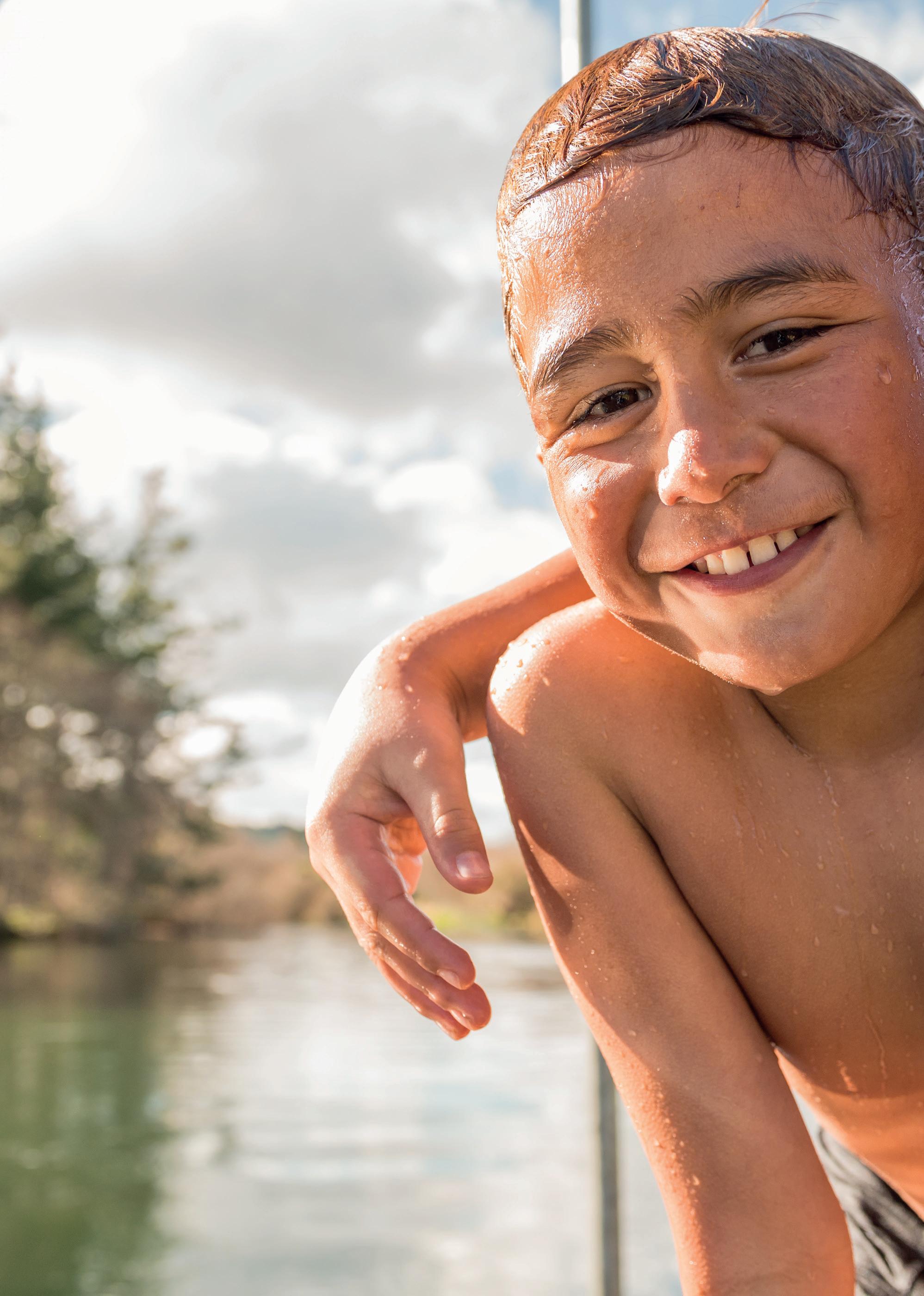
From metering to control systems to pump controllers, we offer insight and expertise in the technology that helps you manage water and waste water to a high standard, with resources that are always limited. www.adriley.co.nz


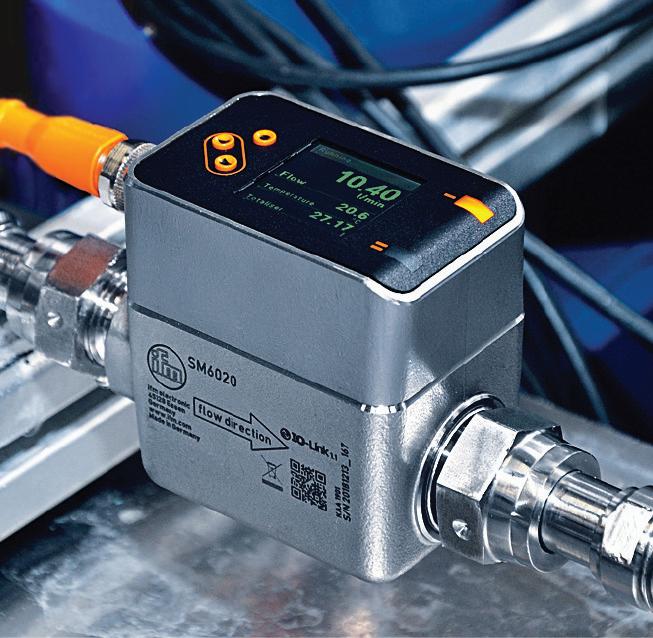
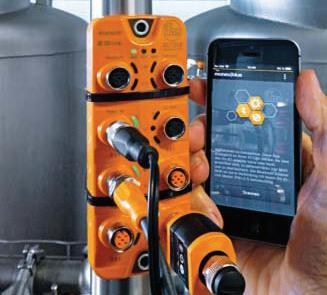




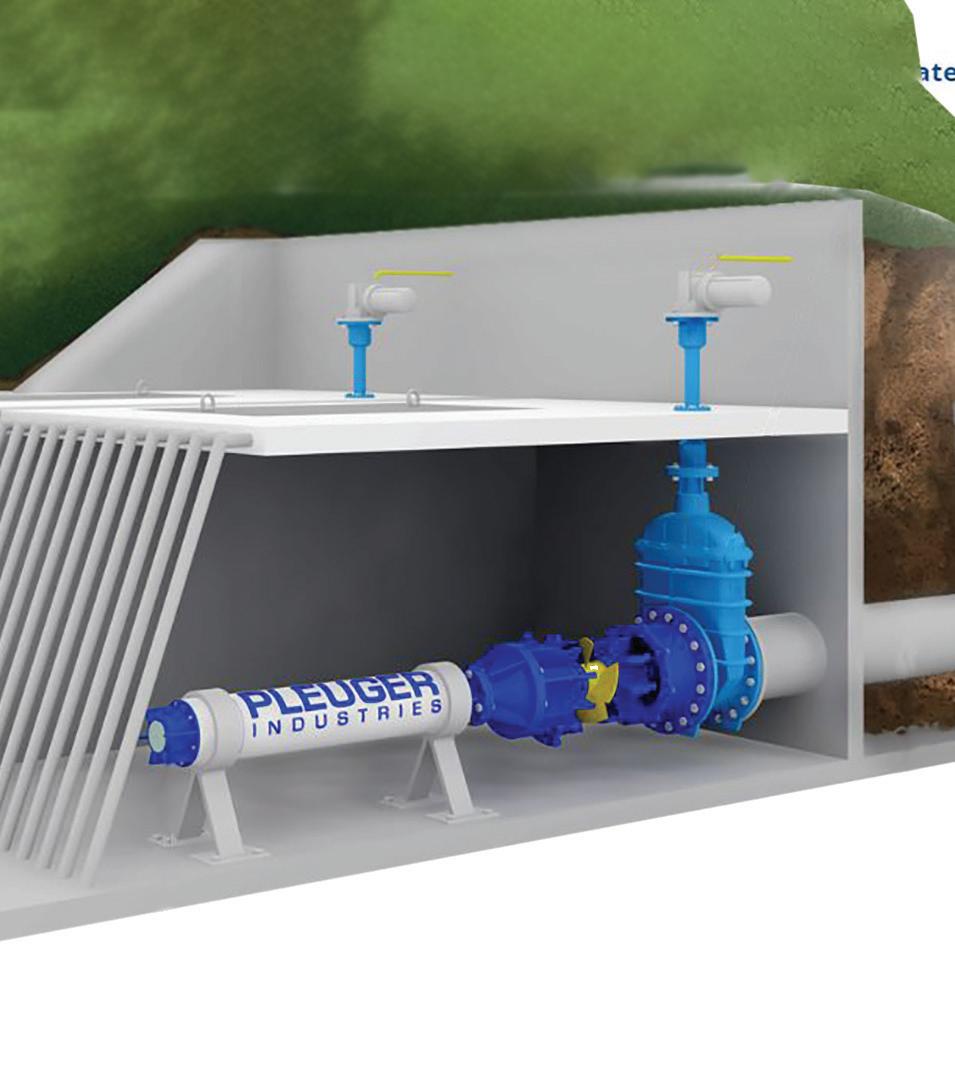






26 www.waternz.org.nz
Atrina at Site 1 mussel farm: Skipper Rod Budd, divers Dave Bremner, Jenny Hillman, Jack Massuger (sitting down at front).
FLOW / TEMPERATURE PRESSURE VALVE POSITION RADAR LEVEL CONTROL BLUE TOOTH IO-LINK COMMS VIBRATION MONITORING ifm offer the most comprehensive range of industrial digital sensors & fieldbus interface modules available today - ex-stock NZ! IP69k, IO-Link (Digital) technology is now used in the most advanced WT & WWT plants, globally. German quality - supported by local engineers. Time to upgrade? years WARRANTY on ifm products www.ifm.com/nz ph: 0800 803 444 Sensors ifm_WaterNZ_Jan_2022.indd 1 21/12/21 9:57 PM BEST-IN-CLASS SUBMERSIBLE PUMP AND MOTOR SOLUTIONS FROM THE RELIABILITY EXPERTS BORE HOLE | FLOOD | PRESSURE BOOSTERS | BOTTOM INTAKE New Zealand’s Exclusive Distributor for Pleuger Products PUMP SUPPLIES NZ LTD 18 Hammersmith Drive, Wigram, Christchurch | 0800 PLEUGER | www.pumpsupplies.co.nz ENGINEERED PUMPING SOLUTIONS – Sales | Service| Technical Support
Photo: Drew Lohrer, NIWA.
Constructed wetland developed for WWTP
Manawatū District Council and mana whenua Ngāti Kauwhata iwi have been developing a constructed wetland at the Manawatū Wastewater Treatment Plant on Kawakawa Road.

The wetland will allow approximately six million litres of treated wastewater to go through an extra filtration process before it re-enters the river systems of the Manawatū.
Earthworks on the wetland began in August 2022, with the movement of approximately 30,000 cubic metres of soil and the construction of an access road. Material for the access road was supplied by Central Environmental from their concrete crushing operation, which is located at Council’s Resource Recovery Park, next to the treatment plant.
The project has reached a significant milestone with the start of planting of over 80,000 native plants. These plants have been specifically selected for their treatment properties and ability to break down and extract remaining nutrients in the treated
wastewater. They are grown at the council's Kawakawa Nursery and planted by the Te Whakahaumaru te Whenua team (Jobs for Nature) of Ngāti Kauwhata.
Treated wastewater going to the wetland will take up to three days to travel from the inlet to the outlet, where evapotranspiration will reduce some of the volume and the balance will be released into the Ōroua River.
This is just one of the projects that Manawatū District Council is doing to improve the quality of the proportion of the treated wastewater that eventually flows into the Ōroua River, which will further enhance the quality of the freshwater in the river.
The council has invested heavily in infrastructure to improve the quality of treated wastewater going into the river and are discharging to land through irrigation

during the summer months.
In 2015, the Ōroua River Declaration was signed by both council and Ngāti Kauwhata, which stated a joint commitment to work towards the continued improvement of the quality, health and wellbeing of the Oroua River into the future.
Ngāti Kauwhata Chairman Dennis Emery agreed that lifting the rahui was tantamount to the iwi’s ultimate goal of stopping all discharge into the river, and continues to be part of its current Waitangi Tribunal claims process. The planting of the first bay of the constructed wetland was completed by July, and it is expected to be operational by late 2023.
Article provided by the Manawatū District Council.
SEPTEMBER/OCTOBER 2023 WATER NEW ZEALAND 27 WETLANDS WATER NEW ZEALAND
Water flows between Ōpōtiki seawalls for the first time


28 www.waternz.org.nz WATER NEW ZEALAND RIVER WORKS
At dawn on July 24, there was a blessing on the site of Ōp ōtiki’s new harbour to mark the place where water now flows between the 450 metre long groynes out to sea.
This is the start of the process of moving the river mouth from its current location near the Waiotahi Drifts subdivision, to its new location between the constructed seawalls further east.
HEB construction is leading the work on Ōpōtiki’s new harbour entrance. Since physical works started on site in September 2020, two seawalls have been constructed reaching around 450 metres out into the Bay of Plenty.

Dredging and excavation left a short strip of land between the eastern and western seawalls, and a large stockpile of sand on the western side that will be used to close the existing river mouth.
At low tide, work was started to lower the final strip of sand down to the low tide mark. The team then carefully watched and waited through a tide change, allowing some of the river flow to pass between the seawalls. The natural scour of the water deepened the channel and the rest of the sand will be progressively excavated over the coming days.
Additional dredging and excavating will add to this process, creating the new river mouth between the groynes.
Project director, John Galbraith, says that the process had gone smoothly and as expected.
“It was a special milestone for the whole team as water started to flow between the seawalls and it marks a very significant moment for the community. There is still a lot of work to do on site, particularly to use that large stockpile of sand to start closing up the current river mouth, and the project won’t be fully completed until early 2024. At that point, there will be access out to the end of the seawalls and the surrounding areas.
The Harbourmaster had closed Pakihikura to all boats and there was no access to open water (except Coastguard) for a number of weeks.
With the Waioeka River now partly passing between the seawalls, and also through the existing channel, the western seawall sits on an island until the original river mouth closes and joins the western coastline. Land access is restricted in the area while work to close the channel was underway.
Ōpōtiki Mayor David Moore says that it was a significant milestone, part of the transformation of the district.
“Our river mouth has historically migrated back and forwards eastward and westward along that strip of coastline.
“One hundred years ago, Ōpōtiki was a bustling port town with a strong and growing economy built around good river access. While many factors marked a change in fortunes for the district, certainly a shift in the river and a loss of access for larger vessels was part of that.
“With the historic Whakatōhea Treaty settlement in May, it feels like a turning point for us here – rebuilding our economy from the sea again.”
Article provided by the Ōpōtiki District Council
SEPTEMBER/OCTOBER 2023 WATER NEW ZEALAND 29
The Ōpōtiki harbour development team halfway through the cut.
Our maritime territory is 15 times our landmass: Here's why we need a ministry for the ocean
By Dr Karen Fisher, associate professor in Human Geography, University of Auckland, and Dr Elizabeth McPherson, associate professor in law, University of Canterbury.


minerals, ports and marinas, maritime transport and coastal tourism.
The Hauraki Gulf alone was recently valued as a $100 billion natural capital asset.
Marine and coastal ecosystems are threatened by climate change, as oceans are acidifying, sea levels rising and sea-surface temperatures increasing. But they are also our best line of defence in buffering extreme events, filtering land runoff and storing ‘blue carbon’.
Māori have cared for their seascapes for generations and have a complex set of reciprocal marine relationships, including protected fishing rights and interests.
The recent failure of the proposed Kermadec ocean sanctuary is a striking reminder of the need for leadership around New Zealand’s ocean policies.
The ‘no take’ ocean sanctuary was meant to be one of the world’s largest marine protected areas. But in June, Te Ohu Kaimoana (which represents Māori fisheries interests) voted against the latest proposal.
Its opposition was on the basis that the Government hadn’t consulted iwi, and the proposal would extinguish iwi rights guaranteed in the 1992 Fisheries Deed of Settlement and the Māori Fisheries Act
The Government response was an admission that our marine policy is not working as it should, and that we need new marine protection tools consistent with te ao Māori and Te Tiriti o Waitangi.
Our new research suggests a different approach to how New Zealand manages competing uses of the marine environment. It highlights opportunities to align marine policy and its implementation more closely by considering the ocean as an ecosystem with which people have reciprocal relationships.
New Zealand’s vast ocean territory
Aotearoa is surrounded by a sea territory 15 times the size of its landmass. This extends from the shorelines of the main islands to the Kermadecs (Rangitāhua) in the northwest, the Chathams (Rēkohu) in the east and the subantarctic Campbell Island in the south Pacific ocean.
Two in three New Zealanders live within 5km of the shore and many use the ocean and coasts for recreational and cultural activities. The blue economy provides significant income to New Zealand, including through commercial fisheries, offshore
But our marine environment is under immense strain. Recent reports highlight a significant decline in marine ecological health, with flow-on impacts for communities.
The range of complex relationships New Zealanders have with the ocean can be difficult to reconcile, especially against an historical context of repeated Crown failures to respect and uphold the rangatiratanga held by iwi and hapū over oceans and fisheries.
An ecosystem approach to marine policy
New Zealand’s marine policies are currently dispersed across multiple pieces of legislation and regulatory institutions. They may be working towards different, and sometimes competing, objectives and at various time and geographical scales.
Research conducted within the Sustainable Seas national science challenge looks at ecosystem-based management. This involves managing the marine environment in a way that reconciles competing values without degrading the ocean ecosystem. It also recognises that humans are part of the ecosystem.
A more holistic and relational ecosystem-based approach to managing human activities in the ocean would acknowledge the inter-dependencies between living and non-living marine ecosystem components, including people.
It would move away from siloed or single-sector approaches to instead managing relationships and the cumulative impacts of multiple activities in a way that is flexible and adapts to climate change.
Fundamental principles driving oceans policy
Our research found we already have legal and policy ‘hooks’ (or promising reform initiatives underway) that can support

30 www.waternz.org.nz WATER NEW ZEALAND COMMENT
Left: Dr Karen Fisher and Dr Elizabeth McPherson
ecosystem-based management across the four key marine policy areas of fisheries, conservation, coastal planning and Māori rights and interests. But, these are not always well integrated or aligned.
For example, regional councils are responsible for the coastal marine area under the Resource Management Act (which is currently under reform), but the Ministry of Primary Industries is responsible for the regulation and allocation of fishing rights under the Fisheries Act.
Ocean protection is largely the responsibility of the Department of Conservation, while Māori rights and interests are held by iwi and hapū, subject to a wide range of legal regimes and regulation. Each of these policy areas operates on different time and geographic scales and is working towards (sometimes vastly) different policy objectives, with varying budgets and resources.

To overcome this, our research confirmed we need to agree on fundamental marine principles to “anchor” ecosystem-based management and ensure our policy objectives are complementary and consistent with Te Tiriti o Waitangi. We also need to resource this transition – which requires whole-of-government leadership and coordination.
A ministry for the ocean
The current government created a new ministerial portfolio of oceans and fisheries. This doesn’t go far enough.
Marine policy is still spread across multiple laws and institutions working for different purposes. Recent environmental reforms have
focused on land-based issues of resource management, conservation and climate adaptation, taking a sector-by-sector approach and overlooking the interconnected threats facing our ocean.
Many have argued we need an oceans agency to support crosssectoral collaboration and hold the Government to account for implementing the rule of law.
We go further and argue Aotearoa needs a ministry for the ocean to match the ministerial portfolio, reflecting the complexity of marine management and departing from the terrestrial bias of our existing laws and institutions. A dedicated ministry could ensure oversight, coordination and alignment of marine policy.
Designing policy and creating institutional arrangements to support ecosystem-based management at central government level is only the beginning. This must also be the catalyst to drive, resource and enable connectivity in governance and management across all levels, to every bay and estuary.
It’s clear the journey for the Kermadec sanctuary is far from over. Te Ohu Kaimoana has proposed an iwi-led Indigenous approach to environmental management – or, as they put it, a relationship with people and nature together, not separated.
It will be interesting to see how this process evolves and whether it might lead to new marine protection tools that reflect our relationships with the ocean for generations to come.
The authors would like to acknowledge the contribution by Eric Jorgensen, a co-leader of the Sustainable Seas project. This article was first published in The Conversation.
ARMATEC IS CELEBRATING SUPPLY CHAIN


SEPTEMBER/OCTOBER 2023 WATER NEW ZEALAND 31
IMPROVEMENTS Visit www.armatec.co.nz/insights for more on our sustainability journey Converting single use plastic waste into long life community assets.
Tackling new pest seaweed
Biosecurity New Zealand is planning immediate actions after the find of small patches of exotic Caulerpa seaweed in an area close to Kawau Island in the Auckland region, says its director of response services John Walsh.

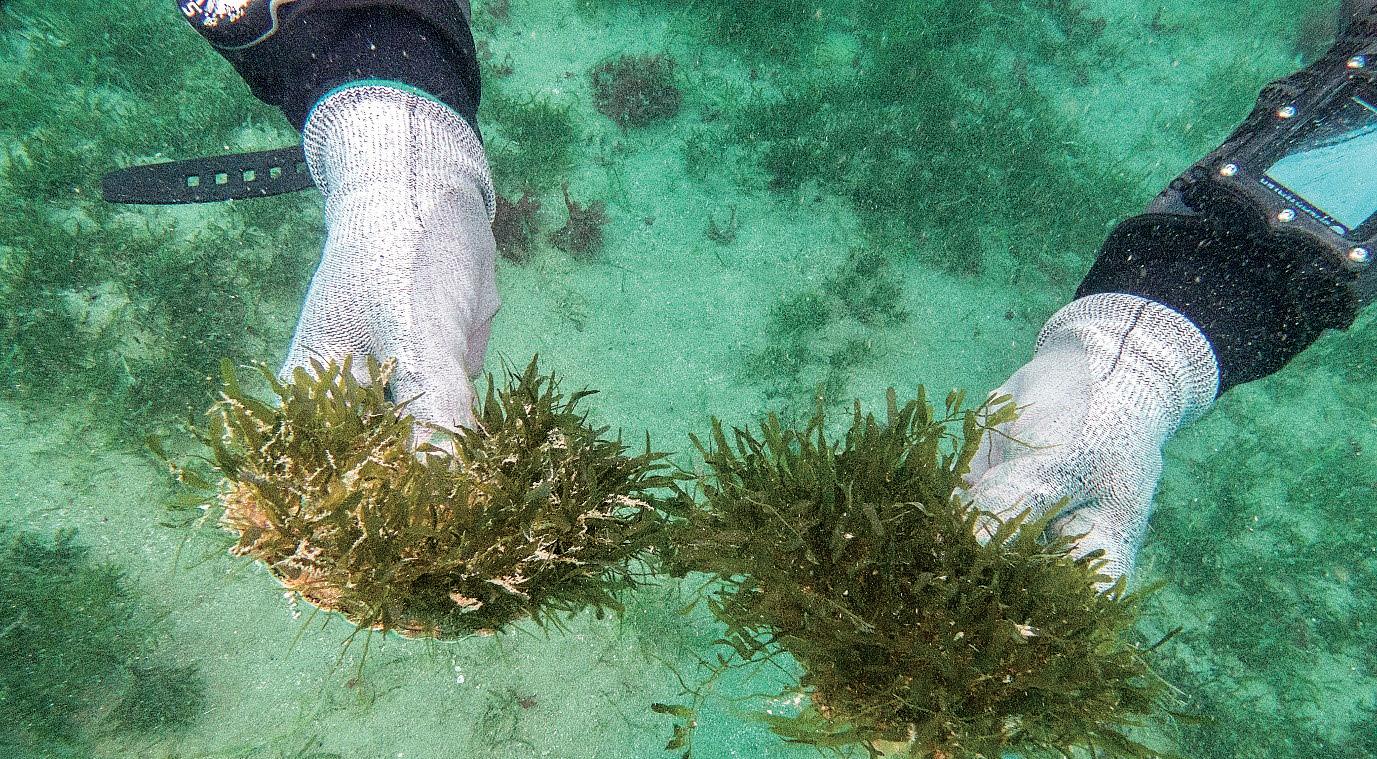
Biosecurity NZ met with the Ngāti Manuhiri Settlement Trust and Auckland Council, and plans to begin control work as soon as possible as well as further surveillance in the area.
Biosecurity New Zealand is considering the use of chlorine pellets beneath tarpaulins, as is currently being tested in the Bay of Islands by Northland Regional Council, or suction dredging to remove the seaweed.
“Divers found small 20 centimetre to 30 centimetre patches of the seaweed in the North Channel, northwest of Kawau. Finding exotic Caulerpa in another area of Auckland is disappointing but not unexpected given the nature of the seaweed.
“Caulerpa can easily be spread to new locations as it’s commonly caught up as tiny pieces of seaweed on vessel anchors and fishing gear.
“For the past two years, we’ve been working with partners, including mana whenua, local authorities and communities, to address exotic Caulerpa at Aotea Great Barrier Island, Ahuahu Great Mercury Island and, most recently, in Te Rāwhiti Inlet in the Bay of Islands.
“This has been a sustained, thorough and collaborative effort to contain Caulerpa to known locations, better understand the pest and its challenges, trialling treatments, and working to prevent its spread.
“This includes legal controls on risk activities and widespread campaigns involving local communities, mana whenua, regional councils and others to educate people about Caulerpa.”
He says work continues on exploring and trialling treatment methods. Aside from immediate work in the Kawau Island area,
new in-water treatment trials started in the Bay of Islands, Aotea and Ahuahu in July and will run through to the early summer period.

“People in those areas want Caulerpa eliminated. This will be very challenging given the many hectares of Caulerpa involved, but these trials are geared towards that.
“We are supporting the Ngāti Manuhiri Settlement Trust, mana whenua and mandated iwi authority, to bring experts from California to provide first-hand insights about using suction dredge techniques to remove Caulerpa
And we’ve also set up another expert technical advisory group to revisit the latest information on this suction technique.”
John says exotic Caulerpa is challenging to deal with.
“Internationally, Caulerpa has not been successfully eradicated from areas the size of the finds in New Zealand, and climate change and warming oceans also present a tough biosecurity challenge for everyone.”
Article provided by the Ministry for Primary Industries
Divers found small 20 to 30 centimetre patches of the seaweed in the North Channel, northwest of Kawau.
32 www.waternz.org.nz
WATER NEW ZEALAND INVASIVE SPECIES

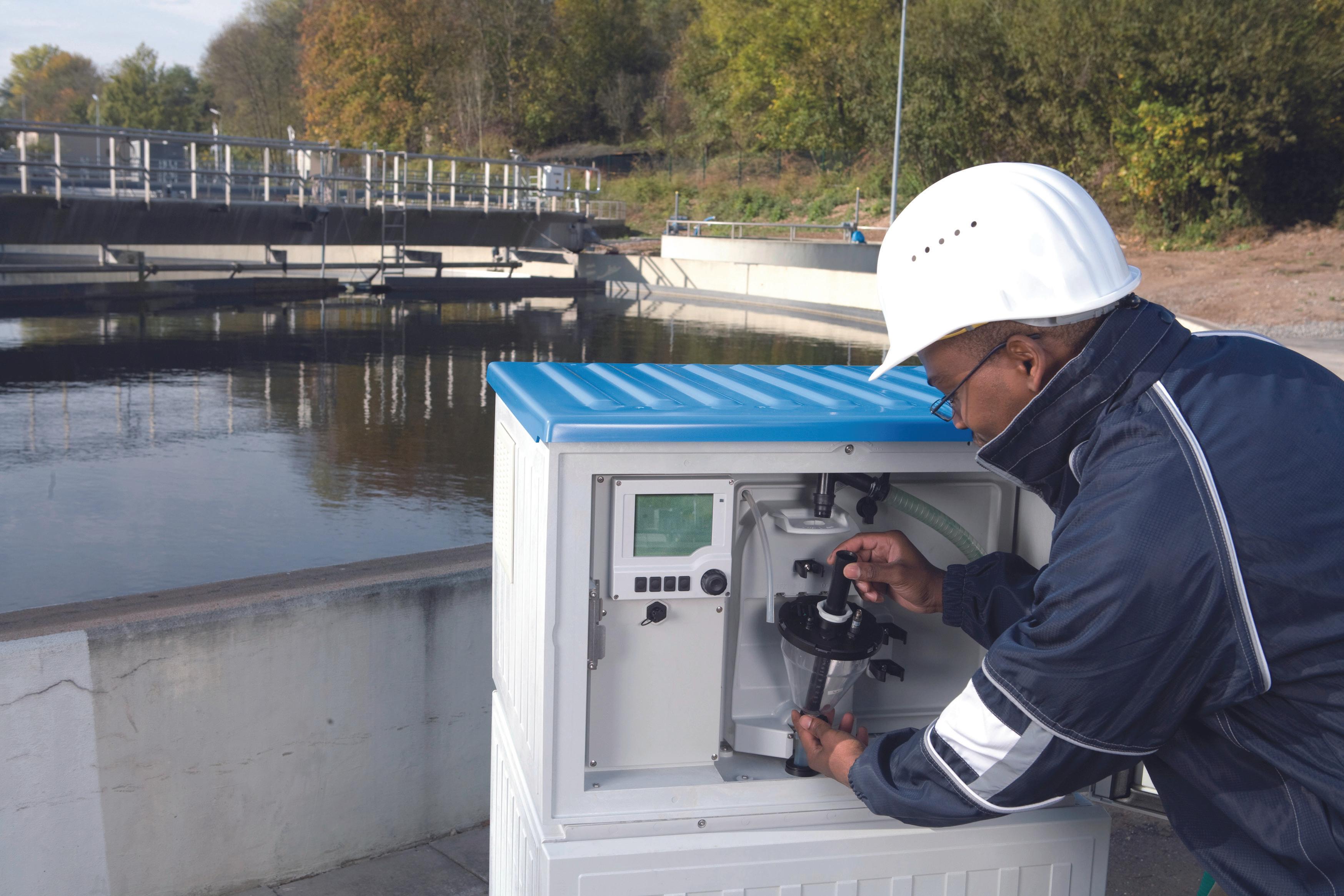

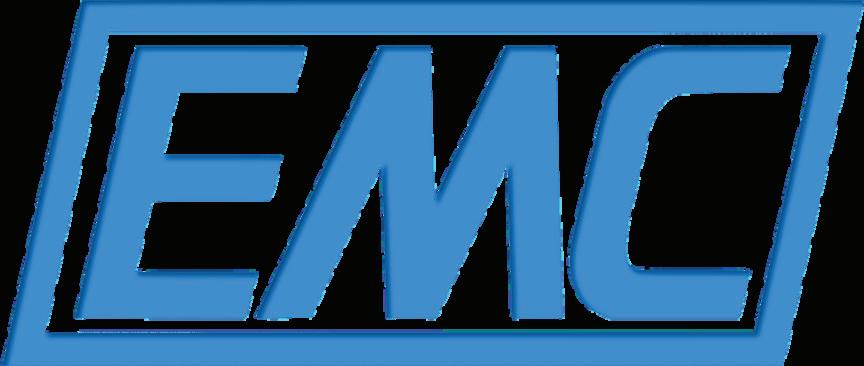

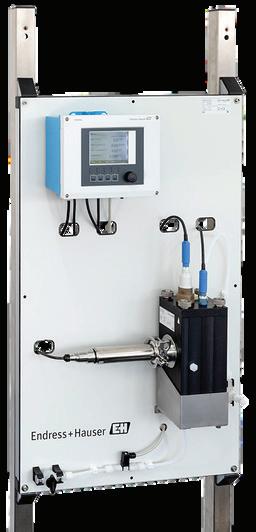
Visit us at the Water New Zealand Conference & Expo 17-19 October 2023 STAND 62 Measure your water qualityanywhere, anytime Get live readings on pressure, flow, pH, temperature and more where ever you are with EMC's digital monitoring software. www.emc.co.nz | sales@emc.co.nz | 09 415 5110 Our locally manufactured water panels can be customised to suit your exact requirements. Now with cloud connectivity, it's the reliable, compact and continuous solution for monitoring drinking water.
Water Panels ensuring compliance
EMC


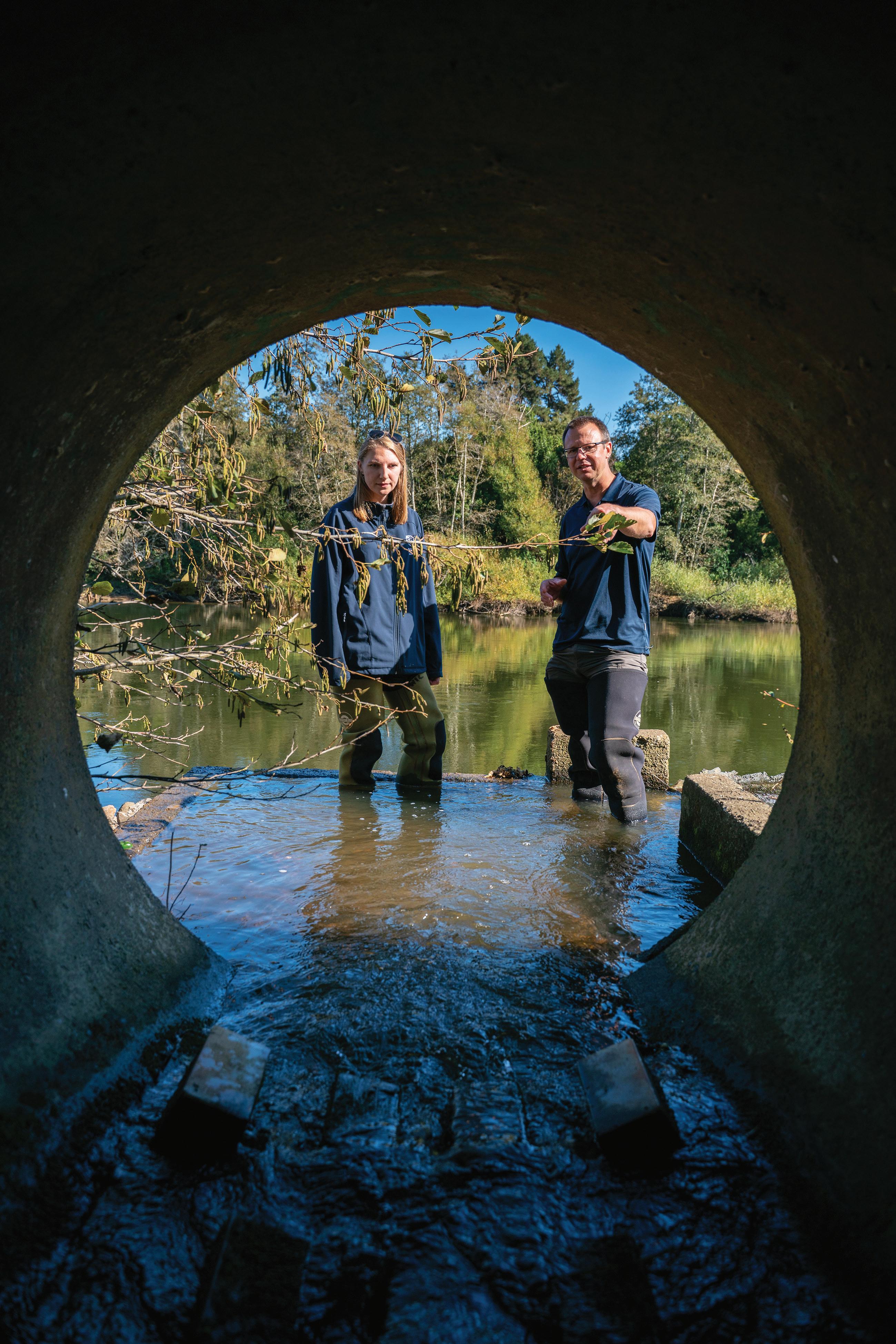
34 www.waternz.org.nz WATER NEW ZEALAND NATIVE FISH
PhD student Rachel Crawford and freshwater ecologist Dr Paul Franklin discuss brick baffles installed in a Waikato River culvert. The baffles provide resting spots for migratory fish.
Game on
In a small, windowless laboratory at NIWA’s Hamilton site, you will find young native fish competing in their very own Freshwater Olympics. However, the rivalry is about far more than mere gold medal status.
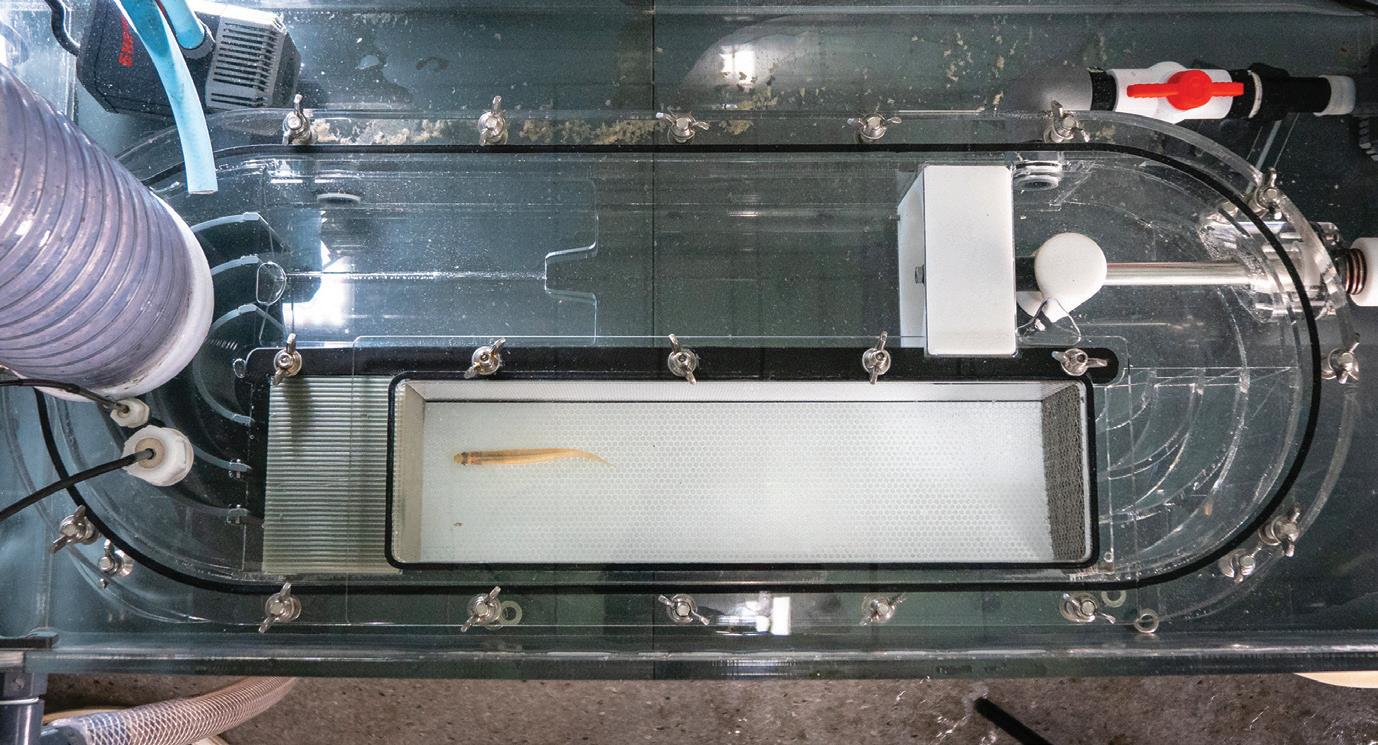
Wriggling their way up steep ramps or swimming their hearts out on a specially designed treadmill, these New Zealand representatives are competing for their very survival.
We have about 50 native freshwater fish species. Three-quarters of these are classified as threatened with, or at risk of, extinction.
Many of our iconic natives, such as tuna and whitebait, migrate between the sea and our rivers, and, due to this transitory lifestyle, they now face imposing challenges.
As the small, finger-sized juveniles make their way upstream to reach the habitats they need to grow, feed and breed, they increasingly encounter man-made barriers such as dams, culverts and weirs.
Fragmentation of river systems is a key driver in their decline. If they can’t get past these obstacles, they are not able to access the essential habitats required to complete their life cycle.
University of Waikato PhD student Rachel Crawford is on a mission to change this.
As part of a NIWA-led, five-year Endeavour Fund project, Rachel is holding her very own piscine Olympics. She is getting the stopwatch out to see how fast individual fish can swim, and for how long, so she can help develop practical solutions to the barriers they face.
Īnanga, kōkopu, kōaro, tuna, and the common and redfin bully are among some of the species gathered from Waikato streams to take part in Rachel’s experiments. She wants to discover the top swimming speeds these small fish can sustain and how water temperature impacts on their performance.
“You can think of the experiment as like a treadmill, except this time it’s full of water, so the fish are swimming against the
current, and the water velocity the fish are exposed to will gradually increase,” Rachel explains.
“This will tell us the maximum swimming velocity each fish can sustain.”
Other ‘competitions’ measure how well fish can climb varied materials or gradients and, unbeknown to all these miniOlympians, their performance may have a major influence on their future survival.
Rachel’s results feed directly into NIWA’s New Zealand Fish Passage Guidelines. These guidelines were used to inform new regulations in the National Policy Statement for Freshwater Management and the National Environmental Standards for Freshwater.
As a result of these regulations, any new structure which is put across a river or stream now needs to be designed to enable fish to get past, and Rachel’s work influences the designs of those fish-friendly pathways.
For freshwater ecologist Dr Paul Franklin, this work is more vital than ever. While future structures will adhere to the updated guidelines, new research shows nearly half of the country’s rivers and streams are already partially or fully inaccessible to migratory fish.

New Zealand has some of the highest densities of barriers to fish passage in the world – individuals can encounter 10 or more structures on their journey upstream.
“One of our biggest challenges over the next five to 10 years is figuring out how we fix all those structures so more rivers are accessible,” says Paul.
Thanks, in part, to Rachel’s ‘Olympics’, the good news is that solutions are now easier to implement. Old structures can be modified with well-designed fish ladders or passages.
Culverts, for example, can be fitted with ‘fish resting stops’.
“You can install baffles into culverts, which are basically panels placed inside the tube that help to slow water down and create resting areas, so that fish can pass through into the stream above,” says Rachel.
NIWA has also developed a Fish Passage Assessment Tool to provide an easy-to-use system for recording instream structures and assessing their likely impact on fish movements and river connectivity.
Anyone can use the tool and provide data by using the survey available in the NIWA Citizen Science app.
“It’s small changes like this that can make a big difference.
“If we don’t start addressing the threats that we’ve placed into their environment, these precious fish will one day be gone.”
For those who are wondering: the pintsized smelt and kōaro are currently in gold medal contention to take New Zealand’s ‘strongest swimmer’ title.
Article provided by NIWA
WATER NEW ZEALAND 35
Have you ever heard of a fish climbing competition? Mia Blyth drops in on the native fish getting put through their paces for a very good cause.
A juvenile īnanga battles its way to the front of the modified flow tank, built to test the optimum swimming speeds.
PHOTOS: STUART MACKAY, NIWA.
Making beer from recycled water
At San Francisco-based water reuse technology company Epic Cleantec, they like to do things differently. When it learnt that Greenbuild, the largest sustainable building conference in the United States, was to be hosted locally, it saw a unique opportunity to advance the water conversation on a large stage.
“Globally, buildings use 14 percent of all potable water and almost none reuse it –we are on a mission to change that. And what better way to showcase the untapped potential of water reuse than by brewing beer with it!
“We created the Epic OneWater Brew to highlight that water reuse truly is the next frontier of recycling.”

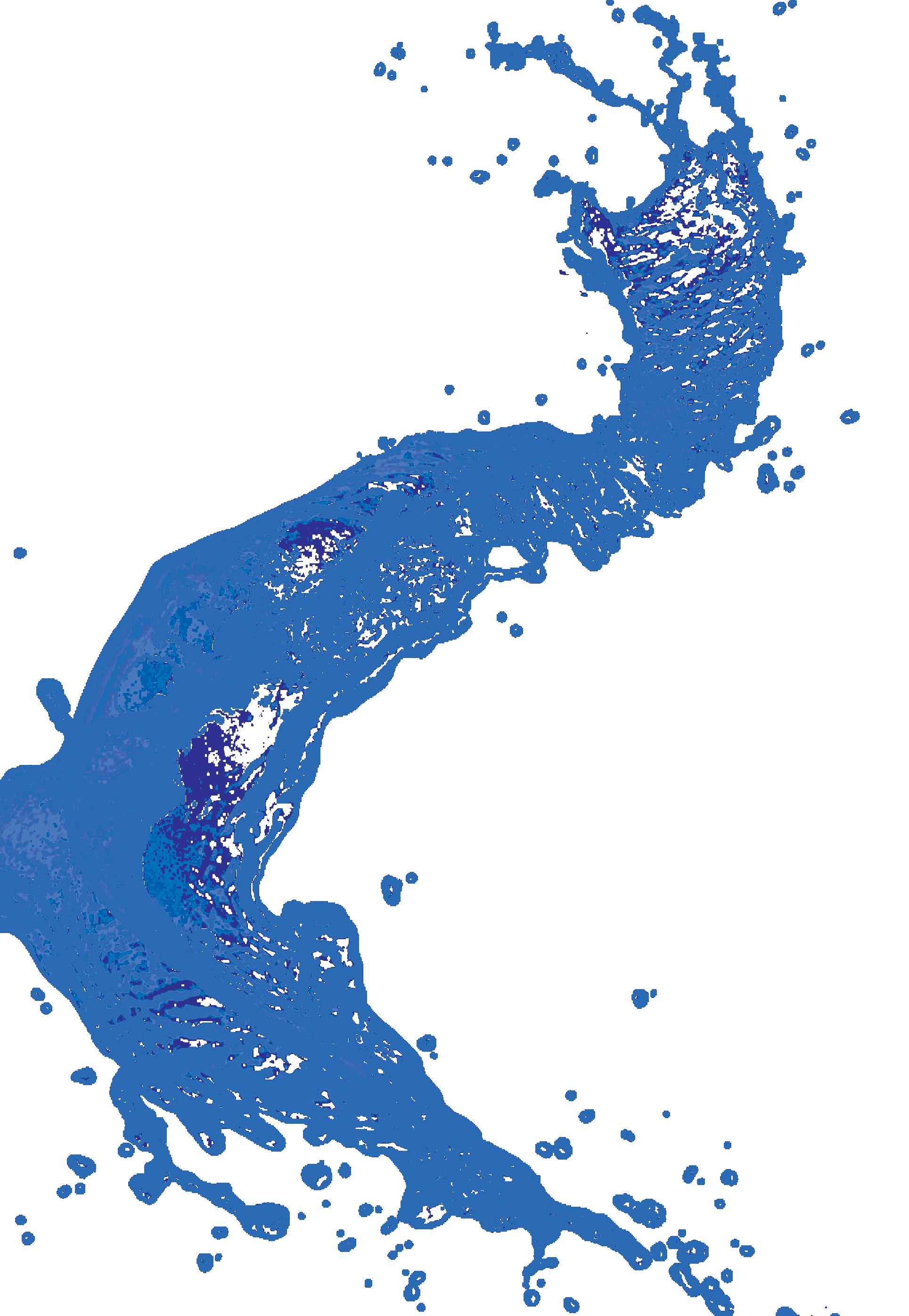
San Francisco has emerged as a global leader when it comes to the advancement of water reuse in the built environment. It was the first US city to pass an onsite water reuse regulation that requires new developments of 100,000 gross square feet (9290 square metres) or more to install and operate an onsite water reuse system.
This framework has become a model for many other cities looking to develop their own local water conservation programs.
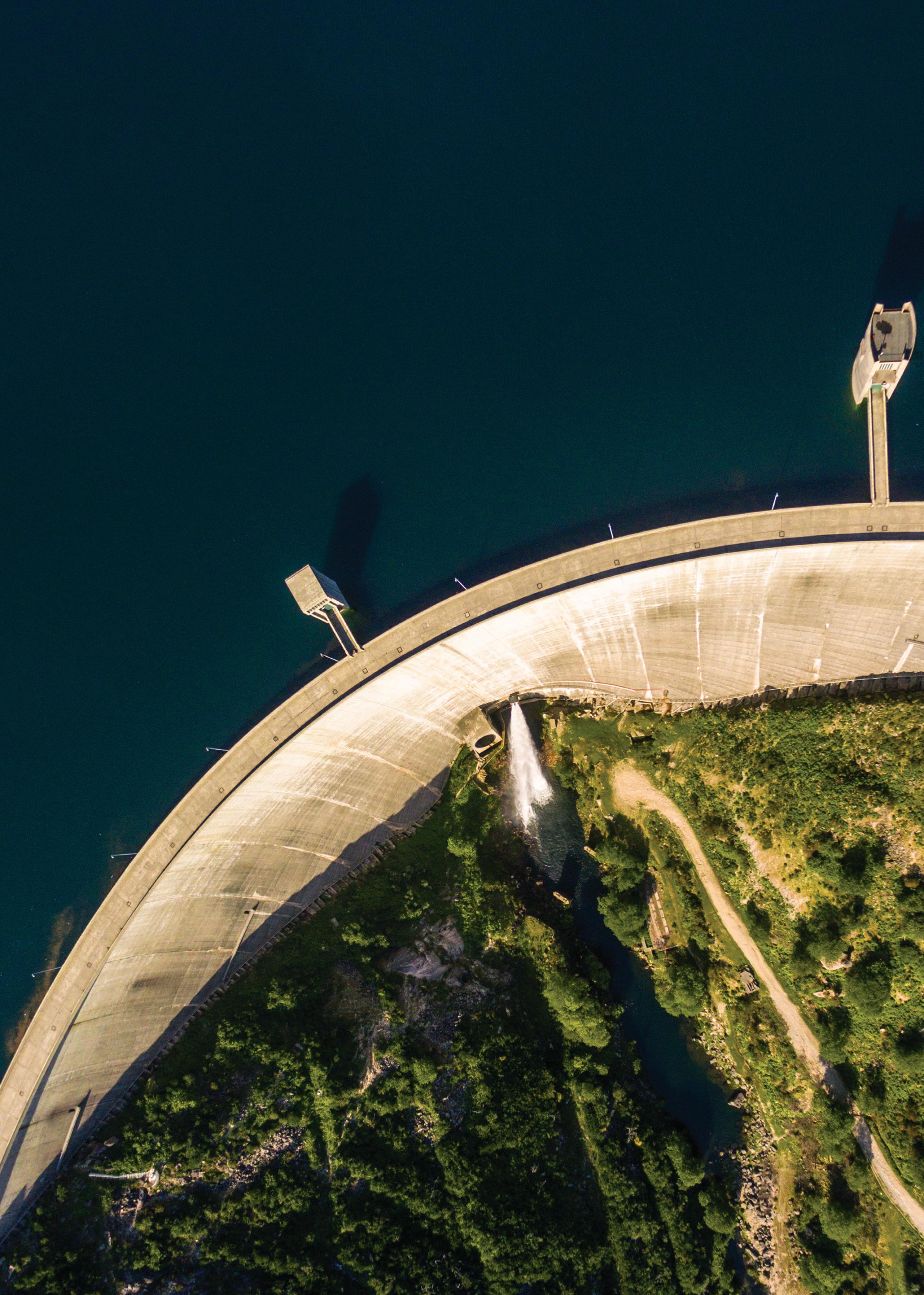
In November 2022, the luxury residential building Fifteen Fifty was named as having the city’s first approved and operational onsite greywater reuse system. Permitted and operated by Epic, the system can recycle up to 28,400 litres of greywater per day, or about 9.5 million litres per year.
“As more than 10,000 green-building professionals descended upon San Francisco for Greenbuild, we thought there was no better way to celebrate this milestone than by being the first company in the world to produce a beer with purified wastewater from a high-rise residential building!”
When Epic began its recycled beer brewing project in September 2022, it realised that there was, understandably, some hesitance around the use of treated water to brew beer. In spite of the fact that there are growing number of brewers embracing the concept of recycled water, there is a public perception that the water is of lesser quality.
However, we know, that with advanced
treatment technologies, recycled water is not only safe to drink, but is often even cleaner than many sources of water commonly consumed.
“As Epic co-founder Igor Tartakovsky, who originally trained in aerospace science, often remarks to the Epic team: What do you think the astronauts are drinking when they’re in space!?”
At the 40-story Fifteen Fifty apartment building, greywater is collected from laundry and showers and is treated before being reused for toilet and urinal flushing within the building.
Epic sent more than 7500 litres of this recycled water to its brewing partners, Devil’s Canyon Brewing Co, to begin its two-week transformation into a crisp Kölsch-style ale.
With the brewing process completed, the Epic brews were professionally canned and labelled with a silhouette of the Fifteen Fifty building featured prominently.
“Seeing our OneWater Brew come to life
after months of planning was truly Epic!”
San Francisco reporter Madeline Wells got to try the brew.
“After a thorough explanation of what makes the water they used to make the beer safe to drink (ultra-fine membrane filtration, disinfection with chlorine and ultraviolet light), I felt confident enough to try it,” she wrote in The Daily
“As I sipped, I tried not to think too hard about how I was drinking the shower water of rich people.”
She describes the brew as pleasantly bright and refreshing.
Epic is not the first to make a beer out of recycled water. Last year, Singapore’s national water agency made headlines for brewing a beer with reclaimed sewage water to raise awareness of water scarcity. Half Moon Bay Brewing Company also brewed a recycled grey water IPA for a blind taste test at a sustainability conference in 2016.
Article provided by Epic Cleantec
WATER NEW ZEALAND RECYCLED WATER

Navigating water’s digital currents: The power of data collection
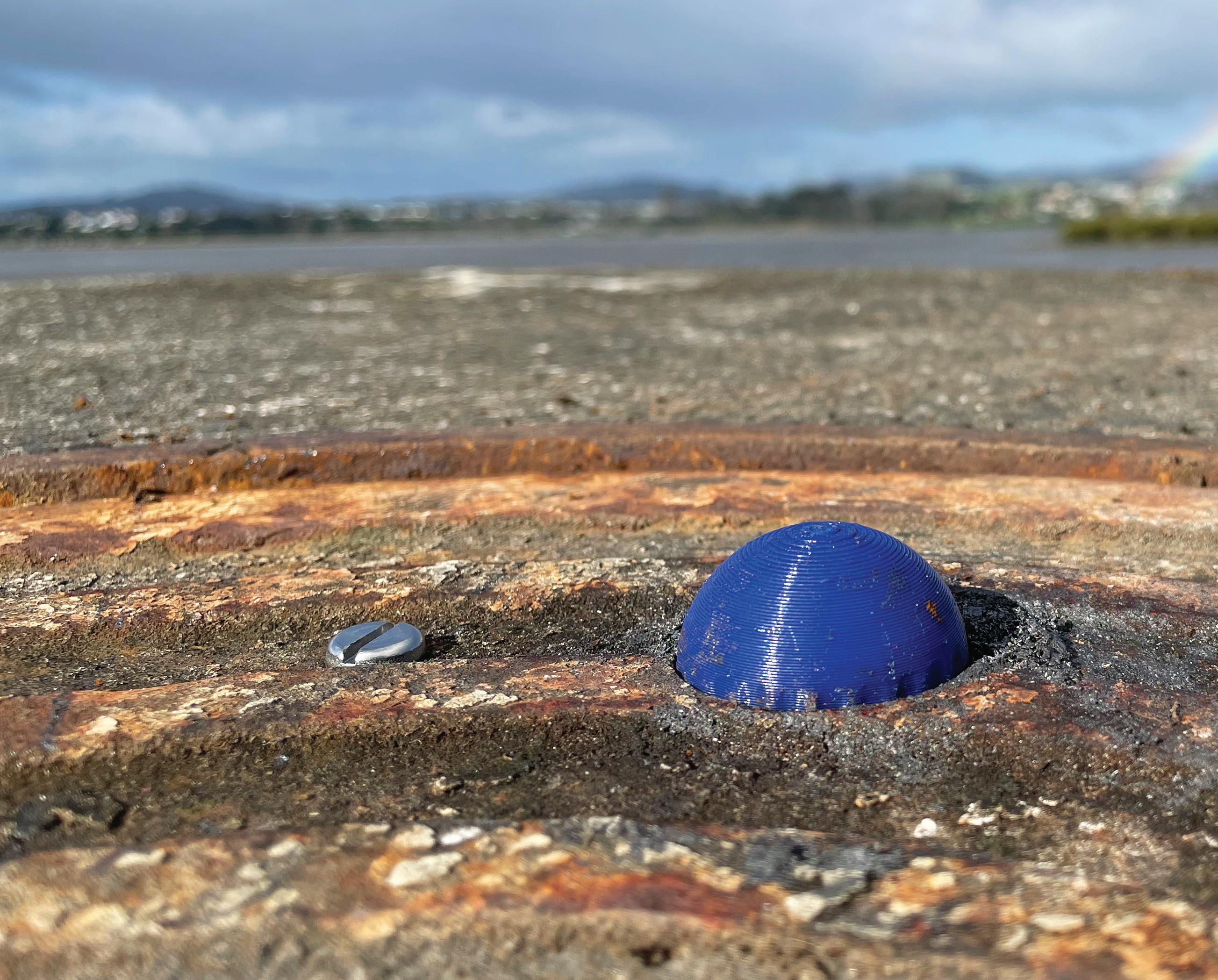
Navigating the array of essential data types and available solutions to maintain an efficient and effective water network has become increasingly intricate and time-consuming.
 By Garth Tunnicliffe, chief executive, Heed.
By Garth Tunnicliffe, chief executive, Heed.
WATER NEW ZEALAND TECHNOLOGY
Networks rely on a range of diverse data types to provide the foundation for informed decision-making, and for effective management of systems and resources. In fact, it’s probably faster to list areas that don’t require data, rather than all the areas that do.
Michael Howden, data and insights manager at Taumata Arowai, knows the value of data in the water industry well, recently speaking at Water New Zealand’s Smart Water Infrastructure Group on the role data has in lifting industry performance.

“As a regulator with the vision of safe water, every day, for everyone, data from different sources is needed to understand the risks and for the sector to lift its performance,” he says.
“This data includes the register of supplies, reviews of drinking water safety plans, notifications and drinking water quality assurance monitoring reporting.”
In an ideal scenario, network data would primarily serve for long-term upgrade planning, protection, and demonstration of network efficacy to key stakeholders. However, more often than not, the demand for data is driven by a combination of infrastructure degradation, increasing population density,
growing regulatory and public pressures, and increasingly constrained resources.
The available methods to capture essential data exhibit as much diversity as the data types themselves. The most logical approach is to first identify the required data types and subsequently select the appropriate tools. However, the reality of finite budgets and limited solution availability make prioritisation necessary.
Take real-time network monitoring as an example. Until recently, the monitoring of entire networks was unattainable due to constraints in scale, cost, and technology. A look at any GIS map with some level of urbanisation shows a single square kilometre lit up like a Christmas tree with water infrastructure.
Wellington alone has 55,000 manholes, not to mention all the treatment plants, pump stations, catchpits, water meters, and storage facilities (the list goes on) that comprise the remainder of the network.
The nature of the water industry’s notoriously difficult operating environments means reliably gathering accurate and timely data is challenging.
Think of subterranean manholes functioning as quasi-Faraday cages, the need for defence against debris and fluid coming down the pipes, and striking a balance between power consumption, service times and ease of deployment.
Fortunately, IoT is here and mature.
According to a Spring 2023 report by IoT Analytics, the global proliferation of IoT-connected devices led to an 18 percent growth in global IoT connections in 2022, reaching a massive 14.3 billion active IoT endpoints.

Across the globe, IoT technology has reaped significant benefits from the scale-driven surge in innovation, resulting in plummeting costs, heightened reliability, and a shift towards achieving more with less.
IoT devices have technically been around since the 80s, although the term ‘IoT’ wasn’t coined until 1999. Present-day IoT is vastly different. Fundamentally, designs now prioritise low cost, scalability, and interconnectedness, yielding data from unexpected sources (smart jandals are now a thing).
Growth in demand and innovation has produced a wave of data capture solutions that were once unfeasible, and within the water industry is no exception.
Thanks to the rise of IoT, monitoring entire networks is now an affordable reality. Furthermore, coupled with the growing ease of deploying high-quality IoT devices, there’s no reason for obtaining quality water data to remain as cost and scale prohibitive as it was in the past.
Here, all the prominent players in infrastructure have established arms focused on IoT solutioning and data analysis (Beca, Stantec, WSP, Spark, and One NZ among others). Enterprise underscores the industry’s allure and its potential for growth.
When in market for data gathering tools, decision makers should have intimate knowledge of what problem they are trying to solve. A deep comprehension of reticulation networks and information needs is required, to allow for selection of the optimal solution at the opportune moment.
Historically, the volume and depth of information correlated with the cost of deploying the necessary solution. However, the beauty of interconnectedness now means a suite of data
Thanks to the rise of IoT, monitoring entire networks is now an affordable reality. Furthermore, coupled with the growing ease of deploying highquality IoT devices, there’s no reason for obtaining quality water data to remain as cost and scale prohibitive as it was in the past.
gathering tools need not, and shouldn’t, be limited to one type or one provider – just as you wouldn’t stock your garage toolbox with only three hammers and no screwdrivers.
Knowledge is power, and I have yet to encounter a hydraulic modeller who would decline the prospect of additional data points.
Capturing data is the first step, however translating it into usable insights is where the real benefit is revealed.



In 2006, British mathematician Clive Humby explained it best: “Data is the new oil. Like oil, data is valuable, but if unrefined, it cannot really be used… data must be broken down, analysed for it to have value.”
Data analysis and integration are substantial topics that warrant dedicated articles of their own. To simplify, a significant portion of the data translation and analysis can be managed by a SCADA system, or ideally, by the data-capturing solutions directly integrating with existing SCADAs or easy to use dashboards.
Realistically, unless there is a dedicated team of data scientists and analysts to crunch the information, a solution that captures data but doesn’t do anything with it is like a Tesla with no programming – nice to look at but not going anywhere.
Systems that take care of the upfront analysis cut out the middleman to provide direct, consumable insights are best. For day-to-day operations, the availability of straightforward, reliable and clear insights like alerts for critical network events, can significantly enhance operational efficiency.
For more complex analysis, data produced should be easily accessible and consumable by those who need it, following standard conventions for storage and viewing. To solve seemingly unsolvable challenges is no small feat, however good quality data goes a long way towards finding solutions with significant benefit.


The US Department of Energy Efficiency & Renewable Energy estimates a 10-20 percent cost savings when using preventive maintenance over a reactive maintenance programme. The cost savings of predictive maintenance over reactive maintenance is estimated to be 30-40 percent.

Gathering, integrating, and translating water data holds immense value for networks facing escalating pressures. When done right, it supports deeper investigation, better business cases, improved decision-making, increased regulatory compliance, more comprehensive modelling, greater resource efficiency, and achieves better value for money for ratepayers.

There are always reasons why building network resilience will take second place to other, more pressing demands. Resource constraints, ever urgent and growing to-do lists, climate woes and impending legislation changes are all commonly touted excuses. However, reversed, these are equally strong arguments for why data capture can no longer be relegated to the realm of ‘nice-to-haves’.
You can continue to kick the can down the road, but it’s only a matter of time until you or one of your stakeholders get to the can again. Hopefully they won’t trip over it.
40 www.waternz.org.nz
WATER NEW ZEALAND TECHNOLOGY
Taking care of the 3 Waters now and for generations to come
Sustainable Future: Wastewater Screens
Hurunui District Council slashed wastewater screening costs at its Hanmer Springs Wastewater Treatment Plant by installing a one-of-a-kind, revolutionary product that uses no washwater, and discharges dry screenings.

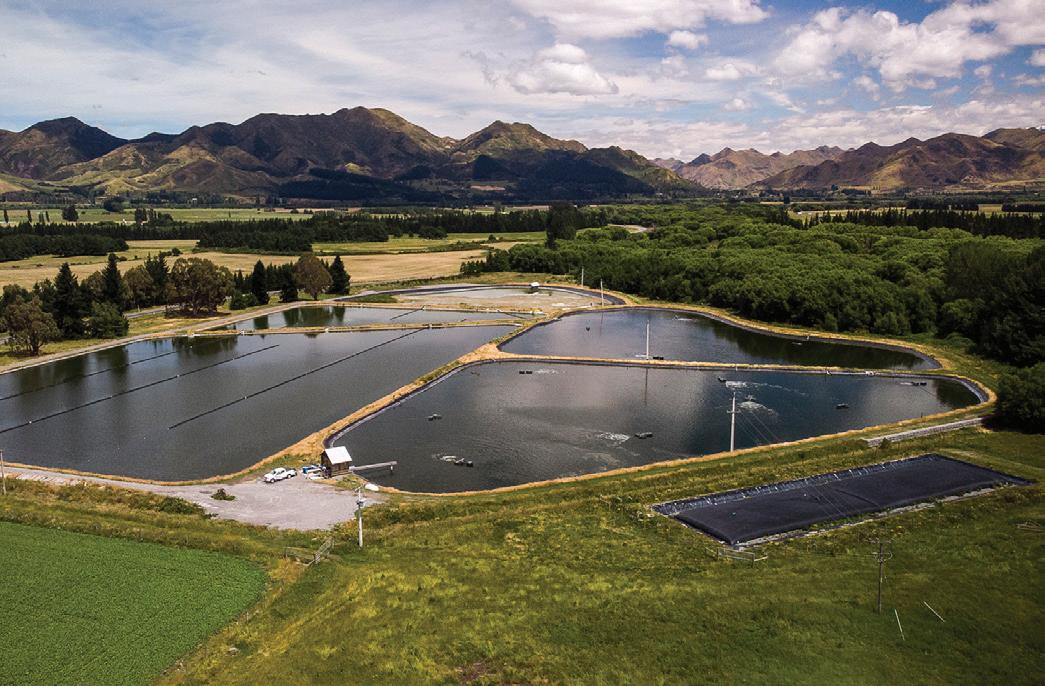
The
The final product is almost odourless and is so dry at 40% D.S. it is then able to be incinerated.

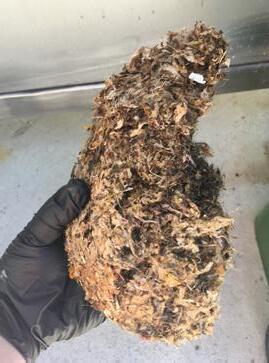
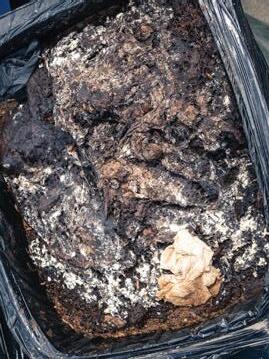
Previously, the Hurunui D.C. required 22 large 240L wheelie bins to store faecal-laden screenings destined for landfill, incurring significant expenses per tonne.
Now, the station discharges one small 120L wheelie bin which only requires emptying every three months.
No external washwater yields enormous savings
Unlike most wastewater screens, the Haigh ACE system uses no potable washwater nor re-use filtered washwater to wash the screenings. Instead it uses some of the influent to pump the macerated screenings liquor to the centrifuge/dewatering station which removes 98% of the biomass.
This innovation saves Hurunui D.C. a substantial 4,000,000 litres of potable washwater per annum at this single wastewater treatment plant.
With rising costs associated with the disposal of biohazardous waste, municipalities are pursuing costeffective solutions to reduce the volume sent to landfill each year. Hurunui District Council saw considerable benefits and savings after implementing a Haigh ACE Screener to reduce wastewater screenings in its existing treatment plant at Hanmer Springs.
Revolutionising waste reduction
As the only product of its kind on the market, the Haigh ACE Screener is capable of reducing the original screening volume by 94%. It is able to achieve this by macerating the incoming solids, dewatering and then compressing into a cake while returning the biomass back to the waste stream.
Features & Benefits
HAIGH ACE SCREEN
• Only product of its kind on the market using perforated screen plate, macerator, centrifuge/liquid separator and compactor system resulting in high volume and mass reduction of screenings.
• Screenings reduced to 1/6th of other systems decreasing landfill demand and lowering carbon footprint.
• No external wash water required significantly easing water usage and preserving a natural resource.
• Control sequence minimises running time lowering power consumption providing an energy efficient solution.
Low head loss
The Haigh ACE Screener’s minimal head loss of just 100mm is the lowest in its class with other screens typically documenting 150mm-200mm head loss.
With water treatment costs ever increasing and climate change resulting in longer periods of drought, it is important not to waste such a valuable natural resource.
systems wet screenings
screenings
This minimal head loss alleviates issues in gravity networks, which are common throughout rural New Zealand.
For more details and a fly-over video of the Hanmer Springs site, scan the QR code.

Matt Dowdall, Project Manager Hurunui District Council, said, “This upgrade has undeniably been a pivotal step towards cost-saving and environmentally conscious practices. It’s shown how modern technology can lead us toward a cleaner and more sustainable future in wastewater treatment.”
0508 4 BBENG
www.brownbros.co.nz
1908
0723 DELIVERING PUMPING SOLUTIONS ® since
AFTER
Previous
BEFORE Haigh systems
are almost odourless and so dry at 40% D.S.
Record investment will deliver long-term benefits
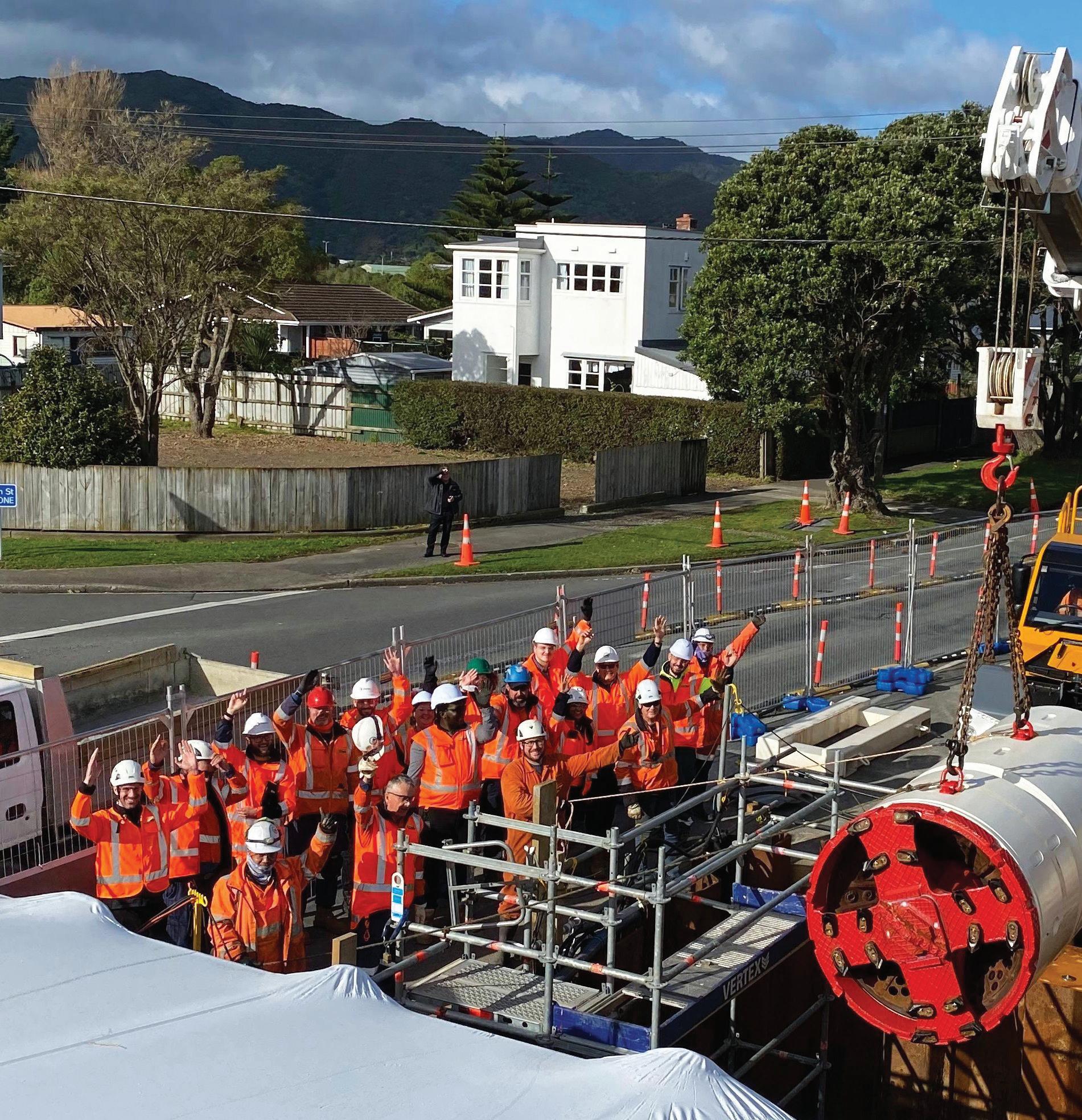

42 www.waternz.org.nz WATER NEW ZEALAND INFRASTRUCTURE
Wellington Water recently completed a critical wastewater pipe replacement on an arterial road in Lower Hutt that will provide increased resilience for the network in the region.
The duplication of the pipe that transports wastewater from 150,000 Hutt Valley residents runs down the well-travelled Randwick Road to the Seaview Wastewater Treatment Plant. The existing pipe is over 50 years old and is highly vulnerable to earthquake damage.
“You might look at that work and think – job done, what’s so special,” Wellington Water’s project lead Linda Fairbrother says.
“For a start, it’s special because we used innovative technology to reduce the impact on the community. Instead of digging up the full pipeline route, we used a micro-tunnel boring machine for 60 percent of the work. This meant we only required three launch/ retrieval pits down the busy Randwick Road.
“This minimised disruption to the community and road users, and allowed us to lay the new pipeline at depths more resilient to seismic events – up to nine metres deep in places.”
Hydraulic jacks propelled the German-manufactured Herrenknect AVN 1000 forward at 2.6 metre intervals. The pipe sections were pushed behind the machine using a jacking frame.
“This approach, which worked successfully, is evidence of our recognition that residents should have water infrastructure services that meet their needs now and into the future, and providing them should disrupt their daily lives as little as possible.”
Wellington Water engaged with mana whenua after commissioning a cultural impact assessment to identify cultural values or interests in the area.
Te Āti Awa were invited to provide a name for the micro-tunnel boring machine and chose Te Rū Tiokaoka. The name relates to Rūamoko the Māori god of earthquakes’ and the journey the machine would make through Papatūānuku.

This duplication project is just one example of the many water projects that Wellington Water has delivered on behalf of its shareholding councils in the wider Wellington region.
In fact, the Wellington-based water services provider have completed construction of 57 projects in the last year and have another 500 in the pipeline.
“By the end of June 2023, we delivered $261 million worth of capital projects across the region. These projects replaced old, and built new, drinking water, wastewater and stormwater assets on behalf the councils in the region which own and fund us,’ says chief executive Tonia Haskell.
“This is a record number in capital delivery for us and is double what we delivered two years ago in the 20/21 financial year.
“We are acutely aware that the region’s water infrastructure is old with many assets near or at the end of their operational lives. This is a result of historic underinvestment and means we now have a backlog of work to replace pipes and other assets.
“These projects will have a positive impact on the issues the region is dealing with such as water leaks and the environmental impacts of overflows from the wastewater network, and will increase the resilience of the water network. The more aging assets we can replace, the better.”
Since 2018/19, Wellington Water has increased its capital project delivery four-fold from $67 million to $261 million. This is part of a long-term strategy that Wellington Water implemented
SEPTEMBER/OCTOBER 2023 WATER NEW ZEALAND 43
The tunnel boring machine being lowered into drilling pit.
in 2018 to increase delivery in capital projects by around 30-40 percent every year. The intent of this approach is to lower the trend of assets failing before they are replaced.
“We have been able to do that with the benefit of our unique supply chain model that uses panels made up of teams of consultants and contractors. Our capital suppliers are treated as part of our whanau, which means that they strive for outcomes for the region alongside us.
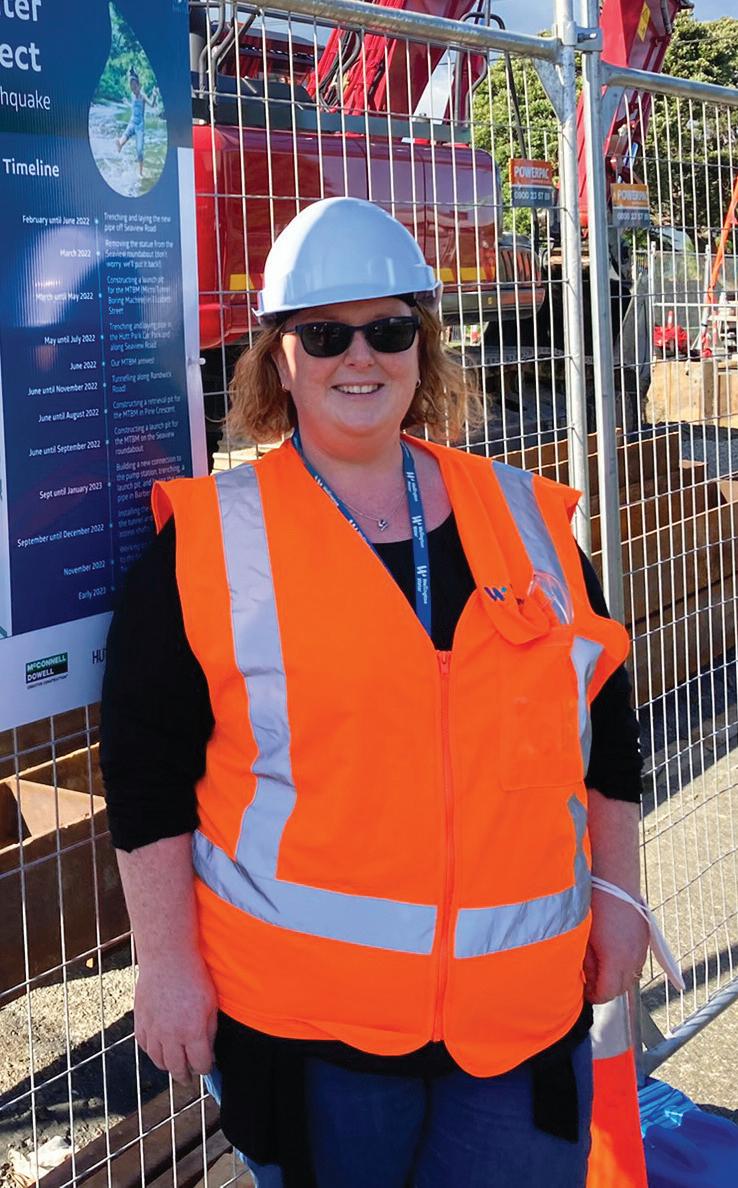
“While other parts of the country have been struggling for contractor resource, our collaborative approach has meant we have been able to continue to build our delivery capability. The model encourages innovation and cost effectiveness through all parts of supply chain being able to have a voice in the solution.
“And, it’s not just about the benefits to the region’s water infrastructure. Staff and project teams, consultants and contractor numbers have risen from approximately 150 in 2018/19 to just under 450 in 2022/23.”

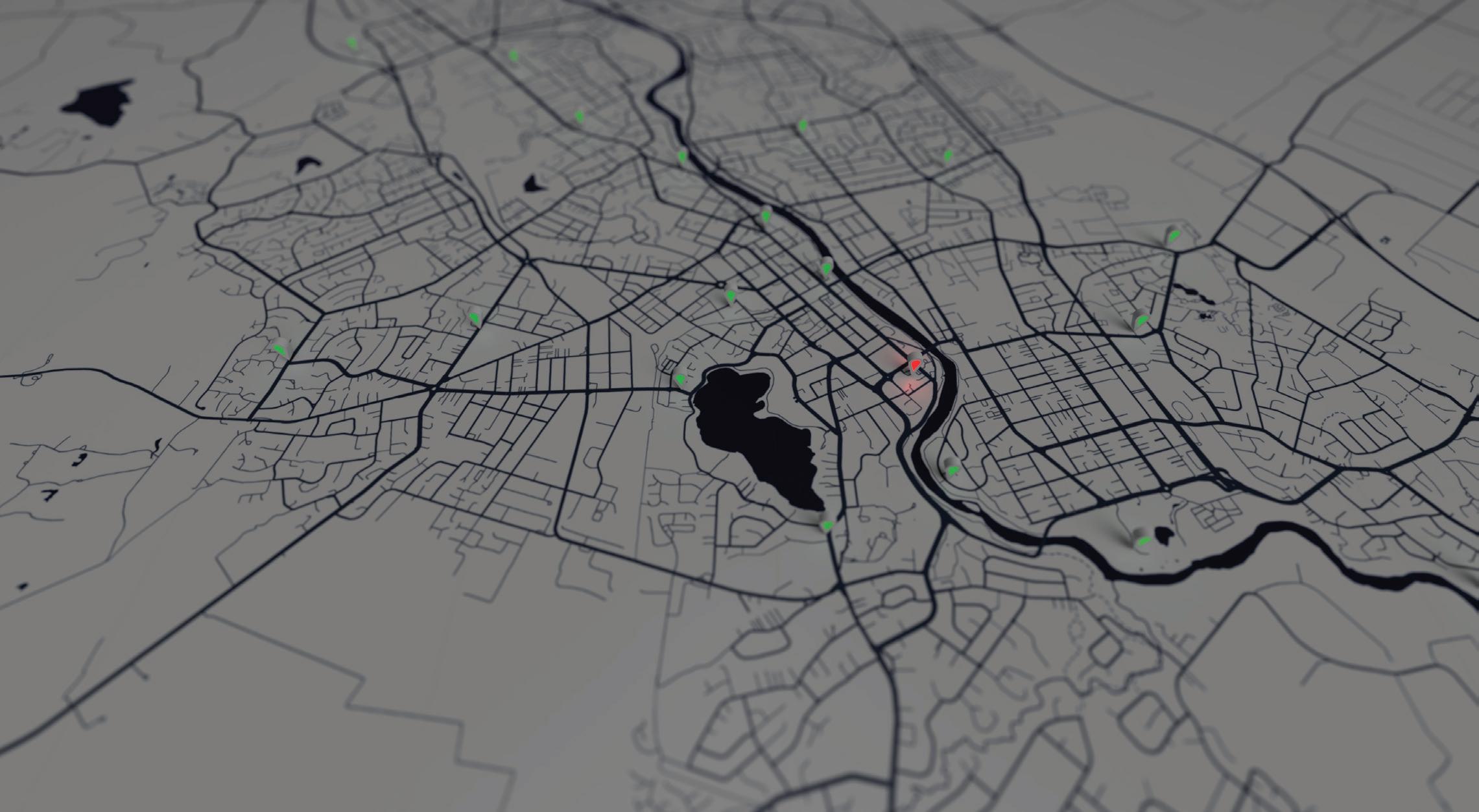
The panel teams are employing local people and sub-contractors and creating jobs and growing knowledge and skills for the water sector.’
“We acknowledge that some of the increase in spend is a result of recent inflationary pressures in the construction industry, however there is still a material increase in delivery.
“The continued increase in investment reflects the commitment of our councils to fund longer-term projects for better water outcomes for the region – which is great to see.
“We’re working on increasingly complex projects such as reservoirs, pipe-bridges, highly technical work within treatment plants and multi-stage, multi-year pipeline renewal programmes.
“All of these projects require specialist knowledge and experience. Any training and development we provide our people, and our suppliers means that knowledge can be used for future projects and in the wider sector.”
Article provided by Wellington Water.

44 www.waternz.org.nz WATER NEW ZEALAND INFRASTRUCTURE
Wellington Water project lead Linda Fairbrother.
GETTING THE MOST OUT OF WATER TRANSPORTATION BEGINS



When critical water or wastewater transport is essential to the success of your project, helping you get there is what we’re here for. Steel Mains provides only the highest quality pipelines through our innovative Sintakote® Steel Pipeline System
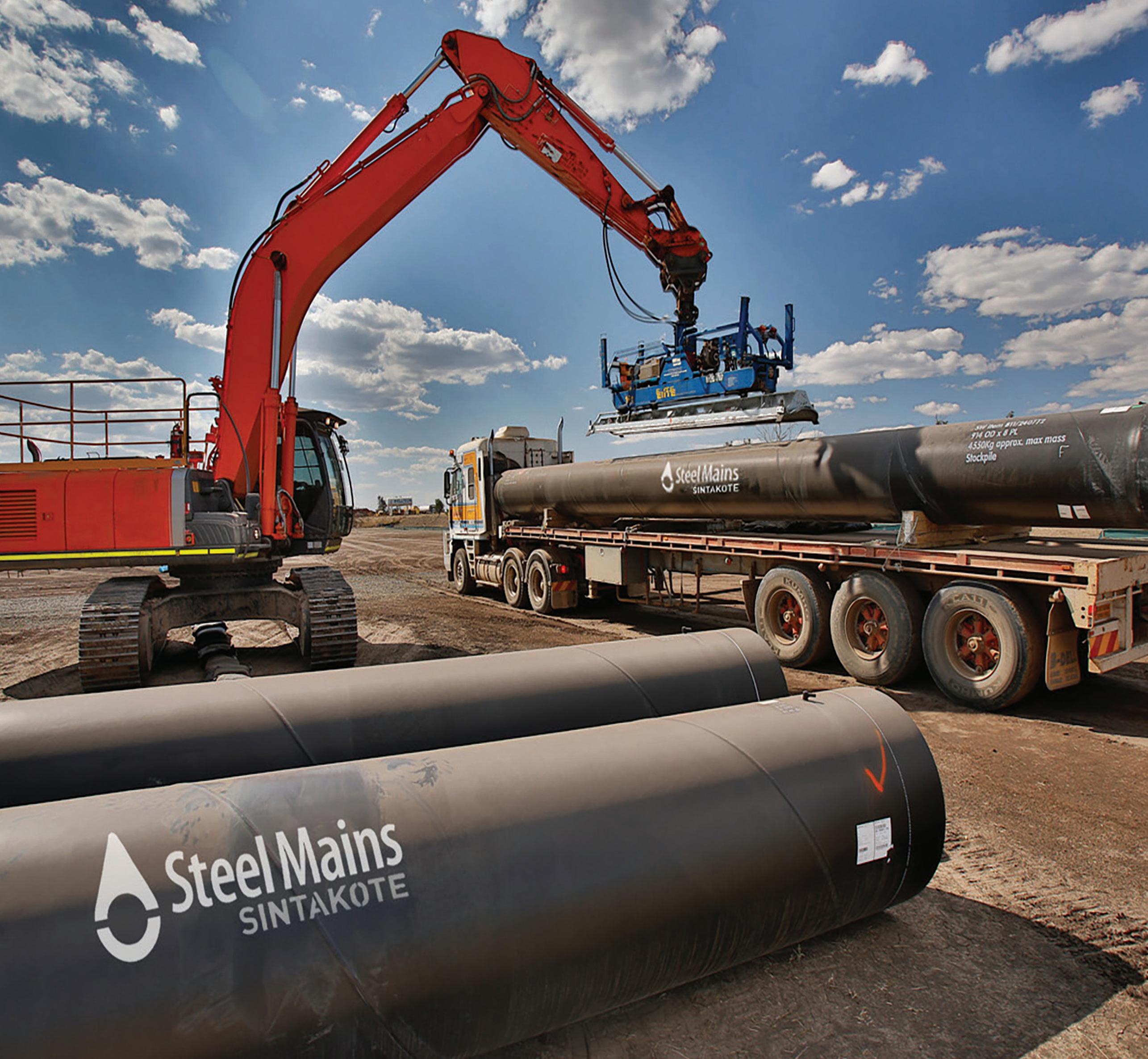
Backed by 150 years experience, our pipelines have been trusted for generations and our capability has been proven in all the major water projects our pipelines have served.

Through our cutting edge corrosion systems, our Sintakote® Steel Pipeline System has an enviable 150 years’ service life to match. Choose Steel Mains for your next pipeline project.

www.steelmains.com
WITH THE RIGHT PIPELINE
More than a steel pipe supplier

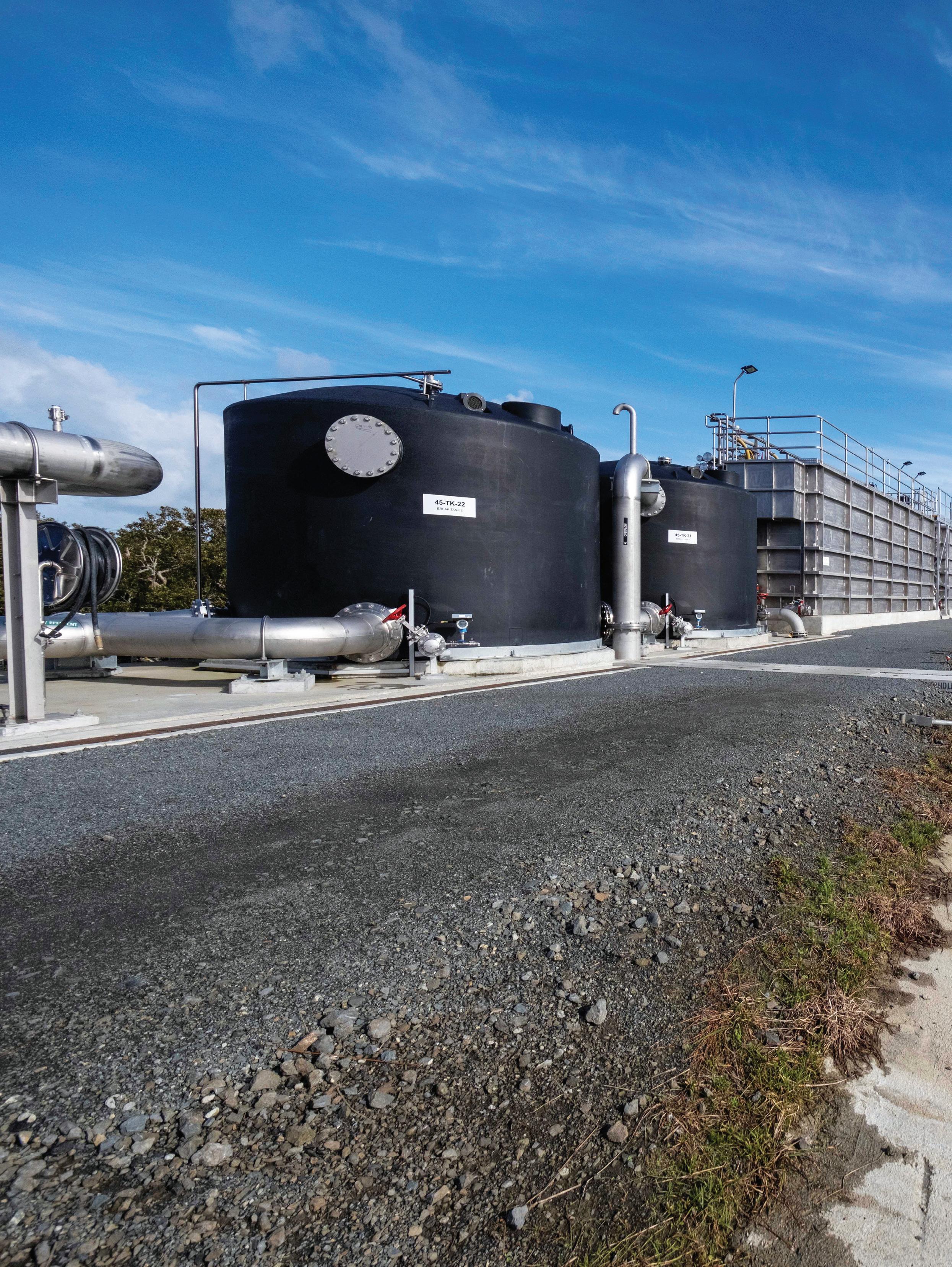

48 www.waternz.org.nz WATER NEW ZEALAND WASTEWATER
Country’s first MABR installation at Helensville
New Zealand’s first installation of a membrane aerated biofilm reactor (MABR) at the Helensville Wastewater Treatment Plant is putting up a strong case for this technology to be adopted around the country.
It was part of Watercare’s $17 million upgrade of the treatment plant that has vastly improved the quality of the treated wastewater and means the plant is better able to cope with peak flows in wet weather.
Watercare technology innovation manager Kevan Brian says the old plant, which had featured an oxidation pond and ultrafiltration, wasn’t consistently meeting consent requirements for the level of ammonia in the discharge. An abatement notice was issued by Auckland Council in late 2021.
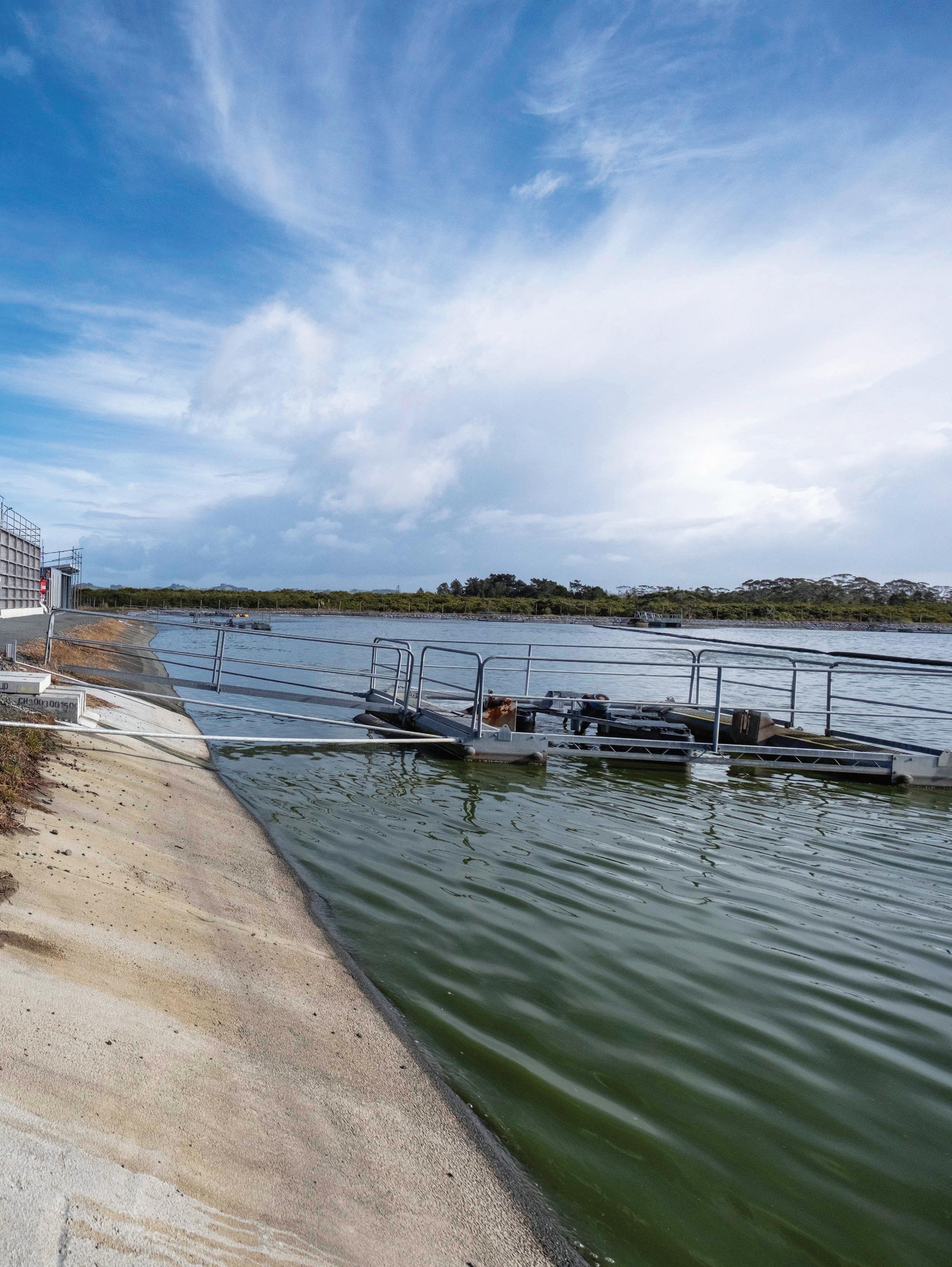
“We needed to change something, and we needed to do it quickly. We’d been trialling a membrane aerated biofilm reactor at our innovation centre at the Māngere Wastewater Treatment Plant, so while it hadn’t been done before in New Zealand, we already had the data to give us confidence that it was the right solution for Helensville.”
Inside the MABR tanks is an army of bugs that eats the carbon in liquid wastewater and reduces the amount of organic compounds and ammonia nitrogen.
“These bugs need oxygen to survive, so we pump air in to keep them happy and healthy. In the MABR, membranes hang down inside the tank like spaghetti – and the bugs cling to the membrane surface. We pump air in, and oxygen diffuses through the membrane surface.
SEPTEMBER/OCTOBER 2023 WATER NEW ZEALAND 49
“Because it diffuses oxygen, it uses about four or five times less energy from pumping than a traditional aerated bioreactor.”
The technology went into service in April and has been closely monitored as part of the commissioning process.
Kevan says the MABR’s performance is exceeding expectations.
“It’s significantly outperforming the design standards, which is excellent to see,” he says. “We’d targeted a reduction of ammonia to 10mg/L, which is still below our consent requirements, but its actual performance sees ammonia levels in the treated wastewater about 1.4mg/L.
“Ultimately it means we’re now discharging much higher quality treated wastewater to the Kaipara River.

“The technology also has other benefits – it’s much cheaper than a membrane bioreactor would have been, it’s quieter, it has a smaller footprint, and it reduces scope two greenhouse gas emissions (indirect emissions through energy consumption) from the biological treatment process by up to 50 percent.
“I think there’s a strong case for further rollouts of this technology around the country, as it’s particularly suited to small treatment plants where oxidation ponds are not consistently meeting the necessary standards.”
A unique application of MABR
Most MABR installations and pilot scale plants around the world have been designed in hybrid mode, where the MABR membranes are used within an activated sludge reactor –typically the anoxic zone.
“MABR is usually retrofitted to an activated sludge process to increase capacity. But what we’ve done at Helensville is a ‘biofilm
only’ or ‘pure MABR’, which has no activated sludge. Membranes are located in a standalone reactor.
“In ‘biofilm only’ mode there is no mixed liquor recycle, no dissolved oxygen measurement and no mechanical mixing of the tank contents. This makes the process very simple to operate.
“This particularly application of MABR is potentially really well suited to process upgrades in New Zealand, where oxidation pond systems are needed to meet tighter ammonia nitrogen consents year-round.”

Delivering a fast-tracked project
The treatment plant’s upgrade also included additional ultrafiltration capacity, the installation of a standby generator to keep the plant running during power outages or surges and work to strengthen and restore the capacity in the oxidation ponds by reinforcing the embankments.
Watercare project manager Tony Morley says the urgency of the project meant a different approach was needed.
“Because we were fast-tracking this project, the designer, contractor, and supplier had to work together to agree who could most efficiently detail the design. This resulted in our contractor detailing up elements of the design to maintain the tight construction programme.
“In this case it worked well, because we had a lot of expertise in-house, with Kevan and our operations team working closely with our contractors, suppliers, and consultants.
“If you want to fast track something you have to deliver the design as it’s needed. One of the benefits of this project is we’ve got a supply partner in Veolia who supplied most of the equipment.
50 www.waternz.org.nz
WATER NEW ZEALAND WASTEWATER
They know their products inside-out, so their design was really robust.






“We used off-site fabrication to speed up the pace of construction, with the construction team focussed on the on-site works.
“The two MABR tanks were built off-site and installed in just one day – with no concrete platform and no piles. This worked really well because the site has very little space, being squeezed between the Kaipara River and the oxidation ponds.”
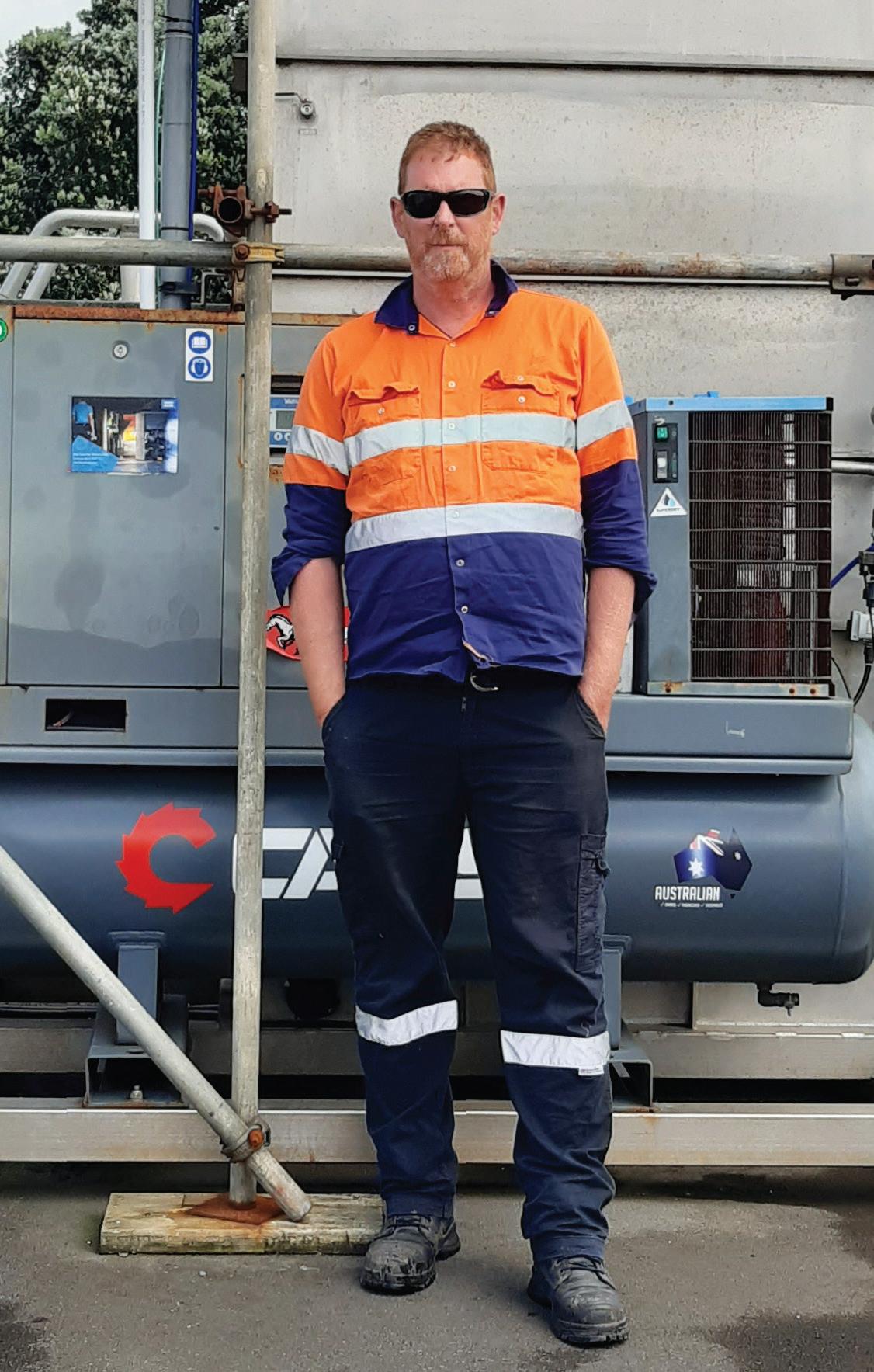









The plant treats wastewater from about 1600 homes and businesses in Helensville and Parakai.

“This catchment has a great deal of inflow and infiltration, so as soon as it starts raining, the flow rates go through the roof. By adding capacity with the strengthened pond, which means we can now operate it at full levels again, and with the extra ultra-filtration, we’ve boosted its resilience to wet weather events.
“The standby generator was needed because the site suffers from power outages and surges. That’s already proven its worth because during the storms in January there were power outages – we were able to go there, turn the generator on and keep the plant running. And now we’ve


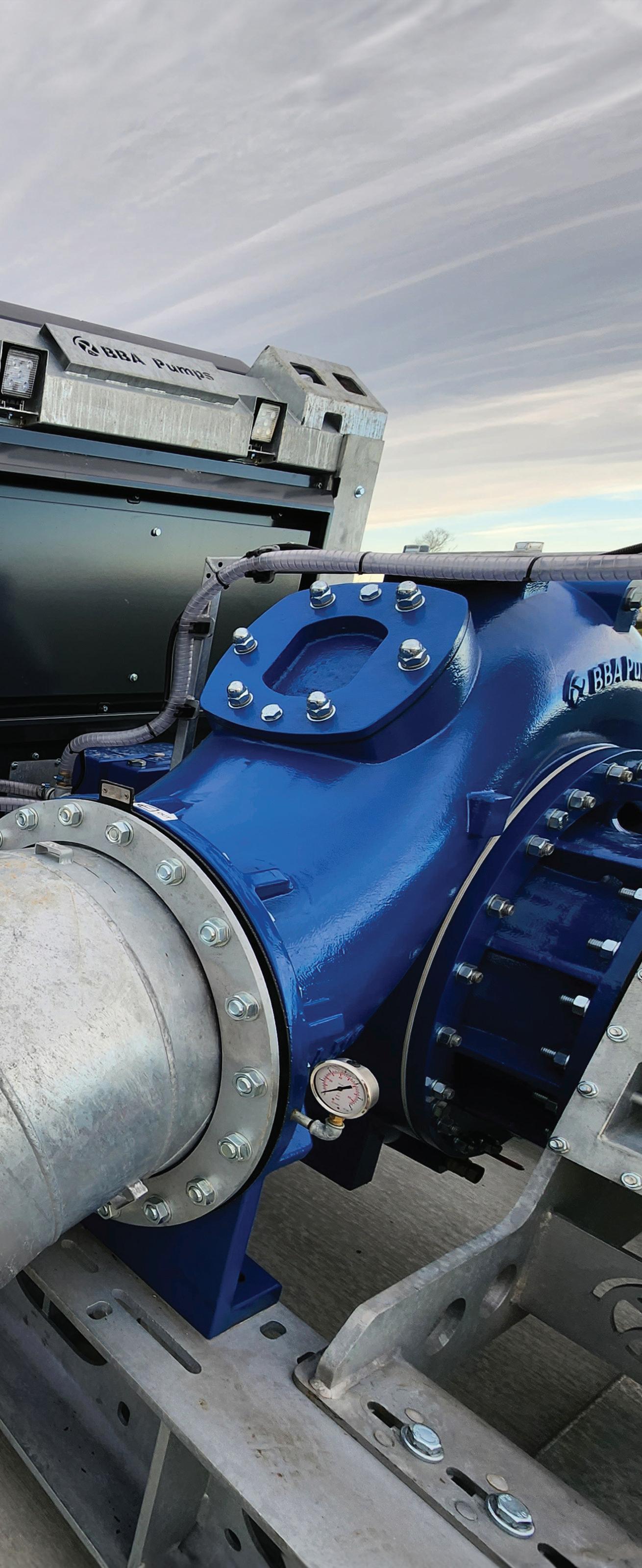
SEPTEMBER/OCTOBER 2023 WATER NEW ZEALAND 51 PP_P90x260_0923WNZ Find out more: Stormwater management solutions. When it counts.
Left: Watercare process technician Haydon O’Connor, left, with senior process commissioning engineer Hui Ian Tan at the newly upgraded Helensville Wastewater Treatment Plant. Above: Watercare technology innovation manager Kevan Brian at the MABR pilot plant at the Māngere Innovation Centre.
commissioned automation so if the mains supply fails it will switch to generators.”
Tony says the project had an approved budget of $19 million but came in $2 million under that.
“We’d like to sincerely thank all of our partners for helping us deliver this project on time and under budget – particularly our design partners Beca, delivery partner Brian Perry Civil and Veolia, who supplied the MABR technology that’s working so well.
“For me, this project also reinforced just how much expertise we have in-house here at Watercare. Watercare’s commissioning team, ops team, and Kevan in the technology innovation space – they add a lot of value, and it’s important to recognise and celebrate that.”
Watercare operations controller Mai Hoque says the integration of the MABR into the existing treatment plant was challenging.
“Adding this new system entailed changes to the existing plant controls. When we first started it up, our operators dealt with a number of alarms and faults that could happen at any time of day. But we were able to address these through process tuning and optimisation with the commissioning team.
“We also had to learn the ins and outs of the plant – a challenge that the team was happy to take on. With both classroom-style training from our commissioning team, and troubleshooting during the start-up phase, our operators soon had the knowledge and confidence to run the plant.”
What’s next for MABR?
Watercare is currently building a new MABR plant in Te Kauwhata under its contract to supply water, wastewater and stormwater services to the Waikato District Council. The use of MABR and a unique tank design is expected to save the council up to $10 million in ground improvement works.

Watercare is also designing a third MABR for the Wellsford Wastewater Treatment Plant. This project is due for completion in 2025.
Meanwhile, Kevan is continuing to use the MABR pilot plant at the Māngere Wastewater Treatment Plant to study greenhouse gas emissions. He’s working closely with the University of Queensland to work out how much nitrous oxide is generated from this process and how it can be mitigated.
Article supplied by Watercare.

52 www.waternz.org.nz WATER NEW ZEALAND WASTEWATER
“The two MABR tanks were built off-site and installed in just one day – with no concrete platform and no piles. This worked really well because the site has very little space, being squeezed between the Kaipara River and the oxidation ponds.”
Empowering Resilience: KlipTank and UNDP Transforming Water Security in the Marshall Islands
In the heart of the vast Pacific Ocean lies the Republic of the Marshall Islands, a picturesque paradise comprising 1,156 islands and islets. Yet, this idyllic nation of 60,000 people faces a pressing challenge - the urgent need for reliable drinking water storage. Enter the United Nations Development Programme (UNDP) and the groundbreaking ‘Addressing Climate Vulnerability in the Water Sector’ (ACWA) Project, launched in 2021 to confront this issue head-on.
Diving deep into the project’s core, the ACWA initiative strives to bolster the water supply resilience across outer islands and atolls, catering to nearly 28% of the nation’s population. By enhancing household and community rainwater harvesting and water storage structures, ACWA offers a sustainable solution. Rainwater harvesting emerges as the most efficient and cost-effective means to satisfy the drought water security needs of remote communities.
A testament to their commitment, the UNDP has invested a remarkable $24 million into ACWA, marking their largest contribution to the Northern Pacific region. This monumental endeavor stands to fortify the Marshall Islands against the intensifying impacts of climate
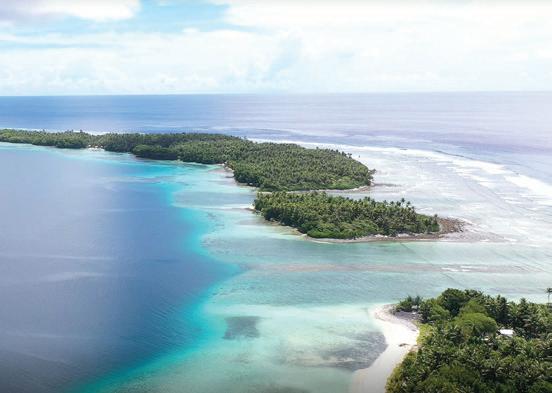
change, including relentless droughts and stormwater inundation.
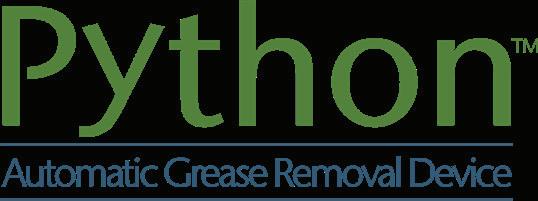

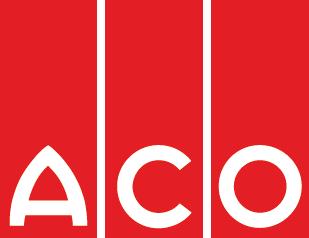
Enter KlipTank, a visionary company acclaimed for its innovation in above-ground modular composite bulk storage tanks. Chosen through a rigorous selection process, KlipTank secured the project in 2022, bringing over 13 years of experience and an impressive track record of delivering 600+ tanks globally. The collaboration speaks to KlipTank’s reliability and expertise as an ideal partner.
Over the next three years, KlipTank will deliver approximately 280 water storage tanks, varying in size from 34,000 to 56,000 litres. The choice of KlipTank’s flat-pack modular tanks is strategic, ensuring durability, ease of assembly, extended life expectancy, and secure drinking water storage. This is especially crucial when shipping to remote islands with limited infrastructure.
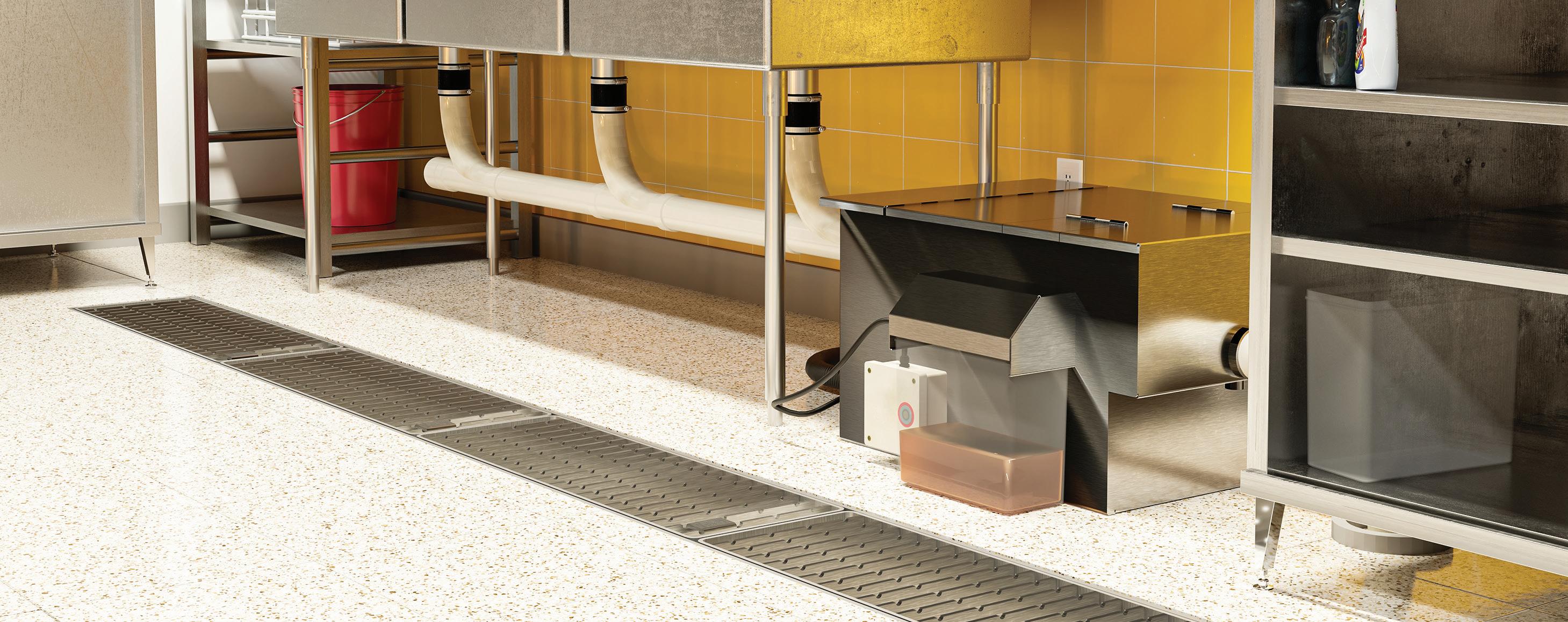
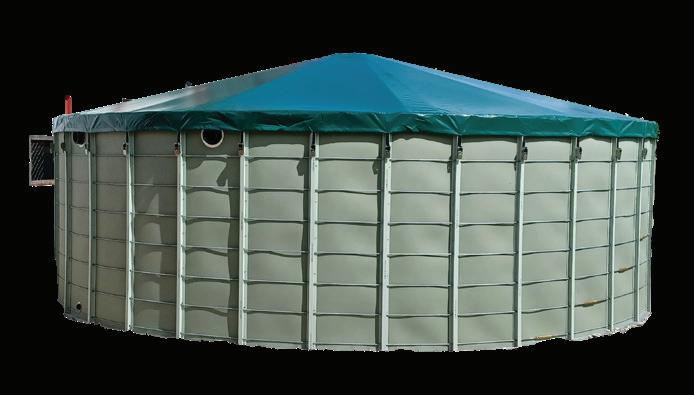
The KlipTank team, equipped with in-house engineering excellence in CAD design, metal fabrication, and plastic fabrication, can adapt tanks to suit diverse needs. This partnership enables KlipTank to play a transformative role in providing safe drinking water to 2,606 households and 160 community facilities across the Marshall Islands.

 The first KlipTank in the Marshall Islands
The first KlipTank in the Marshall Islands
ADVERTORIAL the integrity of our water Helping preserve ACO Limited · info@.aconz.co.nz ACO. we care for water Protect our precious water resources and maintain a cleaner environment with Python Automatic Grease Removal Devices. In the foodservice industry, fats, oils, and greases (FOG) strain water systems. Python’s innovative, eco-friendly solution prevents FOG from entering drains, ensuring a sustainable future. Install patented, efficient technology for greener kitchens and cleaner water. Python AGRD for a healthy kitchen!
The Republic of the Marshall Islands
Is saving water the new key to unlock our housebuilding future?
By Philip Kingston, general manager, Watersmart.
Could a relatively unheralded piece of legislation mean that saving water is now the key to unlocking our housebuilding future?
The October 2021 Financial Sector (Climate-related Disclosures and Other Matters) Amendment Act made it a mandatory requirement for entities that include many banks and insurers to prepare climate statements under a framework provided by the taskforce on climate-related financial disclosures.
As law firm MinterEllisonRuddWatts noted, ‘while the regime is positioned as a disclosure regime, the required analysis to make the disclosures is expected to lead to significant changes in how business is conducted’.
What is becoming clear now though is that these changes are likely to have a profound effect on the housebuilding sector. Specifically, reductions in water use may now become a major tool – and requirement – for residential developers and builders looking to unlock finance and insurance for future projects.
This is because banks and insurers are now, on their own initiative to deliver on their own climate change commitments, beginning to require those they lend to or insure to demonstrate that they also have emissions reduction targets, strategies, and action plans in place, with reporting on progress also a condition of the lending and/or insurance.
This is already finding its way not just into specific ‘sustainable’ lending requirements but into wider everyday bank lending requirements for companies across a range of sectors.
It is also likely to increase in importance as the country moves towards 2030 and its stated Carbon Zero 2050.
If you’re a developer or builder seeking bank lending or insurance over the coming months, you may well need to disclose and improve what you do to reduce emissions and waste, and create visible strategies and evidence to prove your progress. And if you’re not being asked to do this now, the chances are that you will be soon.
In our view, on-site water recycling and
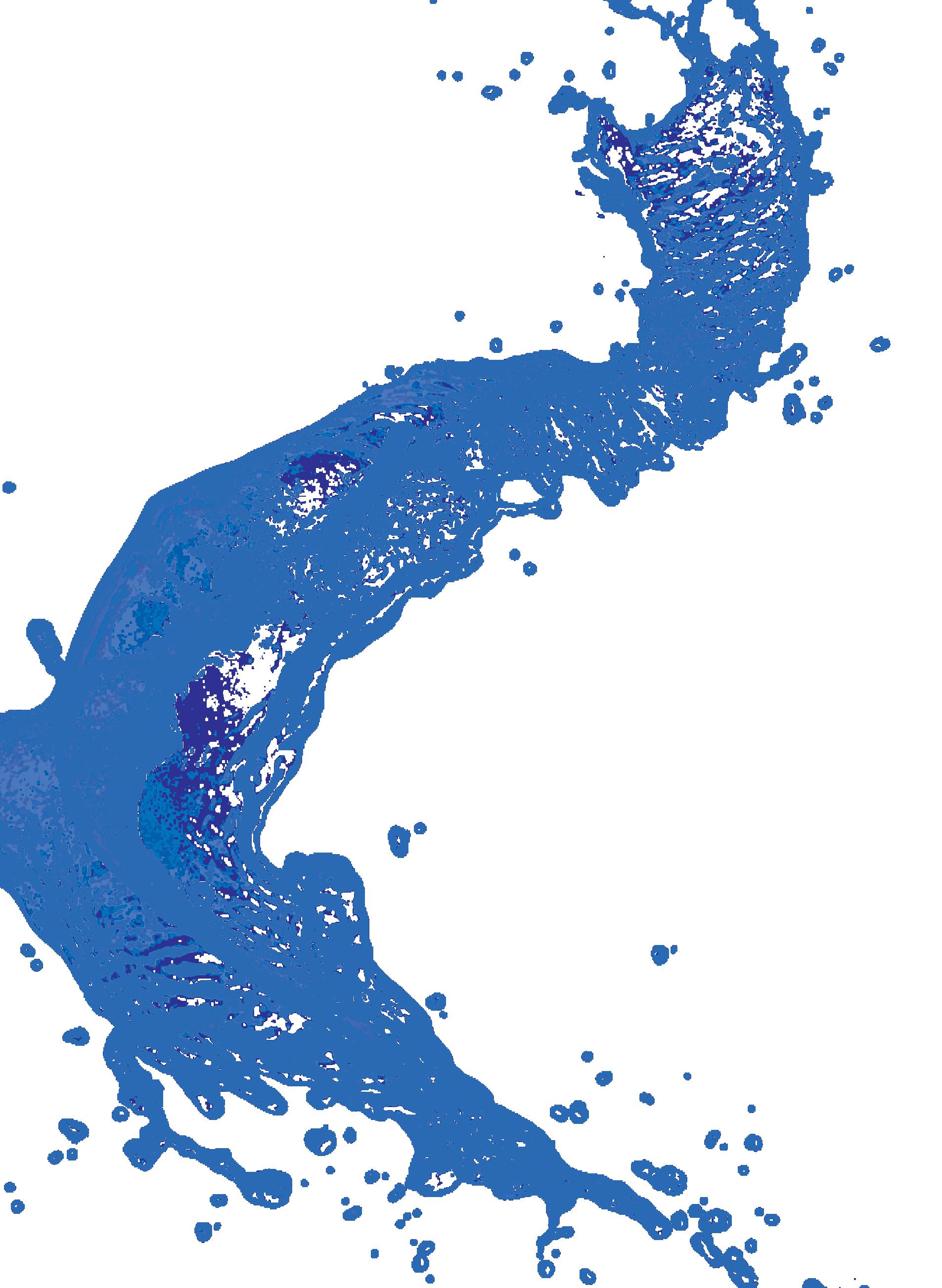
storage is a powerful way to reduce impacts, as it reduces the strain on the wider wastewater system and potentially associated emissions.
Improving how developments store, retain, and recycle water on site can reduce the demand placed on public water infrastructure, which helps to ensure a more sustainable allocation of resources. This is partly because treating and distributing water at a municipal level requires a significant amount of energy.
By reducing impacts on centralised water treatment and distribution systems, developments can contribute to energy savings and reduce their overall end-to-end footprint.
This will also help to drive progress in two other, but equally important ways.
First, it will help local authorities to enable development that moves us towards meeting our housing goals.
We are seeing places where development is limited due to the water infrastructure being at, close to, or over capacity. As a result, there is big demand for products that can reduce the load on the network to allow for properties, such as grey water recycling and retention and/or detention systems.
Second, it will help the development sector to move towards MBIE’s goal of reducing average per-person water use from 227 litres of water per day to 75 litres per day, bringing New Zealand more in line with other OECD countries.
As more than 70 percent of domestic water is used in the bathroom, we see significant opportunities for progress in this area. And, as MBIE’s goal of reducing water to 75 litres
per person per day is only 12 years away, this means properties being built today should be created with water saving in mind.
To us, this means that as other lowerhanging fruit is grabbed by developers and builders looking to reduce emissions, water could become the new key to unlocking a more sustainable future.
Jason Quinn is director of sustainable engineering and an expert in carbon analysis and reduction who has worked on innovative projects such as Fletcher Building’s pioneering LowCO pilot home. He says that emissions relating to water use are now an area of focus for builders and regulators.

“MBIE is likely to give an overall carbon budget for a house, impacted by how much water you’re going to use. Targets will start kicking in in a few years, and it is likely that this will involve applying some sort of water calculation with standard values per unit at the time of consent.
“When considering how water comes to and through a house, and then on to the treatment plant, a third of the budget will likely focus on freshwater coming in, and two thirds to its disposal. Measuring and reducing disposal is therefore likely to be more important than the fresh water coming in.”
Auckland’s water and wastewater services company Watercare is also keen to see water efficiency built into homes and has partnered with Fletcher Living on its LowCo home pilot.
Watercare chief customer officer Amanda Singleton says Watercare has committed to progressively reduce Auckland’s residential water consumption as part of the Auckland Water Strategy.
“To achieve our target, we must remain open to collaborating and encouraging our commercial partners to incorporate water conservation and carbon reduction into their construction projects.
“This is particularly important for residential developments due to the fragmented nature of demand once homes are built – as it can be difficult to influence water efficiency after a house has been built.”
54 www.waternz.org.nz WATER NEW ZEALAND COMMENT
Philip Kingston
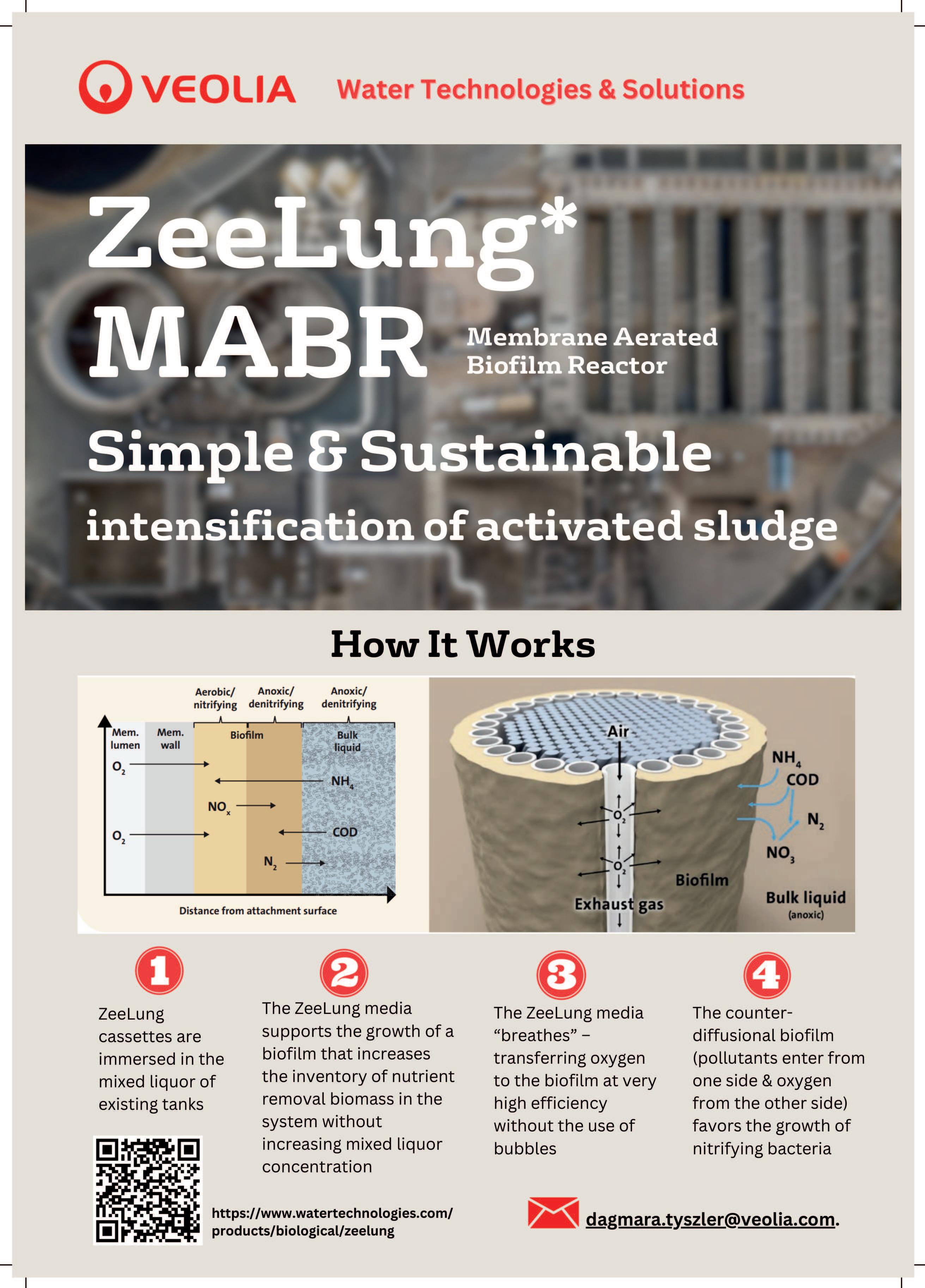
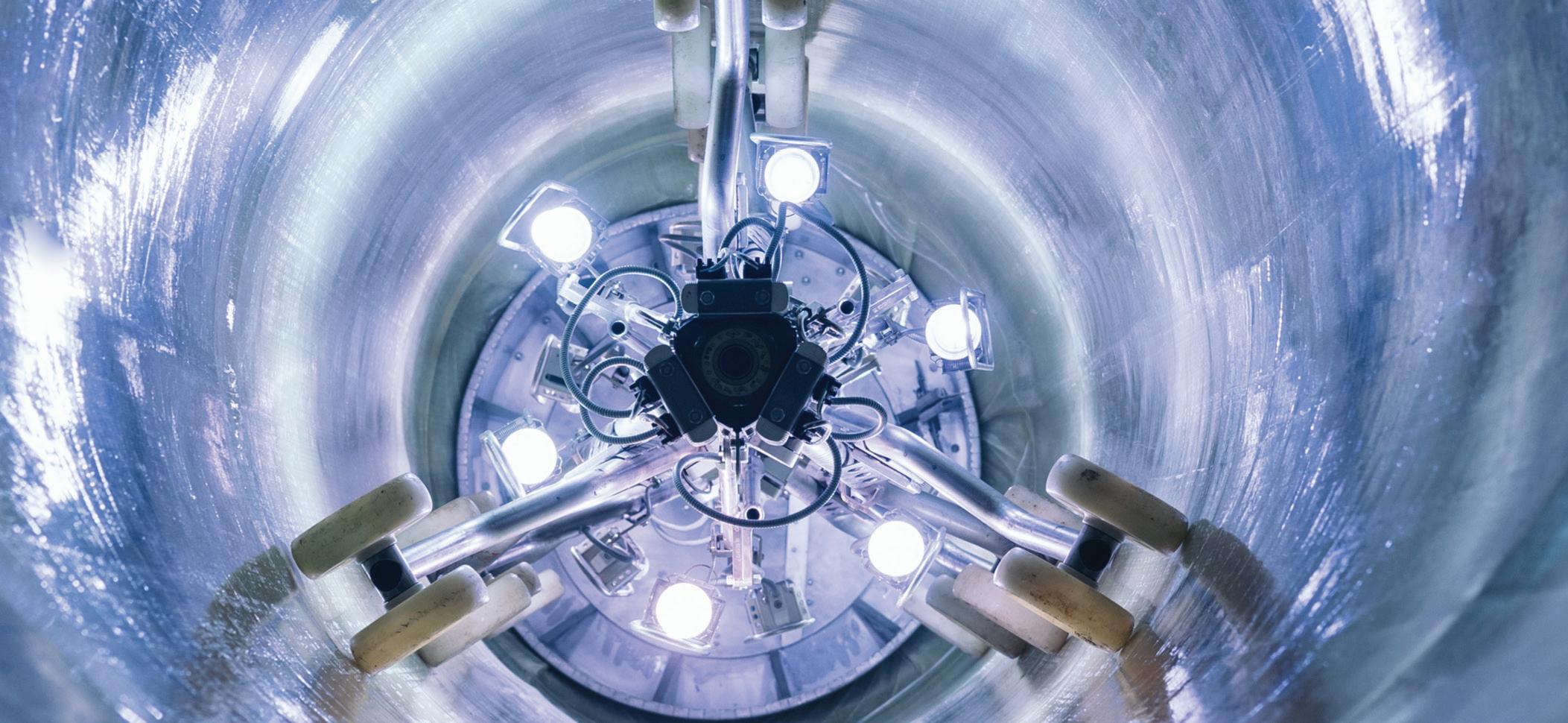
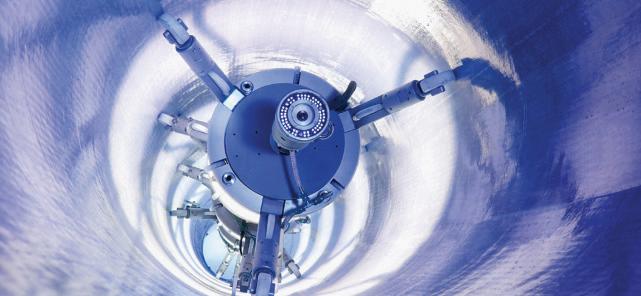
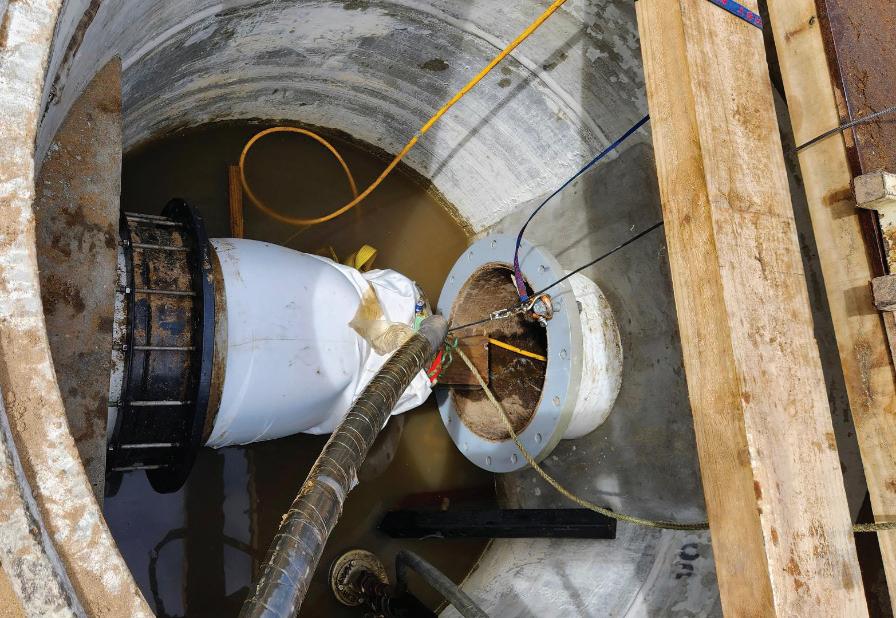
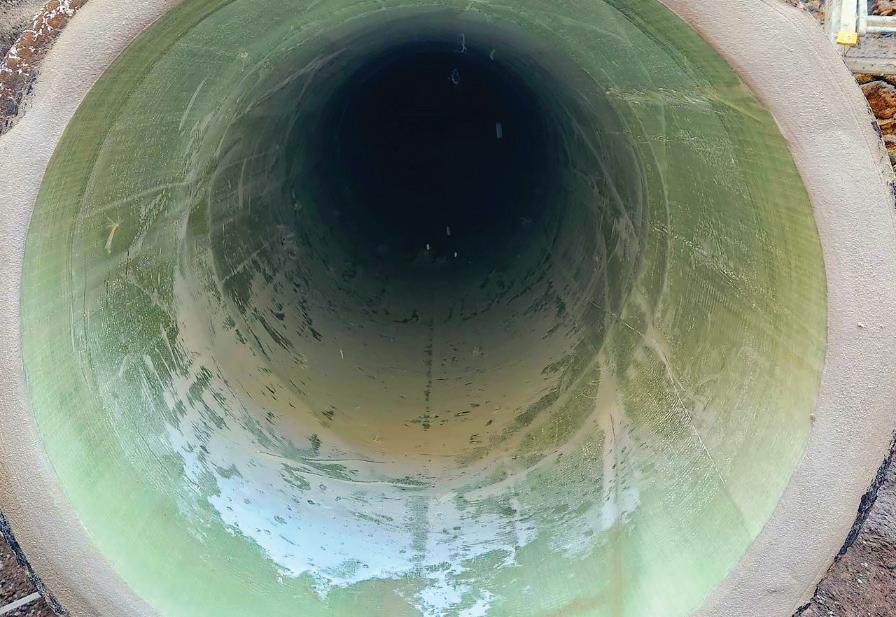
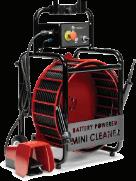
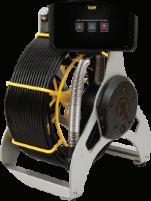
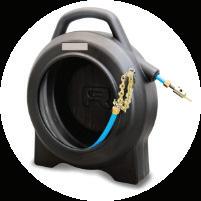
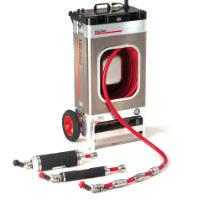


Dismissing the plausible –is human behaviour the primary barrier to risk
How can we expect the public to drive change, if our practitioners and leaders are also dismissing the plausible? Are we still waiting for signals from our communities before we affect change? Perhaps it is time that we look inside ourselves as a profession and see what change we can create? By
The rising trend of ‘no natural disasters’ has focused on highlighting that it is not only natural events that create disasters. Disasters associated with natural hazard events are the product of social, political, and economic environments.
When we consider this in the context of risk reduction, it is clear that focusing solely on the science and technical natural hazard portion only provides a small piece of the larger puzzle of risk reduction. We must consider the social construct; specifically, human behaviour.
Psychology and behaviour
Psychology has a greater impact on crisis response than most people may acknowledge. By studying human behaviour and decision making in response to various crises, experts have shed light on the ways in which cognitive biases and emotional responses can impact risk perception and crisis response.
“Every single risk management disaster in the last 15 years, including financial disasters, has had psychological issues at the root.” Shefrin (2016).
A common misconception when communicating risk is that individuals make decisions based only on how much they know about a given risk and the associated uncertainty. This relates to the cognitive dimension (what people know and understand) and neglects the emotional dimension (how they feel about information received) that will influence an individual’s final decision.
As practitioners, we often focus heavily on the hazard information – the probabilities, and neglect to focus on the emotional dimension – the consequences.
“Research suggests that consideration of emotions is potentially the missing link to effective risk communication and action by the community.” Roeser (2012)
While this approach was suggested over 10 years ago, putting emotion first in risk communication is not widely undertaken currently. During the 2023 January Anniversary weekend ‘severe’
Alex Cartwright, Tonkin + Taylor.
weather event that impacted Auckland, Coromandel, and wider areas of the upper North Island, discussions on consequences did not appear to be the focus of leaders and practitioners.

“Unprecedented.” “Never seen before in my lifetime.” “Too early to consider climate change.” (RNZ, 2023; Stuff 2023).

Instead, acknowledgement of the event was linked to terminology around the rarity of the event occurrence. Was this desire to highlight the rarity of the event in hopes that it would temper concerns over the potential for reoccurrence, encouraging mindsets of dismissal?
Instead of dismissing the role of climate change this, perhaps, was the perfect opportunity to highlight a plausible future – an event that could easily return once again.
Imagine the outcome if leaders from the outset had acknowledged how this is a very real future – the struggles and the torment within our communities, something that is set to increase, not decrease.
Was this the opportunity to think more with the heart than the head? Acknowledge the emotion, focus less on the probability, and drive change?
Psychologists label the world we currently live within as BANI: Brittle, Anxious, Non-linear, Incomprehensible. The approach of dismissing events that are occurring only exacerbates this BANI world, reinforcing that answers cannot always be believed.
Ultimately, a BANI world is not a place where communication methods of the past will be appropriate now or into the future.
Don’t let your biases get in the way
So maybe you have come around to the importance of emotion, but now you are stuck with the bias barrier. Worse still, it is not just the public that bring bias to risk communication, we as practitioners do too.
By recognising and accounting for these biases, we can develop more effective communication and management strategies that factor people’s psychological tendencies and motivations.
SEPTEMBER/OCTOBER 2023 WATER NEW ZEALAND 59 COMMENT WATER NEW ZEALAND
INDUSTRY LEADERS IN WATER TREATMENT AND WASTEWATER ENGINEERING
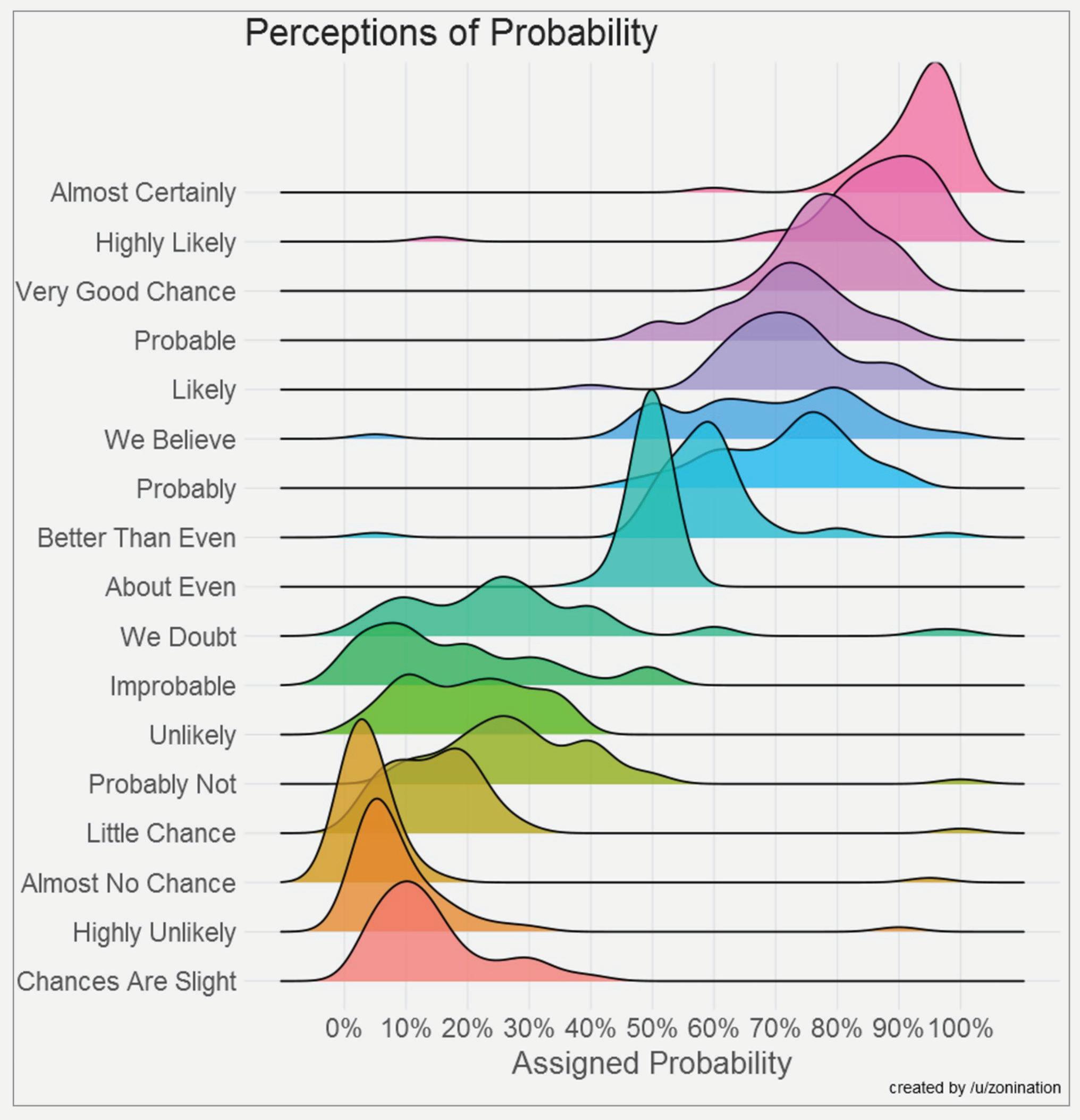
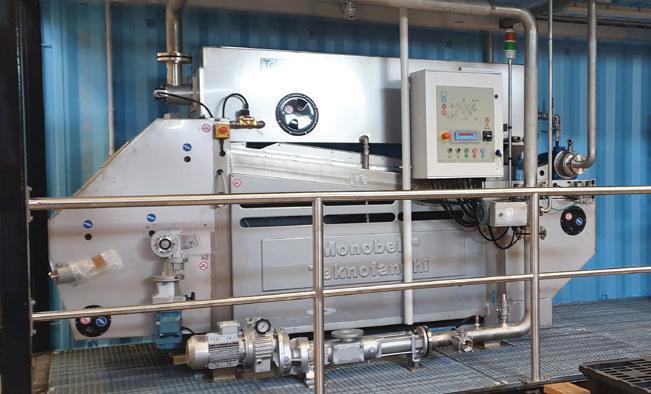
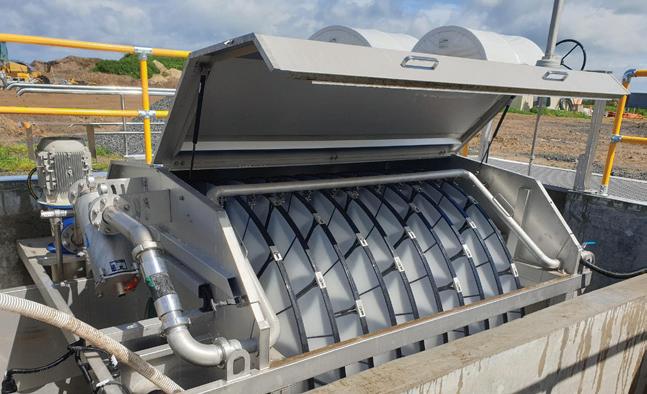
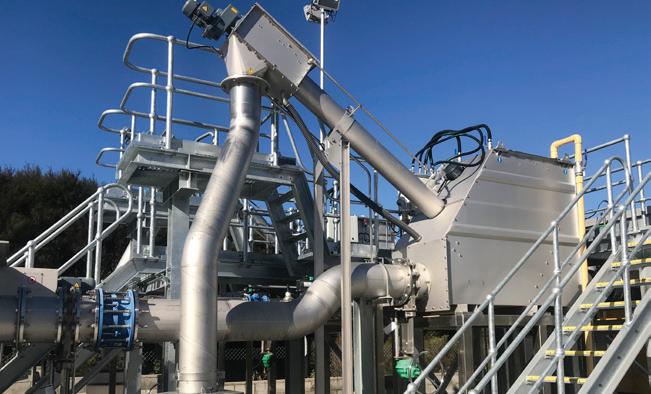
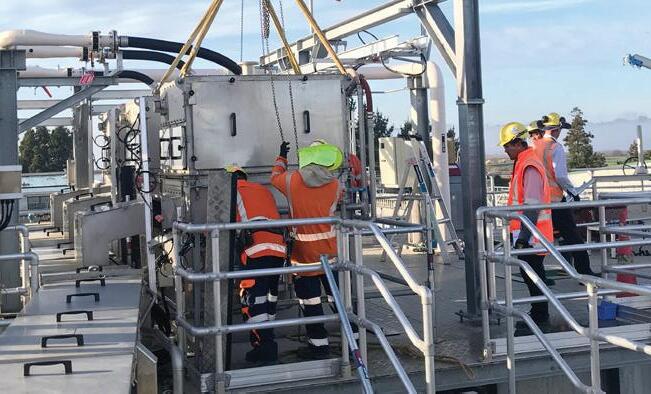

60 www.waternz.org.nz
brickhouse.co.nz WATER NEW ZEALAND COMMENT
One of the most fundamental biases in the context of this discussion, and when considering the influence of practitioners and leaders, is the framing effect. This occurs when people’s decisions are influenced by the way information is presented to them, influencing how people perceive and respond to the given information.
Imagine a risk event where available information is saturated with commentary around its rarity, consensus may be reached that this was abnormal, unprecedented, and, as such, once again reinforces dismissing the plausible.
When considering recency effects in recall, studies have shown that ‘over-representing’ the less frequently occurring categories can impact an individual’s availability heuristic –the tendency to assign a probability based on how easy that event comes to mind.
This is interesting in the context of flood risk and climate change, where frequencies of events are generally set to increase into the future.
This means that we as humans have a default bias toward the occurrence of future events, based on a relative less occurrence of them in the past. This bias results in individuals dismissing the possibility of event recurrence.
Can you change to help sustain a more resilient future?
This requirement for a shift in thinking also requires a willingness to challenge assumptions and embrace new ways of approaching problems.
One such concept is that of plausible futures, where risk events that could occur, and especially those events that have already occurred, are acknowledged with focus given to their consequences, rather than just their probability and their rarity.
Ultimately, the key to successful risk communication lies in finding the right balance between cognitive and emotional dimensions and leveraging the unique strengths of individuals and communities to think differently and build a more sustainable and resilient future.
Through this, we can better communicate in a BANI world, embracing human behaviour to support conceptualising plausible futures to aid risk reduction.
If we want to see change, perhaps it is time we each started to create change.
Read the full paper on the Water New Zealand website.
Why choose Pipetech?
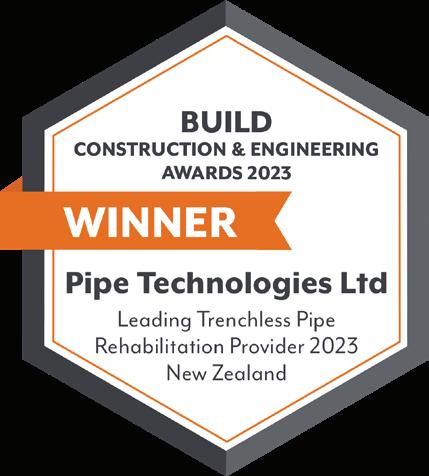
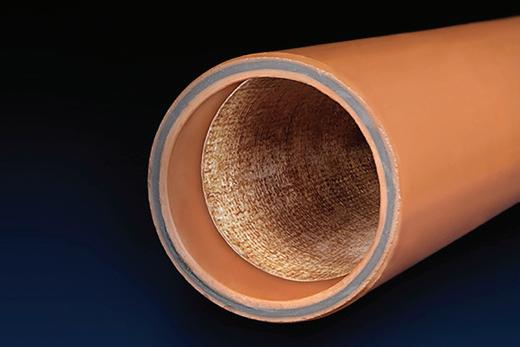

· Reduced cost compared to traditional excavation techniques
· Offer consulting and planning services to assist project planning and management

· Deal with residents/public professionally
· Quick installation to avoid inconvenience
· Communication with no surprises
· Quality of Liner/Patch/LJR guaranteed
New Zealand owned and operated since 2003




SEPTEMBER/OCTOBER 2023 WATER NEW ZEALAND 61 PANEL LOK MA NHOL E RE LINING SYST EM PipeTech is New Zealand’s leading installer of Fold & Form Liner T. 06 755 0309 E. office@pipetech.net.nz www.pipetech.net.nz
Imagine a risk event where available information is saturated with commentary around its rarity, consensus may be reached that this was abnormal...
Rebuilding Hawke’s Bay
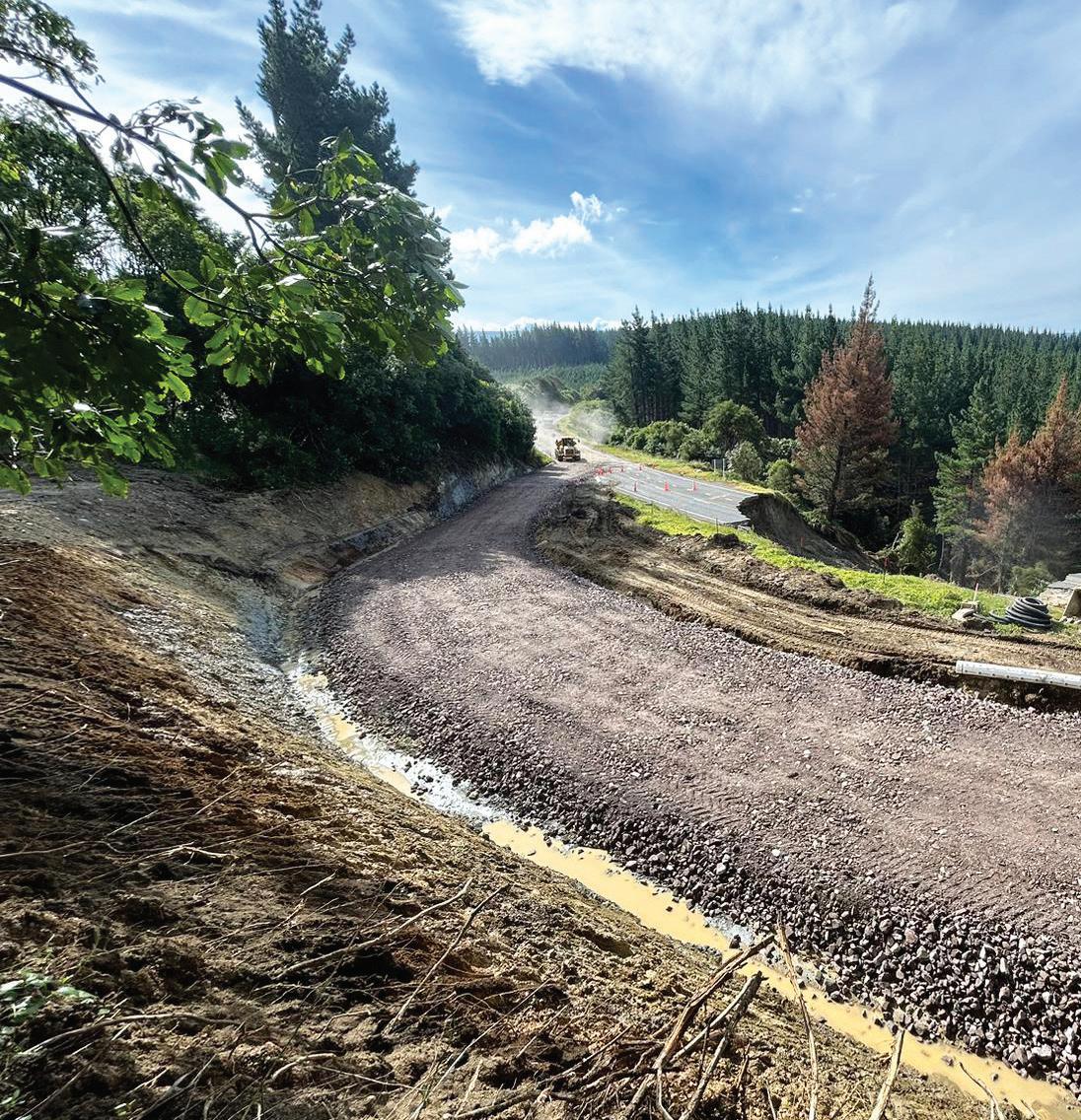

62 www.waternz.org.nz WATER NEW ZEALAND DISASTER RECOVERY
For the Beca team that call the Hastings office home, the morning of February 14 dawned looking a bit battered and sodden, but it appeared at first glance that we’d escaped any serious damage. The power was off. I texted the team, and everyone replied to say they were ok. Then we lost cell coverage.
The bubble lasted into the afternoon, when the news on the car radio gave us a glimpse of the full picture. When the power came on in parts of Hastings on Wednesday morning, a few of us turned up to the office in search of wifi. There were hundreds of messages waiting for us from colleagues and family.
With roads closed and power still out in Napier, it took another two days to reconnect with the rest of the team to offer respite, food, battery packs and power to charge devices.
It took a few days to come to terms with what had happened to our region, however, the team swung into gear quickly to support our communities. After an event such as this, connecting essential services and transport networks is vital to communities’ ability to recover.
The initial response phase moved very quickly, as the impact was assessed and workable methods for reconnecting infrastructure to communities were identified. In that early stage, the response focused on restoring some level of service, fast. A cross-industry response is the only practical way to do that. The bigger, more difficult questions of what, how and if we rebuild come later (or even for true preparedness, earlier).
A number of our team took up roles in Civil Defence centres, supporting councils as members of incident management teams. Very early on, it became clear how unique and important the role of local government is during a localised emergency such as this.
Communities vary in levels of preparedness and resilience to deal with emergency events, and this event certainly tested every bit of planning that is done at a local and regional level. Communities naturally turn to local government for support, and in our region we are lucky to have so many passionate staff and volunteers who have dug deep to support to support them.
The local incident management teams we supported were focused on restoring connections with communities by any means possible, with an early focus on getting communications into remote areas.
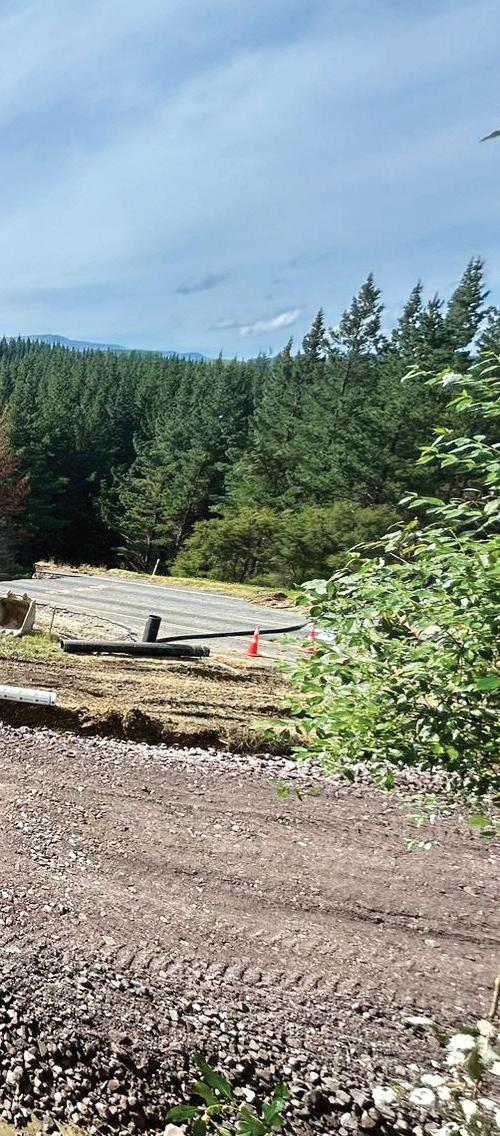
The communication void really tested us all, and this will be a significant lesson as we build greater resilience. We are so used to relying on social media and having information at our fingertips – we really felt it when this disappeared on the morning of 14 February.
During the recovery phase, there is an opportunity to think carefully about long-term resilience and the impact of the decisions we make now on generations to come, as well as insights that might assist improve our readiness in the future.
The impact on Māori communities
Te Matau-a-Māui is home to many Māori communities (census data states around 27 percent of the Hawke’s Bay population is Māori, versus 17 percent nationally).
Cyclone Gabrielle devastated so many marae. This is significant because the marae is the centre of Māori identity and well-being and holds communities together, much like a cultural infrastructure. My colleague John Blyth (who leads Te Ahi Tūtata, our Māori business team) says that when a marae is broken or closed, it affects the wairua – the spirit – of that community.
Rebuilding, or even relocation, may be a reality for some of these communities, but it has to be approached with great sensitivity. As John puts it, while some hapū may be prepared to relocate (indeed, some will have
SEPTEMBER/OCTOBER 2023 WATER NEW ZEALAND 63
Matt Sanders, Hawke’s Bay branch manager for Beca, writes of the recovery work underway in the region following Cyclone Gabrielle, and how we may be better prepared for such events in the future.
A bypass built at the Esk underslip between Glengarry and Te Pō hue, as part of work on State Highway 5 following Cyclone Gabrielle.
PHOTO COURTESY OF: WAKA KOTAHI NZTA
already explored relocation options), for others, the consideration of moving off or changing the relationship to whenua is deeply traumatic and takes considerable time.
Of course, for many Māori, this also has to be considered in the context of historic land loss and so it is critical that such conversations recognise the implications of processes that might be seen as fettering ownership rights and mana. All of this is even more difficult in the aftermath of such a devastating event – when people understandably want things to go back to ‘normal’.
The recovery from Cyclone Gabrielle presents an opportunity for Māori knowledge to be applied in decision making, and for a treaty-centric model to be employed. This means iwi must have leadership roles throughout the recovery phase.
Resilience

Cyclone Gabrielle has forced us to focus on risk and resilience, and has started inevitable conversations about how, where and if we build in areas susceptible to hazard.
A question raised by our group director – advisory, Amelia Linzey (who will be Beca’s group chief executive from October 1), is how we move our conversations away from ‘better’ necessarily meaning more investment and bigger infrastructure, to a situation where better is more about ‘better able to repair’, ‘quicker to reestablish’ or ‘safer for residents to support themselves’ following extreme events.
LOW CARBON CONCRETE

It’s now more important than ever to have resilient infrastructure assets to protect our communities against the elements.
Hynds can now contribute to both sides of the equation with it’s new low carbon range Hynds LC.
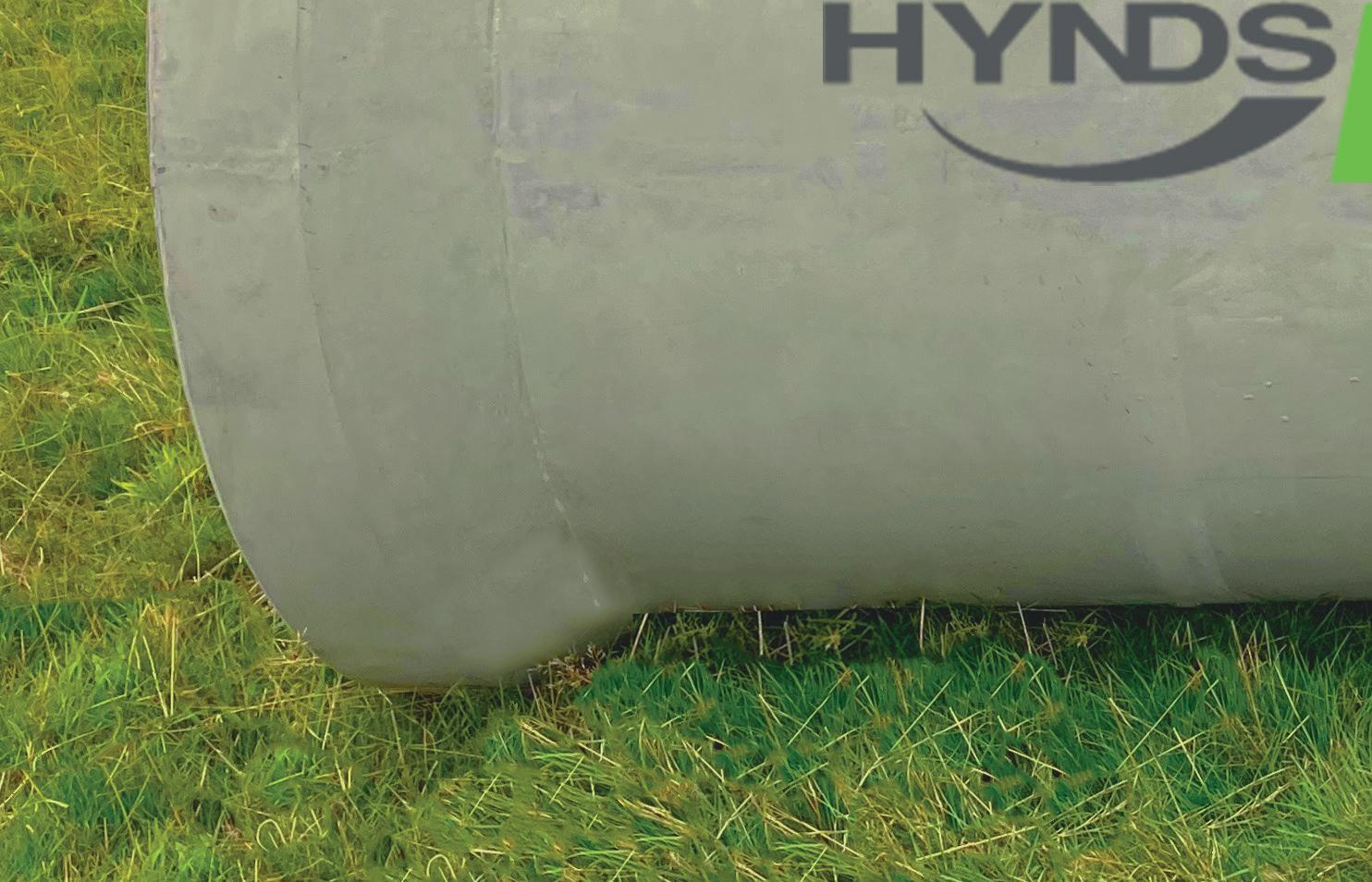
Consider the impacts for your next project Sustainable Resilient Low Carbon
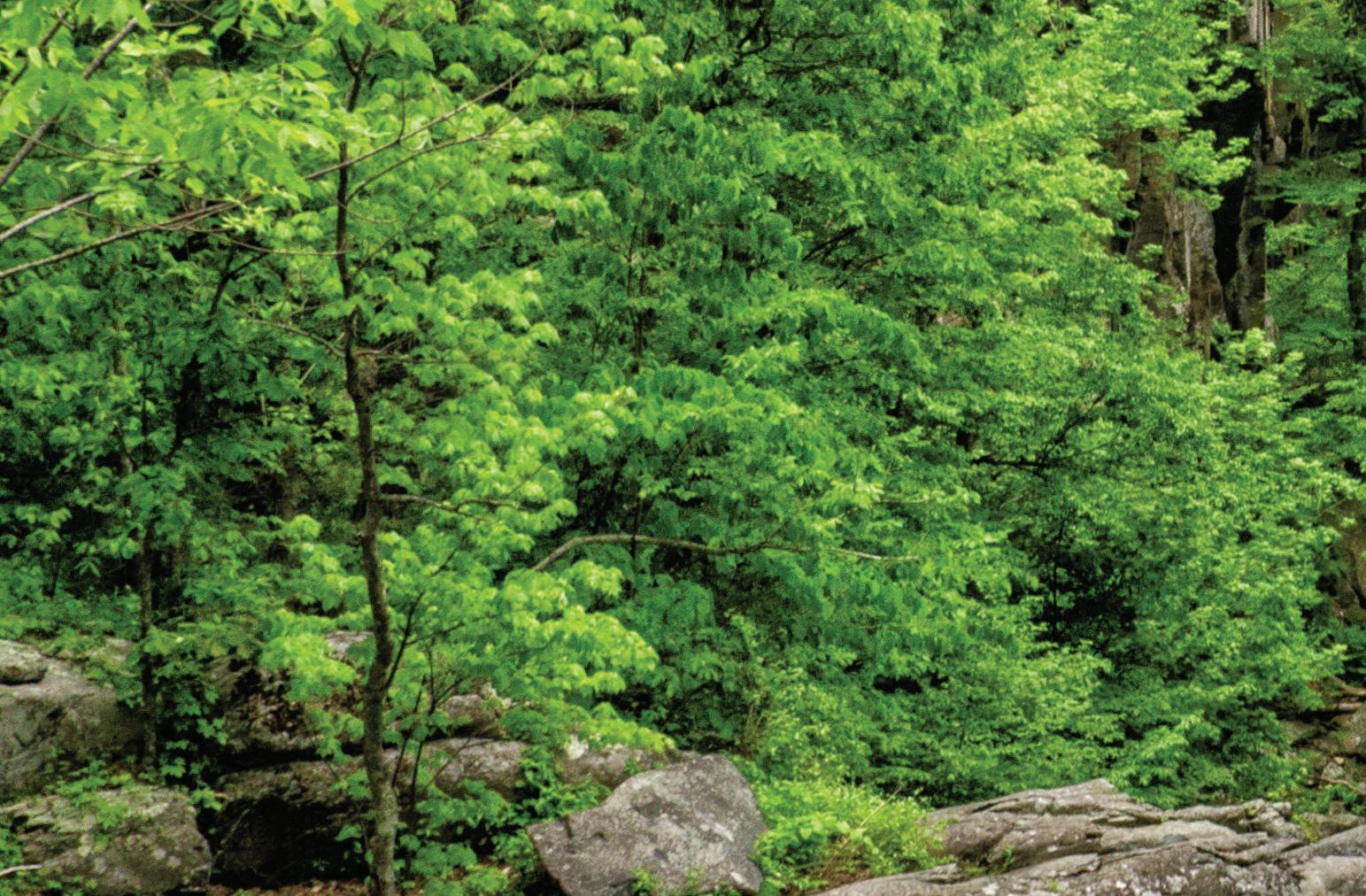

It is a difficult conversation to get our heads around, and Amelia notes the key is thinking about what and how we can rebuild in a way that empowers local communities to be better prepared for recovery.
As a conversation starter, she suggests this might include ‘building back worse’ (e.g. if it is a way that makes repair quicker for local residents).
Beca business director for climate resilience Cushla Loomb agrees that we need to think carefully about how we rebuild, including designing for flexibility and future relocatability of infrastructure so we don’t add to what is ‘at risk’ in the future.
These are conversations that take time and ideally they take place before events such as Cyclone Gabrielle.
Cushla notes that there are encouraging signs that this is being given the attention needed, including the recent request by the Minister for Climate Change for a Select Committee Inquiry into community-led retreat and adaptation funding, and the release of an issues and options paper by the Ministry for the Environment.
This paper considers what is needed to support community-led retreat as well as how a treaty-based adaptation system could work for iwi, hapū and Māori communities.
Importantly it discusses how lessons learned from past severe weather events might be considered for recoveries in the future and notes the importance of planning for recovery before a disaster occurs to enable adaptation.
64 www.waternz.org.nz
WATER NEW ZEALAND DISASTER RECOVERY
BACKFLOW PREVENTION
Flow with Confidence: Safeguarding Water Supply with NZ’s leading Backflow Prevention Solutions.
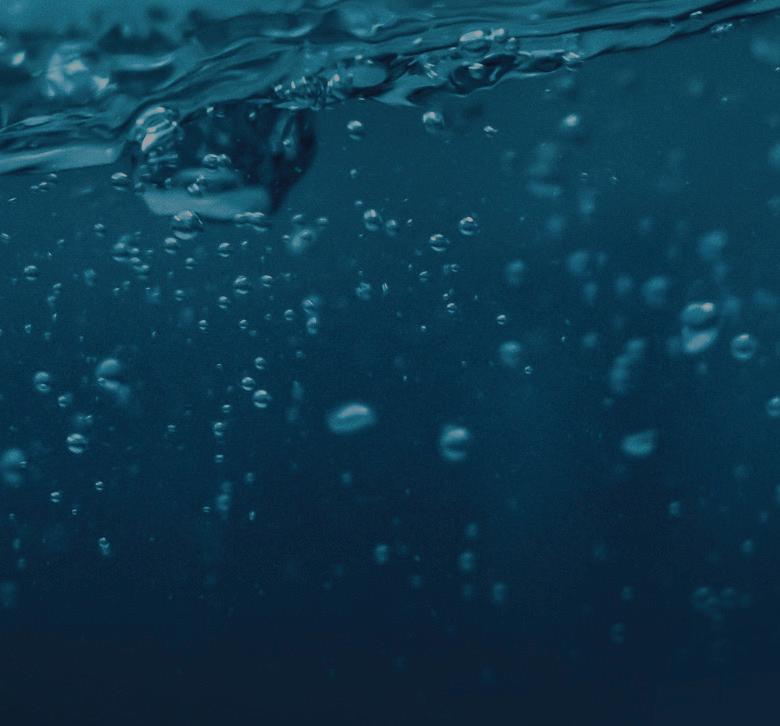

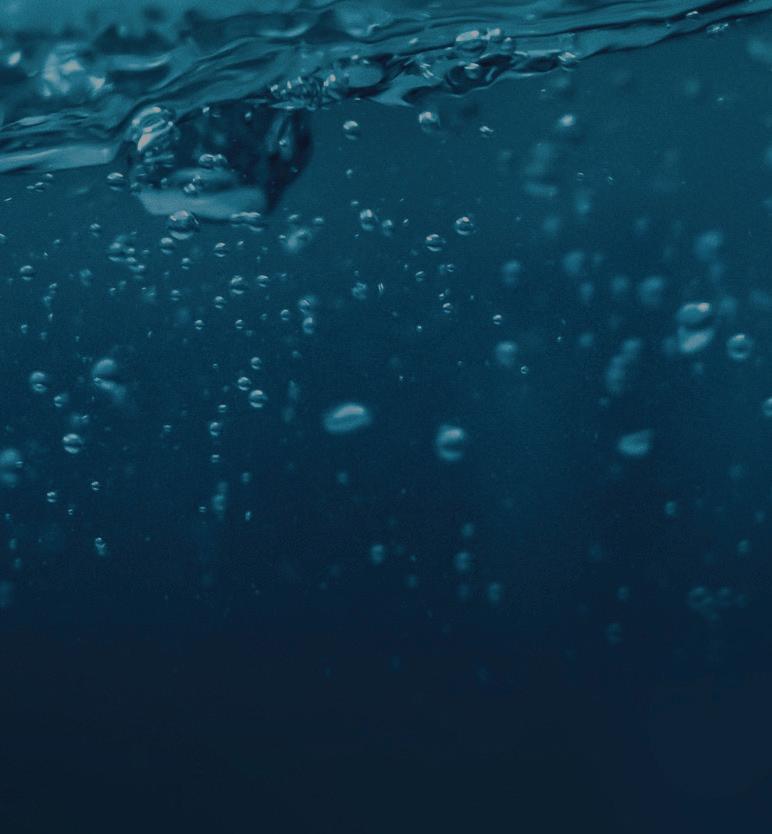
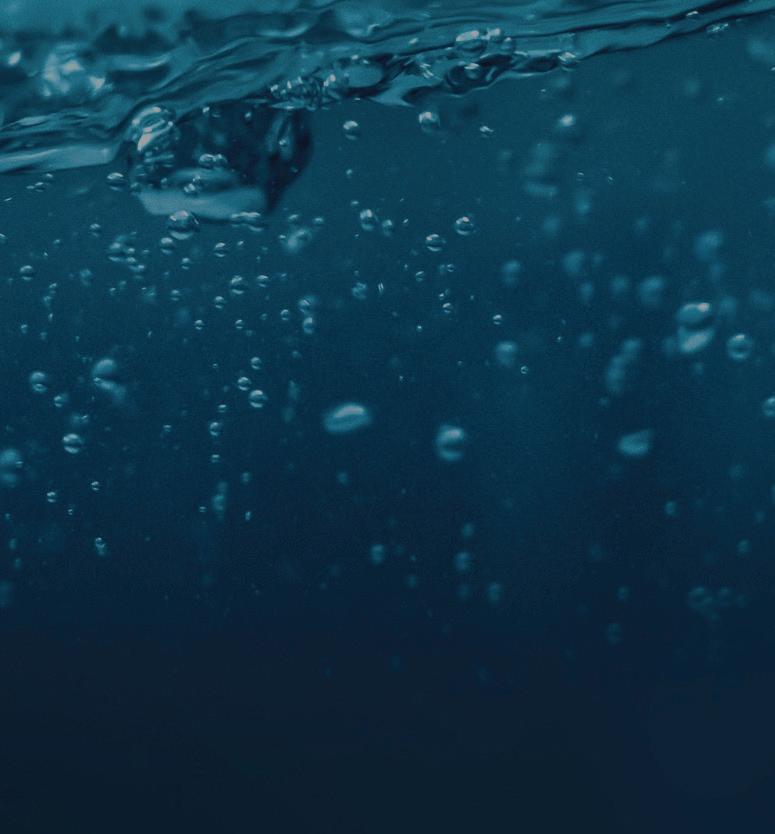

Control Valves

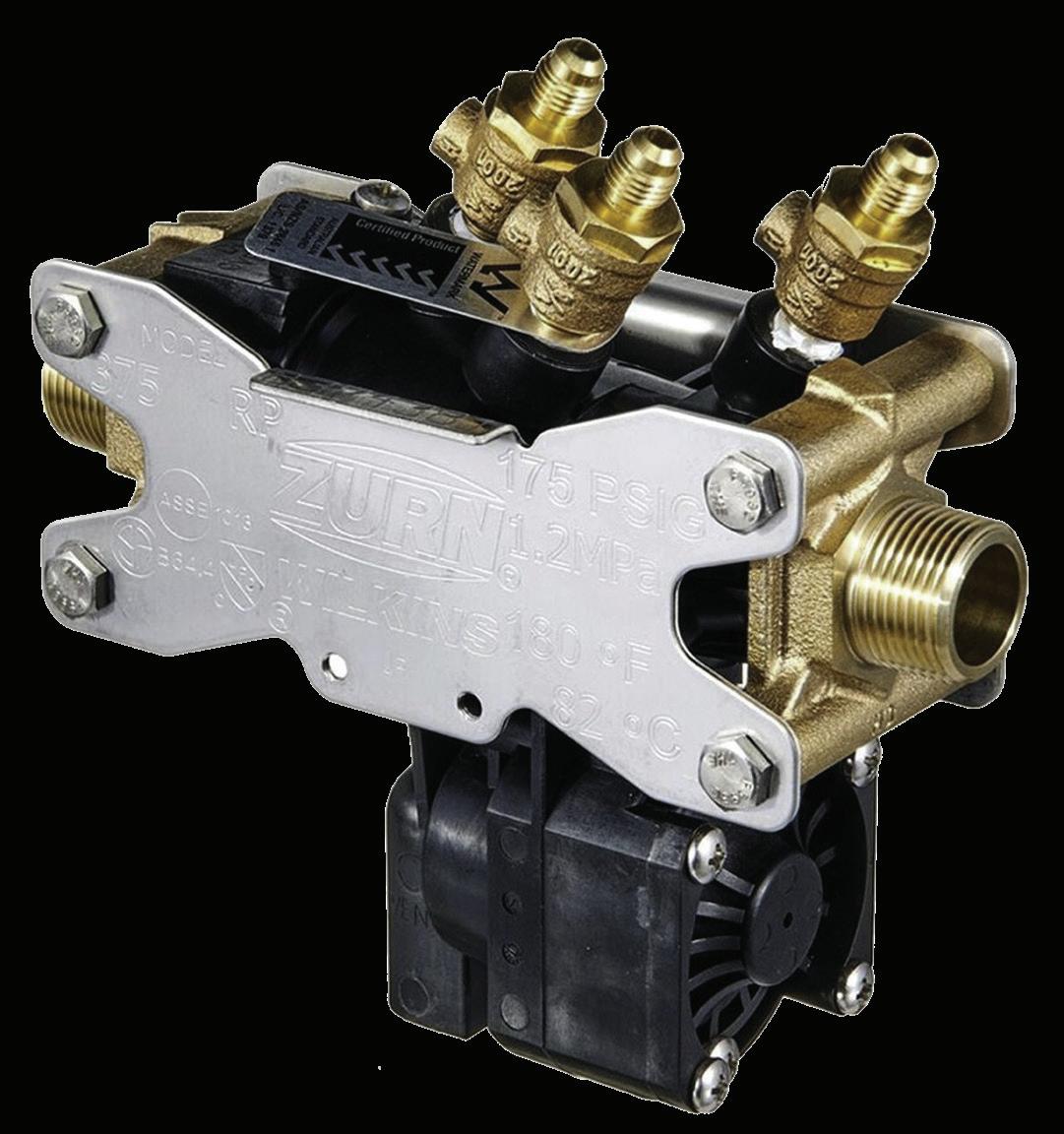
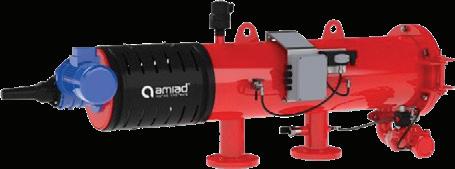
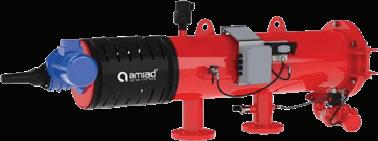
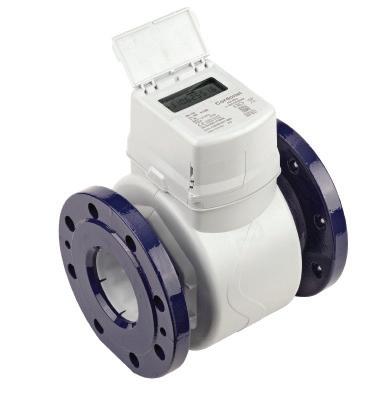
Smart Metering
Lead Free – Light Weight
AS/NZS 2845 - Watermark Certified
Fast and Simple Service Inline
Parts and Expert Technical Support
Extensive Track Record
Talk with us about your Backflow Prevention needs.
www.deeco.co.nz

Scan me for more info
Zurn Wilkins Model 375
DISCOVER THE OF WATER MANAGEMENT FUTURE
In water management, today’s decisions shape tomorrow’s reality. At Spark IoT, we recognise the critical role that technology plays in ensuring the vitality of our water resources for generations to come.
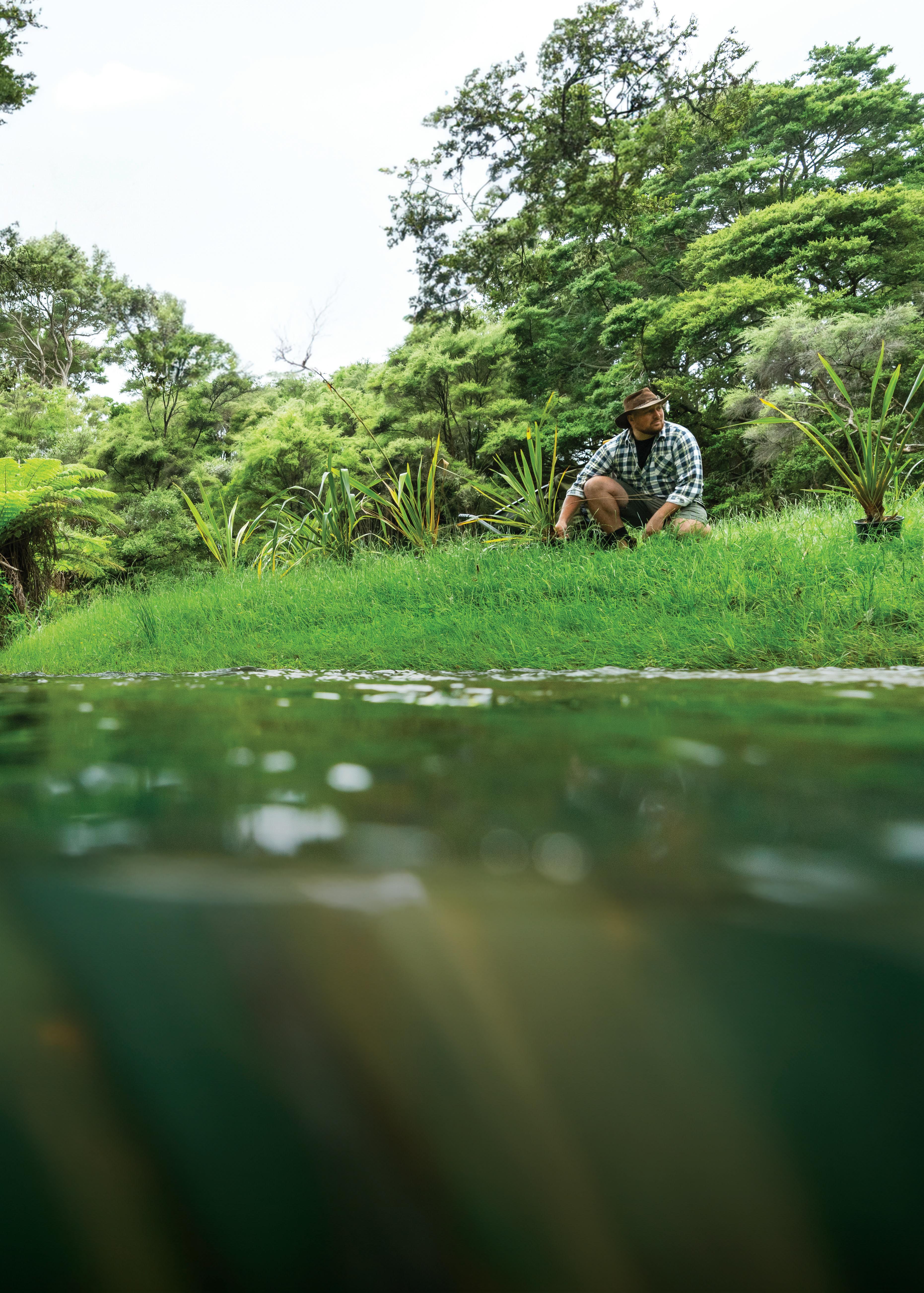
Discover what is possible with Spark IoT Chat to an IoT expert iot@spark.co.nz


Cyclone Gabrielle uncovers new secrets set in stone
Among the discoveries are two boulders with large vertebrae, potentially from enormous marine reptiles that lived over 80 million years ago.
When Cyclone Gabrielle brought devastation on Hawke’s Bay in February, streams and rivers deep in the forests of the region’s mountainous hinterland became raging torrents.

The pressure of millions of cubic metres of rainwater sluicing through the narrow valleys scoured riverbeds and overturned rocks the size of shopping-trolleys.
Recently, it was found that the storm revealed an untold number of previously undiscovered fossils, linking to our ancient past that might otherwise have remained hidden for eternity.
Many ‘new’ fossils were found in a single outing in late March.
Staff and volunteers from the Forest Lifeforce Restoration Trust made the discovery while assessing storm damage at a property in the Maungataniwha Native Forest in northern Hawkes Bay.
The fossils are contained within rocks in the disturbed bed of the Mangahouanga Stream. The ‘new’ fossils had lain covered since renowned palaeontologist Joan Wiffen and her team discovered New Zealand’s first dinosaur fossils there in 1975.

“It’s like a giant has walked down the stream-bed, kicking at rocks and boulders as if they were pebbles and turning everything over as he goes,” says the Trust’s forest manager Pete Shaw, an experienced fossil hunter. In 2019 Pete was awarded the Harold Wellman Prize by the Geoscience Society of New Zealand for his work on fossils in the Maungataniwha Native Forest.
The Mangahouanga Valley is famous among New Zealand geologists. The region consists of an extensive late Cretaceous sandstone unit, yielding a plethora of fossil marine reptiles and dinosaurs.
“If any one place is the epicentre of New Zealand palaeontology then Maungataniwha, and particularly the Mangahouanga Stream, is probably it,” Pete says.
For decades palaeontologists, geologists, fossil fossickers and trampers have traversed the Mangahouanga Valley, frequently
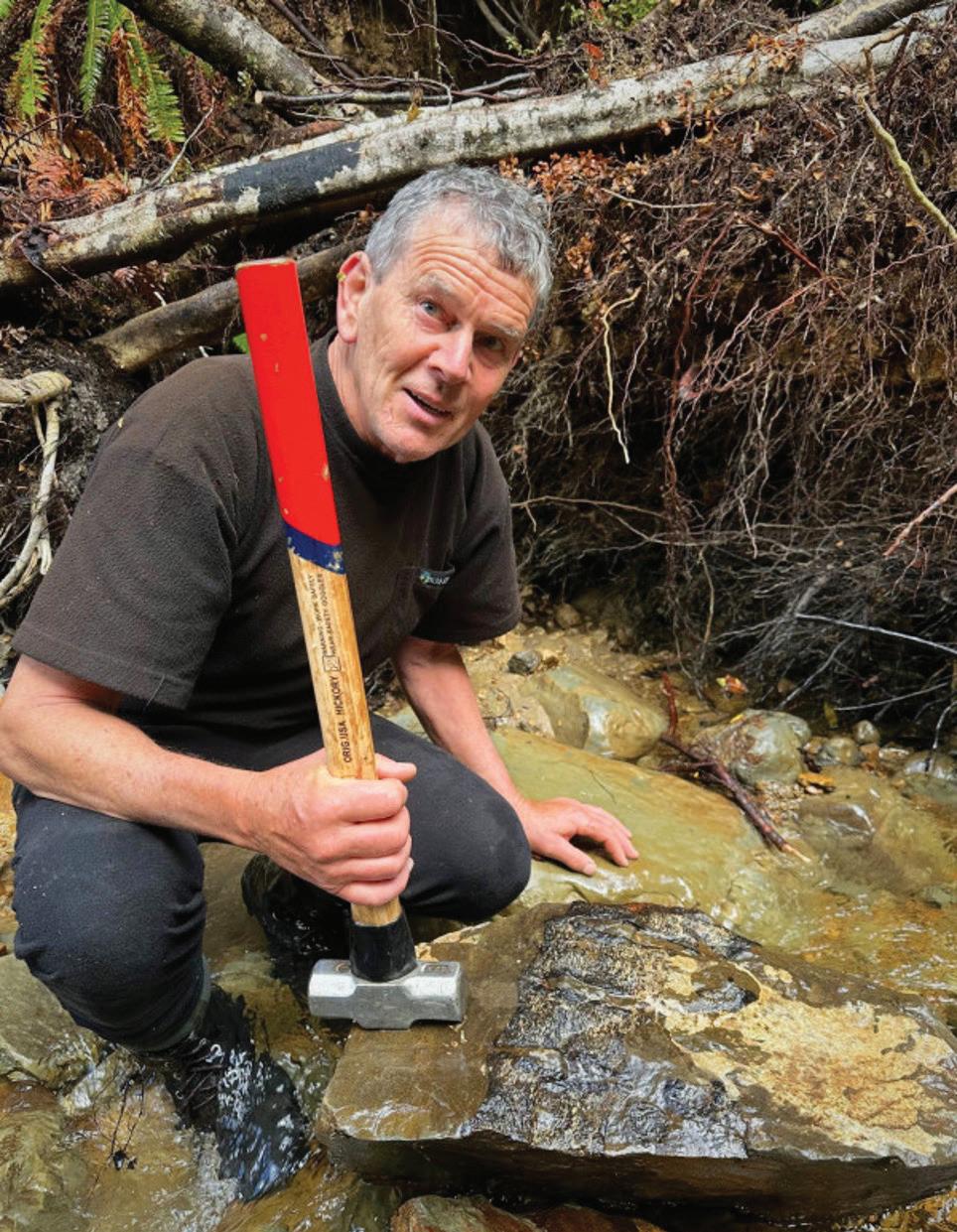
SEPTEMBER/OCTOBER 2023 WATER NEW ZEALAND 67 PALAEONTOLOGY WATER NEW ZEALAND
Roaring rivers that raged in Maungataniwha Native Forest in Hawke's Bay have revealed a number of previously undiscovered fossils.
Top right: Pete Shaw with one of the fossil-bearing rocks in the disturbed bed of the Mangahouanga Stream, revealed by Cylcone Gabrielle. Right: (Left) Articulated vertebrae likely from a large elasmosaur, one of the top predators that would have roamed our Cretaceous oceans, (Right) Articulated vertebrae which would have formed a part of the spine of an extinct marine reptile.
finding something of interest or significance. But never on the scale experienced on this single outing.
“Judging from what we found in just one morning, Gabrielle will contribute hugely to our collective knowledge about the creatures that called this place home in the depths of pre-history.”
Pete is now working with experts at GNS Science in Wellington to identify the finds from his team’s outing in March.
National Paleontological Collection manager Marianna Terezow has so far tentatively identified two fossil vertebrae as potentially from elasmosaurus, an enormous marine reptile (not technically a dinosaur, but the marine equivalent that existed at the same time) that could reach up to 14 metres long; although much of this would have comprised its long, snake-like neck.
Other vertebrae discovered on the day could potentially have come from a mosasaur.
While mosasaur fossils have been discovered before in New Zealand, they are not particularly common. The first discoveries were in the Waipara, followed by others at Shag Point in Otago and Haumuri Bluff in southern Marlborough.
Fossilised mosasaur teeth were among the many discoveries made by Joan Wiffen in the Mangahouanga Stream and, in 2015, Pete Shaw discovered part of a mosasaur jaw with giant, wellpreserved teeth.
GNS Science has a long-standing relationship with the Forest Lifeforce Restoration Trust. Over the past decade its palaeontologists have worked closely with Pete, who leads several conservation initiatives in the area on behalf of the Trust.
Like similar finds from the area, the fossils are stored at Waiau
Camp in the Maungataniwha Native Forest by the Forest Lifeforce Restoration Trust, so they remain on the same whenua where they were found.

The aptly named Maungataniwha sandstone, which is the main rock unit in the area, still has many interesting stories to tell,” says Marianna.
“Each new fossil find is like a page out of that story book and it is great to have knowledgeable and skilled people like Pete Shaw and his colleagues making these new discoveries.”

Article provided by GNS Science.

68 www.waternz.org.nz WATER NEW ZEALAND PALAEONTOLOGY
Typical landscape within the rugged and remote Mangahouanga Valley, near Middle Beach. Julian Thomson and Kyle Bland on the hunt for Mesozoic reptile fossils.
Each new fossil find is like a page out of a story book.
PHOTO COURTESY OF: MARIANNA TEREZOW.
Cycles of change

Shaping

ghd.com
a resilient and sustainable future, together.
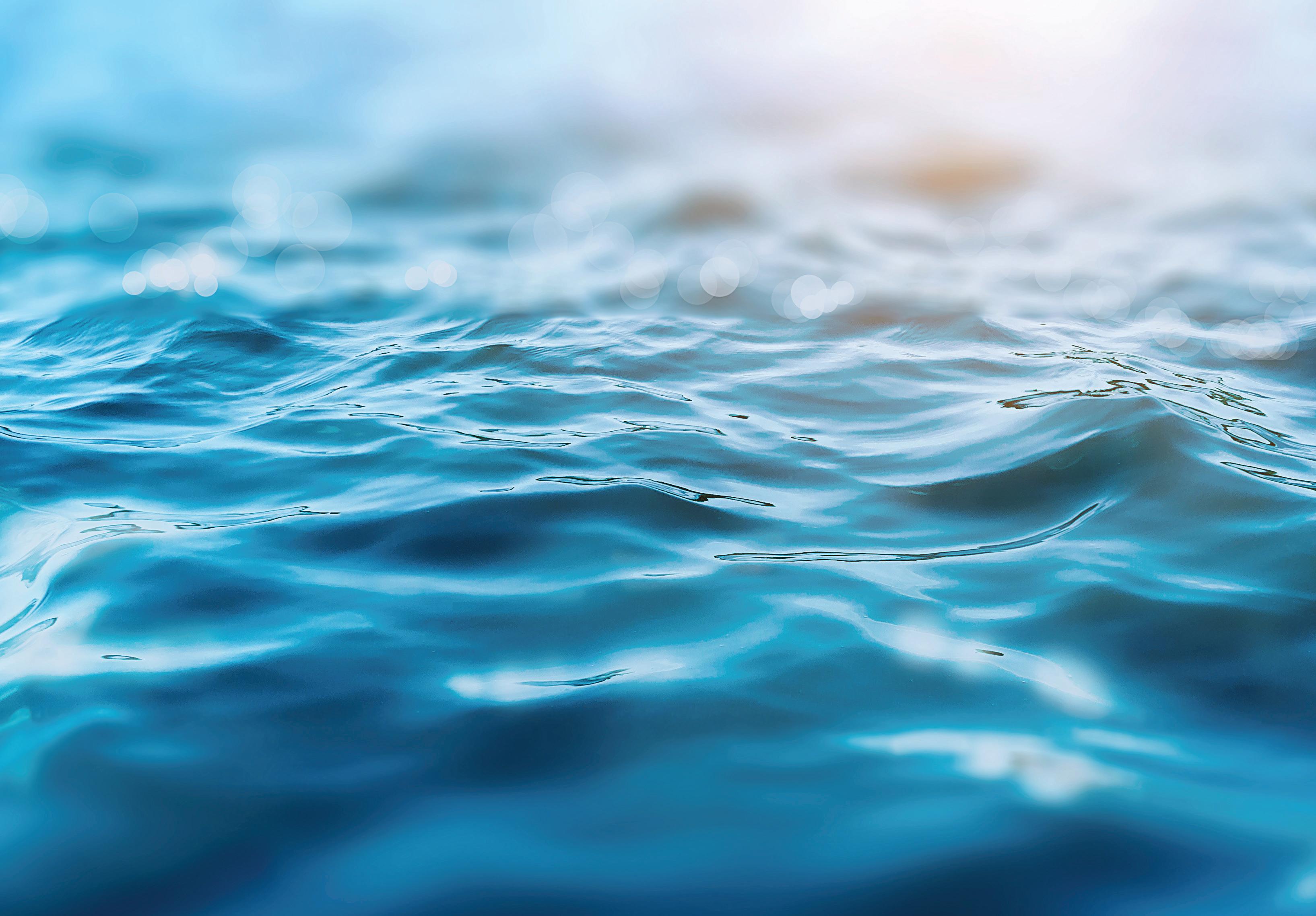

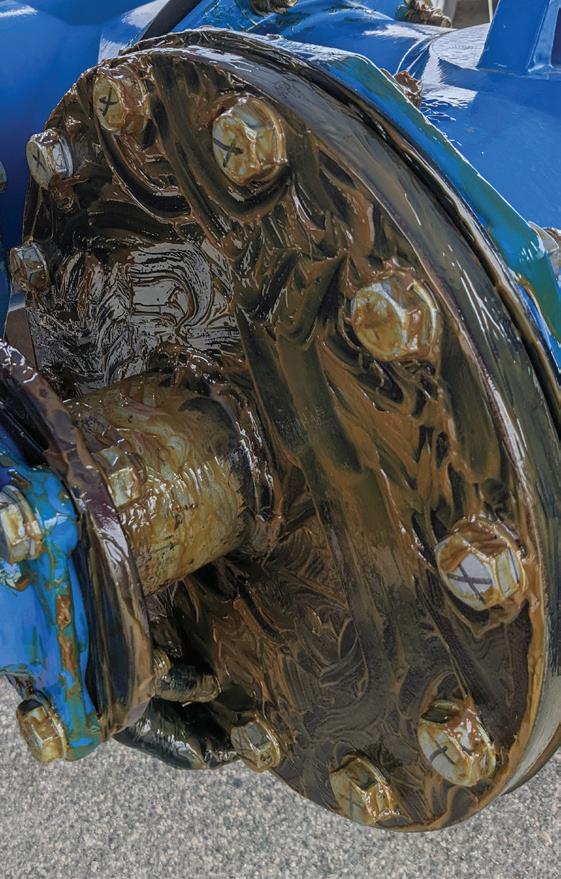
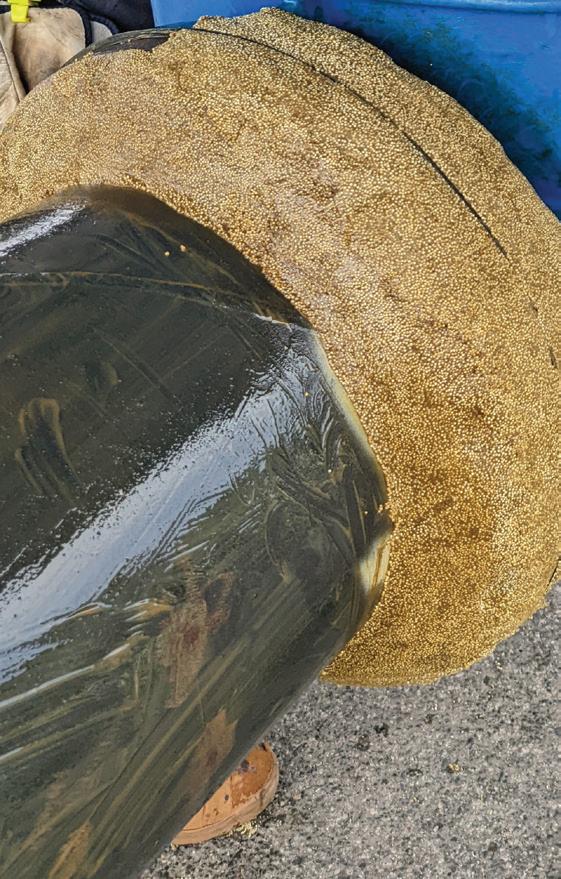
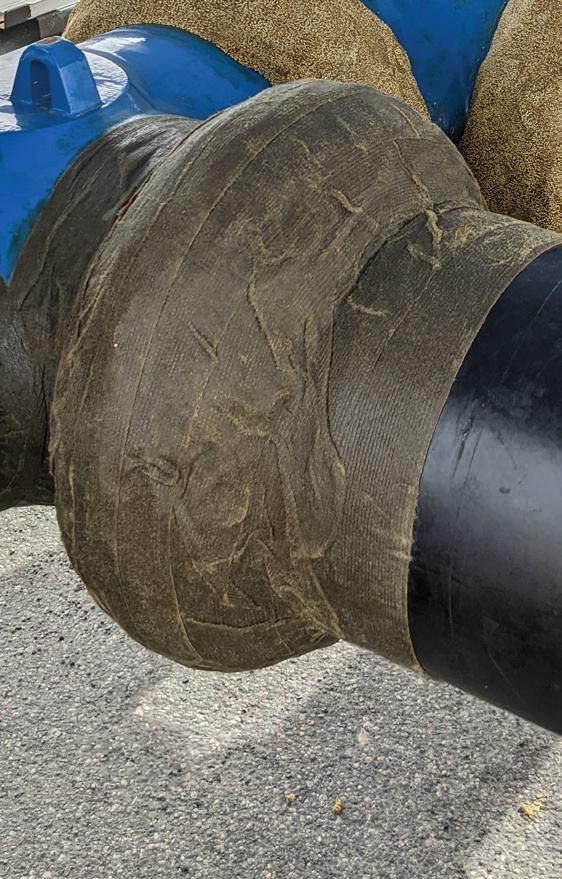
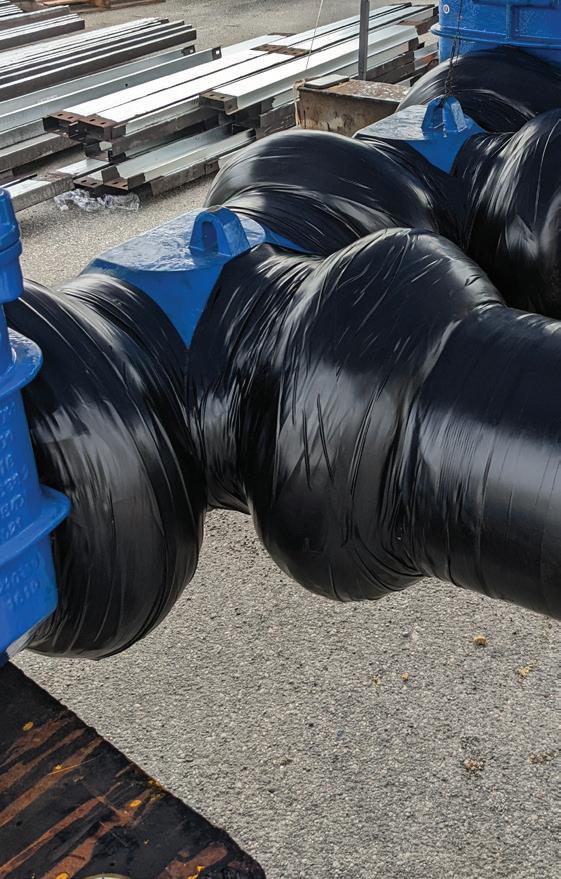



70 www.waternz.org.nz 0800 735 000 www.shuk.co.nz Principle Distributor of Denso Products in New Zealand. Water New Zealand Conference & EXPO 17-19 October 2023 Takina, Te Whanganui-a-Tara Wellington CORROSION PREVENTION
Look out for us on Stand 24 @
Long-term Pipeline Corrosion Protection Through 4-Step Process.
Sponge cities model for addressing urban flood risk
In a new research report, the Helen Clark Foundation and WSP are recommending a series of actions to respond to the escalating impacts of climate change-induced extreme rainfall events
These include excluding vulnerable flood-prone areas from development and incorporating mātauraunga Māori knowledge to minimise urban flood risk.
Report author Kali Mercier says sponge city approaches to stormwater management must be urgently explored to help fortify the country against climate impacts and reduce urban flood risk. While creating spongier places and spaces on a large scale across many towns and cities will cost, not doing it will ultimately be much more expensive.
“We really do not have any other alternative if we want to avoid loss of life and property in the long term.”
Kali says, in many places, our current approach is falling short.
“With climate change predictions showing increased extreme rainfall, we must act urgently, decisively and strategically to address urban flooding. Our aging stormwater infrastructure is increasingly unable to cope, now, with deluges that are all-too-frequently causing catastrophic damage – let alone five, 10, or 20 years into our shared climate future.
“Catastrophic flooding events in Nelson/Marlborough in August 2022, and in Auckland in January, highlight the urgent need to better adapt our urban areas to these inevitable changes. The development status quo of covering every available inch of surface with concrete isn’t helping. Building across the natural flow path of water creates larger issues.
“We’re losing valuable green spaces which make our cities more absorbent. When the heavens open, the water has to go somewhere. We’ve created the problem by building in the wrong places, such as the bottom of floodplains, or over existing water flow paths.”
The report finds that, when sponge city or ‘nature based’ approaches are deployed alongside conventional engineering solutions and stormwater infrastructure upgrades, they’re effective at supporting and enhancing community resilience.
Inspired by ancient Chinese farming techniques, the concept of sponge cities promotes working with water rather than against it, by ‘daylighting’ streams, reducing impervious surfaces, enhancing green spaces, and implementing green infrastructure.
With plenty of blue-green natural features, sponge cities allow water to flux and be absorbed, stored, and slowly released into the environment – mimicking natural hydrological processes. They’ve also been shown to benefit biodiversity and human wellbeing by creating new habitats and amenities in urban areas.

International evidence shows that sponge city approaches can be one of the best proactive measures towns and cities can take to minimise future flood risk.
WSP technical principal for water Liam Foster says using nature-based and sponge city solutions to create space for the waterways to slow down, detain and retain water is a clear and immediate action we can, and should, take.
“With a strong focus on the natural flow of water and ecosystems’ ability to absorb water, mātauranga Māori knowledge will play a vital role in our path to a spongier future.
“For this to work as part of a truly national stormwater solution for our urban areas, everybody from local and central government agencies, private industry and even individual homeowners need to be engaged.
“The report emphasises several crucial
actions, such as coordinated planning at national and local levels to maintain space around flow paths and waterways, as well as initiating retrofitting of green infrastructure as a pragmatic starting point for all towns. Vulnerable floodprone areas should also be excluded from new development.
“Let’s get behind this report and work together to kickstart a future ready conversation around making space for water – one that underpins why a sponge cities approach is desperately needed to help build a climate-resilient urban future.”
Report recommendations include:
Retrofit our cities and towns to become sponge cities to help us survive and thrive despite increasing rainfall associated with climate change. Take a holistic, nature-based approach to ensure we also capture benefits for biodiversity and human health and wellbeing.
Act urgently and decisively, and plan strategically for the long-term at the national, regional, and local levels. Name and prioritise nature-based sponge city approaches as a key climate adaptation approach for the country.
Develop a clear vision for a sponge cities model that draws on our strengths and unique context, such as mātauranga Māori, and community-led nature-based initiatives.
Develop and agree a national funding approach that is coordinated and comprehensive.
Incentivise and/or regulate for a range of ‘spongy’ solutions on public and private land, and in new developments.
To read the full report, go to https:// rb.gy/4lek9
SPONGE CITIES WATER NEW ZEALAND
Creating ‘sponge cities’ to cope with more rainfall needn’t cost billions – but we have to start now
By Timothy Welch, senior
Tune into news from about any part of the planet, and there will likely be a headline about extreme weather. While these stories will be specific to the location, they all tend to include the amplifying effects of climate change.
This includes the wildfire devastation on the island of Maui in Hawaii, where rising temperatures have dried vegetation and made the risk that much greater. In Italy, summer temperatures hit an all-time high one week, followed by massive hail storms and flooding the next.
Flooding in Slovenia recently left three people dead and caused an estimated €500 million in damage. At the same time, rainfall in Beijing has exceeded a 140-year record, causing wide-scale flooding and leaving 21 dead.
These northern hemisphere summer events mirror what happened last summer in Auckland, classified as a one-in-200year event, and elsewhere in the North Island. So far this year, rainfall at Auckland Airport has surpassed all records dating back to 1964.
Given more rainfall is one of the likeliest symptoms of a changing climate, the new report from the Helen Clark Foundation and WSP – Sponge Cities: Can they help us survive more intense rainfall? – is a timely (and sobering) reminder of the urgency of the challenge.
Pipe dreams
The ‘sponge city’ concept is gaining traction as a way to mitigate extreme weather, save lives and even make cities more pleasant places to live.
This is particularly important when existing urban stormwater infrastructure is often already aging and inadequate. Auckland has even been cutting spending on critical stormwater repairs for at least the past two years.
Politically at least, this isn’t surprising. Stormwater infrastructure, as it is currently
lecturer in urban planning, University of Auckland

built and planned, is costly to develop and maintain. As the Helen Clark Foundation report makes clear, New Zealand’s pipes simply “were not designed for the huge volumes they will have to manage with rising seas and increasing extreme rainfall events”.
The country’s current combined stormwater infrastructure involves a 17,000 kilometre pipe network – enough to span the length of the country 10 times. The cost of upgrading the entire water system, which encompasses stormwater, could reach $180 billion.
This contrasts starkly with the $1.5 billion councils now spend annually on water pipes. The report makes clear that implementing sponge city principles won’t wholly solve flooding, but it can significantly reduce flood risks.
Trees and green spaces
The real bonus, though, lies in the potential for sponge city design to reduce dependence on expensive and high-maintenance infrastructure.
There are already examples in Auckland’s Hobsonville Point and Northcote. Both communities have incorporated green infrastructure, such as floodable parks and planted wetlands, which kept nearby homes from flooding.
But, the report’s recommendations are at odds with some of the current political rhetoric around land use policy – in particular ‘greenfields’ development that encourages urban sprawl.
The report urges that cities be built upwards rather than outwards, and pushes back on residential infill development encouraged by the Medium Density Residential Standards.
Citing a recent report on green space from the Parliamentary Commissioner for the Environment, the Helen Clark Foundation report argues for the preservation of urban green spaces – like backyards – as part of the flood mitigation approach.
Preserving tree cover is another urgent
priority. Trees help absorb rainfall, reduce erosion and provide essential shade and cooling in urban areas – counteracting the dangerous urban ‘heat island’ effect.
Citing data from Global Forest Watch, the report states: Auckland has lost as much as 19 percent of its tree cover in the past 20 years, Dunedin a staggering 24 percent, Greater Wellington around 11 percent, and Christchurch 13 percent.
Incentives for homeowners
Making New Zealand more resilient to extreme weather, the report says, need not break the bank.
It recommends raising the national minimum standards governing the percentage of the total area of new developments that must be left unsealed. This would ensure the implementation of sponge city concepts, and see buildings clustered to maximise preserved green space.
The government should also require local councils to plan for and provide public green spaces, and to develop longterm sponge city plans – just as they do for other types of critical infrastructure.
Neighbourhoods could be retrofitted to include green roofs, permeable pavements and unsealed car parks. Land use and zoning could also encourage more vertical development, rather than sprawl or infill housing.
The government could also provide incentives and education for homeowners to encourage minimising sealed surfaces, unblocking stormwater flow paths, and replacing lawns with native plants and rain gardens.
More extreme weather and intense rainfall is a matter of when, not if. As the Helen Clark Foundation report makes clear, spending future billions is less of a priority than acting urgently now.
This article first appeared in The Conversation.
72 www.waternz.org.nz WATER NEW ZEALAND COMMENT
With over 25 years experience, Tasman Tanks have the most comprehensive range of engineered bolted storage tank solutions across New Zealand Our product range is not just limited to coated tanks, as Tasman have a full range of liner, non liner, rectangular and agricultural tanks available in a wide range of materials, designed and engineered for New Zealand conditions
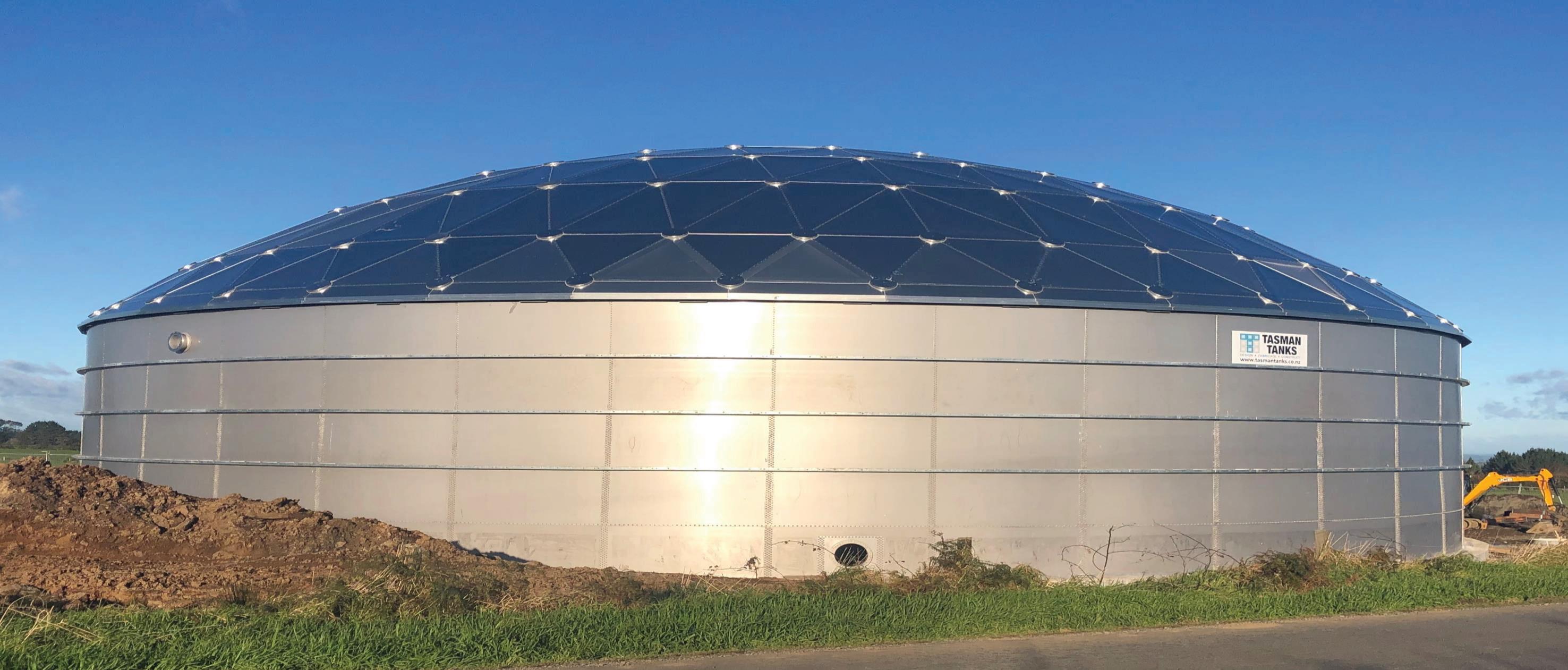
• TS600 Round Liner Tanks up to 10ML in Galvanized Steel and Stainless Steel
• TS700
• TS250
Round Non Liner Tanks up to 20ML in factor y coated Glass and FBE, Stainless Steel, Duplex Stainless Steel and Galvanized Steel
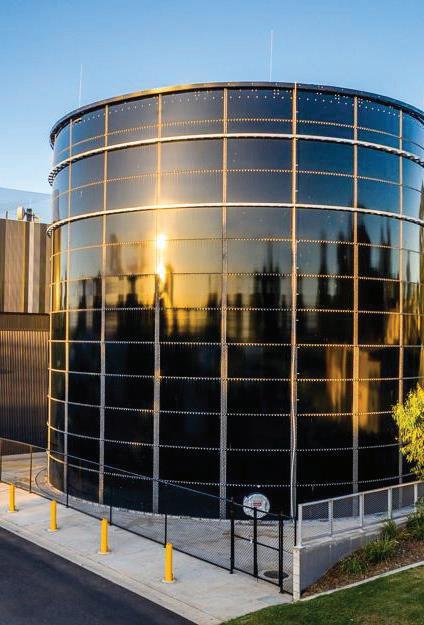
Rectangular Non Liner Tanks – Galvanized Steel
• TS190 Rectangular Non Liner Tanks – Stainless Steel
• AG Tanks Galvanized Steel Dair y Effluent, Agricultural and Hor ticulture Tanks

No concrete foundations required for AG Tanks

• SMR Ser vice Maintenance and Repair ser vices
Contact Tasman Tanks New Zealand: Free Call: 0800 826 526
E: salesnz@tasmantanks.co.nz W: www.tasmantanks.co.nz


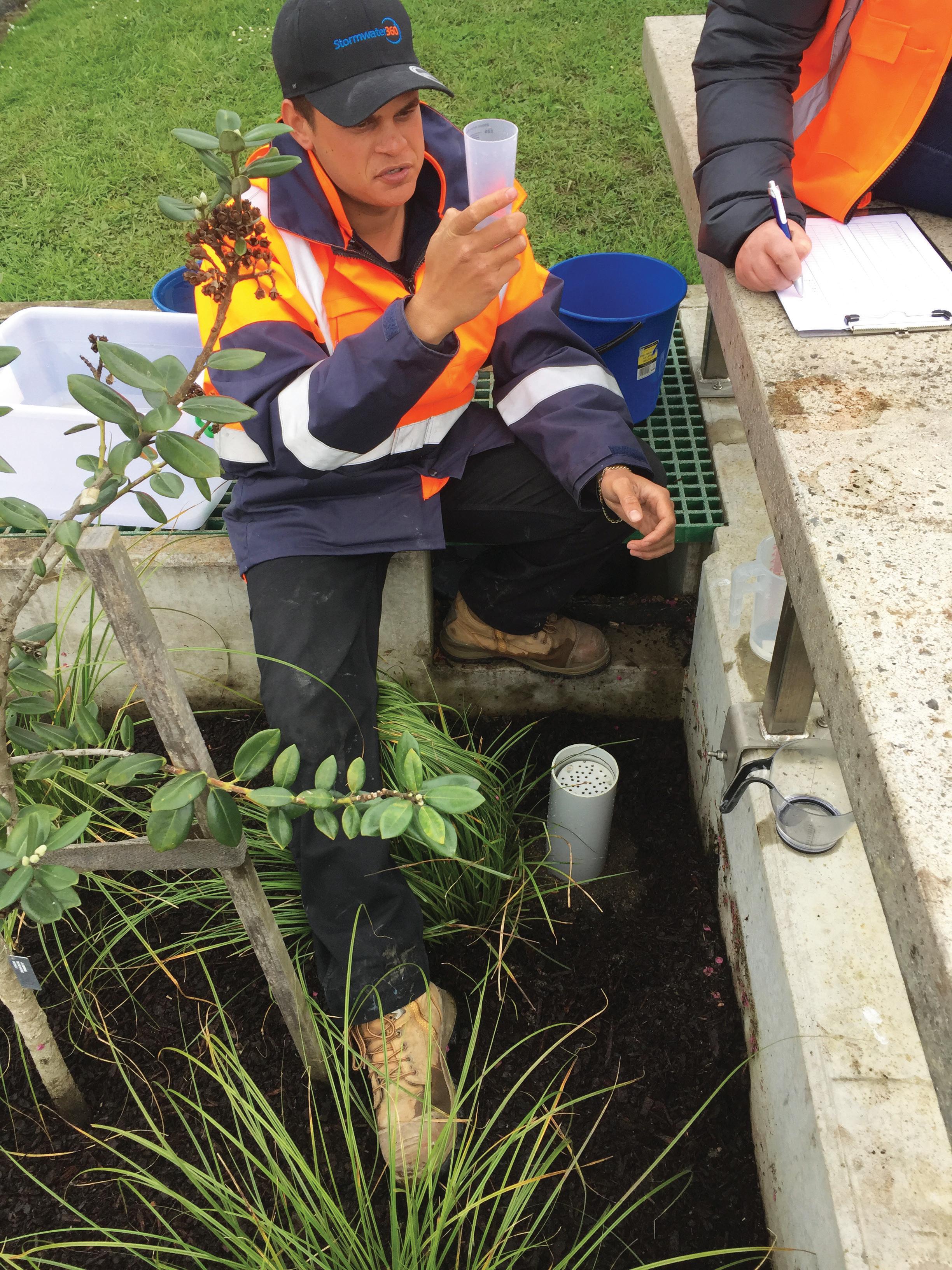
74 www.waternz.org.nz WATER NEW ZEALAND STORMWATER
Evaluating stormwater manufactured treatment devices –
developing NZ protocols
While emphasising the need for innovative solutions to protect Te Mana o te Wai and counteract the effects of ever-increasing pressures on freshwater, with an impressive body of work already having been undertaken elsewhere, it makes sense to adopt an existing international protocol for the evaluation of stormwater manufactured treatment devices (MTDs), with guidance on how to apply this protocol to New Zealand’s regions.
In a technical article released in June, Stormwater360 identified three protocols of particular interest and recommended regulatory bodies carry out further analysis to draw on the most applicable components for use in their catchments to ensure the best outcomes for the local receiving environments of Te Mana o te Wai.
Stormwater is highly variable and therefore the performance of stormwater systems and MTDs is also highly variable. For instance, stormwater treatment system performance can be affected by factors such as influent concentration, particle size distribution (PSD), contaminant speciation, topography, geology and rainfall events, and sampling methodologies can also affect results.
Existing protocols
Various countries have developed their own protocols to locally approve MTDs in recent years.
For example, TAPE (Technology Assessment Protocol –Ecology) has been developed in the USA by the Washington Department of Ecology and is an extensive process, which allows for applicants to have different levels of approval throughout the stages of field testing.
The New Jersey Department of Environmental Protection now prescribes the NJCAT (New Jersey Corporation for Advanced Technology) protocol, but originally used the Technology Acceptance Reciprocity Protocol (TARP) which was dropped in favour of laboratory data, with MTDs only being accepted as pretreatment to green infrastructure.
Australia’s Stormwater Quality Improvement Device Evaluation Protocol [SQIDEP] is similar to the original TARP, but its parameters do not include performance requirements, and it is not intended to address hydraulic performance characteristics or laboratory testing practices.

Canada uses Environmental Testing Verification [ETV], the UK has a British Water Testing Protocol, and Germany has also developed a protocol.
The original TARP protocol – a good example of field protocol and its evolution – did not prescribe procedures or concentrations; instead recommending appropriate pathways and best practice procedures in partnership with eight states that allowed for jurisdictions to choose parameters most applicable to their region.
In 2009 it was updated to provide more robust requirements in terms of total suspended solids (TSS) influent concentrations, TSS removal and PSD and hydraulic performance. Influent and effluent concentrations remain unprescribed for any other parameters.
SEPTEMBER/OCTOBER 2023 WATER NEW ZEALAND 75
With the National Code of Practice for the Three Waters Reform under development, the time is ripe for the development of a national standard for evaluating innovative stormwater technologies. By Mike Hannah and Julia Watson.
Left: A technician checks the remaining volume after carrying out a single ring infiltration test. Above: Setting up monitoring equipment at an MTD field testing site in Auckland.
Comparison of international protocols
Some jurisdictions require field testing only, some require lab testing only, and some require both laboratory and field testing. Auckland Council requires only field testing and accepts MTDs field certified under NJDEP (TARP), TAPE and more recently, SQIDEP.

There are several key differences between these protocols, which need to be weighed against a number of key factors in approving MTDs for use in New Zealand, including particle size distribution requirements, allowable TSS influent concentration bands and performance goals and hydraulic, operation and maintenance requirements.
Particle Size Distribution requirements

There are significant differences between the three protocols regarding PSD requirements. Optional PSD testing potentially allows misinformation or manipulation of datasets where claimants may, intentionally or unintentionally, set up a testing
site where there is coarse sediment. Because this is easy to remove, it may result in an overestimate of device performance. This can be countered by considering the PSD of the verified study against the PSD of the jurisdiction accepting verification (as is done in TAPE).
Allowable TSS influent concentration bands and performance goals
Influent concentrations can lead to a higher performance, but not necessarily a better outcome for the environment. The range of allowable TSS influent concentration is quite wide under SQIDEP and there is no defined performance goal under either SQIDEP or TARP – but it is essential Influent and effluent TSS concentrations are reported and are consistent across storm events.
In New Zealand, a database such as NIWA’s URQIS could be a guide for TSS influent concentrations for each jurisdiction, but a more robust approach such as that prescribed in TAPE could be appropriate to help ensure consistency in MTD performance.
76 www.waternz.org.nz
WATER NEW ZEALAND STORMWATER
Heavy metal contaminant influent concentration and performance goals






SQIDEP does not address heavy metals while TARP suggests additional testing parameters (but this is not a requirement and concentrations are not prescribed). TAPE is the most robust, considering both total and dissolved heavy metals to measure MTD performance.
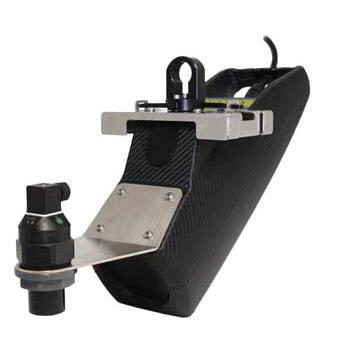
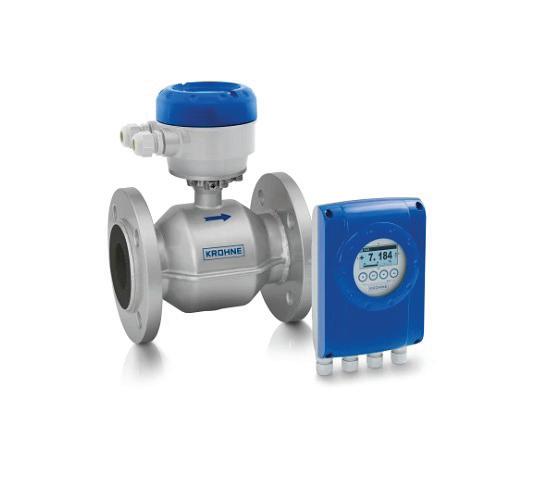

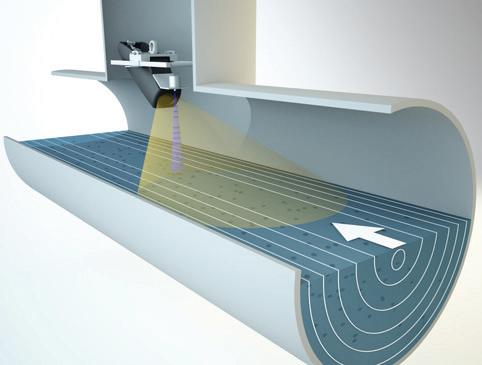
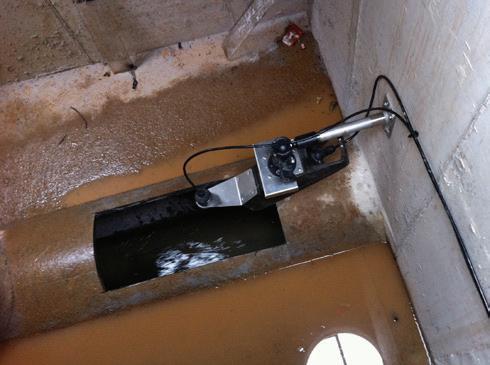
Heavy metals, in particular zinc, are an issue throughout New Zealand and the RMA requires an assessment of all effects. In addition, some emphasis should be given to the contaminants of concern for each jurisdiction.


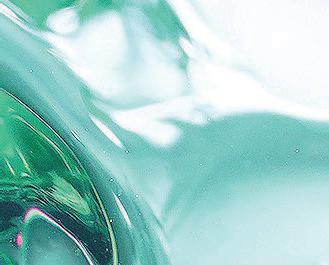
Regulation of TSS removal alone or a lack of emphasis on contaminants of concern (e.g. phosphorous in the Waikato) is unlikely to result in the best outcomes for the environment.
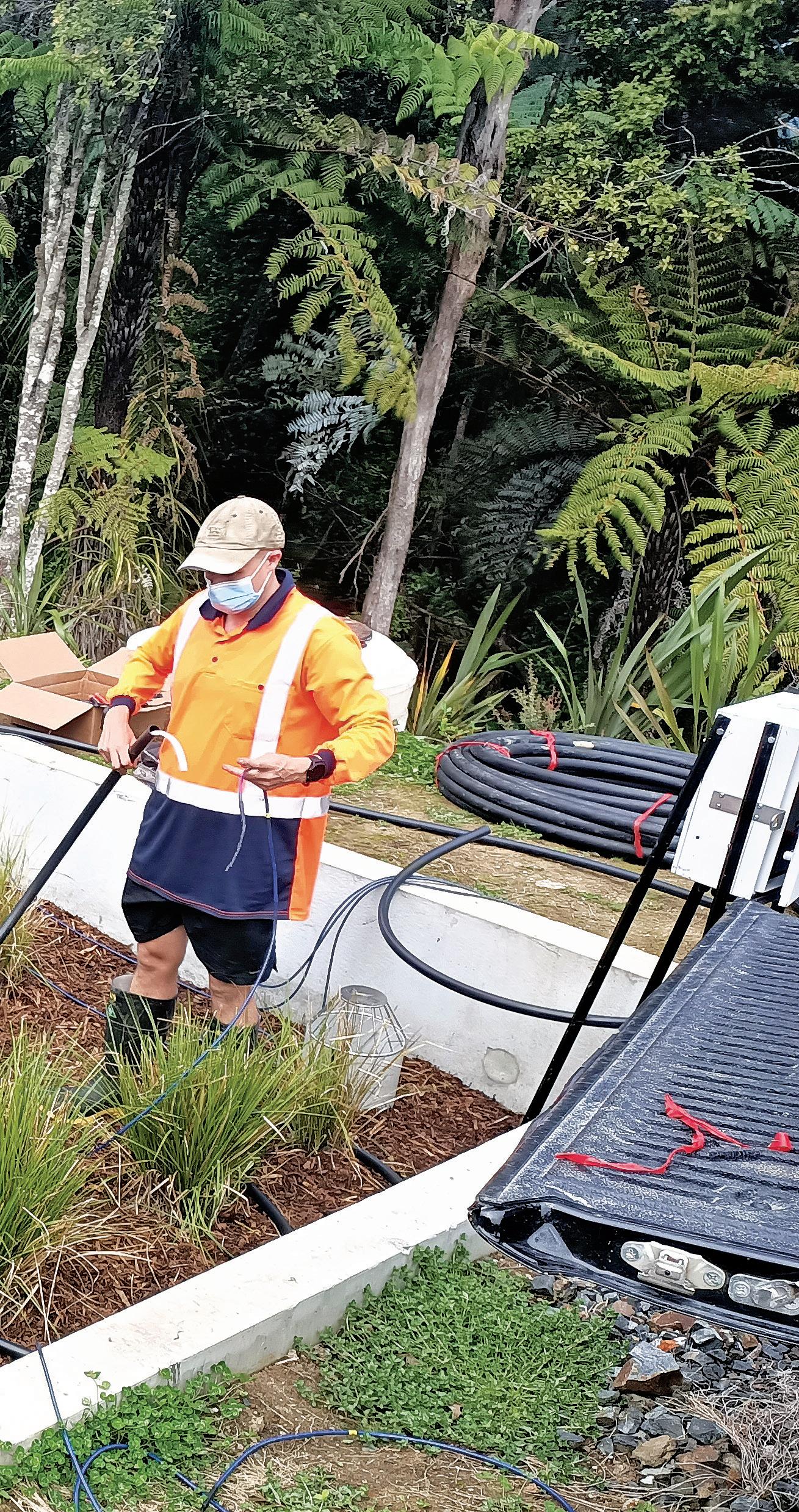
teltherm.co.nz










SEPTEMBER/OCTOBER 2023 WATER NEW ZEALAND 77
Teltherm is the proud distributor of global instrumentation brands including pressure, temperature, gas detection, flow, level, and analytical instruments. We aim to provide the right instrumentation and support with minimum disruption to your business.
Fast, reliable sales & service from the instrument experts.
Monitoring equipment will allow a deeper understanding of long-term operational requirements for a high flow bioretention system.




78 www.waternz.org.nz
Influent (left) and treated effluent samples retrieved from an automatic sampler at a field-testing site in Kuranda, Queensland, Australia.
WATER NEW ZEALAND STORMWATER
Right: Litter and debris captured in a StormFilter chamber and prevented from entering the receiving environment at a field monitoring site in Auckland.
Hydraulic requirements
SQIDEP is not intended to address hydraulic performance characteristics such as head loss, TARP originally required a discussion of technology hydraulics and system sizing and the 2009 update requires Maximum Conveyance Flow Rate (MCFR) and Maximum Treatment Flow Rate (MTFR) laboratory testing, while TAPE requires claimed MTFR and media head loss curves to be reported.
Demonstrating the performance of a device at the designed treatable flow rate is critical for meeting regulatory requirements. Auckland Council, Christchurch City Council, Wellington Water and Waikato Regional Council all require 80-90 percent of the annual rainfall to be treated.

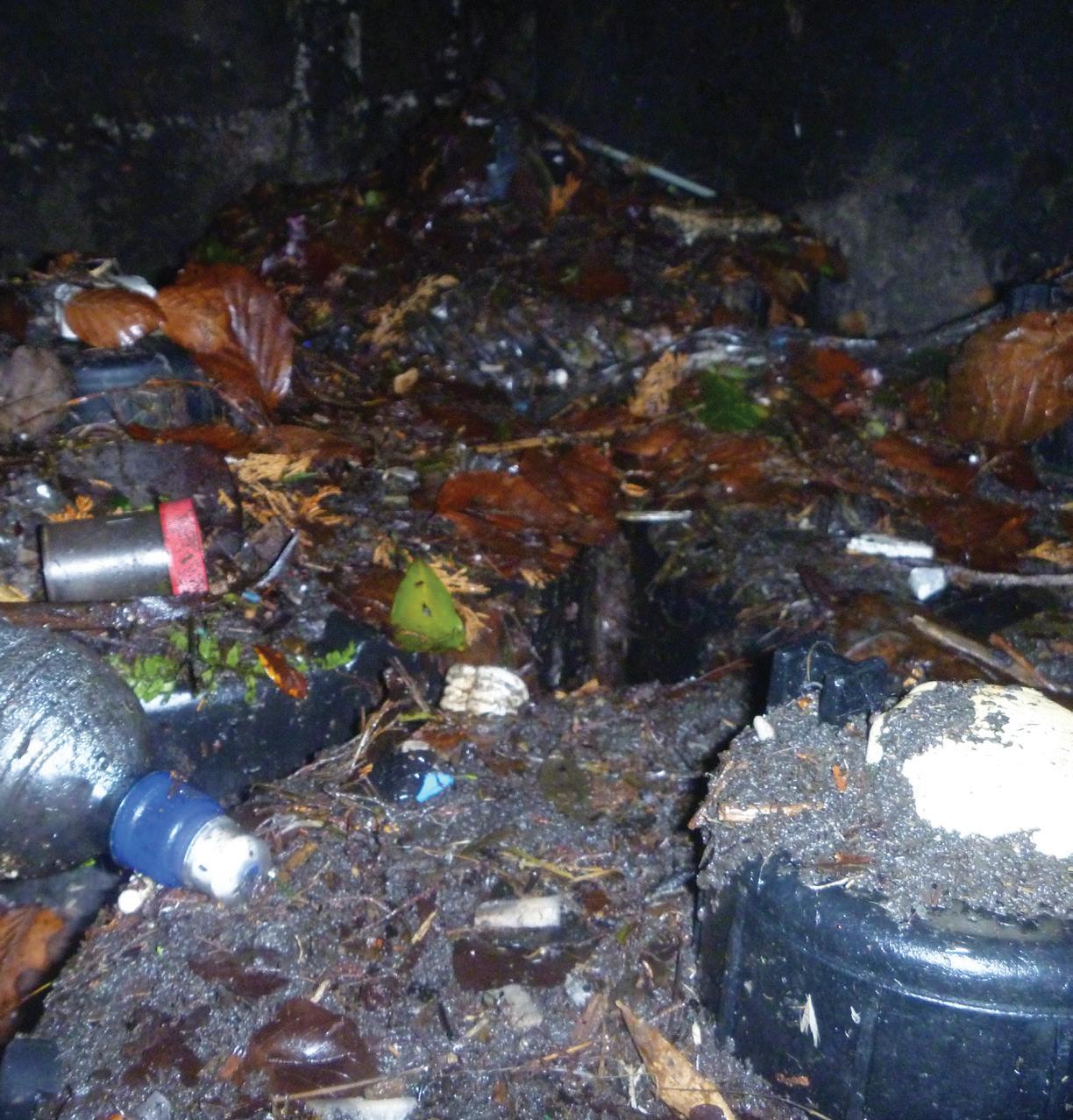
The flow rate of the device must be verified to evaluate the requirement for annual runoff treatment and because the driving head affects the flow rate, it’s also essential to determine head loss.
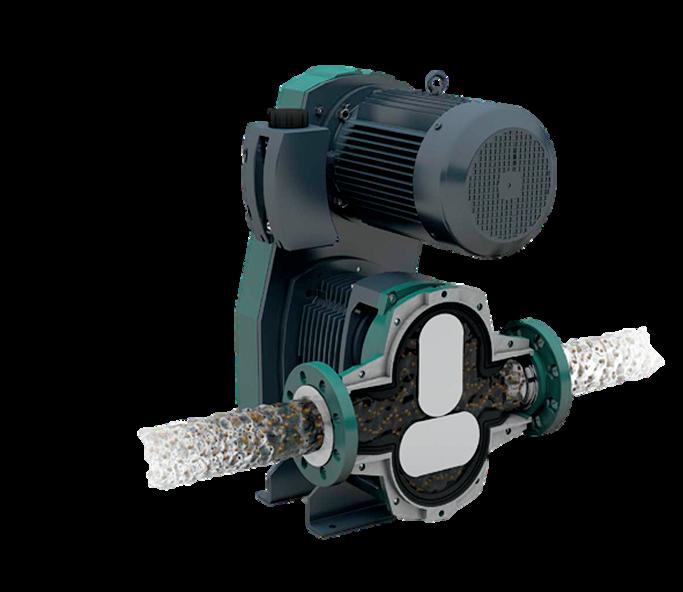

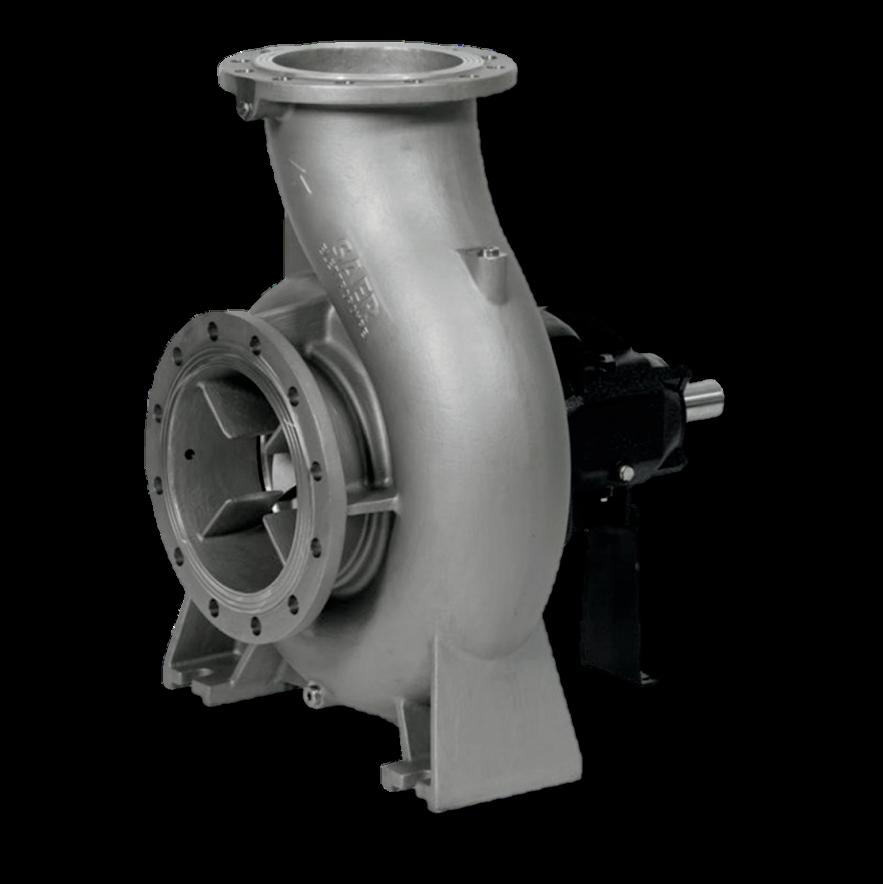
Operation and maintenance requirements
SQIDEP does not require operation and maintenance details; TARP requires a full range of operating conditions to evaluate the performance goals; standards and minimum maintenance requirements, and TAPE requires several specific details around operation and maintenance.

Auckland Wellington South Island www.pumpmachinery.co.nz
Pump Solutions
Engineering
Understanding the maintenance requirements is critical to understanding how much sediment load an MTD can handle and how much the asset will cost over time.
A useful feature of TAPE’s GULD certificate is the publicly available operation and maintenance reporting it includes. Measuring and recording this data helps inform the long-term lifecycle costs, critical to all stakeholders.
If not considered, the system can become an unmaintained burden, both in financial terms and potentially in terms of an inability to meet stormwater discharge consent requirements by not being able to meet the desired level of treatment.
In summary, an effective protocol needs to address these factors satisfactorily.
Where to from here for New Zealand?
Without PSD reporting there is potential for a superior MTD not to be recognised as such and for too many fine sediments to enter the receiving environment. Finer particles also have a higher concentration of heavy metals and make toxic heavy metals highly bioavailable to aquatic life.
PSD reporting and data availability can ensure results are transferrable and applicable within a specific catchment and help with choosing the best MTD for the site.
Performance goals need to be defined by an influent band to remove the bias of high concentrations and subsequent performance overestimates. They also need to be based on an understanding of the local catchment and concentrations to which a device was tested.
By limiting the concentrations and prescribing effluent boundaries the TAPE provides a more conservative approach and provides more transferrable MTD performance results.
Of equal importance is that the treatable flow rate for the device meets annual load reduction requirements, and this is a key factor in evaluating long term performance and treatment outcomes.
Water bodies are impaired with different contaminants across the country and regulators need to place emphasis on local contaminants and their characteristics – this requires different

processes and components within an MTD.
International protocols cannot be deemed appropriate for generalised use in New Zealand. SQIDEP, for instance, could be appropriate for parts of the Waikato, but is unlikely to be appropriate for Christchurch, given heavy metals are not addressed in that protocol.
It is important to note performance testing is useful for benchmarking MTDs against a standard, but it is not a guarantee a device will achieve equivalent performance when in use. The demonstration protocol also needs to be robust and provide sufficient information around all factors that will affect performance and should provide a methodology and set of requirements that is legally and scientifically defensible to align with the RMA and other regulatory requirements.
Of the three protocols reviewed, the Washington TAPE is the most thorough and robust and as a rule, comprises a finer PSD than typically encountered in New Zealand.
The adoption of TAPE would be a conservative approach that would most likely see MTDs perform better and give a more realistic indication for MTD performance in areas of New Zealand, though regulatory bodies should carry out an analysis on the merit and appropriateness of different MTD testing protocols to draw on the most applicable components for use in their catchments to ensure the best outcomes for the local receiving environments and Te Mana o te Wai.
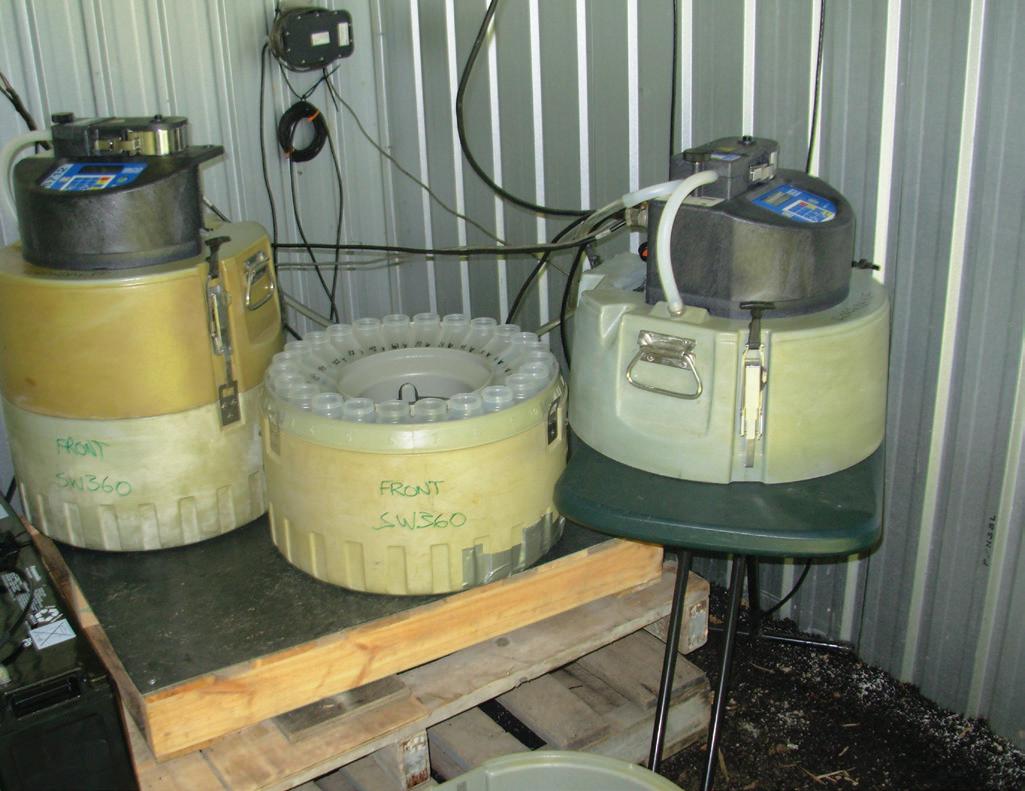

Stormwater management engineer Mike Hannah is a global authority on performance testing of stormwater treatment devices and has contributed to the protocols of USA, Canada and Australia, and is a co-founder and technical director of Stormwater360 and Enviropod. Co-author Julia Watson is an R&D and regulatory engineer with Stormwater360 with a scientific background in engineering geology, including in test methods and standards, and firsthand experience across consulting and local government sectors.
Kevin Jonathan is a Stormwater360 engineer with over 10 years’ professional experience designing, constructing and maintaining stormwater treatment devices.
Read the full technical paper online at: rb.gy/ltrfi
80 www.waternz.org.nz
WATER NEW ZEALAND STORMWATER
Undertaking out single ring infiltration testing.
Automatic sampler set up at a field-testing site in Kuranda, Queensland, Australia.
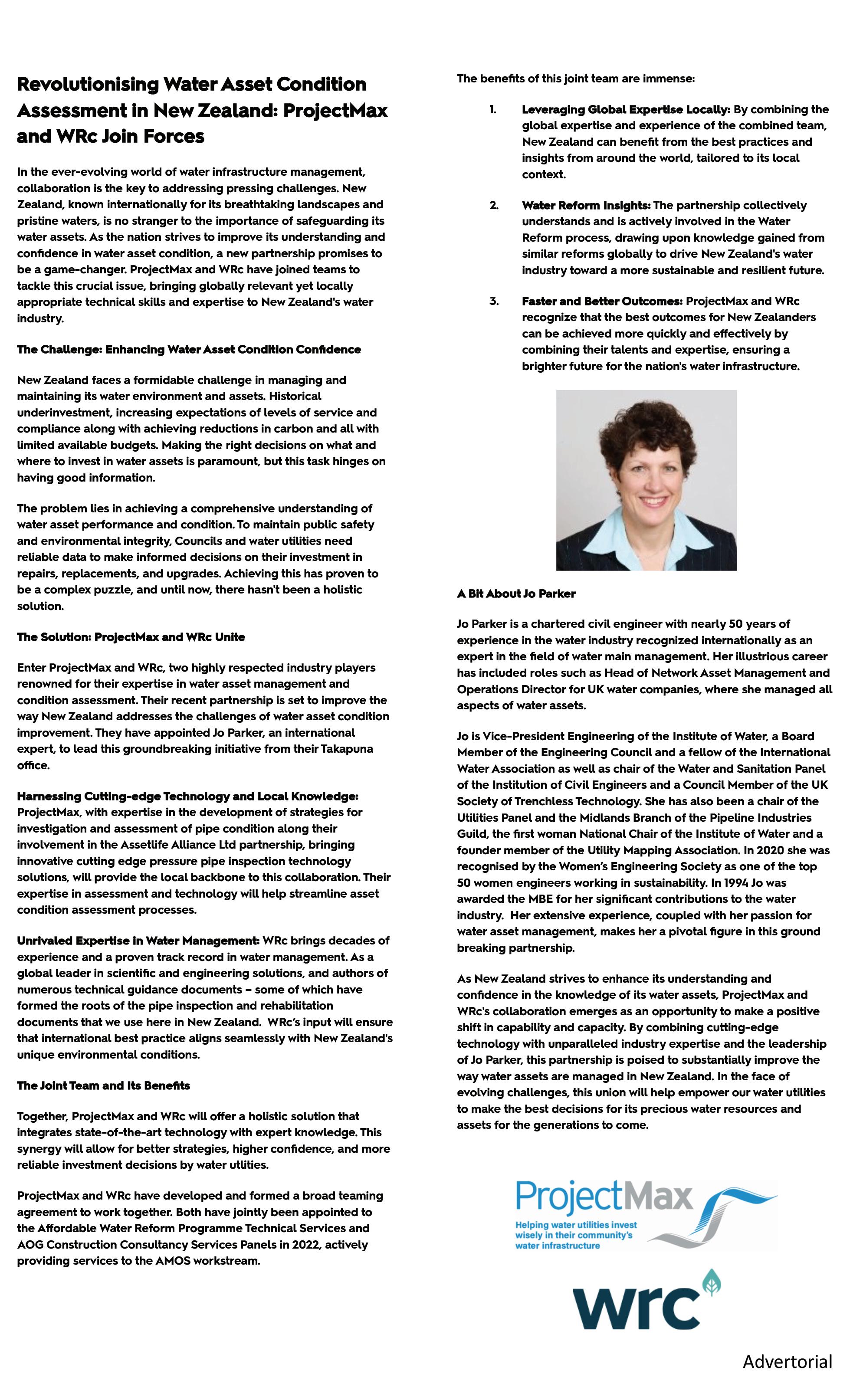
Sorting our stormwater assets
A key deliverable for the Water Services Reform programme is to ensure ownership and responsibility for urban stormwater network assets are transferred to each Water Services Entity. On their first day of operation, each entity needs to be ready and able to assume responsibilities for urban stormwater services. This means they need to know what stormwater network assets they are responsible for. Equally, councils need to understand which infrastructure and land remains their responsibility. By Gita Parsot, senior communications advisor, Water Services Reform National Transition Unit.
The process to transfer stormwater assets to WSEs will lay the foundation for future delivery of stormwater services, including the development of Relationship Agreements.
“The challenge was that at a national level, information on stormwater network assets was ‘patchy’ at best,” says Phillip Eyles, stormwater lead, Water Services Reform National Transition Unit (NTU).
“We needed a way to capture council asset data and their local knowledge of their networks to identify different stormwater network assets, and current ownership or management arrangements.
“The methodology needed to provide for a nationally consistent approach, which would provide councils with clarity on what would transfer, on a platform that they could easily use to validate the results.”
While the focus was on identifying what assets would transfer; the methodology and process also needed to support the broader vision for future stormwater management.
“The stormwater network is not just about pipes or green stormwater infrastructure, it also includes overland flow paths and urban water courses. And while the ownership of those green parts of the stormwater network doesn’t transfer, responsibility for the management of those functions does.
“We needed a tool for both the NTU and councils to identify responsibilities for those functions.”
Phillip has been at the Department of Internal Affairs (DIA) since 2019. He has a background in land use and infrastructure planning and has spent his career working mostly between local and central government.
He worked on the regulatory reforms that set up water services regulator, Taumata Arowai, and ran the initial Stormwater Technical Reference Group with Lorraine Kendrick (NTU’s head of technical) that provided the Government with advice on whether transfer of stormwater responsibilities was feasible.
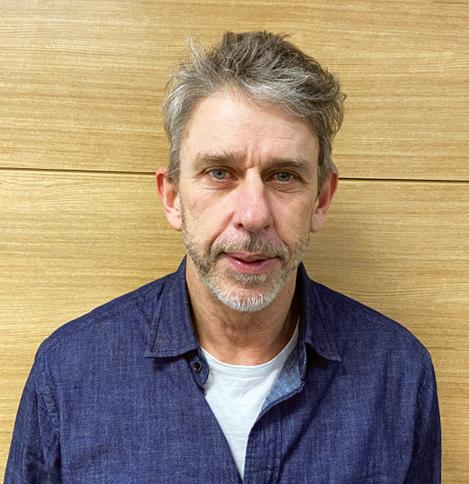
Wanting a change after Covid, he did what he says most policy people should never do, he moved to the NTU to lead the implementation of the stormwater
workstream in June 2022.

“I wanted to see this through from end to end.”
One of the first steps in the next phase was scoping out what was needed.
The scale of the task was significant, involving an enormous number of assets nationwide, a tight delivery time, plus many stakeholders with varying needs and expectations. It would require a strong technical background, and a flexible and collaborative style to create an approach that would work for both the NTU and Councils.
Enter Helen Shaw, a Christchurch based water resources engineer and catchment management specialist from Beca, with more than 20 years’ experience across the
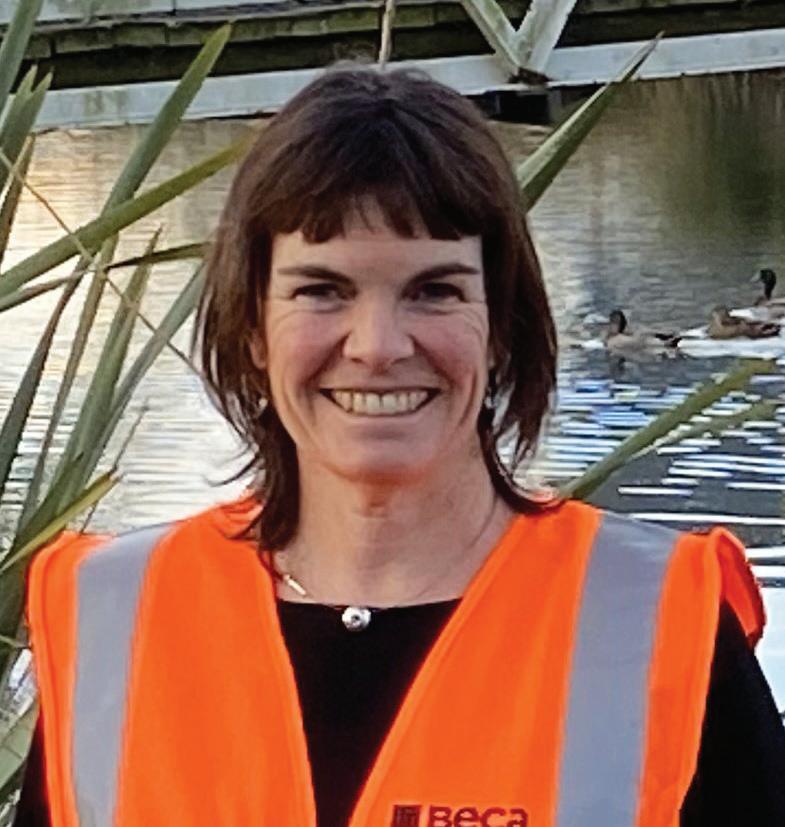
WATER NEW ZEALAND ASSET MANAGEMENT
Helen Shaw, Beca
Phillip Eyles, National Transition Unit (NTU)
private and public sectors here and in the UK.
Beca, as lead agency, formed part of a consortium made up of Tonkin + Taylor, WSP, and Aurecon, with Tektus. Bringing together stormwater, asset management and geographic information system (GIS) specialists from across the five agencies created its own project management demands but provided the collaborative platform required to meet the challenge.
The approach also had to be flexible enough to receive information in a variety of formats from 66 councils (without Chatham Islands). Helen says that each council has a different way of collecting data and doing things.
“Some councils have better data than others, but all councils have a unique data set.”
Once the information was collated, a series of decision trees based on the legislation were used to identify which assets would transfer, which assets would remain with councils, and which assets required further discussion.
The decision trees formed the basis for the geospatial model, which automated the process.
The process produces a GIS based map for all councils which shows where their stormwater assets are, and colour codes the assets depending on what category the model has assigned them.
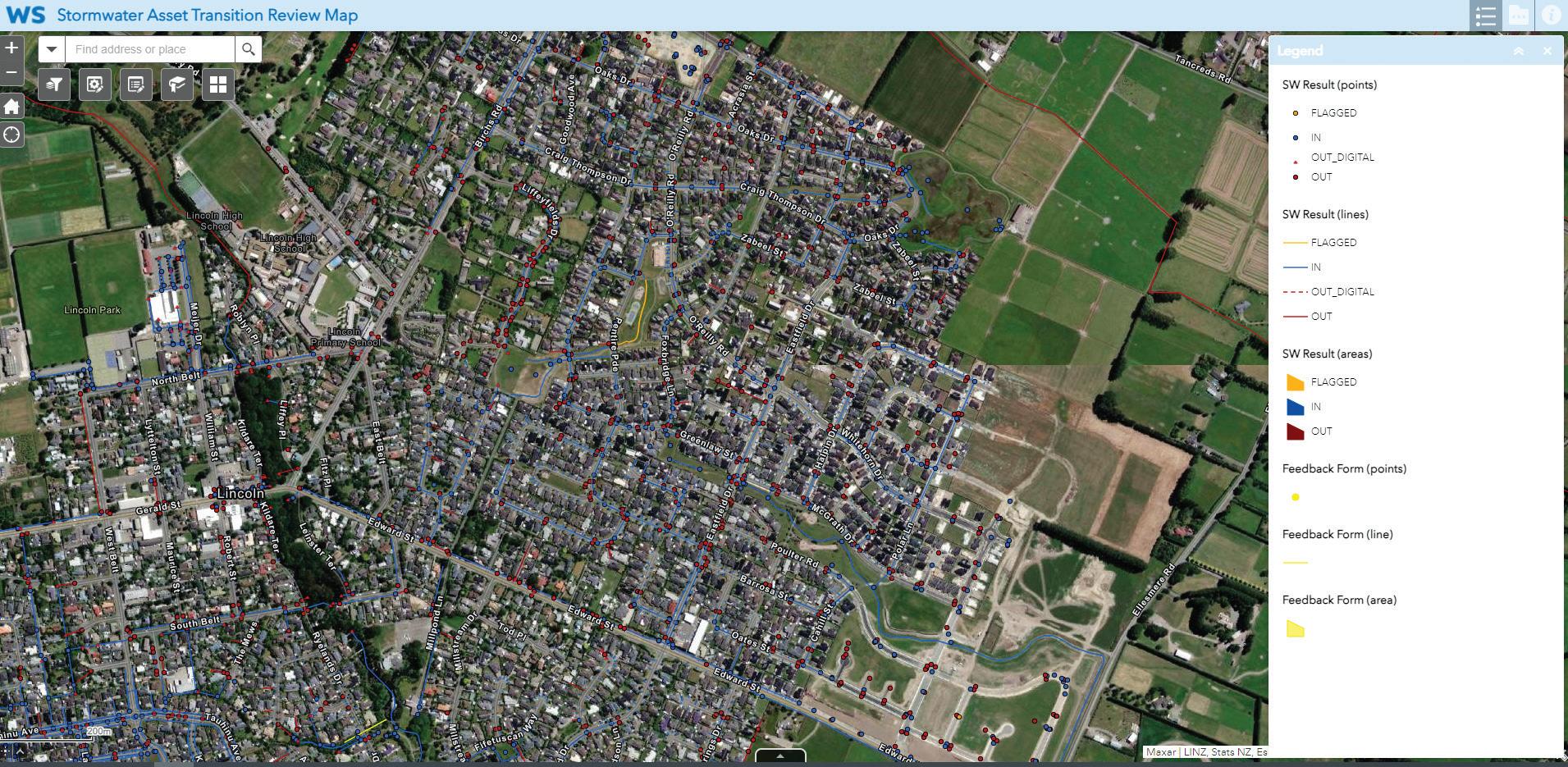
Being able to view the assets visually enables council staff to review the tool results in their urban ‘context’ and allows them to use their local knowledge to quickly identify where assets may have been wrongly categorised or are missing from the database.
“It’s a decision support tool. It doesn’t make the decision by itself, but it is designed to support the legal transfer of assets and reduce the ‘transfer workload’ for councils by distinguishing the assets that will clearly transfer from the smaller subset of assets that require further investigation and discussion,” Helen says.
The NTU’s stormwater team is now visiting councils nationwide to demonstrate the tool.
“The staggered timeframe for the establishment of the entities means that we expect to update the data and rerun the tool closer to the time each WSE is stood up to generate a list of assets for transfer.

“Some of the larger councils can get 3000 new asset records a week so if you are a year out from being stood up, that could be a lot of additional asset data that needs to be captured.”
Phillip says that, while the process has been challenging, it has provided a significant step forward to create visibility of the urban stormwater network assets that are used to manage stormwater in our cities and towns. This is important for both
central and local government.
“Having the stormwater asset data in one place also means we now have a national break-down of stormwater assets, which didn’t exist before,” he says.
The NTU has processed almost three million stormwater assets so far. Of that figure just under 1.2 million are urban stormwater network assets that would transfer to the water entities, and of that there are about 4000 green stormwater assets located mostly in parks and reserves requiring further discussion between the council and the NTU to decide if it transfers to a WSE.
Identifying the stormwater network assets is only part of what WSEs will need to consider. Phillip says through recent weather events, the country is learning the importance of taking a more holistic, integrated approach to stormwater management and seeing the value of working with natural systems such as wetlands and green stormwater infrastructure.
Stormwater management will always be a collaborative activity, he says.
“Councils will continue to have significant influence on urban stormwater outcomes. The WSEs will need to work closely with regional and local councils to engage the community and ensure an integrated approach to catchment management and urban development.”
NTU Stormwater - Map created by the Stormwater Decision Support Tool of a region's stormwater assets to date.
TINY TECHNOLOGY BIG POSSIBILITIES - ‘PVA GEL’

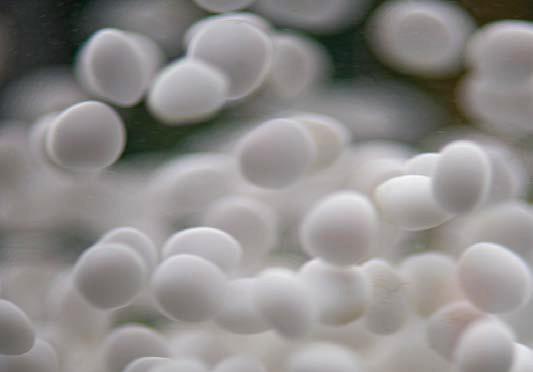
Particularly suited for municipal and industrial use, Aqua-K has harnessed cutting edge biotechnology to design a range of wastewater treatment systems. The Aqua-K system is a more effective treatment system with a smaller footprint, cleaner outputs and less sludge.

When compared to conventional systems:
• 70-80% sludge reduction
• Lower operating costs
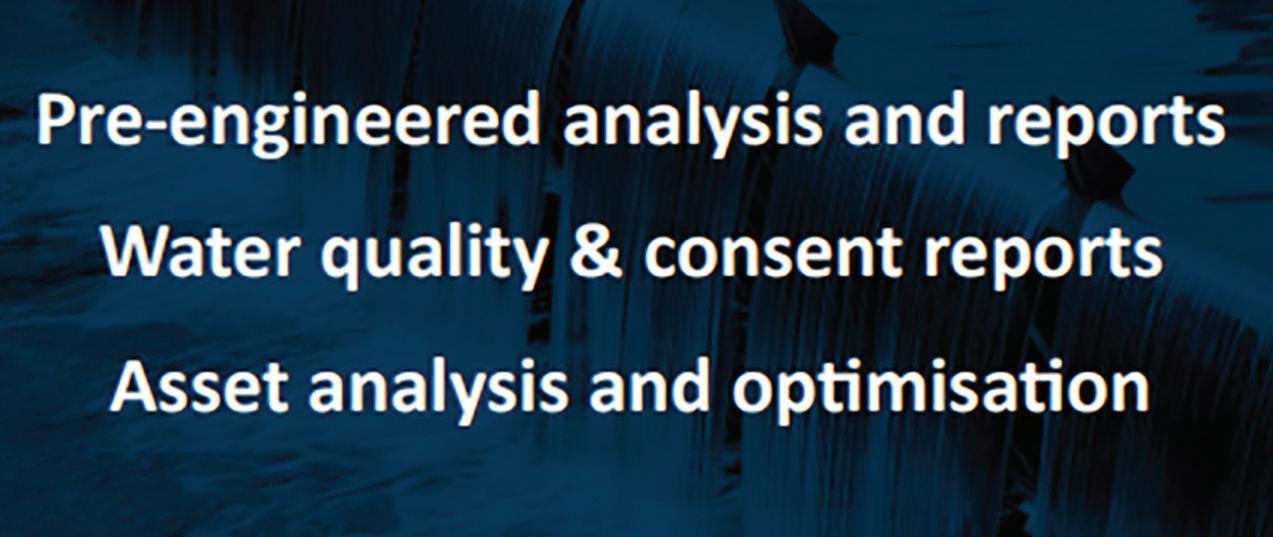
• Smaller footprint
Key Benefits
• Output guarantee
• Components warranty
• Increased capacity of existing systems by upto 3 times without increasing footprint
• Cloud based, real time monitoring of inlet & outlet
Aqua-K can deliver
Containerized plants for up to 250 m3/day. Large turnkey projects of any size
CONTACT Chetan Thapar | 0211233020
e: ct@aquak.co.nz | w: www.aquak.co.nz
www.nzcontrols.co.nz
84 www.waternz.org.nz
A PROVEN wastewater technology that has been deployed in 479 plants since 1997
General Testing 07.07.23 Inlet Outlet CBOD5 530 0.81 COD (as 02) 850 ± 56 <30 Nitrate (as N) <0.04 <0.02 Nitrite (as N) 4.33 ± 0.37 <0.02 pH (at room temp c. 20 °C) 5.8 ± 0.1 7.7 ± 0.1 Total Alkalinity (as CaCO3) 110 230 Total Kjeldahl Nitrogen (as N) 22.9 ± 0.89 2.08 ± 0.18 Total Phosphorus (as P) 8.0 ± 0.34 0.12 Total Suspended Solids 126 ± 9.7 <1.00.02
£100 million fund to save water










UK water regulator Ofwat is calling for ideas and input as it develops a new £100 million (NZ$207m) fund to help save water.







The fund is being set up to stimulate a measurable reduction in water demand across England and Wales, for both residential and business customers. The fund will sit alongside sector efforts to halve leakage by 2050 and develop £18 billion (NZ$37.4b) of water supply infrastructure projects that are currently in progress.
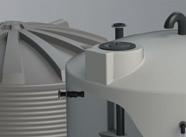
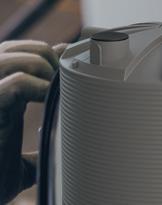





The consultation lays out the regulator’s early thinking on water companies’ role in helping customers to conserve water and invites views on how Ofwat should be shaping this fund for the benefit of customers, communities and the environment for generations to come.
The consultation seeks views on:
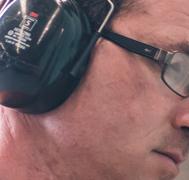


• What the fund should focus on, including areas such as dedicated work on behaviour change, use of data-driven insights and the introduction of technologies that promote water efficiency and reduce wastage.








• How it can most effectively bring in expertise from other disciplines and sectors while utilising best practice within the water sector.
• How best to implement the fund, including what governance may be required, and how it can continue to protect customer interests.
As well as being beneficial for the environment, customers
















can see financial benefits from reducing water use. Water UK estimates a four-person household could save around £500 (NZ$1038) a year on their water and energy bills by reducing the amount of water they use.
“Securing resilient water resources is of paramount importance. It means following the twin track approach of developing new resources and managing demand for water with equal ambition,” says Paul Hickey, senior director at Ofwat.
“This fund will enable the sector to accelerate the sort of collaborative and innovative work that is necessary to make progress in this area. By bringing fresh ideas and existing expertise together, we can achieve more resilient supplies, improve environmental protection, and deliver better value for customers.”

This consultation will be the first of two which will allow people and organisations to feed their thoughts and insights into this process.
Ofwat plans to launch a more detailed proposal, based on responses early next year. Its final approach to the fund will be set out later in 2024 with an expectation for the fund to be operational by April 2025.
Article provided by Ofwat.

SEPTEMBER/OCTOBER 2023 WATER NEW ZEALAND 85 WATER CONSERVATION WATER NEW ZEALAND New Zealand’s Best & Most Reliable Stormwater Solutions
offers custom modification, on-time delivery, and industry-leading warranties. WWW.PROMAX.CO.NZ
Promax
WATER & WASTEWATER COATINGS & LININGS
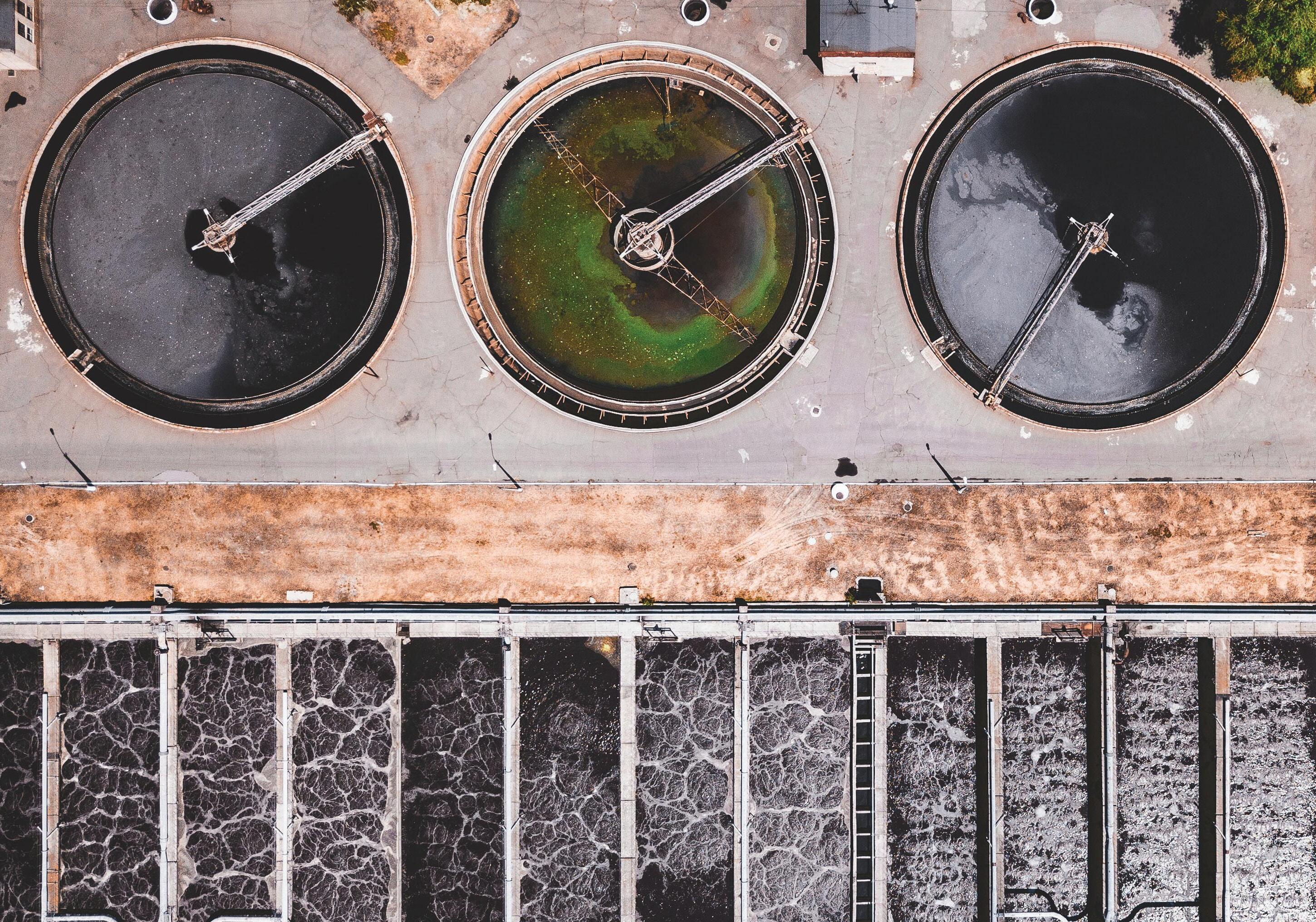
Carboline, the standard of quality for high-performance coatings, linings and fireproofing, has combined innovation in product development, with an unparalleled level of technical knowledge and field support, to become the market leader.
Carboline, has amongst its extensive protective coatings products, a range of zinc rich primers to cover most industry sectors, primers proven on performance and reliability. Manufactured in New Zealand though Altex Coatings LTD.
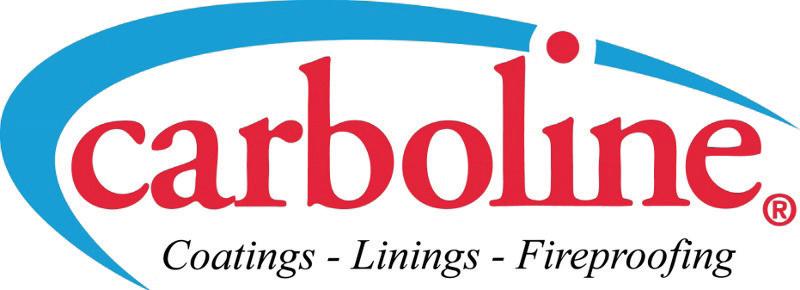
509 092
nz.carboline.com 0800
Concrete industry on road to net zero carbon
The concrete industry has launched its roadmap to net zero carbon by 2050
Concrete New Zealand chief executive Rob Gaimster says the publication of the roadmap is a pivotal moment for the concrete industry and the country’s built environment.

“We must provide adaptive solutions that address and help ease the impacts of climate change in a country that is also at risk of earthquakes, tsunamis and volcanoes.
“As well as contributing to our nation’s resilience, the concrete industry is committed to being part of efforts to mitigate climate change.
“This roadmap represents a collective effort, combining the expertise, ingenuity, and commitment of the concrete industry and wider construction sector, to meeting our environmental responsibilities.
“It builds on global cement and concrete industry progress to achieve net zero carbon emissions which had been recognised by the United Nations.”
Barbara Nebel, chief executive of thinkstep-anz, leading sustainability consultants responsible for developing the roadmap, applauds the concrete industry for its efforts.
“We have run a rigorous rule over the proposed strategies, so we could develop the roadmap as a realistic and achievable pathway forward.
“In fact, the industry has already started its decarbonisation journey, with an 11 percent reduction in CO2 emissions achieved between 2005 and 2018, even though ready mixed concrete use increased significantly during that time.
“Based on this roadmap, the concrete industry can achieve a 44 percent decrease from 2020 levels by 2030, and ultimately net zero carbon by 2050.”
The roadmap was funded by Concrete NZ, the Ministry of Business, Innovation and Employment’s Building Innovation Partnership (administered through the University of Canterbury), and BRANZ through the Building Research Levy.
Strategies to help the industry reach its
2050 net zero carbon target include:
• Increasing the use of waste as alternative fuels and raw materials to make cement clinker.
• Partial replacement of cement with low carbon recycled or natural materials.

• Efficiencies in concrete production.
• Further decarbonising New Zealand’s electricity grid and supply chains.
• Design and construction optimisation.
• Carbon uptake, which sees exposed concrete absorb CO2
• Capturing remaining CO2 Progress is clear, with low carbon cement and concrete options available on the market for use across a range of residential, commercial and civil construction projects.
Fletcher Concrete chief executive Nick Traber believes the roadmap reflects the genuine direction of companies such as his.
“We are playing a key role in reducing emissions right from using alternative fuels and raw materials in cement manufacturing, to our low carbon supply chain and low carbon binder technology developed at Fletcher Building’s new research lab focused on sustainable concrete solutions.”
George Agriogiannis, chief executive Officer of Holcim Australia & New Zealand, feels that industry is walking the talk outlined in the roadmap after having invested significantly in researching and producing new lowercarbon products.
“We have also constructed a new low-carbon cement replacement facility at the Ports of Auckland. At peak operation the site is expected to enable replacement of just under 100,000 tonnes of Ordinary Portland Cement, which will substantially reduce greenhouse gas emissions. Annually, this is the equivalent of removing approximately 78,000 tonnes of carbon dioxide.”
Leader of the Building Innovation Partnership, Professor Larry Bellamy, whose team is working on strategies for reducing carbon emissions from buildings and communities, believes construction needs new approaches to enhance the resilience and sustainability of building materials and structures.
“The roadmap is important because it identifies the research needed to help transform concrete for the benefit of New Zealand,” says Larry.
SEPTEMBER/OCTOBER 2023 WATER NEW ZEALAND 87 CLIMATE CHANGE WATER NEW ZEALAND
Fletcher Building chief executive concrete Nick Traber; thinkstep-anz chief executive Barbara Nebel; Concrete NZ chief executive Rob Gaimster; Minister for Climate Change James Shaw; Holcim Australia & New Zealand chief executive George Agriogiannis; and Construction Sector Accord transformation lead - environment Jennifer Taylor.
3-million-year-old sediment records provide insights for future ocean warming
New research led by GNS Science and NIWA demonstrates the Southwest Pacific experienced ocean surface temperatures nearly double the global average when carbon dioxide levels similar to today were sustained.
This has many parallels with current warming and strongly suggests that over the next few decades to centuries, the waters around New Zealand will again experience temperatures above the global average.
Researchers analysed geological records from the mid-Pliocene warm period (three million years ago), which was the last time Earth experienced atmospheric levels of CO2 as high as those of today.
With global average temperatures 2-3°C warmer than preindustrial, the midPliocene is considered a valuable window into our near-future climate.
Marine sediment cores, drilled from seven sites, revealed that the ocean around New Zealand during the mid-Pliocene was on average 4.2°C warmer than preindustrial temperatures, and near double the global average at that time. The findings are consistent with high-resolution computerised climate model projections that the oceans in our region will be 2-3°C warmer by the year 2100.
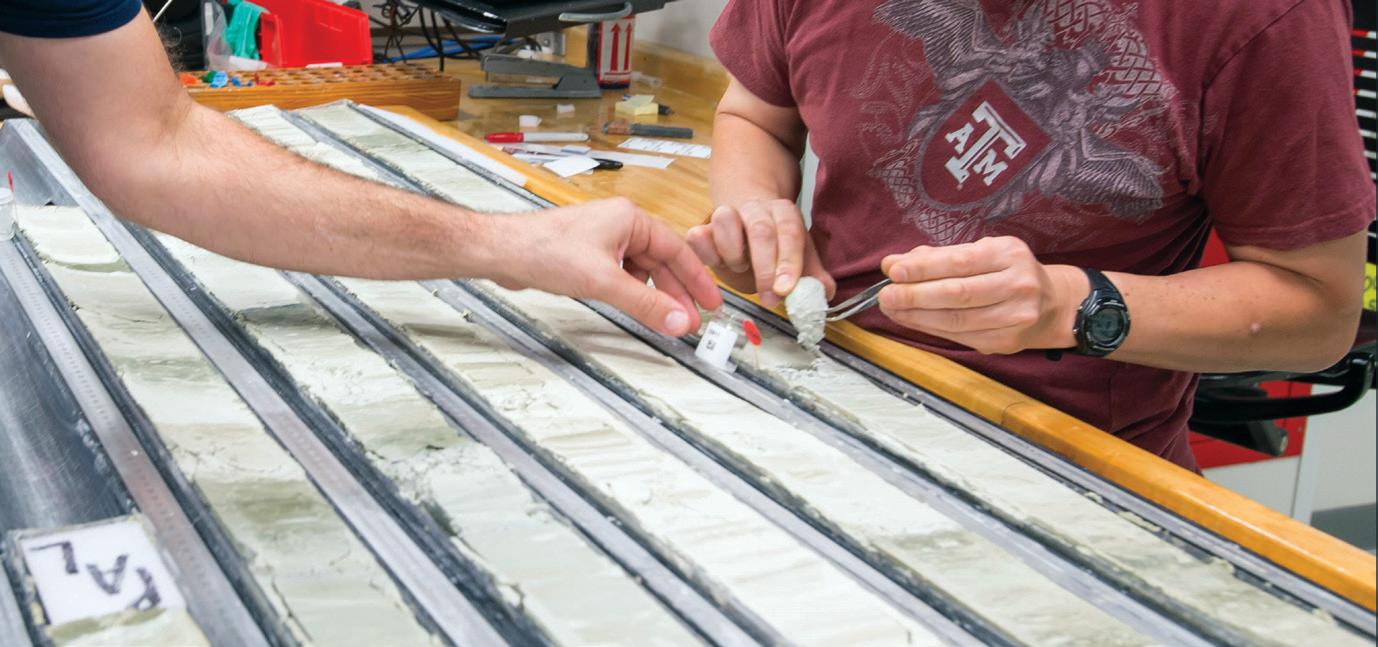
Georgia Grant, GNS Science climate scientist and lead author of the study, said, “These results are consistent with warming observed currently, expressed by the marine heatwaves recently experienced around the country.
“It’s important for New Zealanders to be aware that with 2°C global warming we should expect higher ocean temperatures here.
“As an island nation, the ocean dictates much of our weather, and increasing ocean temperatures are one of the factors to why storms like Cyclone Gabrielle are expected to increase in severity under climate change.”
The latest report from the Intergovernmental Panel on Climate Change (IPCC) states that if we fail to achieve the Paris target and reduce
emissions below 350 ppm, by the end of the century the Earth’s average temperature is very likely to be between 2.1-3.5°C warmer than preindustrial temperatures.
“To be truly resilient we need to plan for greater than 2°C, accounting for ocean warming and tipping points that are not included in climate projections.”
Limitations of global climate models and opportunities from the Pliocene
Past climates like the Pliocene illustrate the long-term consequences of warming, as many processes take centuries to fully play out. By looking back in time researchers can better understand tipping points and longterm climate responses.
Ocean warming around New Zealand is often underestimated by computerised global climate models due to complex interactions between the ocean and atmosphere that are difficult to resolve on a global scale, and a lack of readily available observations.

“Regional climate predictions for the Southwest Pacific and Southern Ocean using computer models have consistently struggled
to simulate climate change from instrumental observations and geological data compared to other parts of the world,” Georgia says.
To address this NIWA developed a New Zealand Earth System (NZESM), which has enabled more detailed projections of heat transport and ocean current patterns in our region.
The results from the Pliocene geological records show agreement with the NZESM projections for future ocean temperatures in the Southwest Pacific providing further confidence in the projections and highlighting the potential of the midPliocene as an appropriate analogue for future temperature change.
While research on past climates can provide valuable real-world insights on long-term processes that impact ocean warming, it represents the climate over thousands of years and cannot resolve the complexity of modern environment.
“Used together the two independent lines of evidence provide a powerful tool for accessing both past and future climate change.”
Article provided by GNS Science.
88 www.waternz.org.nz WATER NEW ZEALAND CLIMATE CHANGE
Sediment cores, like these from the Tasman Sea, were analysed in the study. Sea surface temperatures for the mid-Pliocene were estimated from organic molecules called biomarkers that are preserved in the sediment.
PHOTO COURTESY OF: TIM FULTON, IODP JRSO.
Optical sensors for process control and monitoring.


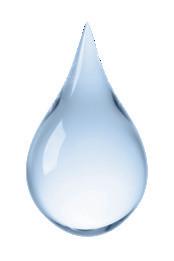





High quality made in Germany –supported locally in New Zealand.
We are opening our Aotearoa New Zealand office to directly support our clients and distribution partners.
...and many more parameters
The new modular series for multi-parameter on-line monitoring.

Visit us at stand 173/174 during the Water NZ conference – just opposite the conference rooms. We are looking forward to meeting you and discussing your application.
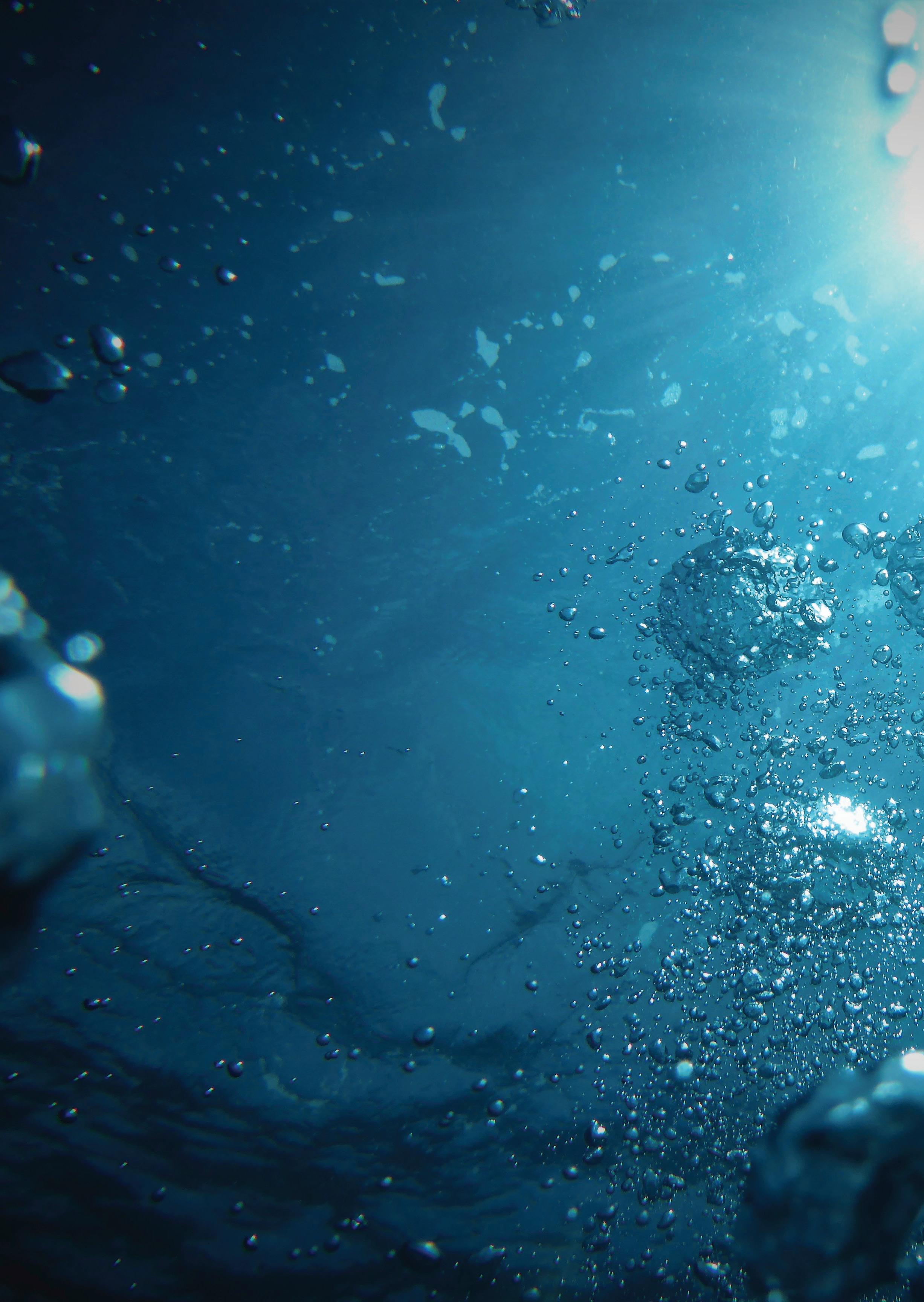
DRINKING WATER WASTEWATER STORMWATER
TW Masters
Nitrite NO2-N Nitrate NO3-N oil-inwater UVT algae cyanos SAC254
for the water industry.
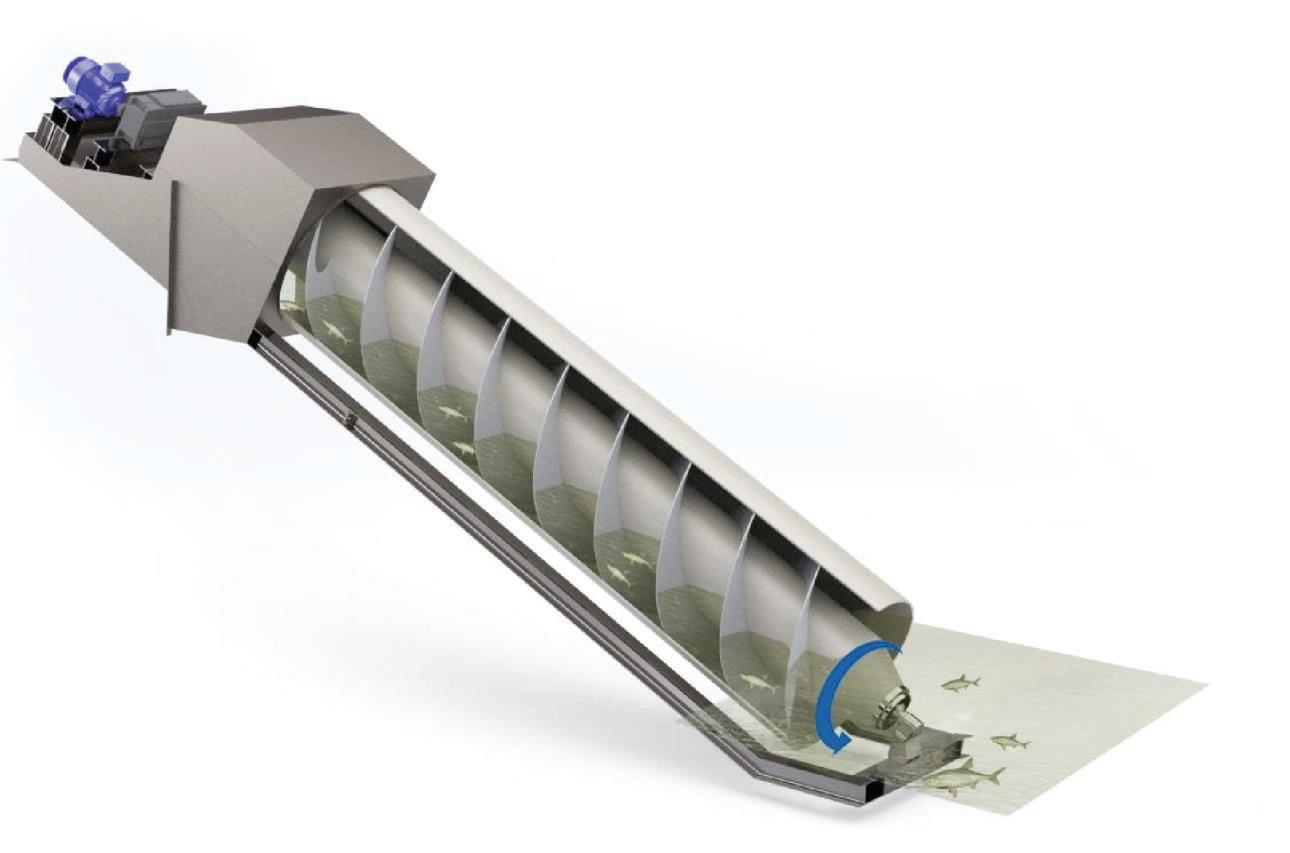


















90 www.waternz.org.nz F Worlds leading 100% Fish Friendly
New Waiho River threats being investigated
Ongoing and substantial aggradation (building up) of gravel in the Waiho River on the West Coast has resulted in the main channel of the river deflecting to the true right, and forming an additional channel into the Tartare River.
This natural process, known as avulsion, occurs when a river becomes blocked due to sediment and abruptly shifts pathways or channels.
West Coast Regional Council chief executive Darryl Lew says that the ramifications of such an event were being investigated.
“Engineers were on the ground once we were aware that this was occurring. It appears that this channel remains dry until river volumes exceed normal flows.

“We are working closely with Te Rūnanga o Makaawhio, Westland District Council, and Waka Kotahi NZ Transport Agency to assess the implications of any such shift in the river channels.”
An understanding of the current situation, the future state of the river and potential options and design solutions was being progressed through a workshop in the second week of August.
“Council is bringing together some of the most experienced thinkers in this space to consider the options for the future and create a 10 year plan for the river. Once we have this plan we can then bring this to the community as well as seeking the appropriate funding.”
Darryl noted that sediment rates, exacerbated by rainfall to the catchment of 10,000mm per year and located in a highly seismic environment, are contributing to the build-up of the riverbed.
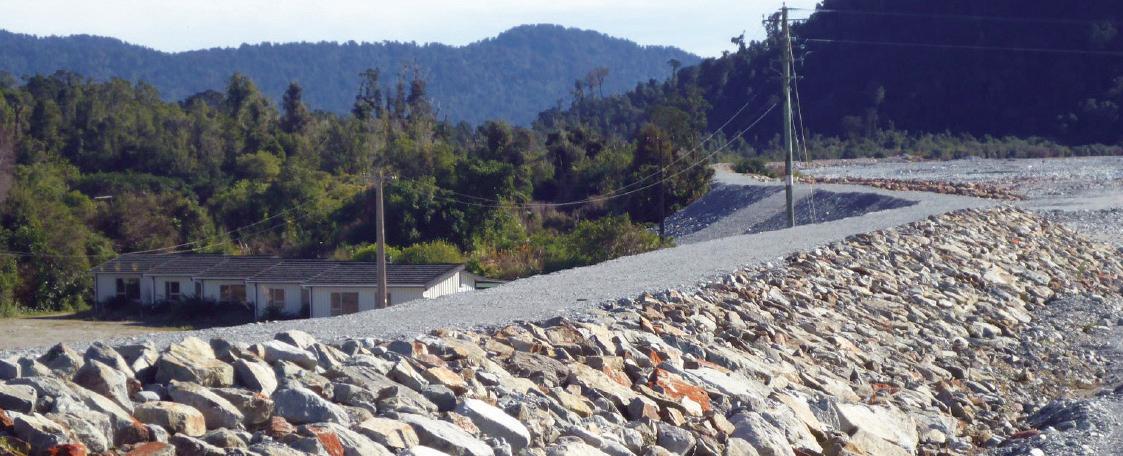
“The Waiho is one of the most dynamic river systems in New Zealand. Being constrained within floodwalls has meant that the natural deposition of gravel over the river plain has been unable to occur with the river bed building up faster than ever before. When the accumulated sediment grows formidable enough to impede the flow of water, the river seeks an easier course.”
Article provided by The West Coast Regional Council.

SEPTEMBER/OCTOBER 2023 WATER NEW ZEALAND 91 AGGRADATION WATER NEW ZEALAND
Embracing and encouraging innov
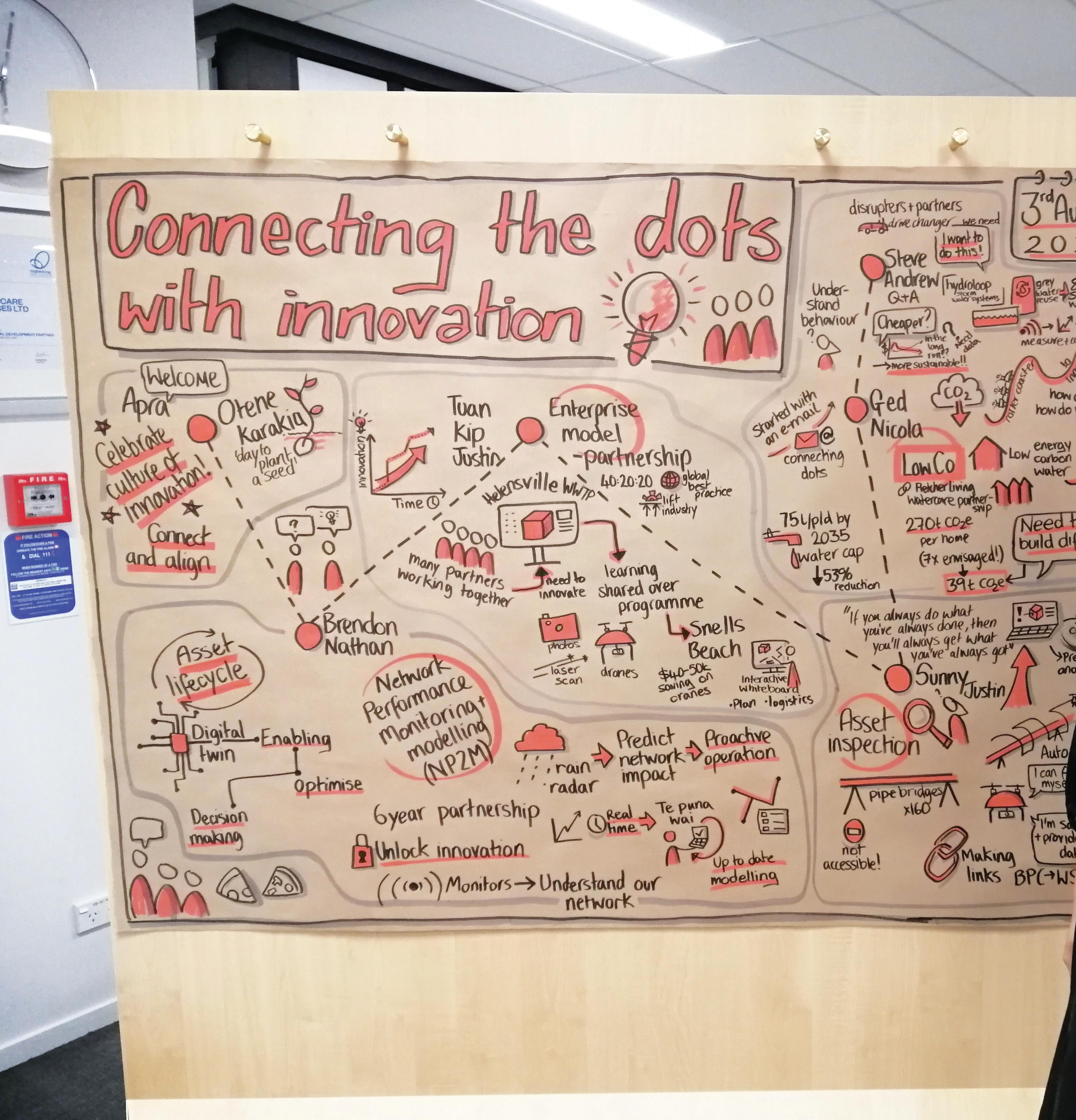
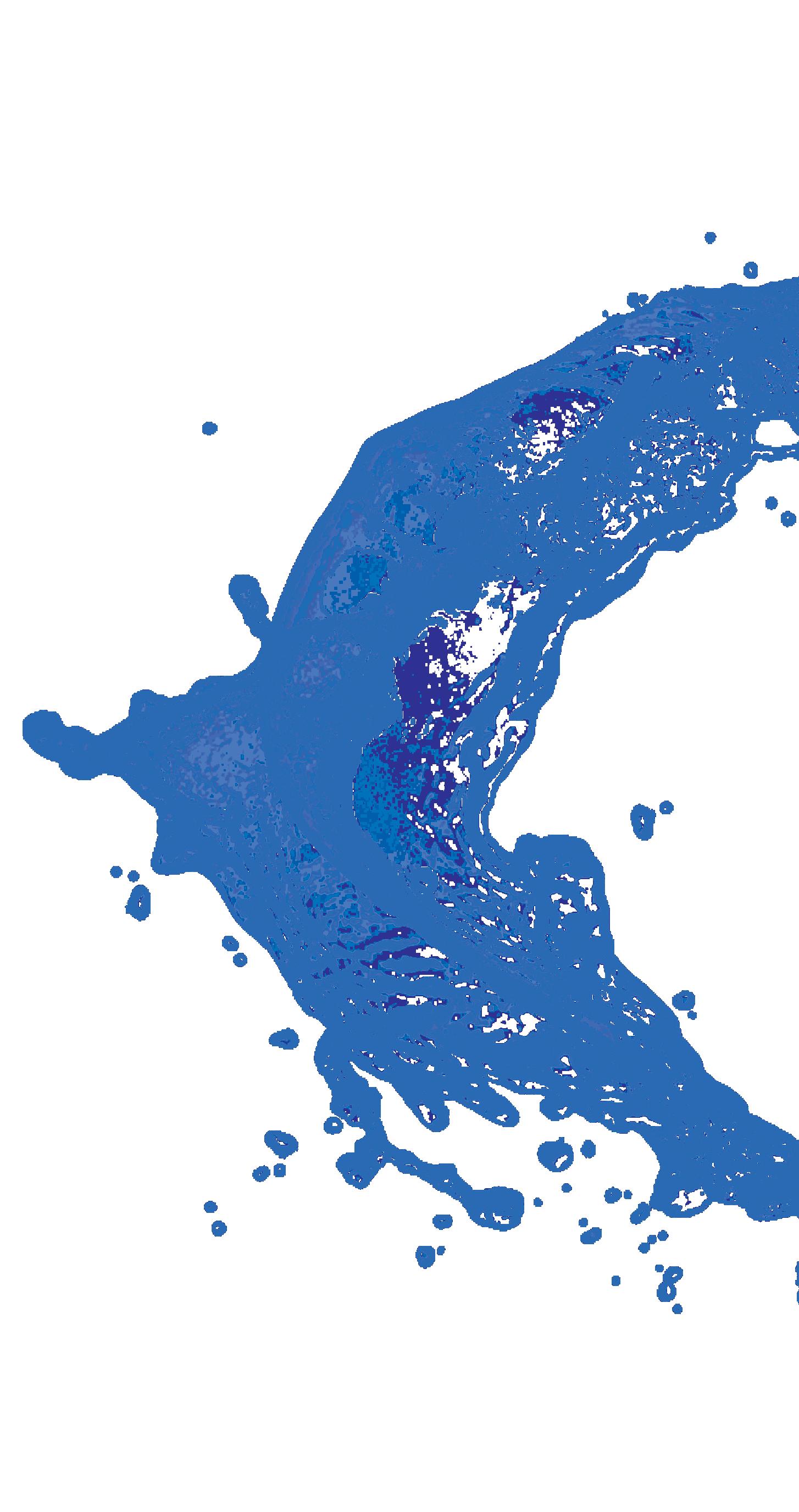

92 www.waternz.org.nz WATER NEW ZEALAND INNOVATION
ation

I’ve worked primarily as a chemical (process) engineer in the water industry across Australia and New Zealand over the past 17 years.
The shift in my professional outlook came in my time at the Advanced Water Management Centre at the University of Queensland, where academics from around the world hooked me into the global water intelligentsia. I was exposed to an intersection of diverse minds and cultures, frontier technologies and new ways of solving issues in the water sector.
One of my proudest moments as a postdoctoral research fellow was collaborating with an astrophysicist on the application of a model typically used for the motion of blackholes in space, to predict wastewater flow in a reactor.
Who says wastewater treatment isn’t rocket science?
During my six years in Australia, I was surrounded by peers who had great personal and collective capacity and openness for innovation. I put this down to them having faced decades of water insecurity through the millennium drought, which stimulated more investment and public interest in the water sector.
When I returned home in 2017 and joined Watercare as an infrastructure planner for wastewater treatment, I had some fantastic opportunities, including the chance to be on the team delivering our climate change strategy.

I learned new techniques of planning in deep uncertainty and complexity. I developed adaptive planning as a core expertise, and in 2021 was about to take up an opportunity across the ditch to explore this further.

SEPTEMBER/OCTOBER 2023 WATER NEW ZEALAND 93
Watercare’s head of innovation Apra Boyle-Gotla explains how a new ‘safe to fail’ approach to new ideas and innovation has set Watercare on a more transformative approach to tackling challenges of climate change, ageing infrastructure and population growth.
Watercare head of innovation Apra Boyle-Gotla at an innovation evening
Case study: Innovation for decarbonisation
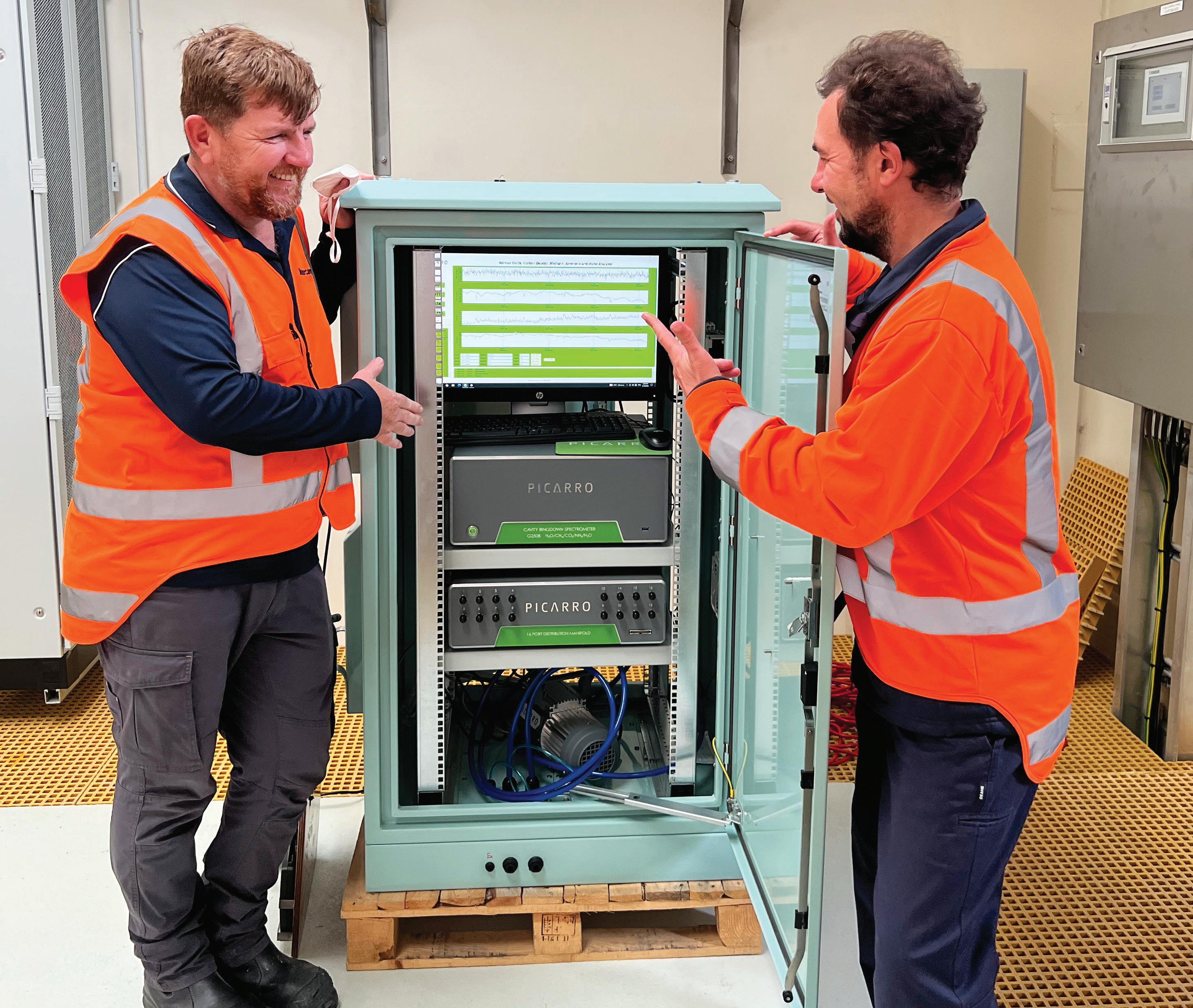
Watercare head of sustainability Chris Thurston will tell you, “Climate change is one of the largest challenges we face, and we know that traditional thinking will not be enough to reduce our emissions in line with our ambitious targets.
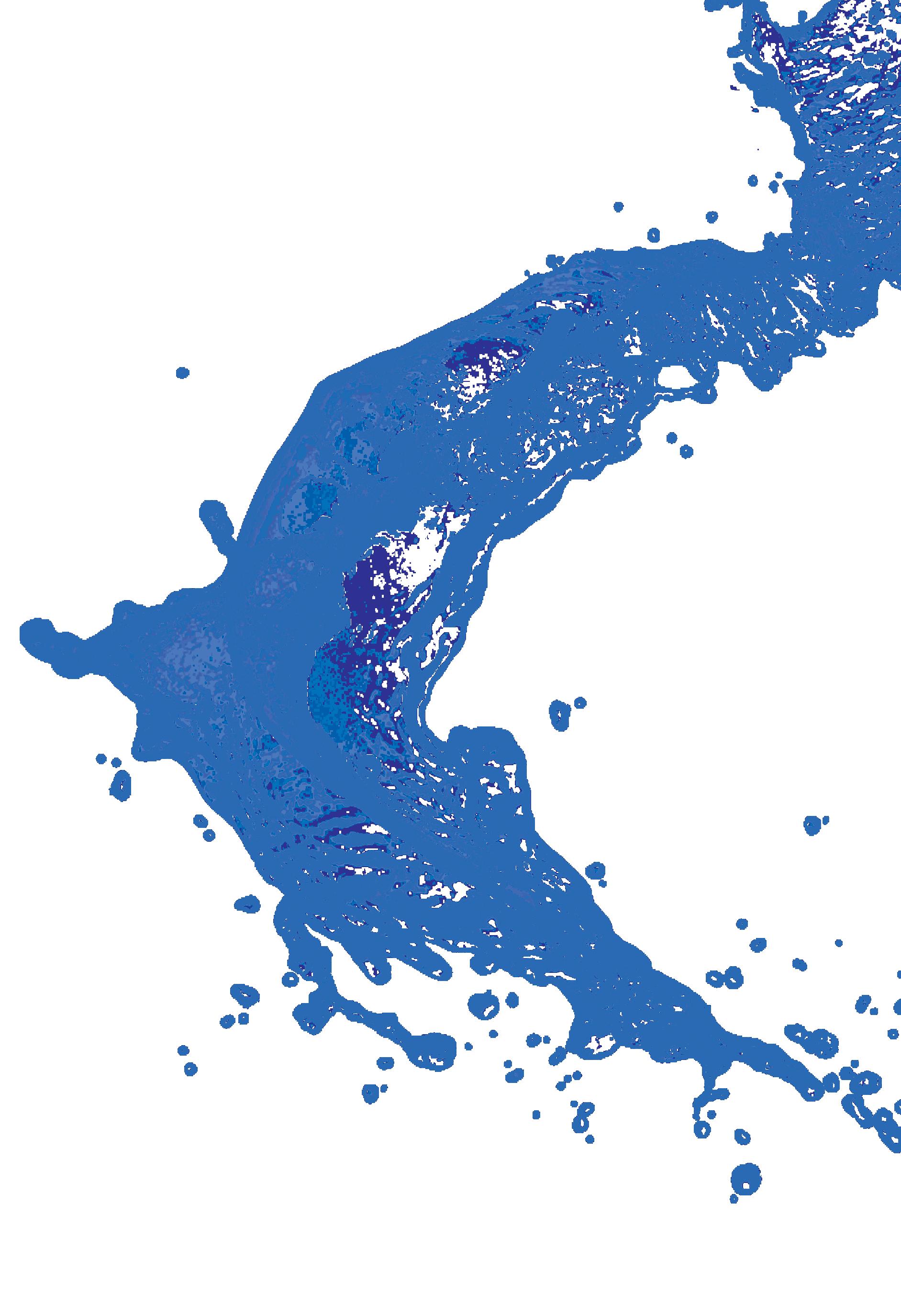
“Achieving net zero emissions is going to take a whole new way of thinking about things that is very hard to grasp. The decarbonisation innovations put us on a pathway to those being able to be considered in future years.”
Innovation is a way to achieve sustainability goals.
The innovation fund provided a way to deliver projects that might have taken two to three years to get moving once budget round and resources were applied. The
ability to conduct safe-to-fail experiments that were not tagged to traditional asset upgrades meant we could investigate pathways beyond the status quo approaches.
Some of the experiments included collaboration with Fletcher Living on LowCo, a low-carbon home pilot, development of a mobile greenhouse gas monitor for our wastewater treatment plants, and the use of advanced process and computational fluid dynamics modelling to identify nitrous oxide (N2O) hotspots at our wastewater treatment processes.
The N2O work that we progressed through the innovation fund slingshotted us to be on par with some of the leading water utilities in the world for where they are with understanding this potent greenhouse gas.
We are now well positioned to advance our measurement programme and kick start the mitigation phase. A key outcome of this successful experiment was that it provided enough learnings to inform a capex application and associated programme for N2O mitigation.
Failures were also a crucial part of informing our decarbonisation roadmap.
For example, a study on a decarbonization project discovered that, though technically feasible, it would not meet our objectives and we’d need to replace it with another project in our roadmap.
Being able to experiment and fail fast means our decarbonisation roadmap is adaptable, up to date and relevant.
WATER NEW ZEALAND INNOVATION
Watercare Rosedale Wastewater Treatment Plant staff Renier Lourens and Kenny Willliamson with the portable greenhouse gas monitor.
But, two weeks into my notice period, then Watercare chief Jon Lamonte convinced me to stay back to take on a new role facilitating innovation at Watercare. His genuine commitment to enabling a human-centred approach to innovation that encourages learning and experimentation – and the safety to fail – was clear to see.

This was an opportunity I couldn’t refuse.

With Jon’s backing, and the support of our board of directors, we put the stepping stones in place to start building a culture that embraces innovation.
Our approach was three-fold: build a framework for promoting innovation, improve internal understanding of innovation and safe-to-fail experimentation, and make resources available to enable this experimentation to happen.
The last part came in the form of a $1 million-a-year innovation fund that staff could apply for to get their ideas off the ground. This fund was crucial, and it was so good to see the business putting the money where our mouth is.
Why is innovation important?
Increasingly for the water industry, innovation is not a buzzword – it’s a crucial enabler in tackling the challenges of climate change, ageing infrastructure and population growth.
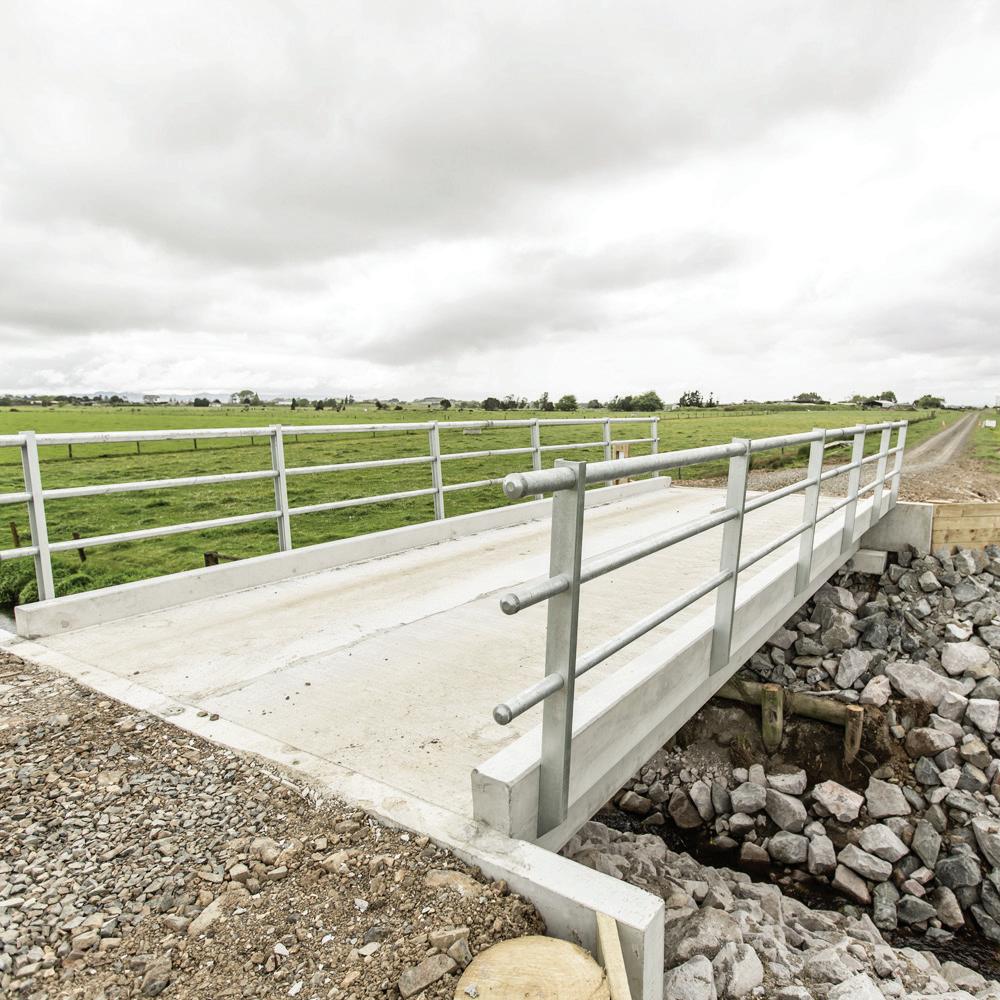
An innovation-oriented organisation is more able to shape its strategic direction during times of deep uncertainty than a conventional organisation that fails to adapt.
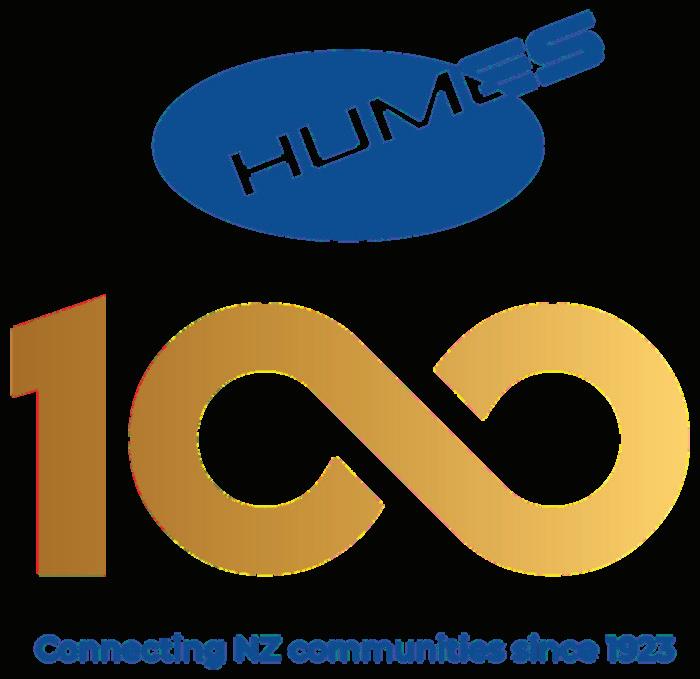
Why is innovation so hard?


In an engineering dominant worldview, the focus is often on solving problems and getting things done. This can lead to a narrow solution set.
As pressure to perform increases, new ideas are often focussed on delivering the same service more efficiently. Optimising for one set of conditions can lead to a rigid organisation that lacks the ability to adapt to change.
If new projects are selected on their ability to meet the direct needs of our optimisation strategy then we become fixated on a ‘return on investment’ paradigm.

At Watercare, we referred to this as the ‘big pipes’ problem. If we are optimised for building big pipes then we may fail to search for ideas that result in the need for smaller pipes, or no pipes.

There is also a notion that people don’t get paid to be curious. A core delivery focus can mean there’s little time for exploration and experimentation, so new ideas struggle to compete with entrenched procedures.
The framework for safe-to-fail experimentation
Innovation is an outcome of a way of working that allows for rapid testing, learning and amplification of success. It can’t be created but it can be enabled; we can create the conditions that allow innovation to emerge.
Simply generating new ideas is not enough, as many a hackathon and design thinking workshop has attempted. Ideas need the support of a coherent process.
SEPTEMBER/OCTOBER 2023 BUILDING NEW ZEALAND'S RURAL INFRASTRUCTURE AND SHAPING KIWI COMMUNITIES FOR 100 YEARS 0800 502 112 | www.humes.co.nz
Without a safe-to-fail process, we would only ever be able to progress ‘sure successes’ which means we are not leveraging genuine innovation that potentially could be transformative and offer a larger set of solutions.
After my appointment in 2021, I was introduced to Steve McCrone, a brilliant thought leader and expert in complexity theory. Steve was able to diagnose the issues and opportunities in the Watercare context in workshops with senior leaders and staff.
It was through these workshops that the ICE Innovation framework emerged. It created conditions for staff to test, learn and innovate by harnessing our business intelligence, natural curiosity, and our ability to execute.
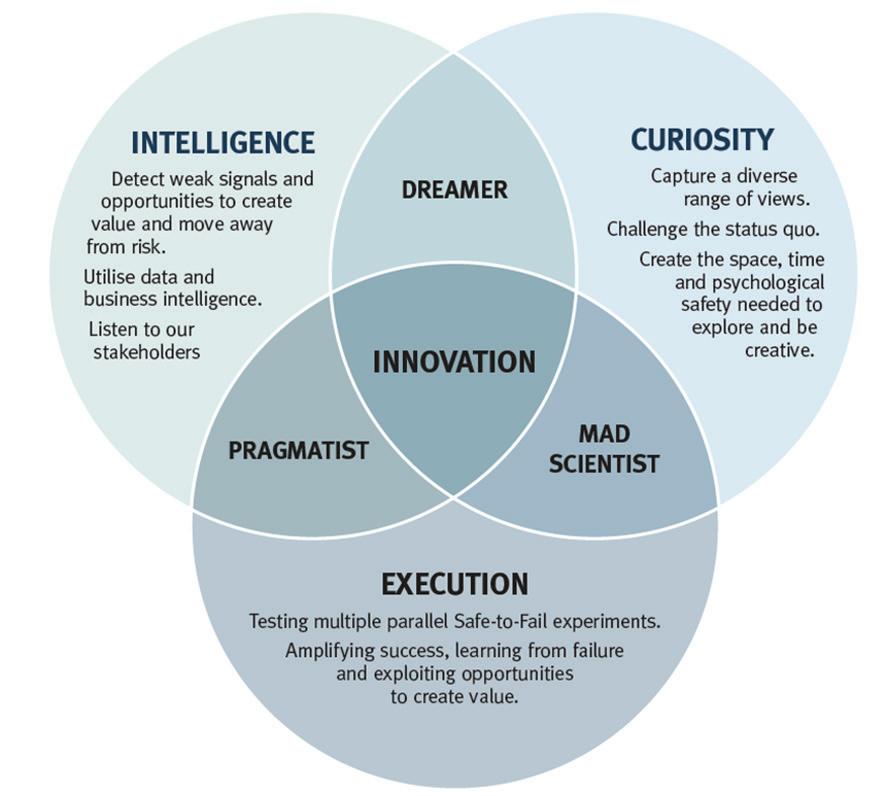
By identifying significant problems, providing the time and space to wonder how we might solve them, and then applying an exploratory approach to execution, we can better enable true innovation.
The framework in practice
To access the innovation fund, we encouraged staff members to submit an application form. The form asks the submitter a few questions to ensure coherence across the three attributes of intelligence, curiosity, and execution:
• How much do we understand the problem or the challenge?
• What could we try?
• What do we propose to action? What are the indicators of success and failure? How will we amplify a successful experiment? When will we kill the experiment?
It was important that this process was not used to bypass conventional business processes but was genuinely about exploring solutions that were safe to fail.
Successful experiments would yield practical learnings specific to the organisational context, which could then be amplified via a traditional business case process. Failures were communicated as learnings.
Storytelling and partnerships
A big part of nurturing the conditions for innovation is fostering experiments that cross organisational boundaries. These collaborations offer the seed for storytelling that shares ideas, successes and learnings and piques curiosity.
The support of our communications team was crucial in spreading the word with intranet articles, LinkedIn posts, innovation-themed newsletters and at conferences.
We hosted events for Watercare staff and our industry partners to showcase the innovative projects they were working on. Our Round the World in Innovation newsletters go out to staff bimonthly and are an excellent way of encouraging people to think beyond business as usual.
As well as recognising our own innovations, we share examples of work underway overseas in the water, wastewater, or construction space – everything from the recovery of ammonia from wastewater for use as a potential green fuel to a building material made out of seaweed.
We also created an online innovation hub where details of every experiment were outlined. It meant people could easily see what was happening in this space, the sorts of experiments being funded, and who to talk to about them.
The outcome
After two years, 28 experiments were underway, with eight completed. Six were deemed a success and two considered failures with useful learnings.
Projects spanned every part of the business and key themes included innovations in data, digitalisation and decarbonisation – key areas globally acknowledged as crucial to enabling the adaptive capacity of water utilities.
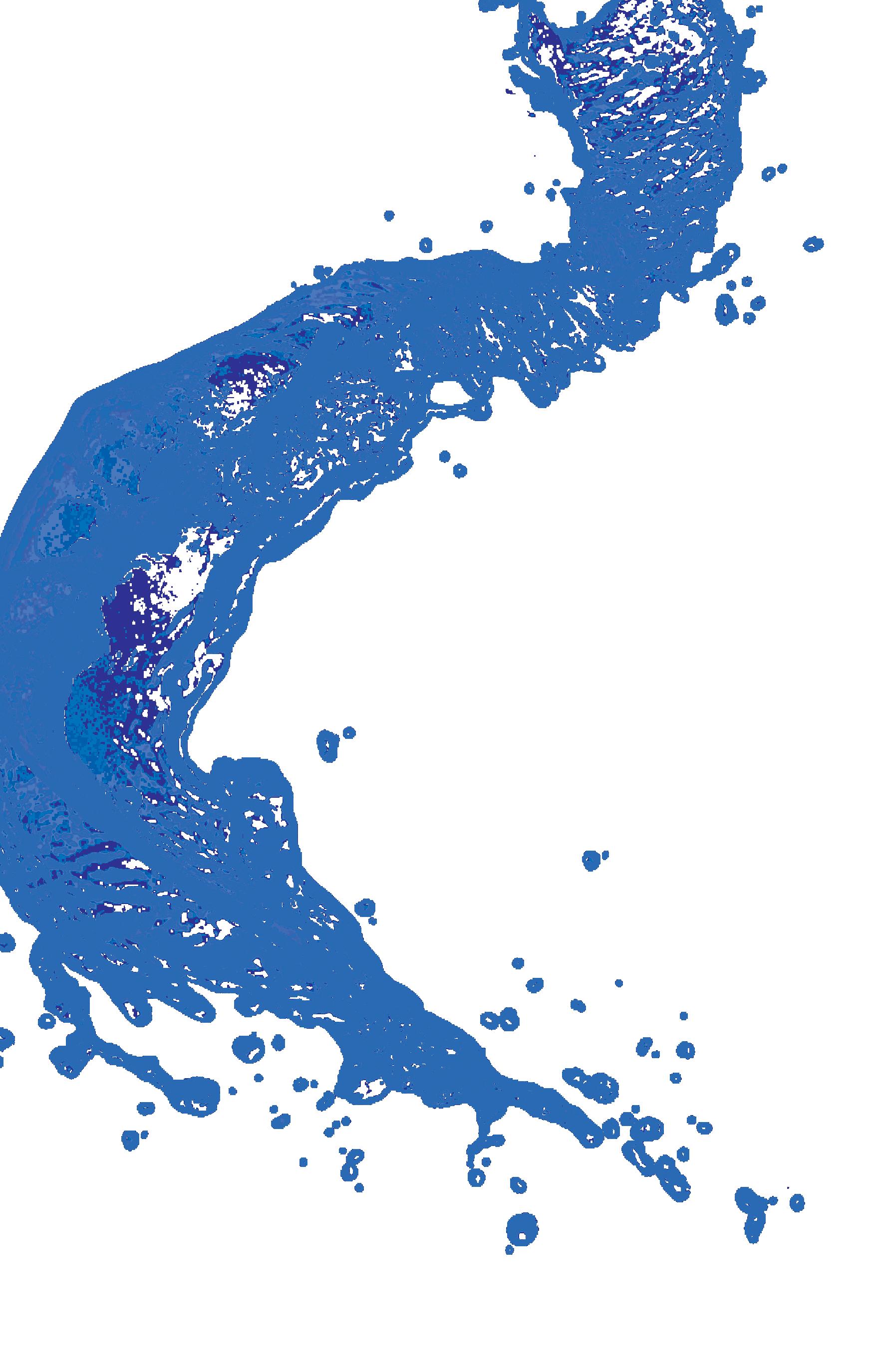
Successes have been – or are in the process of being – amplified through a business process.
To me, the failures are the most enlightening. These were often not in the technology or solution itself, but how the business is structured to bring innovation into its BAU.
For example, a solution that uses artificial intelligence to recognise complex patterns in data might not work in situations where the datasets required are siloed and require significant human resource to extract and sort, therefore defeating the purpose of a real-time, predictive AI based solution.
The learning here is therefore not about the technology itself, but about the ways in which the deeper layers of our business model and its biases get in the way – a much trickier shift to achieve from an innovation process alone.
Regardless, a positive take home here is that by enabling a safeto-fail process and funding, we have increased organic curiosity and reduced the energy required to innovate at Watercare.
Democratising the process and access to funding is critical to foster true innovation at the edges. The challenge here is to embrace the messiness and awkwardness of the process.
As head of innovation, it was a deeply personal challenge for me to stay in the edginess of this experience and to guard from well-intentioned but unhelpful efforts to formalise the process into rigidity.
I was fortunate to have strong support from the top and an advisory team of senior leaders who genuinely wanted this approach to succeed.
An ongoing journey
At the time of writing, we are in the midst of major water reform. Under these circumstances, it is critical that our gains in Watercare over the past two years are not lost.
While the idea of safe-to-fail experimentation has been embraced, critical questions in our ongoing innovation maturity are, ‘are we sufficiently amplifying successful experiments?’, ‘are we learning from failures?’ and ‘are both informing our strategic direction?’.
We’ll need to continue to challenge and change aspects of our existing business model that can create roadblocks for anything that doesn’t fit into the perception of ‘core business’.
Article provided by Watercare.
WATER NEW ZEALAND INNOVATION
ICE innovation framework
BECOME A MEMBER OF IPWEA AOTEAROA
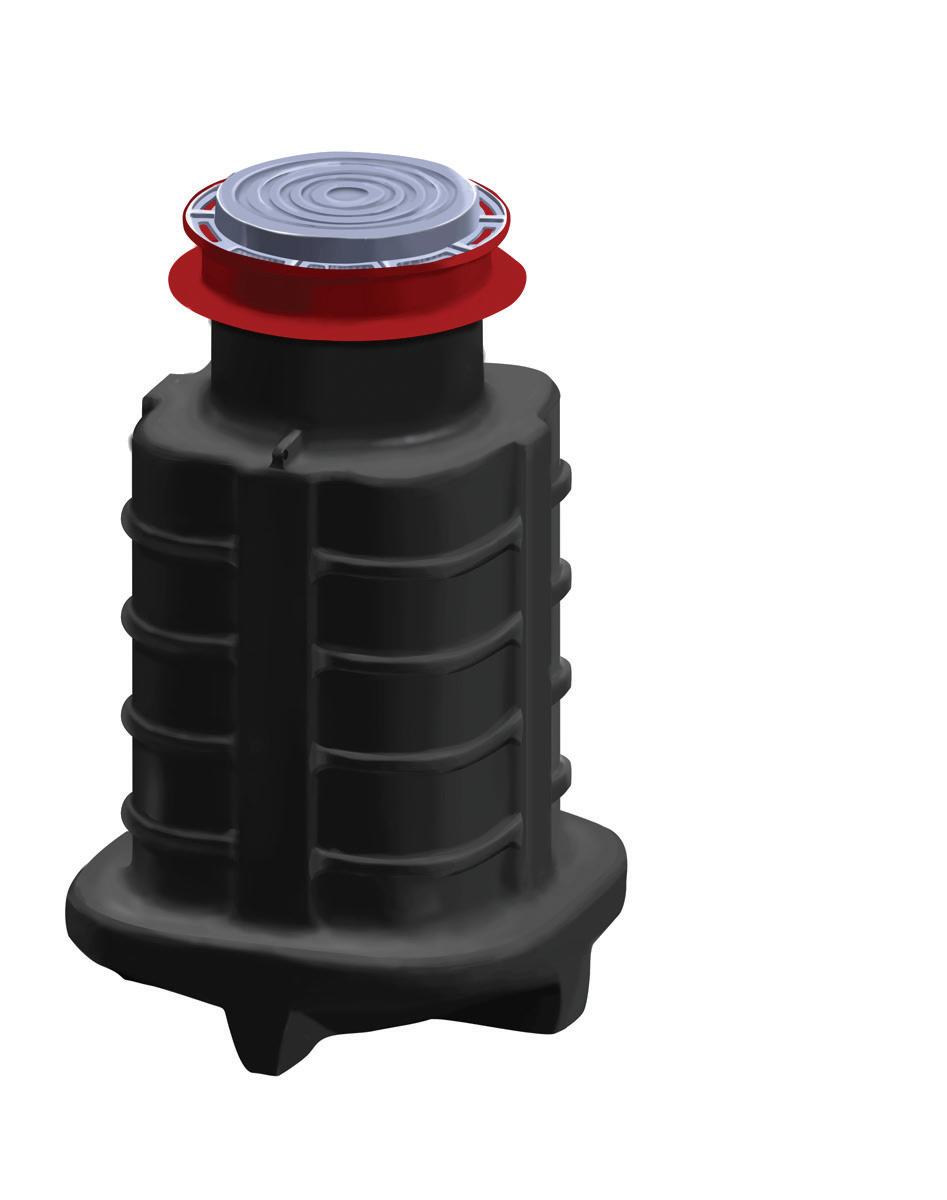
























































































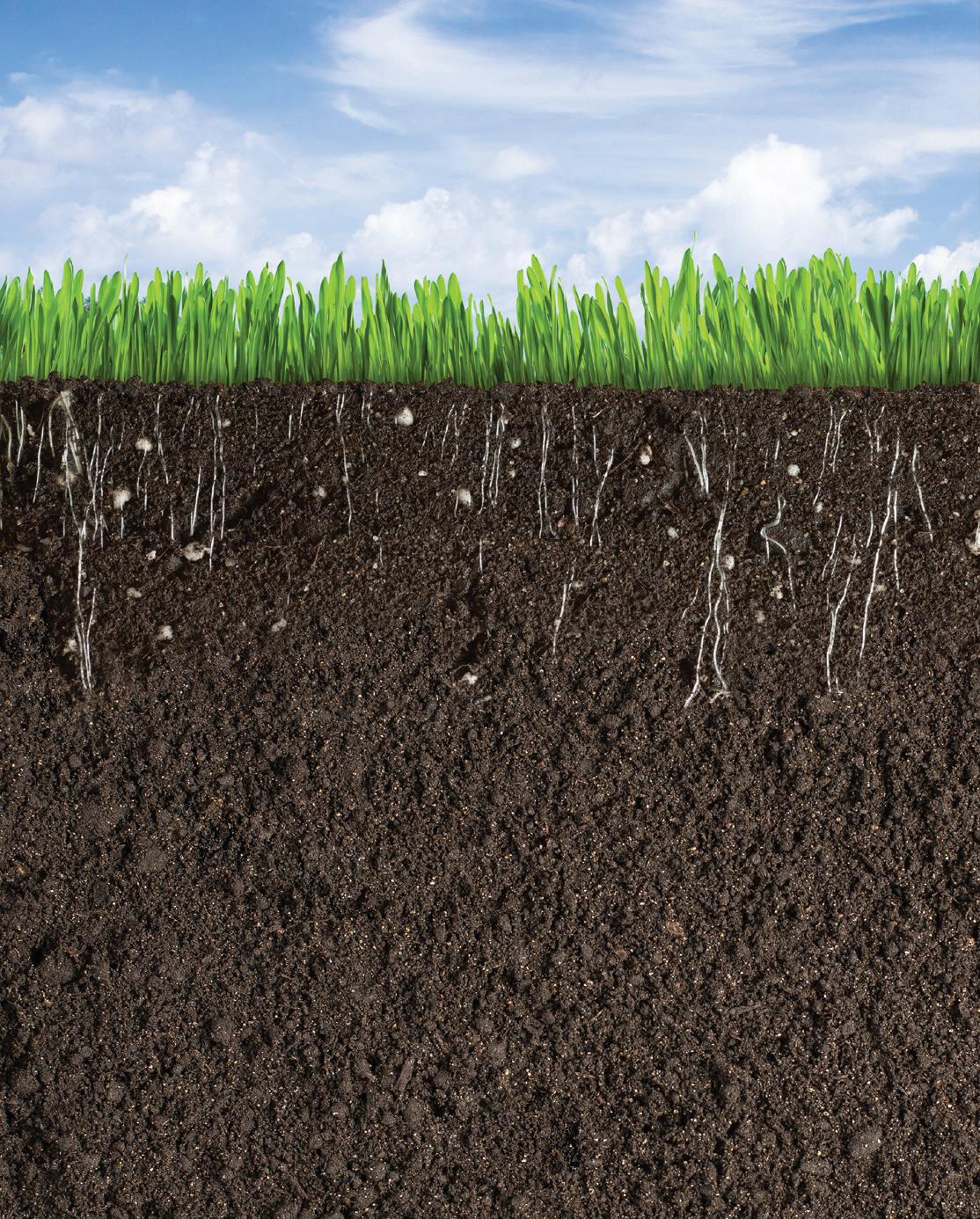
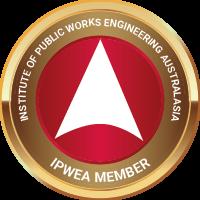
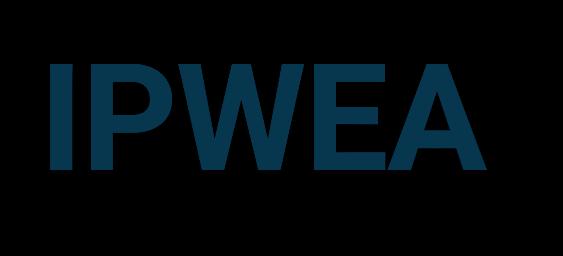





Enjoy preferential rates for the award winning, internationally accredited IPWEA Asset Management Pathway courses.












Be part of a global network of water engineers, public works and infrastructure asset management professionals.
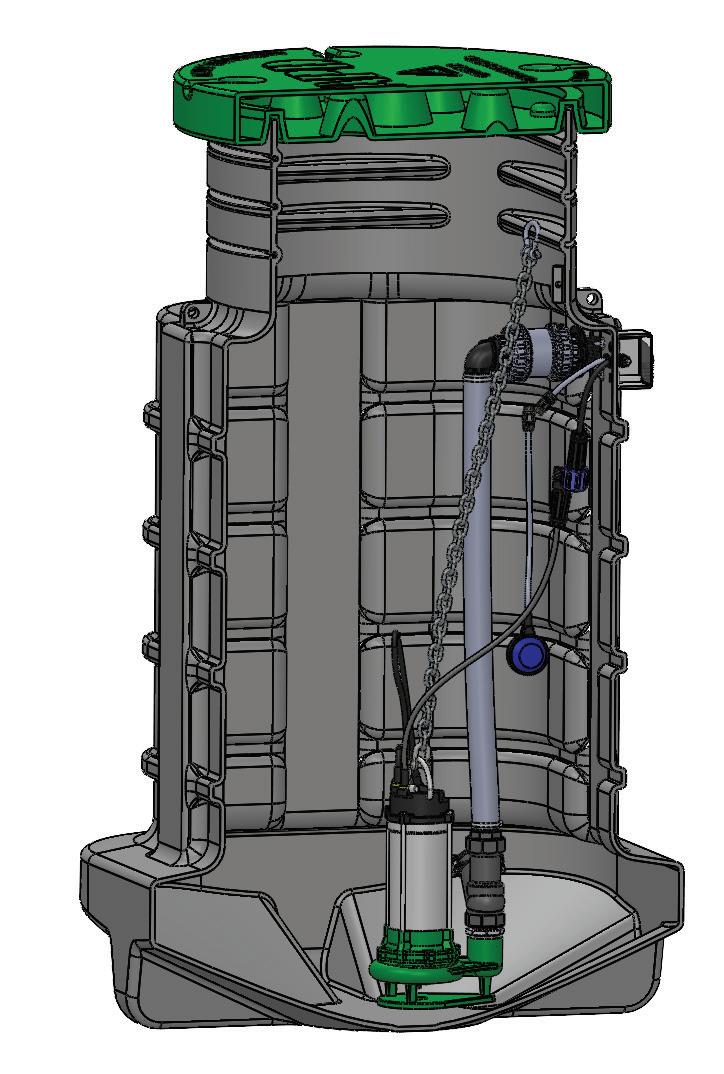

Access to our exclusive Aotearoa scholarships to support your career

















• • • • • • •
Human capital - a solution to the water crisis
By David Jenkins, CEO, IPWEA
Key to any long-term solution to New Zealand’s water crisis is an investment in human capital, which has the focus and expertise to manage the nation’s water resources equitably and sustainably.
Technology improvements are important, and New Zealand has a welldocumented water infrastructure deficit, estimated by the Government at as much as $96 billion over the next 30 years. This is counter-intuitive because no projected gap should exist if long-term financial plans balance with the forecast performance, cost ,and risk trade-offs communicated in the supporting asset management plan.
Technology, infrastructure, and risks, however, will not manage by themselves. Arguably the human component is key, and that is why IPWEA (Institute of Public Works Engineering Australasia) supports the professional development of infrastructure asset managers with the right skill set to implement and communicate change and take a long-term holistic view of water resource management.
Given the critical nature of the crisis, these professionals should be specialists in managing infrastructure investments and be able to leverage technology and techniques from best practice examples worldwide and bring them to New Zealand.
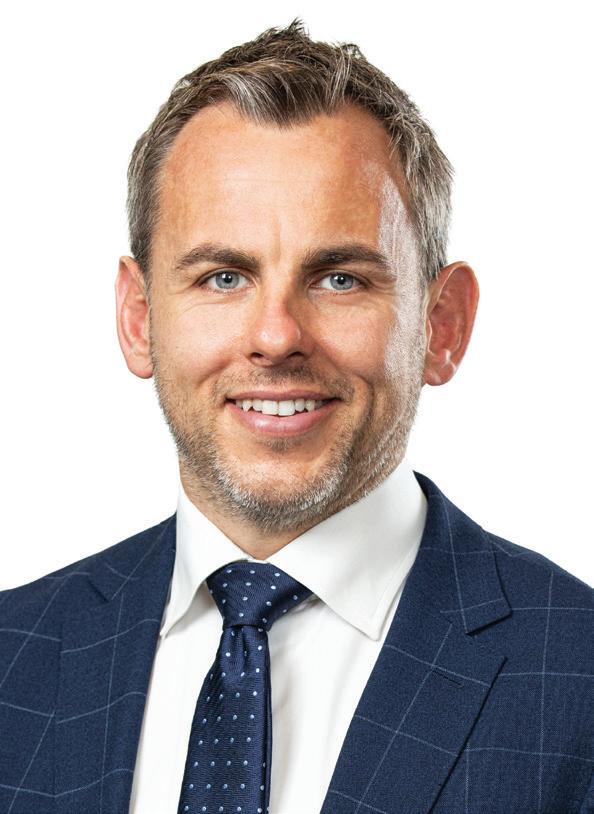
Their expertise should also drive better performance from new and existing infrastructure, improving the return on investment of funds planned and already spent.
IPWEA agrees that water reform is necessary. The recent overhaul allows new Water Services Entities to borrow funds to invest in the infrastructure needed. As they invest in infrastructure, they should also invest in the professionals to manage it for the long-term.
This has had proven success in other jurisdictions. In Columbus, Ohio, the
city launched a comprehensive revamp of its water division beginning in 2008 and took an asset management approach which included a dedicated headcount of water management professionals.

The city was seeking to address a rapidly increasing break rate on water mains, and implemented an asset management approach which targeted the infrastructure which need to be replaced quickly.
Critical to the success of the programme was a comprehensive approach enabled by having a staff dedicated to managing the assets. These professionals were able to think more long term because they were removed from day-to-day operations, and this allowed them to be more innovative in their approach to problems.
Closer to home in Singapore, the Public Utilities Board has embarked on a holistic approach to water management, and this includes investing in the Singapore Water Academy, an institution committed to specialised training.
Through competency-based curricula, professionals specialising in water management are equipped with the skills and knowledge they need to perform their roles to the highest standards.
New Zealand’s recent experience has shown that stewardship of water assets has been found wanting, due not only to the current structure of the responsible organisations but also underinvestment in infrastructure and human capital.
The capability deficit must be addressed and a larger and increasingly more capable workforce must be developed for significant improvements.
New Zealand is not alone in the water infrastructure challenges it faces. Singapore has come a long way in achieving universal access to affordable and high-quality water. It has taken a multi-pronged approach including investing in capacity building programs. There will be learnings from the Singaporean journey.
Organisations such as Water New Zealand and the Department of Internal Affairs have recognised that the country will need to add thousands of new roles across multiple levels if the timeframe for reform is to be met.
Many of these roles are labourintensive and physical, and filling them raises issues around immigration levels and the risk of losing potential workers to Australia and elsewhere.
At the professional leadership level, some positions can be filled through recruiting from offshore. Still, the longterm solution is to build a generation of local professionals with expertise in water asset management.
This will require professional development pathways and collaboration between organisations such as IPWEA and tertiary institutions to deliver the professionals the country needs now and into the future.
If New Zealand doesn’t develop those skills, we won’t be giving moves to restructure water management and invest billions in new infrastructure the best chance to succeed.
98 www.waternz.org.nz WATER NEW ZEALAND COMMENT
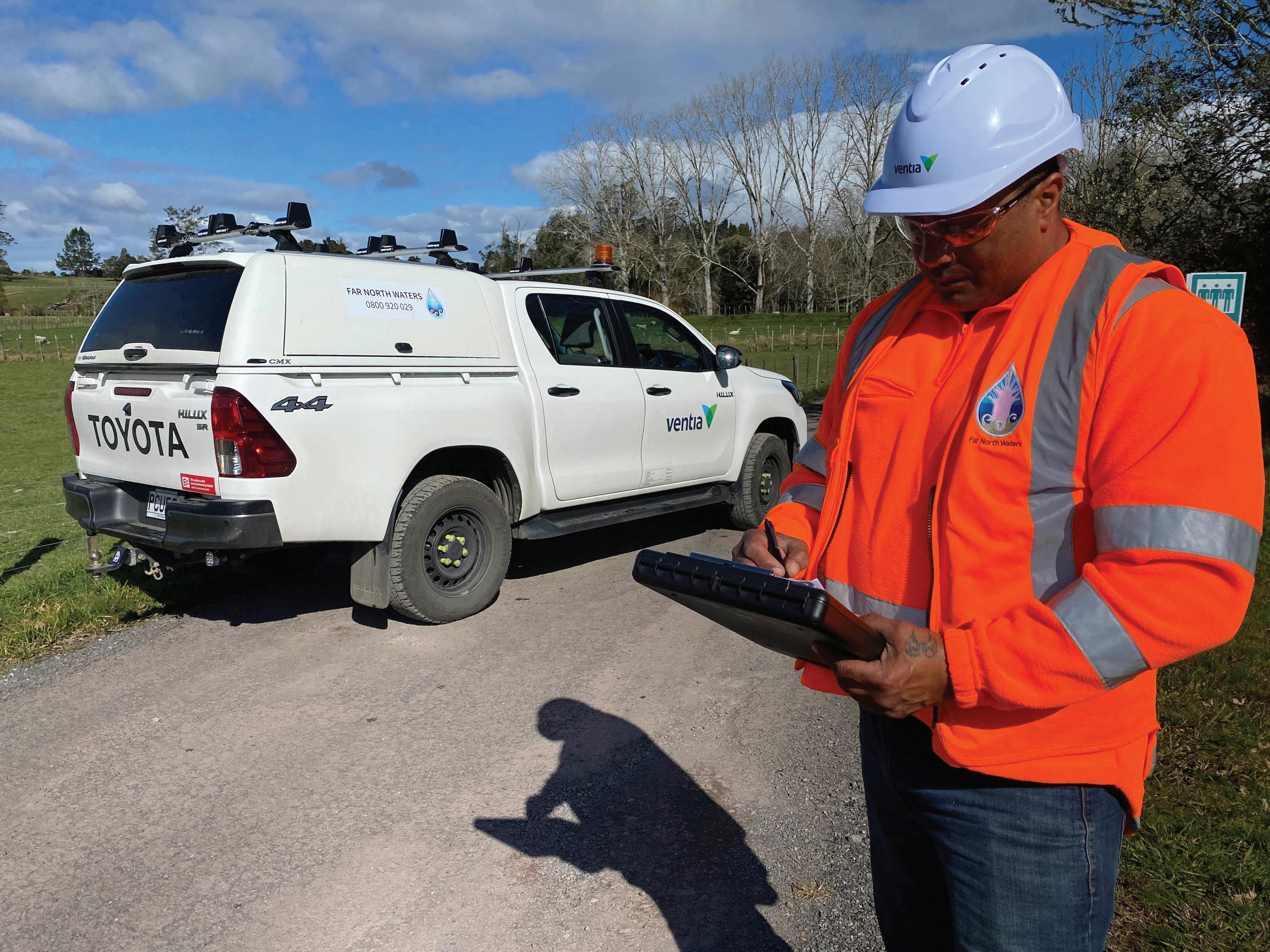
A streamlined methodology for source risk management plans
By Maria Johnson, water sector lead, GWE Consulting Engineers

It cannot be overstated the critical role that source water protection plays in maintaining public health.
New Zealand’s drinking water reforms and regulations changes have been driven by waterborne disease outbreaks and contamination events, prompting the government and the regulator to impose more stringent requirements, including the Water Services Act 2021 and proposed amendments to the National Environmental Standards for Sources of Human Drinking Water (NES-DW).
These documents mandate more rigorous requirements for drinking water suppliers to assess and manage risks to their source waters, specifically the preparation of Source Water Risk Management Plans (SWRMPs).

In response to feedback on challenges faced by water suppliers, such as the boundaries of the catchments to consider, the type of information and potential hazards to look for, or questions such as whether neighbouring bore searches are providing useful information, we employ a streamlined methodology.
This type of approach guides suppliers through efficiently developing customised SWRMPs, tailored to the unique characteristics of their supply and surrounding risk context.
An approach such as this must be thorough enough so that no aspect is missed or overlooked but streamlined to only focus on the identification of relevant potential hazards and risks associated with the specific source waters. The key benefits are saving suppliers time and resources in unnecessary information request and research, while ensuring that no bespoke potential hazard or risk to the specific source waters are omitted.
The first step in developing a customised SWRMP is to categorise the type of source water used, whether surface water, groundwater or rainwater harvesting. Each source type has distinct considerations. Step two: With the source water classified, drinking water suppliers map out targeted Source Water Risk Management Areas
(SWRMAs) surrounding their abstraction points based on specifications in the proposed NES-DW.
Delineating SWRMAs enables suppliers to focus their risk assessment and control efforts within defined zones representing escalating proximity to the source water intake or abstraction point.
• SWRMA 1 covers the immediate vicinity around the intake where contaminants could potentially impact raw water quality within hours or days.
• SWRMA 2 encompasses the contributing catchment area supplying water to the intake, requiring management of risks that could manifest within weeks or months.
• SWRMA 3 represents the entire catchment and recharge zone for the source water, warranting surveillance for persistent contaminants that could eventually migrate from this wider area. Step three: With SWRMAs mapped, drinking water suppliers gather and analyse publicly available information to build an understanding of potential hazards and contaminating activities within each zone relevant to their source water type.
Useful data includes regional and district council resources related to land use, resource consents, water quality monitoring data, contaminated site listings, and hydrogeological maps.
It is worthwhile noting that while rainwater harvesting doesn’t have defined SWRMAs, it is still vital that water suppliers address potential hazards relating to source water management, using the same resources and information available.
Step four: Key findings from the source water risk assessment are then integrated into the supplier’s broader Water Safety Plan through risk characterisation and tailored preventive measures, treatment upgrades, enhanced monitoring, incident response plans, and contingency plans. This ensures suppliers proactively implement appropriate control measures while preparing effective responses if the water supply is at risk.
Simple flowcharts can also serve as practical tools for responding to transgressions and provides clear guidelines on procedures to follow in these situations.
SWRMPs must be living documents, requiring regular updates and continuous review to ensure they remain relevant to changing context and evolving risks.
Updates through two-way communication channels between regional councils and water suppliers enables prompt identification of changing or new emerging risks within water supply catchments.
In addition, by keeping a close eye on the State of Environmental Monitoring for managing trends on water quality, suppliers can make informed decisions and modifications to their risk management strategies.
It is important to highlight the importance of integrating SWRMPs into the broader framework of Water Safety Plans to ensure that all aspects of the water supply system are considered and addressed adequately.



Moreover, it is part of all suppliers’ duty of care under the Water Services Act 2021 to carry out a certain level of source water risk assessment, regardless of their sizes; even when adopting alternative compliance pathways such as Acceptable Solutions.
In summary, this type of streamlined methodology provides a roadmap for efficiently developing customised SWRMPs that form the foundation of drinking water safety and proactive risk management programmes for all water supplies, regardless of their types, sizes, compliance level or registration status, benefiting all who rely on access to safe drinking water every day.
100 www.waternz.org.nz WATER NEW ZEALAND COMMENT
We take your data beyond reproach so it reflects operational conditions which means you can manage data health for ongoing quality




We’re shining the spotlight on mark@wateroutlook.com +64 22 649 9657 wateroutlook.com 17-19 October 2023 – Booths 143 & 144 For more information contact Mark Homenuke Come and see us at the Water New Zealand Conference and Expo Total data security Satisfies audit Putting your data into your hands High data certainty levels Data not altered by transmission Chain of custody verified CALIBRATION VERIFICATION REPLICATION HEALTH CHECK Is the instrument reading within expected range and accuracy? Are field measurements being used for analytics? Is onsite data being replicated? Is there reason to be suspicious of the data?
Plastic pollution in NZ lakes on par with northern hemisphere
The level of microplastic pollution in spme of our lakes is comparable with those in the US or Europe, despite much lower population densities, according to our global analysis of plastic pollution in freshwater lakes and reservoirs, writes Deniz Özkundakci, associate professor of lake and freshwater science, University of Waikato.
Globally, our results show two types of lakes are particularly vulnerable to plastic contamination: those in densely populated and urbanised areas and large lakes with long water retention times.
In some lakes, we found plastic fragments are accumulating at higher concentrations than in the so-called ‘garbage patches’ in the ocean.
Of the three New Zealand lakes included in the study – Rotorua, Taharoa and Wiritoa – microplastic pollution was highest in Lake Rotorua, equal to lakes in the northern hemisphere with much larger populations living along their shores.
Our study is the first to develop a standardised protocol for looking at microplastics in lakes and across a range of environmental conditions. This allows us to quantify the pollution, compare lakes and extrapolate results from these case studies to other systems.

Globally, lakes in or near built-up areas were significantly more polluted than those in less populated areas. But not a single lake in this study was unaffected by plastic pollution, no matter how far it was from human activity.
The findings for New Zealand lakes are disappointing for a country that prides itself on a green image. Discovering this much plastic in lakes is a reflection of our current state of environmental ethics and stewardship.
We need to become more aware of the effects of our use of products with short life cycles to lessen the environmental degradation that results from their disposal.
Lakes as sinks for pollution
The global lake ecological observatory network (GLEON) collected samples for our analysis. The samples cover 38 lakes across 23 different countries and six continents.
While a lot of research has investigated microplastic pollution in the ocean, there are very few studies on microplastics in freshwater ecosystems. But most lakes are long-term sinks for contaminants
and pollutants, including microplastics.
We specifically measured levels of small plastic particles, from microplastics to macroplastics, measuring 5-10mm in diameter.
We found mostly fragments and fibres of plastics that are generally considered easy to recycle – not the hard-to-recycle plastics currently being phased out in New Zealand.
This means we have to investigate more closely how these easily recyclable plastics remain in the environment and get into lakes. But, the issue of plastic debris in lakes is severely understudied in here.
Ecological impacts
We collected and filtered hundreds of thousands of litres of water to have representative samples for each lake.
Some of the smaller fragments, which were predominant in the samples, are small enough to be ingested by various organisms, mostly fish and filter feeders such as freshwater mussels.
I worry that we underestimate the effects of plastics on the food web. Although our samples represent a snapshot, we know our lakes are home to a diversity of native and introduced fish and mussels, some of which are harvested.
Plastic pollution in lakes could also impact sources of drinking water. We are concerned about growing evidence of chemical leaching from plastics into water.
One of the most important things we should take away from this work is that it serves as an early warning. To identify the extent of plastic pollution across our lakes, a nationwide baseline survey, using the same standardised methodology, would be a good starting point.
The next step would be to better understand the sources and identify any hotspots of microplastics to inform management to reduce the level of pollution.
This article first appeared in The Conversation.
102 www.waternz.org.nz WATER NEW ZEALAND
POLLUTION
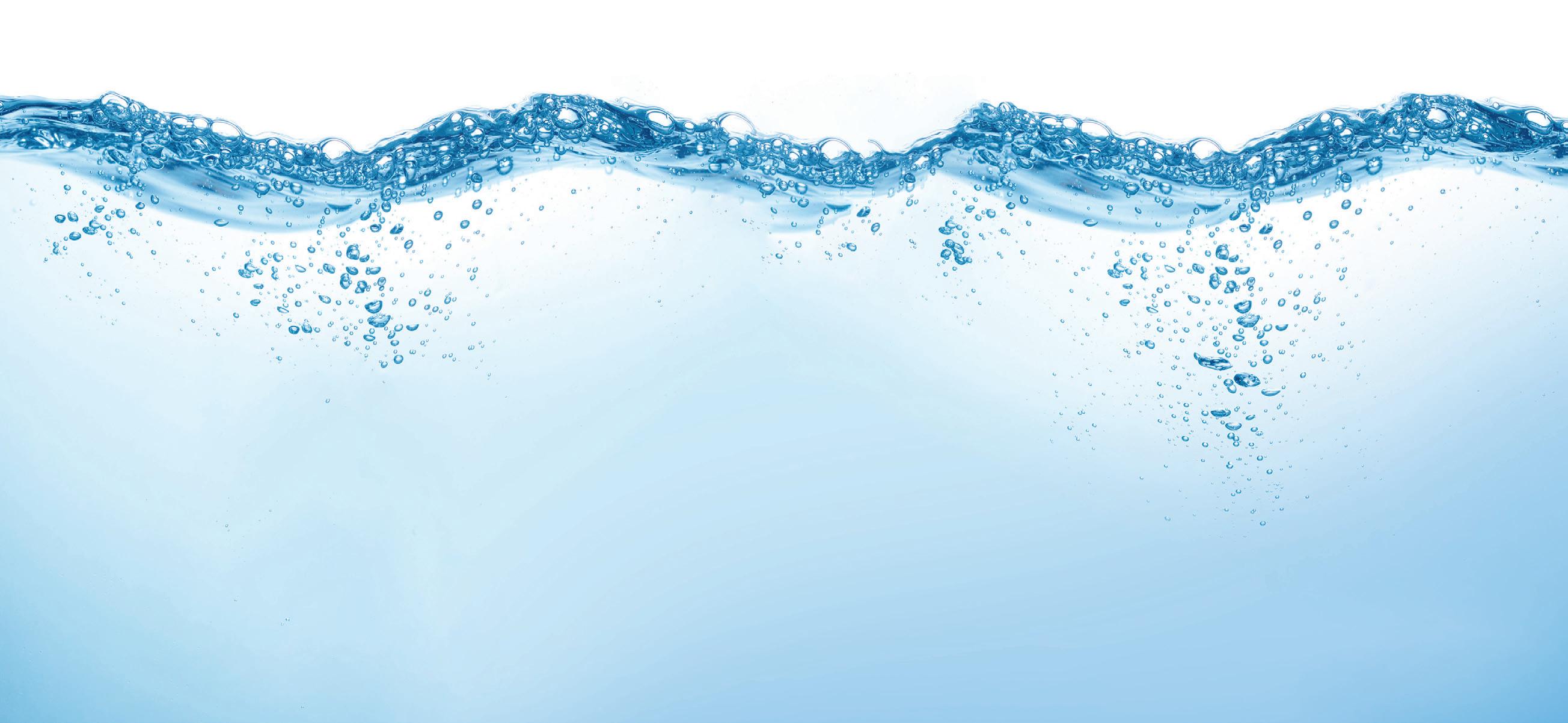
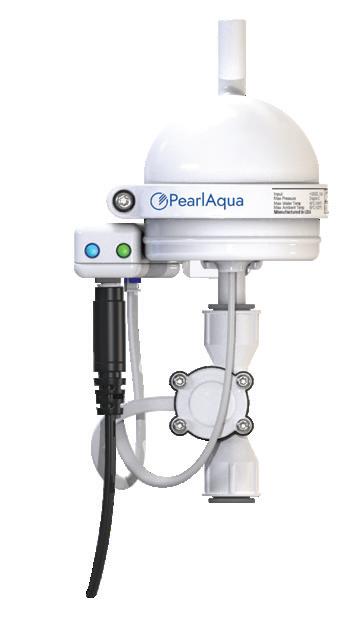

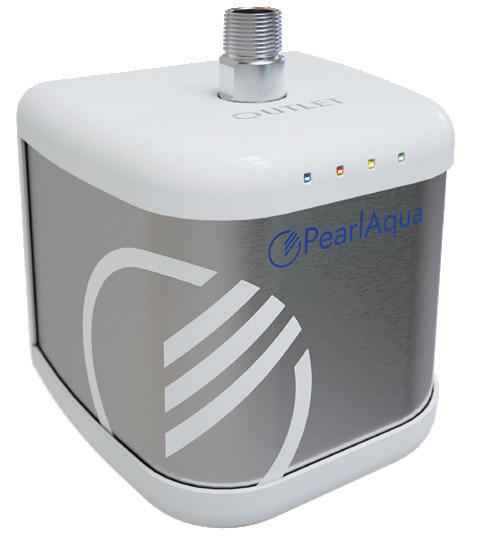
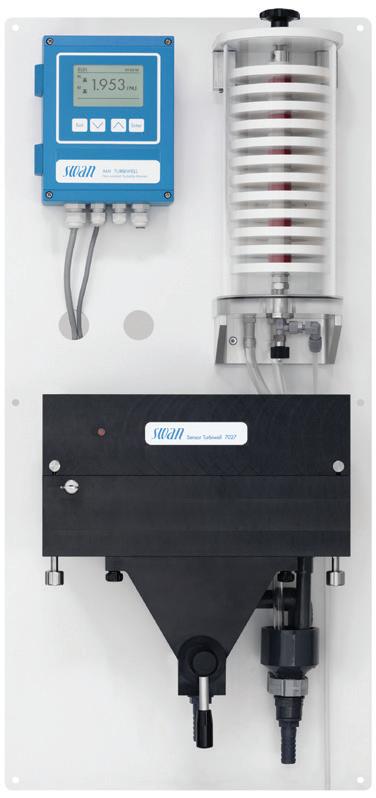
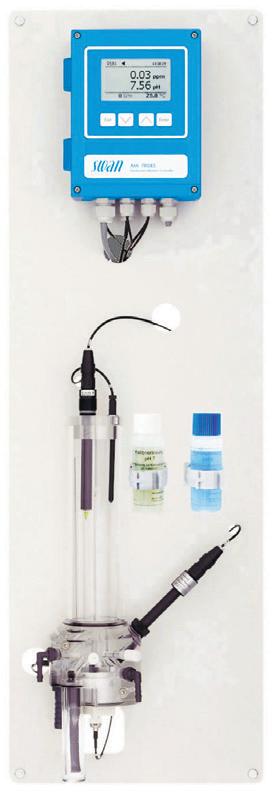
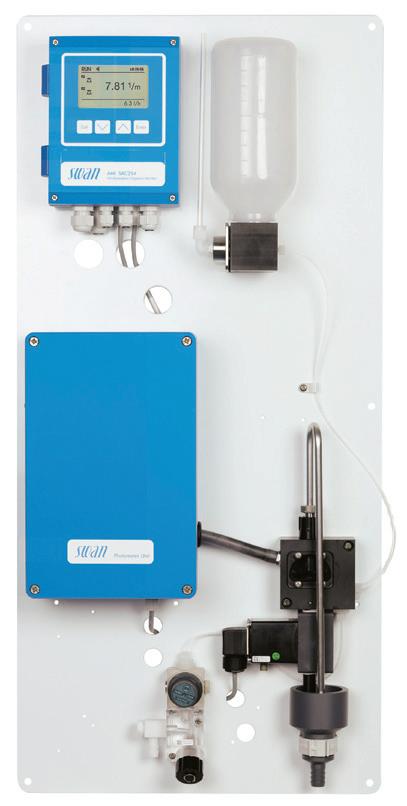
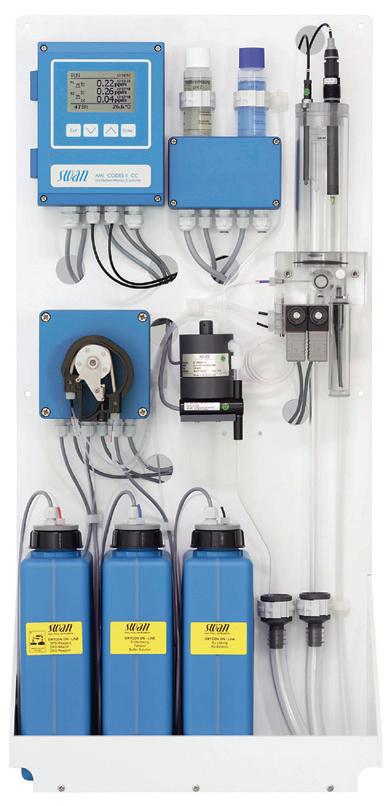






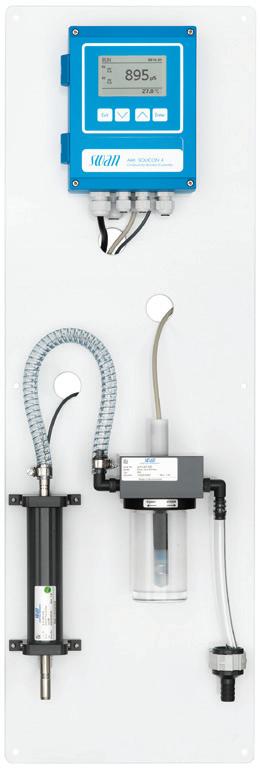
WORLD’S LARGEST SUPPLIER OF UV-C LED DISINFECTION SYSTEMS PearlAqua Deca™ Whole house Up to 45 Ltr/min PearlAqua Micro™ Point of use Up to 8 Ltr/min aquisense.co.nz • sales@aquisense.co.nz • 09 213 7191 PearlAqua Tera™ Municipal Safe drinking water without the use of harmful chemicals THE FUTURE IS MERCURY-FREE! LED UV-C IS HERE! Certified by NSF International against NSF/ANSI 55 AMI Labour savers: 4 Minimum maintenance 4 3 year electronic warranty 4 Minimum down time 4 Pre-factory calibrated - plug & play 8” to 20” flange sizes available Complete drinking water monitoring systems AMI Turbiwell (Turbidity) AMI Codes-II CC Analyser (Chlorine) AMI SAC254 (UVT/Organics) AMI Trides (Chlorine) Drinking water, waste water, recycled water and environment monitoring Swiss Design Swiss Manufacture Swiss Quality Swiss Reliability We are proud members of the below associations: Other parameters we can measure: Total Alkalinity • Aluminium • Ammonium • Colour • Total Hardness COD (Permanganate) • Chloride • Total Iron (Dissolved) • Manganese • Phenol SWAN Analytical New Zealand Ph: 09 213 7191 • sales@swan-analytical.co.nz swan-analytical.co.nz AMI Solicon 4 Analyser (with Delta T) (Conductivity)
Sale of single-use plastic water bottles banned at LAX
Los Angeles World Airports (LAWA) has prohibited the sale of single-use plastic water bottles at Los Angeles International Airport (LAX) and Van Nuys Airport (VNY) as part of its bold sustainability plan to reduce plastic waste at LAWA facilities and move toward zero waste.
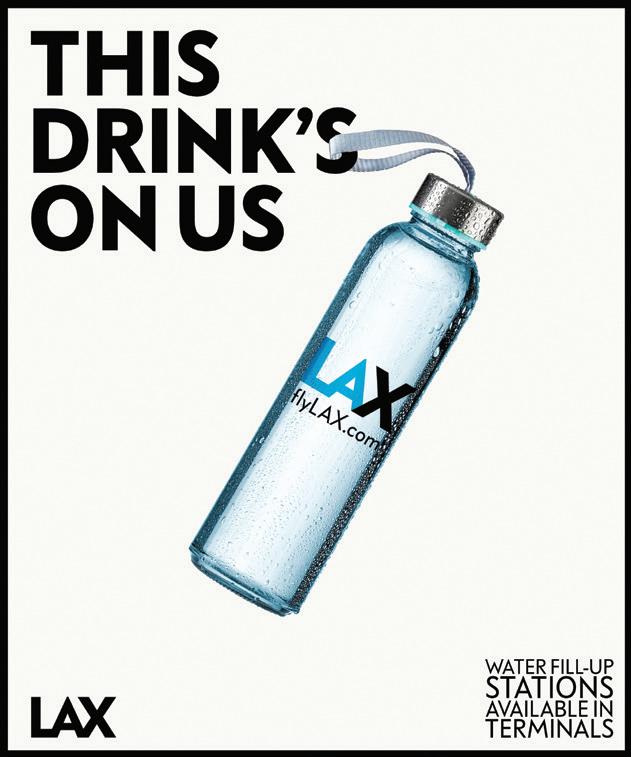
“The climate crisis is a great challenge facing our city, and phasing out single-use plastic water bottles at LAWA facilities is an important step to reducing our environmental footprint and protecting the health and livelihood of all Angelenos,” says Los Angeles Mayor Karen Bass.
“I want to thank LAWA for serving as a leader among airports around the world working to achieve a more sustainable future.”
In June 2021, as part of L.A.’s Green New Deal, the Los Angeles Board of Airport Commissioners (BOAC) unanimously approved phasing out single-use plastic water bottles by June 30, 2023. The twoyear phase-out period allowed airport businesses to use up inventories of plastic water bottles and modify purchasing contracts before switching to compliant products.
Under the policy, LAWA and businesses with lease or concession agreements at LAX and VNY were required to
substitute single-use plastic water bottles with containers made from sustainable alternatives, including recyclable aluminium or glass.

In addition to restaurants, concessions and lounges, the policy also applies to vending machine providers and airport events.
Pre-packaged single-use plastic bottles of all sizes containing non-carbonated and unflavoured purified water, spring water, mineral water, artesian water, well water, tap water, and electrolyte-enhanced water are subject to the policy. Bottled water served onboard aircraft is exempt.
In anticipation of the ban on singleuse plastic water bottles, the Los Angeles Department of Water and Power worked in partnership with LAWA to install additional hydration stations throughout LAX’s terminals to provide passengers with convenient access to drinking water.
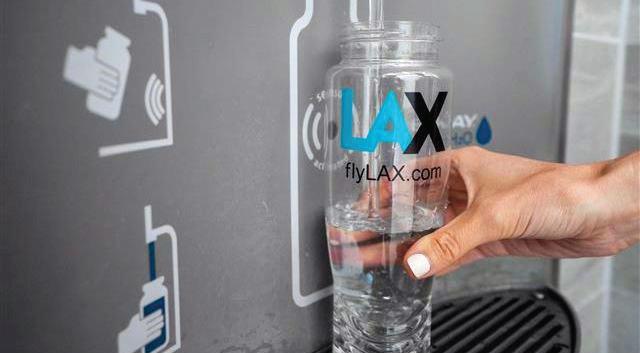
The hydration stations are currently maintained by the LAWA Facilities

Management Division and are inspected and repaired as part of a regular maintenance program.
“We encourage our guests to help us reach our goal of eliminating plastic waste at the airport by bringing a reusable water bottle and filling it up at one of our many hydration stations,” says Justin Erbacci, chief executive officer at LAWA.
“Eliminating single-use plastic water bottles is essential to improving our environment and enhancing sustainability across our airports.”
Waste reduction and water management are just two important elements of LAWA’s Sustainability Action Plan, which includes plans for LAX and Van Nuys Airport to achieve net zero in the following areas by the year 2045: no potable water consumed for non-potable uses, and zero carbon emissions from LAWA operations. LAWA is also committed to using 100 percent renewable electricity by 2045.
Article provided by LAWA.
104 www.waternz.org.nz WATER NEW ZEALAND SINGLE USE PLASTIC
The Water Services Act 2021 introduces a new regulatory approach and some new responsibilities for drinking water suppliers.
Following public consultation, new Drinking Water Quality Assurance Rules, Drinking Water Standards, Aesthetic Values and three Acceptable Solutions came into effect for registered suppliers on 14 November 2022.
From 4 October 2023, our role in relation to the environmental performance of wastewater and stormwater networks will begin.
Find out more at: taumataarowai.govt.nz
Me kōrero | Let’s talk
Taumata Arowai is pleased to be the official Regulatory Partner for the Water New Zealand Conference and Expo 2023.
Monday 16 October – Preconference Workshop
Find out more about:
• Our regulatory approach and where we are heading
• Te Mana o te Wai across our regulatory system
• Insights from drinking water safety plan reviews

• One year of living with the Drinking Water Quality Assurance Rules.
Thursday 19 October – Regulator’s panel at the conference
Join Allan Prangnell, Chief Executive of Taumata Arowai, along with other regulators for a panel discussion.
Visit our expo stand during the conference to kōrero with the team. Register for the Preconference Workshop and conference at waternzconference.org.nz
We’re here to help make sure everyone has access to safe and reliable drinking water every day.
Wai ora. Tangata ora. Healthy water. Healthy people.

The dark side of artificial greening:
Plastic turfs are widespread pollutants of aquatic environments
 By William P. de Hann, Miquel Canals, Oriol Uviedo, and Anna Sanchez-Vidal of the University of Barcelona; Rocio Quintana and Andres Cozar, of the University of Cadiz and European University of the Seas; and Cesar Cilas, Andalusian Institute of Agricultural and Fisheries Research and Training.
By William P. de Hann, Miquel Canals, Oriol Uviedo, and Anna Sanchez-Vidal of the University of Barcelona; Rocio Quintana and Andres Cozar, of the University of Cadiz and European University of the Seas; and Cesar Cilas, Andalusian Institute of Agricultural and Fisheries Research and Training.
Artificial turf (AT) has spread beyond sports facilities and today shapes many urban landscapes, from private lawns to rooftops and public venues. Despite concerns regarding the impacts of AT, little is known about the release of its fibers into natural environment. In this paper, we specifically investigate the presence of AT fibres in river and ocean waters.

Plastics are regarded as a major threat to ecosystems worldwide. Global plastic production reaches peaks of about 450 million metric tonnes (Mt) annually, while estimates of microplastics –plastics smaller than 5mm in size – in the oceans continue to rise. It is estimated that between 19 and 23 Mt are released to aquatic environments each year as of 2016, and will likely double by the end of this decade.
Rivers are the dominant pathway for the transport of plastics entering the ocean, discharging 0.8–2.7 Mt of plastics annually. However, reanalysis of plastics entering the sea through rivers suggests that riverine fluxes are up to three orders of magnitude lower, considering that only a small fraction (up to 0.3 Mt) is found floating on the ocean surface globally.
Furthermore, recent studies have suggested that most of the positively buoyant marine plastic debris released from land-based sources is either beached or floating in coastal and especially nearshore areas.
Even under the lower bound scenario of plastic production and waste generation, higher amounts of plastics will likely enter terrestrial and aquatic systems in the following decades, which may lead to many hardly reversible impacts.
Besides the need of curtailing plastic emissions globally, tackling specific sources of plastics will aid in identifying key priorities in order to prevent plastics from entering the natural environments.
SEPTEMBER/OCTOBER 2023 WATER NEW ZEALAND 107 PAPER WATER NEW ZEALAND
Study areas and sampling locations of AT fibres. (A) Location of the two study areas (red boxes), north and south of the Iberian Peninsula. (B) Sea surface sampling stations at nearshore (yellow dots) and further offshore (blue dots) locations along the coastline of Catalonia. Barcelona’s coastline (red square in larger map) is enlarged in the upper left box. (C) Water column sampling stations (green dots) in the lower Guadalquivir River. The number of collected samples at each sampling station is indicated inside each dot. Nature protection area NATURA 2000 is shown as green shaded areas in (B) and (C). (For interpretation of the references to colour in this figure legend, the reader is referred to the Web version of this article.)



WATER NEW ZEALAND PAPER
To date, however, little information is available on the linkage between marine plastic and primary sources, including tyre ware, paint coatings, micro-beads, pellets, textile fibres and artificial turf fibres and infill, which might represent up to 31 percent of the plastics in the ocean.
Most of these plastics are considered microplastics, which can be transported far their source through rivers, air, or urban waterways, and eventually accumulate in the marine environment, all the way from the surface to the deep-sea floor.
A particular source of primary plastics in the environment are artificial turfs (AT) – also commonly referred to as synthetic turf, artificial grass, or plastic grass – that have widely expanded in popularity as they are considered a low-cost, low-maintenance and climate-resistant alternative to natural turf.
Estimates on the global artificial turf market valued it at $8.1 billion in 2021, and is expected to reach over $12 billion by 2027.
By 2020, over 93,000 AT sport pitches were expected to be installed in the European Union alone, with installation rates ranging 1200–1400 fields per year, including the replacement of old fields.
In addition, besides sports (e.g. soccer, golf, field hockey and rugby), the use of AT has now diversified across and within multiple sectors, including indoor and outdoor urban and domestic landscaping (e.g. playgrounds, public and private lawns, rooftops, gardens and gymnasiums) or commercial applications (e.g. decoration, small businesses and many more).
CHLORINSITU lla
Such diversity in use responds to growing technological advancements in the manufacture, design and materials performance of AT surfaces, mainly throughout the 1960s and 1990s.
AT appear as a surface covered by synthetic grass fibres of varying length and properties (i.e. AT fibres, or blades).
AT fibres are primarily made polyethylene (PE) and polypropylene (PP), and to a lesser extent polyamide (PA). These are tufted into a one or two backing layers made of polyurethane (PUR), latex rubber, PE, PP, PET or PA.
A granulated infill can optionally take up the space between AT fibres – mainly in sport surfaces – to maintain the fibres upright and to provide elasticity to the surface. The infill is usually made of styrene-butadiene rubber (SBR) from recycled end-oflife tires (ELT), ethylene propylene diene monomer (EPDM), thermoplastics, sand, or natural materials such as cork and coconut fibre.
Additional plastic components, such as a shock pad layer (SBR, PUR), drainage sheets and piping (PP, EPDM) are also often embedded during the installation within the stone and gravel substrate underneath the AT surface.
Information about the release of any of the AT components to the environment is scarce, and has mainly focused on the emissions of granulated infill applied in sports fields and, to a lesser extent, AT fibres.
In particular, little attention has been paid to the AT fluxes
Electrolysis system - improved efficiency through innovative design
Produce chlorine directly on site with salt, water and electricity!

The CHLORINSITU lla system from ProMinent is an ideal solution for secure water disinfection, with the ability to produce as much as 2500g of chlorine per hour while staying beneath BSEN 901 Chlorate thresholds.

ProMinent offers a variety of Electrolysis Systems to match your disinfection requirements, with systems that can produce up to 10,000g/hr available.
ProMinent’s Sigma range of pumps is getting a facelift and now features an intuitive operator interface and DULCOnneX for digital fluid management: integrated into a networked solution, Sigma/ X allows you to monitor, analyse and optimise metering processes with ease.

Find

SEPTEMBER/OCTOBER 2023 WATER NEW ZEALAND 109
out
Experience the future today.
X with DULCOnneX Extended Connectivity
out more
more www.prominent.com/dulconnex
Sigma/
Find
www.chemfeed.co.nz

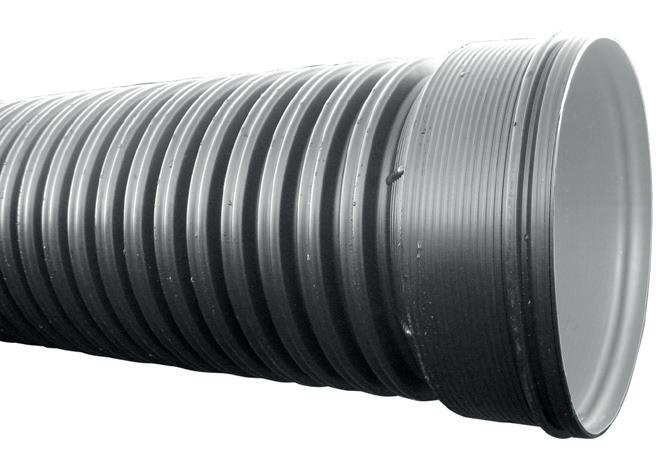








110 www.waternz.org.nz
pipes are internationally recognised as the smart choice in piping materials.
EUROFLO® – THE SUSTAINABLE CHOICE Smaller carbon foo High level of imper Greater chemical resistance Lower corrosion Improved flow rate HDPE recog in pip EUROFLO - T Smaller carbon f High level of imp Greater chemica resistance Lower corrosion Improved flow ra HDP rec in p EUROFLO - THE SUSTAINABLE CHOICE 065 com om Smaller carbon footprint High level of impermeability Greater chemical resistance Lower corrosion Improved flow rates HDPE pipes are internationally recognised as the smart choice in piping materials. EUROFLO - THE SUSTAINABLE CHOICE Make your project possible with EUROFLO® SN8 Civil Pipe certified to AS/NZS 5065 0800 115 042 www pandfglobal com civil@pandfglobal com Make your project possible with EUROFLO® SN8 Civil Pipe certified to AS/NZS 5065 WATER NEW ZEALAND PAPER
HDPE
• • • • •
Sizes and shapes of AT fibres. (A) Close-up image of AT fibres collected from the sea surface (a, c, d) and from an outdoor soccer field (b). Note the central reinforcing nerve in (a) and (b). (B) Artificial turf fibres of different sizes and shapes (i.e. straight and curled monofilaments, and fibrillated) collected from the sea surface. Scale bar in (A) and (B) is 5 mm.
through rivers and concentrations at sea, and their association to rainfall.
To what extent AT fibres pollute natural aquatic environments, and their significance relative to other plastic sources remain unanswered.
In the view of increasing usage and production trends of AT and leakage of plastics into the environment, we hypothesize that AT fibres are widespread pollutants in river and sea surface waters and predict that their leakage into aquatic environments is driven by rainfall events, which seems to play a role in the dispersal of AT to the environment through drainage water systems or nearby water streams.
The data here obtained represent the first quantitative characterization of AT pollutants in aquatic environments, with the aim of advancing the understanding of the magnitude of plastic leakage from AT surfaces to the nature.
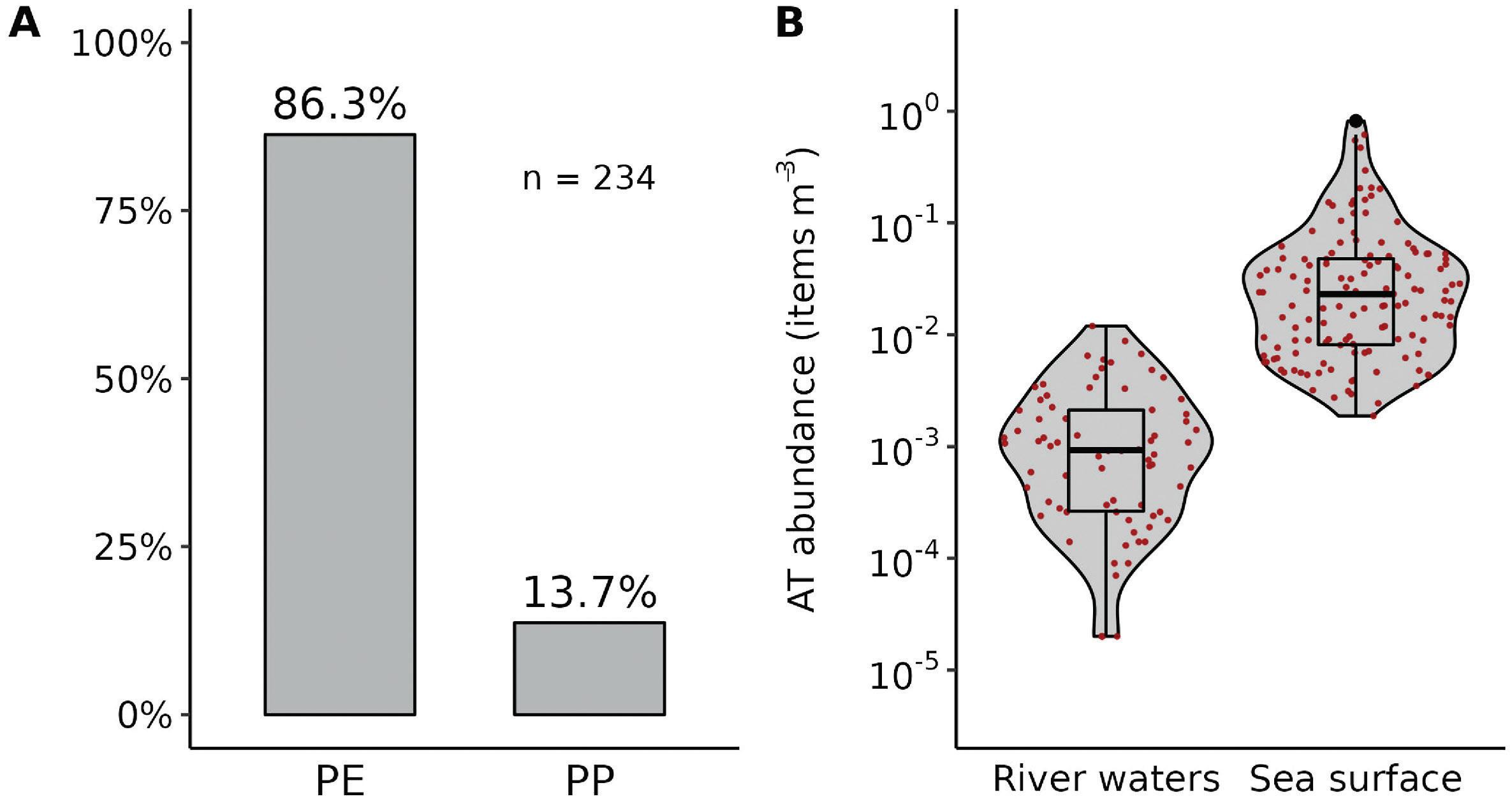
A total 417 water samples were collected between June 2014 and July 2021 (excl. 2017) from the sea surface off Catalonia in the NW Mediterranean Sea and between January 2014 and December 2015 from the water column at the Guadalquivir River, which flows into the Gulf of Cadiz in the Atlantic Ocean.
Of the samples, 330 have been previously documented and made publicly available in scientific literature, and were reanalysed for AT fibres.
Samples included 200 water samples from Guadalquivir River collected by Guadalquivir LTER programme and processed for plastics, 124 water samples from waters at distances of less than one kilometre from shore (hereafter defined as ‘nearshore’) collected by the Surfing for Science project, and six water samples at one to five kilometres from shore (defined as ‘coastal’).
The remaining 87 of samples from nearshore and coastal waters
are not included in any published study or data-set, and were analysed and inspected for AT fibres.
This results in approximately half of the inspected water samples collected from river waters and about half from the sea surface.
In laboratory, all samples were analysed or re-analysed for AT fibres and separated from all other plastics using fine forceps.
AT fibres were identified by using their dimensions, colour and morphology as criteria to separate them from all other plastic items, such as fragments, films/sheets, pellets, microbeads, foam and filaments or lines.
Accordingly, AT fibres were identified as planar items – as opposed to fishing netting and textile fibres and longer than wide in two dimensions.
Colour and morphology were considered as a second-order criteria to further confirm the nature of an AT fibre. For instance, green-coloured items and/or items that were curled, presented longitudinal splits or one or more reinforcing central nerves in their longest dimension while matching the above criteria were categorized as AT fibres.
Conversely, items that were transparent or translucent, or with equal length to width ratios were conservatively excluded from the analysis as they may be easily mistaken for films/sheets or fragments.
All AT fibres were chemically identified as plastic, either PE (86.3%) or PP (13.7), and were mostly green in colour (82.2%).
AT fibres were found in half of all collected samples, with higher presence among samples from the sea surface (62.2%) than in samples from river waters (37%).
In total, 1341 AT fibres were identified, which represents 1.2% and 0.3% of the total amount of plastics collected from the sea surface and river waters, respectively.
SEPTEMBER/OCTOBER 2023 WATER NEW ZEALAND 111
(A) Chemical composition and (B) abundance of AT fibres in river waters and sea surface. Note that the vertical axis in (B) is in log-10 scale. Plots in (B) show the data 95% confidence interval (i.e. vertical lines above and below boxes), inter-quartile range (i.e. boxes), median (i.e. 50th percentile; bold horizontal lines), probability density profile at each side (i.e. grayed areas) and individual data points in red. (For interpretation of the references to color in this figure legend, refer to the web version of this article.)
About half of AT fibres were classified as microplastics (i.e. less than 5 mm in size).
The size of AT fibres averaged 6.3mm long and 3.28mm 2 and were relatively longer and larger in samples from river waters than from the sea surface.
AT fibres in river and sea surface waters
Our results unveiled a ubiquitous presence of AT fibres in marine and riverine environments. In particular, the composition of AT fibres matches current production trends and specific density profiles, with PE being by far the most used polymer for AT manufacturing, followed by PP and PA.
Unlike PA, PE and PP usually are buoyant in water, which is why most AT fibres are likely to be found floating or suspended in rivers and seas.
Present results demonstrate that AT fibres can represent a high proportion (i.e. over 15%) of the plastic debris in aquatic environments, especially on the sea surface and within the meso- and macroplastic size range in our samples.
Observed differences in the prevalence and average concentrations of AT fibres found in samples from river waters (32%) and sea surface (62%) indicates a higher degree of AT fibre pollution at the sea surface than in river waters. This may be associated to both lower retention of plastics in the river –especially those large and positively buoyant, such as AT fibres –and the long-term accumulation of AT fibres on the sea surface, especially in the coastal surface layer where plastics released years to decades from now are effectively captured before reaching the open ocean .
Further, besides direct inputs from sources upstream, rivers are more affected by water flux variations associated to seasonal rainfall and water regulation, and may act as a pathway of AT fibres into the ocean, especially during heavy rains.
Such transfer processes of AT fibres may be enhanced during river flood events or because of seasonal processes such as spring and early summer snow and ice melting in high latitudes.
Our results show that rivers but also coastal and nearshore waters likely are a temporal reservoir of AT fibres. High concentrations found off the city of Barcelona underscore metropolitan areas as main contributors to AT fibre pollution, as also found by Wang et al., (2019) in mainland China. Likewise, Nakano et al. (2021) found AT fibers on surface waters in Tokyo bay, one of the most heavily populated and highly industrialized areas in the world.
Further, AT fibre concentrations also peaked during heavy rains, commonly occurring from October to April both in the Guadalquivir basins and in Catalonia’s watersheds, which seem to play a role in flushing fibres towards the ocean.

Almost 60 years have passed since the first use of artificial turf surfaces as a substitute of natural turf in sports. Their production is now peaking as their use has diversified to fit multiple consumer needs.

In particular, the loads and properties of artificial turf fibres in the aquatic environment is currently unknown. This is the first study focusing on the presence, concentration levels and properties of artificial turf fibres in river and sea surface waters.
It contributes to increasing knowledge that artificial turfs not only contribute to other known impacts, such as climate change, chemical leaching or local biodiversity loss, but is also is a major source of plastic pollution in the aquatic environment.
Furthermore, the properties of artificial turf fibres are described in detail for further studies to identify and monitor their presence in aquatic environments. Indeed, how many AT fibres can further accumulate on riverbanks, beaches, seabed and riverbed sediments is still completely unknown.
We anticipate that this study will inspire future efforts to reduce the release and impacts of artificial turfs in the environment.
This paper was first published by Elsevier and has been edited for length. To read the full paper, go to doi.org/10.1016/j. envpol.2023.122094
WATER NEW ZEALAND PAPER
AGRULINE PE 100-RC
Fittings & pipes resistant to cracks
Specialisation in butt welding, electro-fusion equipment & tools
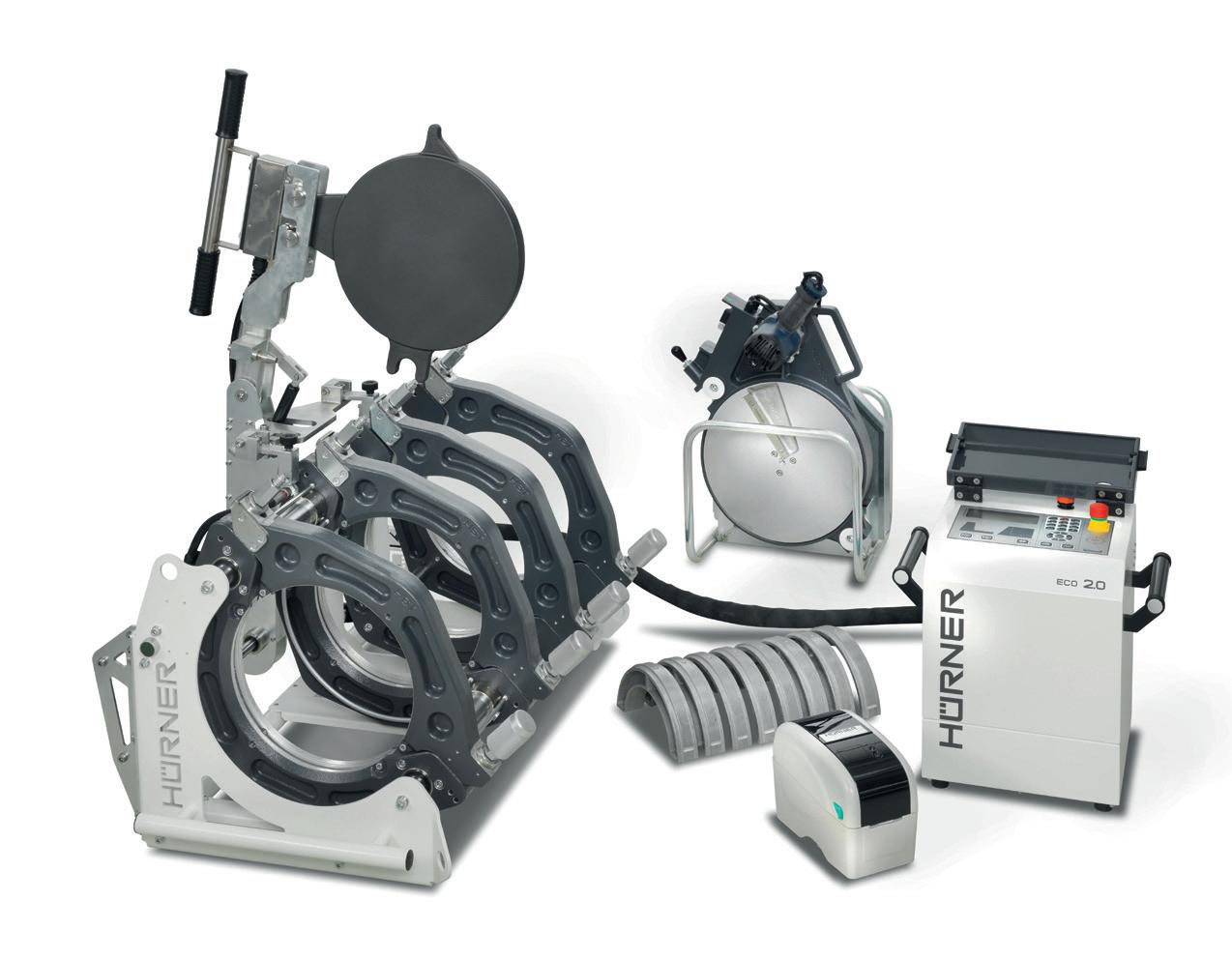
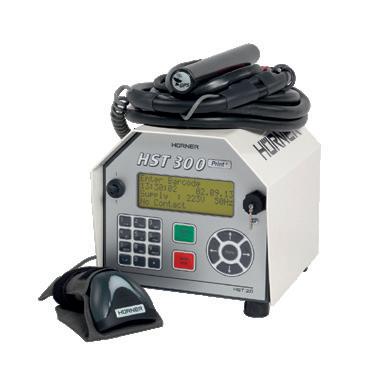
LONGER SERVICE LIFE crack resistant PE 100-RC HIGH ECONOMIC EFFICIENCY sandbed-free installation
LASTING CONNECTIONS better welding results
ONE STOP SHOPPING complete PE 100-RC piping system
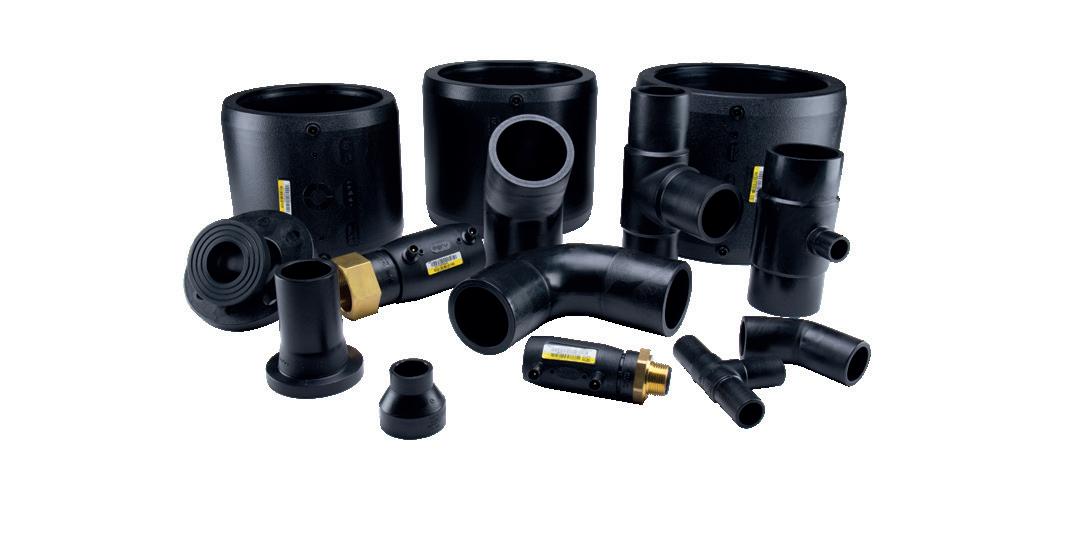
PE 100-RC
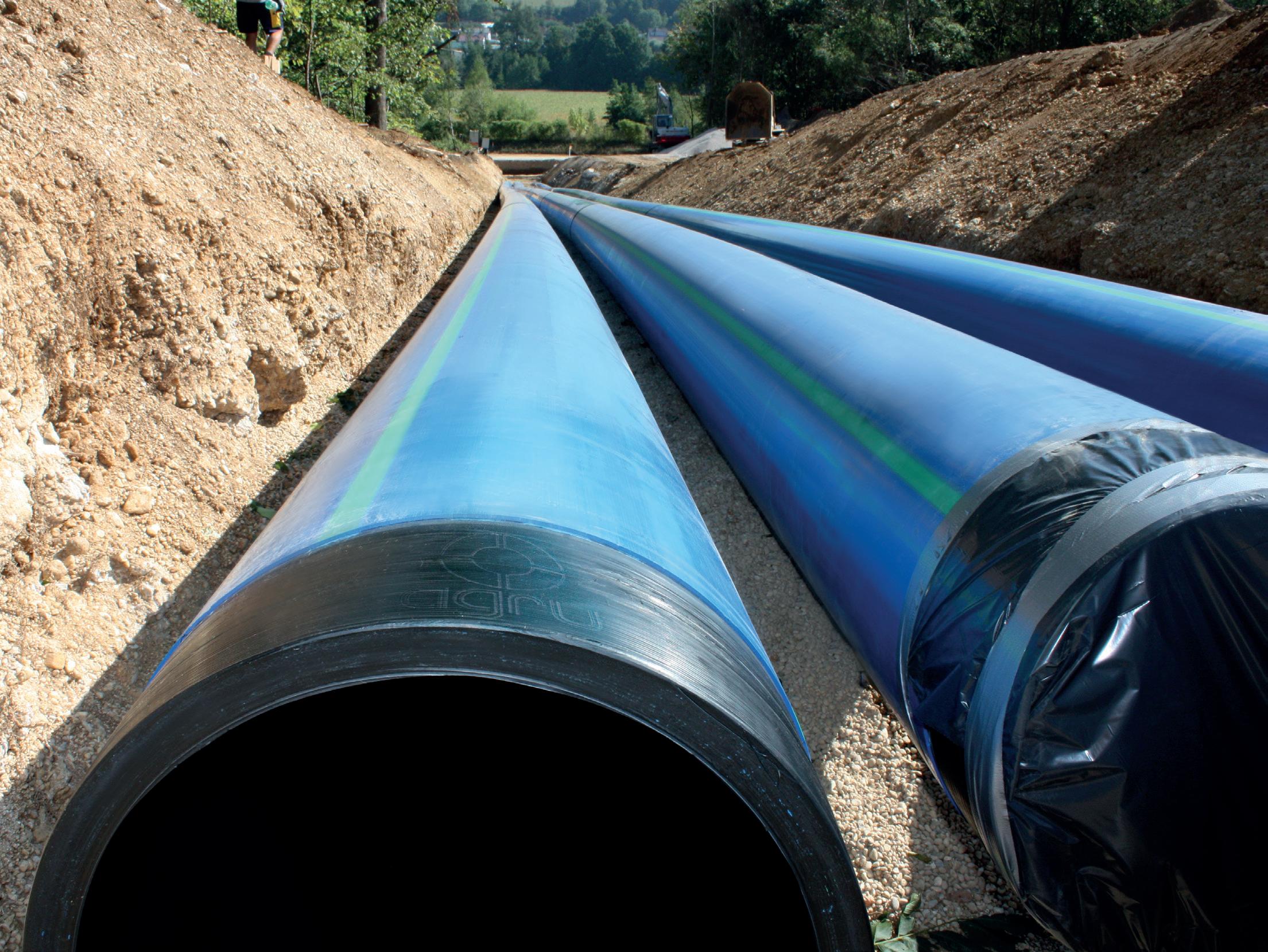
HUERNER | Welding Technology NZ Ltd AGRU New Zealand Ltd | 12 Croskery Road, Papakura, Auckland 2110, New Zealand | Phone (09) 299 3640 Email admin@agru.co.nz | admin@huerner.co.nz
ARE MADE OF
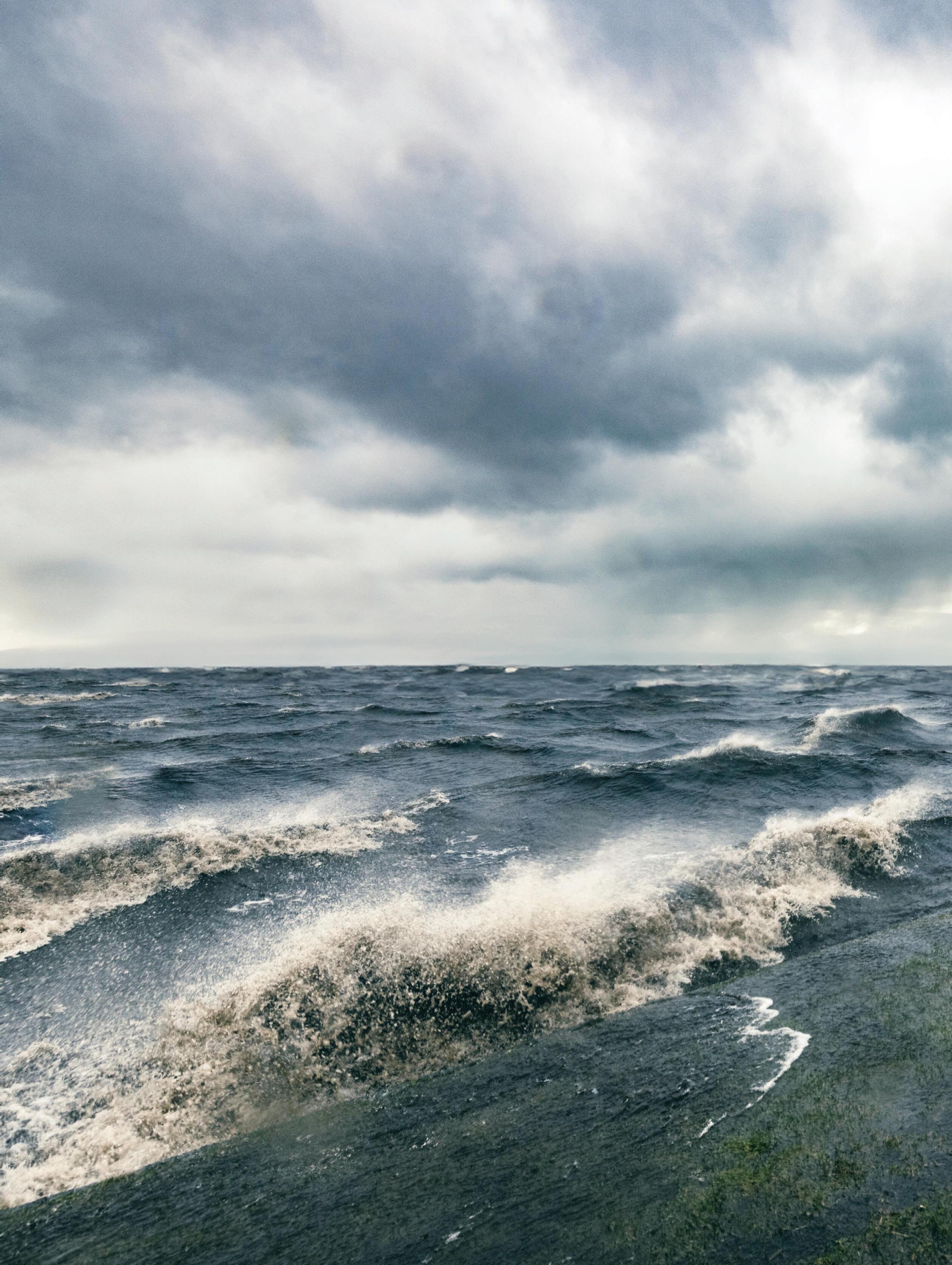

114 www.waternz.org.nz WATER NEW ZEALAND CASE STUDY
RECONSTRUCTING HOPE:
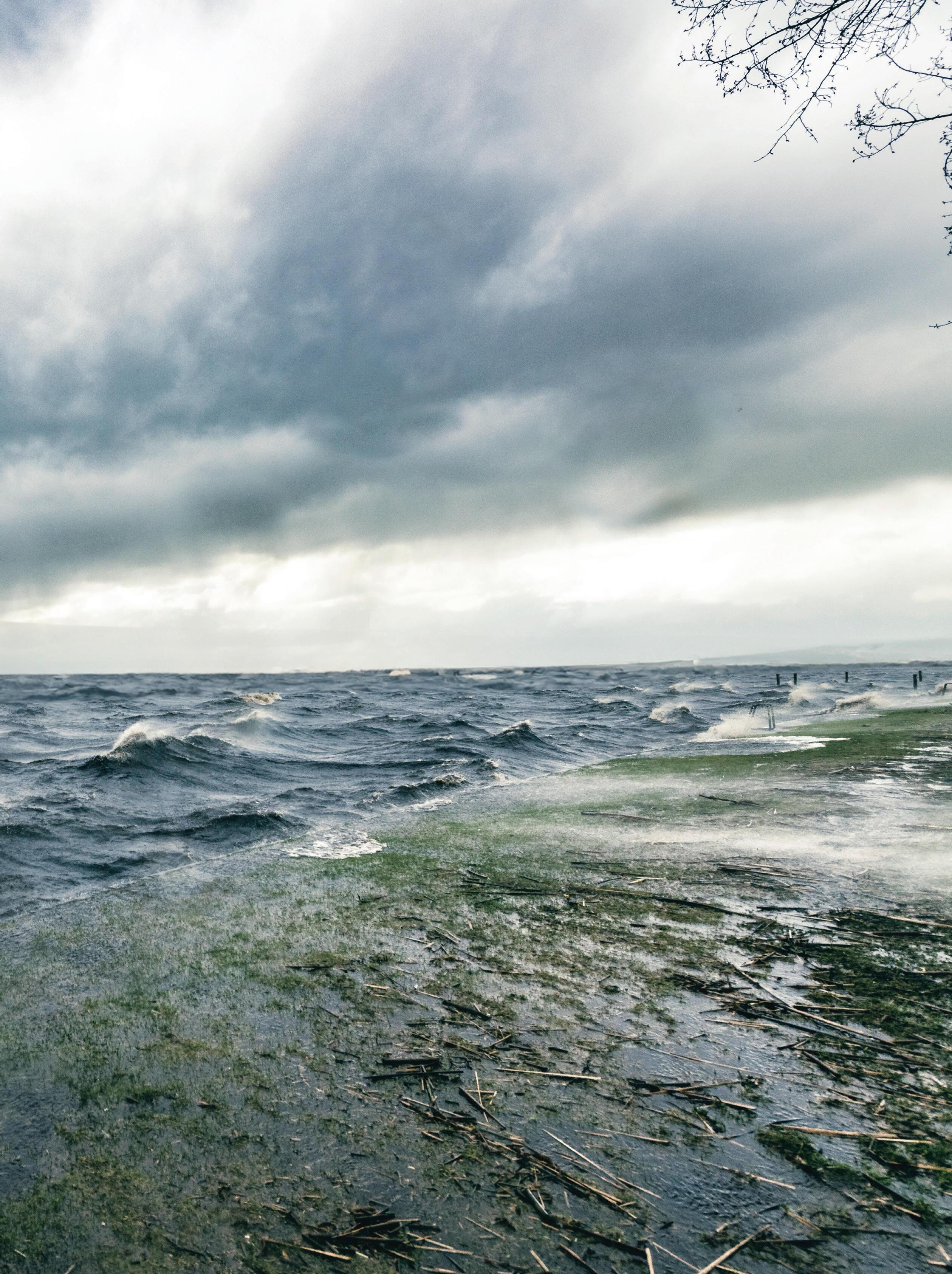
Re-building from Peru’s El Niño floods
In 2017 Peru suffered devastating flooding from the El Niño weather phenomenon which brought torrential rains to coastal regions. The flood waters destroyed homes, roads, schools, hospitals and many lives and livelihoods were lost.
In 2020, an agreement was signed with the United Kingdom to support the Authority for Reconstruction with Changes (ARCC), the Peruvian Government entity created to rebuild the destroyed infrastructure.
The UK Delivery Team (UKDT) of Arup, Mace, and Gleeds has been working with ARCC alongside in-country teams to rebuild schools and healthcare facilities and to provide comprehensive flood defences for 17 river basins and seven cities along coastal regions, protected by an integrated early warning system.
Chris Hughes was the UKDT’s in-country technical assurance lead during 2020-2022 for the Integrated Solutions portfolio, covering the procurement and design and construction of flood defences, drainage, and the national Early Warning System.
Now working as an associate director with Arup in Auckland, Chris reflects on the experience of the Peru rebuild and what learnings may be useful for Aotearoa New Zealand.
SEPTEMBER/OCTOBER 2023 WATER NEW ZEALAND 115
Existing processes needed to change
Peru is approximately five times larger than Aotearoa New Zealand. The sheer scale of the re-build meant that existing procurement, design, and construction processes needed to change to fast track project delivery.
The ‘with changes’ (con cambios in Spanish) part of the Peru Reconstruction programme refers to the comprehensive flood defence works or ‘Integrated Solutions’ which will protect 16 million people from flooding.

All projects to re-build schools and health facilities and establish integrated flooding solutions shared a set of common objectives: Resilient, flexible and adaptable, functionally appropriate, human centred, and sustainable.
From the onset it was essential that all stakeholders embraced these principles and recognised that this was not just a reconstruction programme, but a social programme. This became a ‘front and central’ message in our design assurance purpose within the ‘Reconstructing Hope’ identity embedded in the consortium.
Introduce an outcome focused workflow
We set out to integrate international best practice approaches in the design of resilient infrastructure. This included the development of a programme-wide design workflow based on the RIBA (Royal Institution of British Architects) approach which encouraged 'optioneering' and value-engineering early in the process rather than applying ‘uniform design criteria’ which had typically been the case in Peru.
A workflow focussed on outcomes (social, well-being, wider economic benefits and adaptability) encouraged innovation in the design and construct supply chain. This included capturing local knowledge and ideas from residents who had experienced the devastation first hand.
Structured and collaborative design, delivery and assurance processes were established with contractors, supported by a shared digital platform.
A ‘human centred’ approach was taken to designing infrastructure which considered the medium – and long-term impact and benefit on cities and communities.
The process facilitated collaboration between government, local authorities, environmental regulators, infrastructure providers, the third sector and communities. It also created the opportunity and challenge of collaboration between different professionals and disciplines.
Calculate the wider social benefits
A new approach to flood resilience design in Peru applied a digital model to support the design optioneering process. The Social Cost Benefit Assessment (SCBA) tool allowed rapid calculation of scheme benefits, while also considering the wider receptors that would benefit from the intervention.
It soon became clear from site visits and engagement with local communities that protection of agriculture land and critical irrigation infrastructure was a key requirement of the design. Inclusion of the agriculture ‘receptors’ in the SCBA process was fundamental due to the sector’s economic value.
Replace historical climate averages with custom scenarios
River basin-specific scenarios for modelling climate change impacts in hydrology and hydraulic assessments were introduced. This represented a shift from using ‘worst historical’ records to applying future scenarios of changing rainfall duration, frequency and intensity based on global climate projections. The ARCC is the first Peruvian ministry to incorporate climate change as a state of practice and to provide long-term resilience and security for infrastructure and flood protection.
Seek nature-based solutions
An integral part of the programme is the design and implementation of nature-based solutions to provide flood water and sediment management to reduce flooding and mass movement risk including learning from indigenous techniques to slow water.
The added social value of this work includes:
• Training programmes to improve community resilience in extreme natural events.
• The community is part of the long-term upkeep and sustained protection of the reforested areas.
• New job opportunities and upskilling for local people.

116 www.waternz.org.nz WATER NEW ZEALAND CASE STUDY
A ‘human centred’ approach was taken to designing infrastructure
Left: It soon became clear from site visits and engagement with local communities that protection of agriculture land and critical irrigation infrastructure was a key requirement of the design. Inclusion of the agriculture ‘receptors’ in the SCBA process was fundamental due to the sector’s economic value.
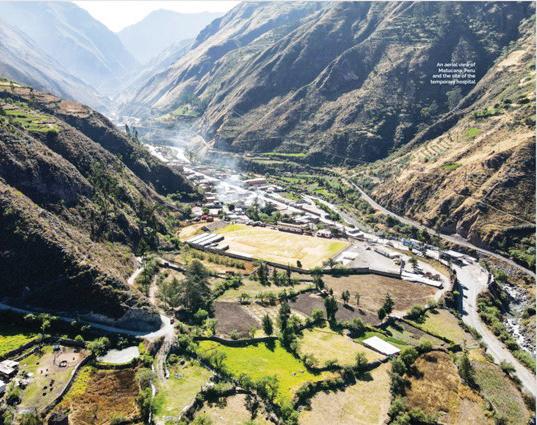

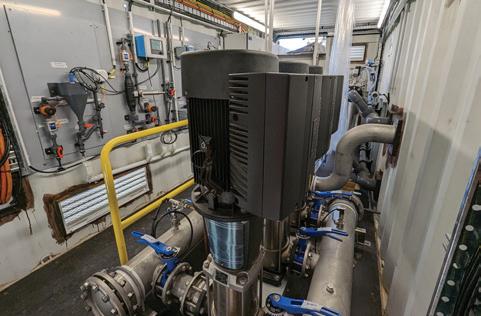

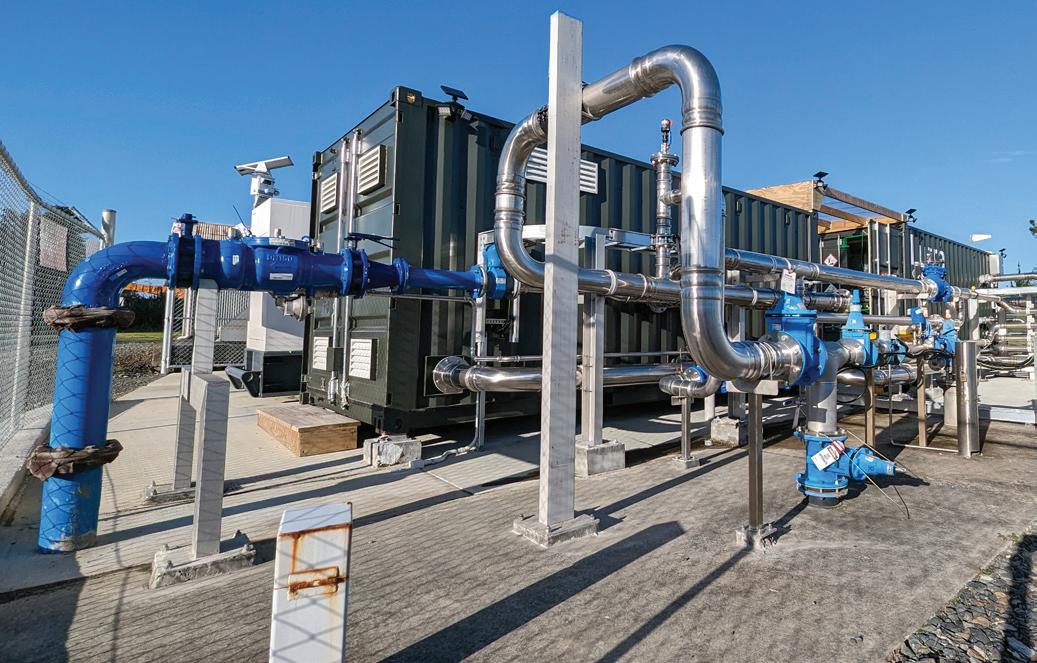
SEPTEMBER/OCTOBER 2023 WATER NEW ZEALAND 117
Above: An aerial view of Matucana, Peru, and the site of the temporary hospital.
Create systems for knowledge transfer

The digital project management tools and transfer of specialist knowledge to thousands of public officials, contractors and industry professionals has left a powerful, sustained legacy of increased capacity to deliver infrastructure and major programmes.

UKDT personnel sought to gain the trust of clients and contractors to embed international best practice approaches. This was achieved by building relationships, in-person and online, and providing clear examples, while a digital learning hub hosted guidance documents and training sessions.
An integrated suite of bespoke and off-the-shelf digital solutions included a common GIS data platform, PowerBi data reporting and shared online communications, collaboration, and document management systems. As well as promoting collaboration and consistency, this enabled more data-driven decision making.
With a focus on applying best practice, creating social value and sustained knowledge transfer, the re-build programme will allow for more creative and inclusive decision-making process for future infrastructure projects in Peru.
At its heart the Peru Reconstruction Programme is about creating a sustainable and resilient future for communities. There are parallels for parts of Aotearoa New Zealand
which bore the brunt of Cyclone Gabrielle and other recent intense storm events.
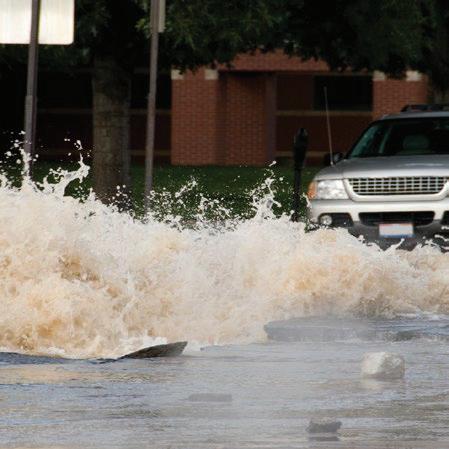

Some specific learnings:
• Develop a Knowledge Transfer Programme at the outset of any re-build initiative to support capacity building and train staff including those from other sectors. The benefits this will provide for future generations is massive.
• Ensuring clarity on design processes, technical guidance and workflows is required in order to build back ‘at pace’. Stress test designs for multiple hazards including atmospheric rivers. This is time well spent in reducing delays, building confidence, and assuring stakeholders that designs will be inclusive, integrated, and resilient.


• Place value engineering and optioneering, including naturebased solutions, at the forefront of the design process in order to capture traditional knowledge of the landscape and catchments. This requirement should also be included in any social procurement processes.
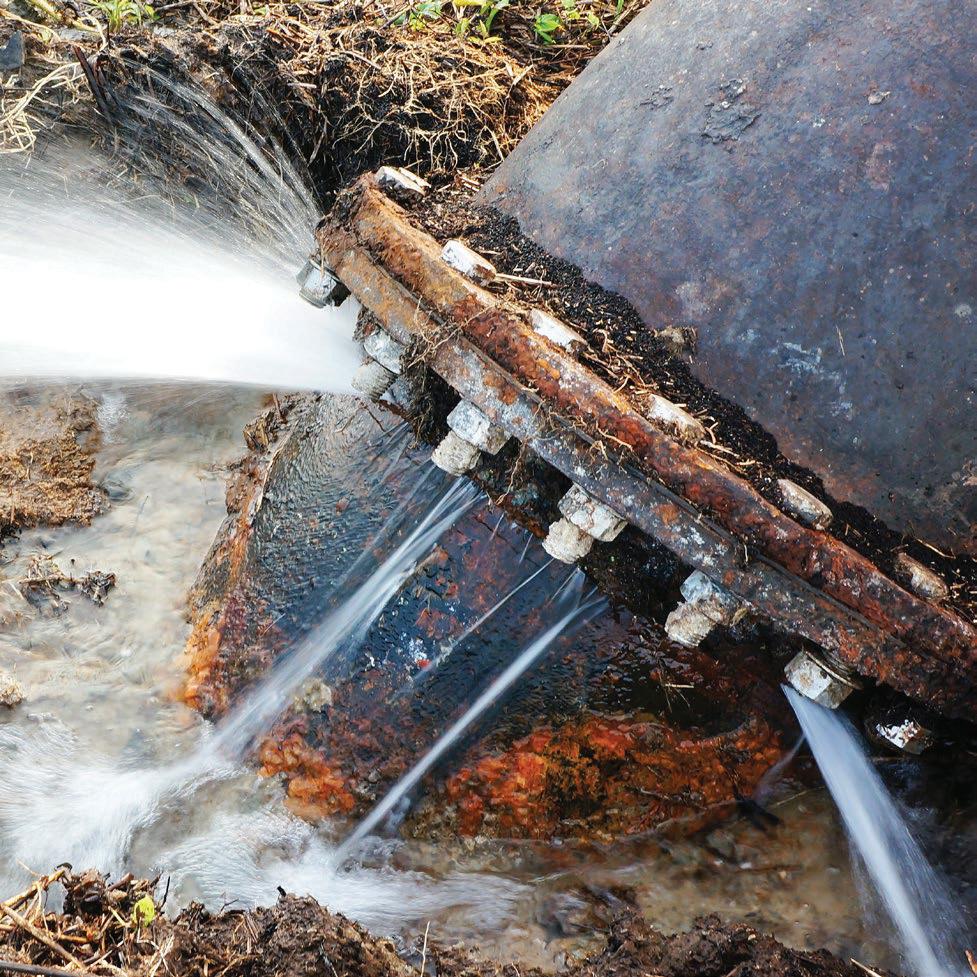
Mobilising international experts with experience in similar environments has obvious benefits in design and delivery of technical solutions.
Just as important is the value of an external perspective in supporting decision making and building confidence on the ground with officials and the wider community to create resilient solutions.

118 www.waternz.org.nz Discover the Detection Services Difference 0800 100 899 detectionservices.co.nz SMART SOLUTIONS Detection Services is the largest specialised water management business in Australasia with diverse business’s and clients spanning internationally. We provide a unified approach to pipeline asset management by providing a portfolio of innovative solutions, technologies and strategies covering the water and wastewater industries. Our monitoring technologies evaluate network operating conditions, increasing productivity, asset quality and environmental performance. A S S E T M O N I T O R I N G Our SMART water management technologies assist customers improve performance, reduce operating costs and enhance customer service. W A T E R L O S S M A N A G E M E N T Our condition assessment technologies turn data into actionable results to maintain integrity, reliability and maximise value for assets. C O N D I T I O N A S S E S S M E N T WATER NEW
ZEALAND CASE STUDY
CLA-VAL PACIFIC Bringing Air Valve Solutions to your network
Cla-Val AQUA Air Valves
- Full Size Range DN15 to DN450
- Available in Potable Water, Stormwater, Wastewater & Raw Sewage/Slurry

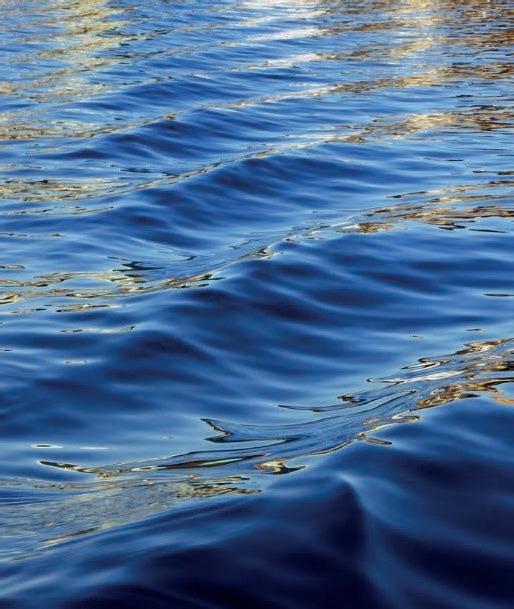
- High Performance Anti Slam, Air Release & Vacuum Breaker Air Valves
- Allows air out when filling the pipeline and air in when draining the pipeline
- Allows accumulated air out of the pipeline under normal operation

- Anti-Slam controls air release to safeguard the pipeline
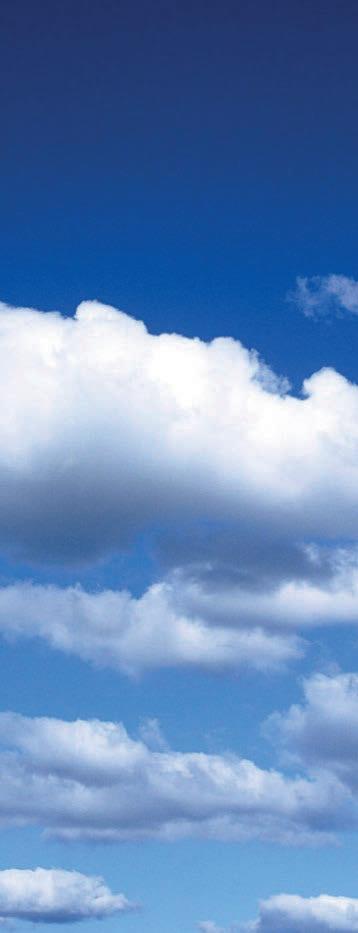
- O-Ring Barrel Seals means no more leaking gaskets
- Internal Metal Tie Rods
• No Welding = No Corrosion
• Smaller Diameter Flanges = Less weight and smaller profile
- More information can be found on our website www.cla-valpacific.com
Cla-Val Pressure Management Valves
Why Pressure Management?
There are many ways and reasons that pressure can and should be managed in a network from source to tap. The aim is to create a network where pressure in the pipe system is managed in such a way as to mitigate the rise of transients, which can cause pipe bursts and weaken pipe systems. The goal is to efficiently and effectively control pressure fluctuations, keeping the water network calm, and at serviceable pressure levels and reducing leakage.
The Cla-Val 390 Series of Electronically Actuated Pressure Reducing Control Valves (as pictured to the right) combines the precise control of field-proven Cla-Val hydraulic pilots with simple, remote valve control. These Pressure Reducing Control Valves automatically reduce a higher inlet pressure to a steady lower downstream pressure regardless of any change in the flow rate and/or varying inlet pressure.
The valves are designed to be used with supervisory control systems (SCADA), having remote analog set-point output and process variable upstream pressure input using the VC-22D Electronic Valve Controller as the interface. Cla-Val 390 Series Valves are an effective solution for lowering costs associated with “confined space” requirements by eliminating the need for an entry in valve structure for set-point adjustment. They are also ideal for pressure management and can be programmed to minimum night time and optimum daytime pressures.
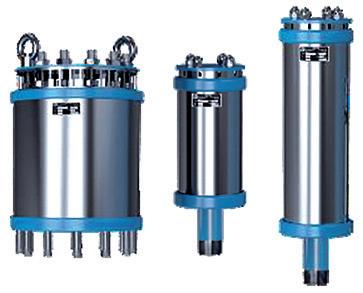
If you are going to be at the W Water NZ Conference & Expo, head over to s stands 47 & 54 to see a 390 series valve in action! Not only will this valve have the ability to accept a command to adjust the pressure set point remotely but it will also be able to calculate the flow rate moving through the control valve within 2% accuracy.

!"#$%#"&'#()*)( -.//#0#123#45&633"783/5&!9:)78(9;:(95&<.0&=.#"#/4 >."?&@A+&BCDE&FA+&+GAC Cla-Val Pacific 45 Kennaway Road, Woolston, Christchurch Tel: +64 (0)3 964 4860 Email: aspacsales@cla-val.com www.cla-valpacific.com COME VISIT CLA-VAL PACIFIC AT WATER NZ STANDS 47 & 54
Flash flooding exacerbates crisis
Heavy rainfall in Somalia and the Ethiopian highlands had led to the worst flooding in 30 years in the central Somalia town of Beledweyne in the Hiran region with the Shabelle River bursting its banks.
The floods are the latest in a series of extreme weather events in recent years to hit Somalia, where children and communities find themselves at the sharp end of the global climate crisis. The floods come after the worst drought in 40 years following five failed rainy seasons which has decimated livestock and crops, pushing the country to the brink of famine.
These extreme weather events combined with ongoing conflict and surging food prices have left about 8.3 million people – nearly half of the population – in need of humanitarian assistance with more than 1.4 million people internally displaced, many living in camps.
According to the UN, before the flooding about 6.5 million people were experiencing severe food insecurity and an estimated 1.8 million children facing acute malnutrition.
Sirad*, 28, is a mother of five. She used to live in a rural farm, keeping livestock, cultivated cereals and vegetables for her family. She fled to Beledweyne eight months ago after drought and ongoing conflict forced her to leave her home. She says her family has suffered back-to-back displacement in the past five years due to conflict, drought and, currently, by floods, which has left her family struggling to survive.
“Because of the droughts, we lost many animals, and are left with very little… and then we had to leave because of the conflicts. Our animals were providing milk and meat. We lost many of them during the drought, some survived, but the floods and heavy rains killed them.”
Hali*, a 40-year-old mother, is living in a camp for displaced people with her husband and children. Her husband, who previously worked as a driver, has been out of work as markets are closed due to flooding, making it hard to get enough food for her children.
Hali* is worried that her children are at risk of diseases such as malaria due to lack of shelter and mosquito nets.
“We lost our home and our livelihoods. We may not go back to our home anytime soon and that worries me. I am now living with my relative who gave us space to build a tent for my children.
“This is not the first time that we have been displaced by floods. We also lost our livestock due to flooding in 2019.
“We do not have clean water and food. We also do not have a proper shelter. My last born was sick in the last few days, she is only 15 months old. Doctors told me that because of floods, mosquito bites will increase and waterborne disease will also

increase so it is common that children get sick.”
In Beledweyne, Save the Children is providing humanitarian assistance to affected children and their families including providing clean water and sanitation facilities to more than 8640 households. The aid agency has also mobilized its medical teams and supplies to address health concerns and prevent the outbreak of waterborne diseases. It is also providing cash assistance to about 900 families so that they can buy food.
Save the Children’s country director for Somalia, Mohamud Mohamed Hassan, says they are coming across families who have been hit by successive crises ranging from conflict to drought and now floods and this is taking a huge toll on them.
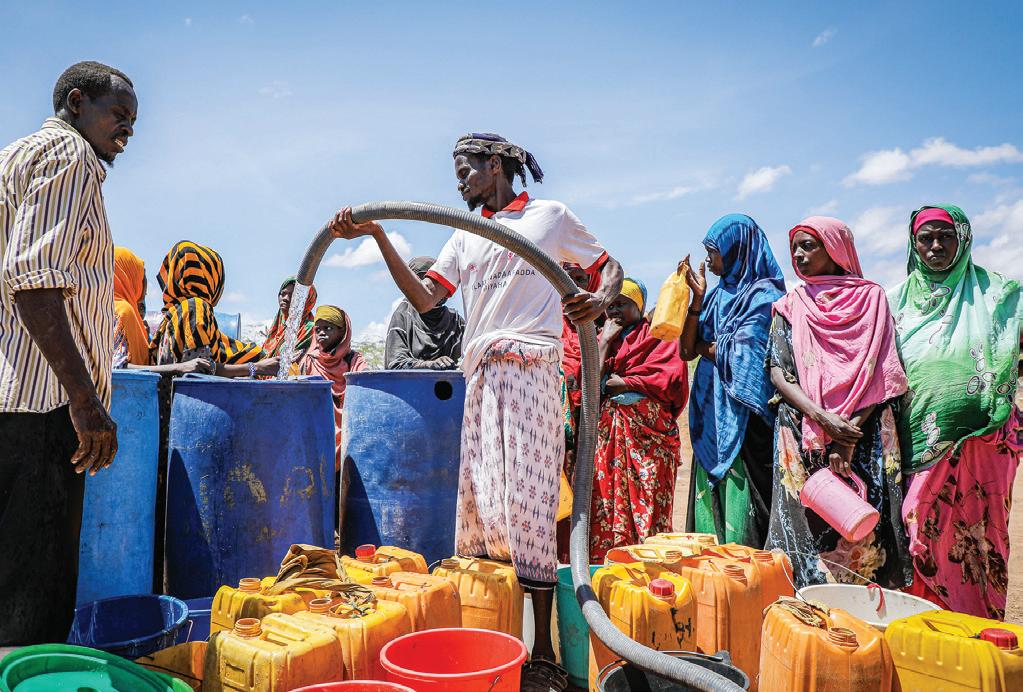
“Before the floods, children were on the brink of starvation as sequentially failed rains brought about the worst hunger crisis in 40 years.
“While humanitarian agencies are working tirelessly to protect and provide aid to vulnerable children and communities in Beledweyne, relief efforts are hampered by limited funding. More funds are needed to provide food and critical health care services as well as to assess the damaged, repair basic infrastructure, and develop long-term strategies to mitigate the impact of future floods.
“We’re also calling for increased investment in climate change adaptation for communities in Somalia, including integrated water resources management and implement ion of environmental regulation to mitigate the adverse impacts of climate induced crisis.”
*Names changed to protect identities.
Article provided by Save the Children.
120 www.waternz.org.nz WATER NEW ZEALAND INTERNATIONAL
Extreme flooding across Somalia has left about 118,000 children and 101,000 adults homeless, killed 22 people and left scores more children vulnerable to malnutrition and disease outbreaks.
People queuing to get clean water provided by Save the Children afterfloods destroyed infrastructure in Southern Somalia.
Bay of Plenty Regional Council’s work guides and supports the sustainable development of the Bay of Plenty.






Our laboratory and sampling services team is registered with Taumata Arowai and can provide IANZ accredited testing and sampling for a number of different chemical, microbiological and drinking water parameters.
For further information on our laboratory testing services go to www.boprc.govt.nz







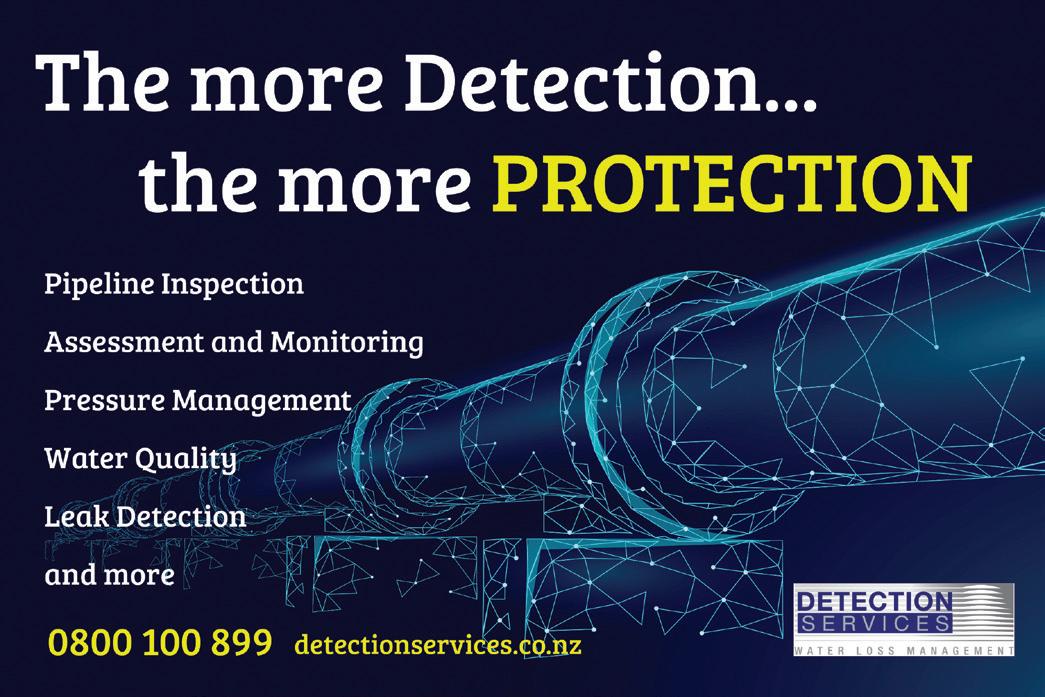
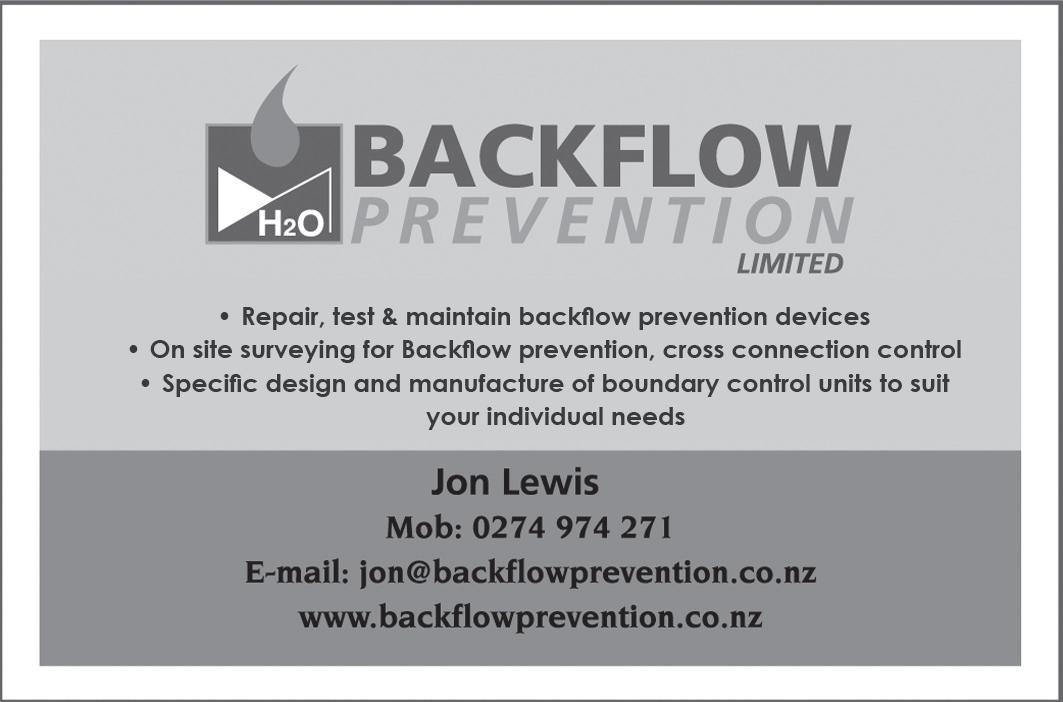
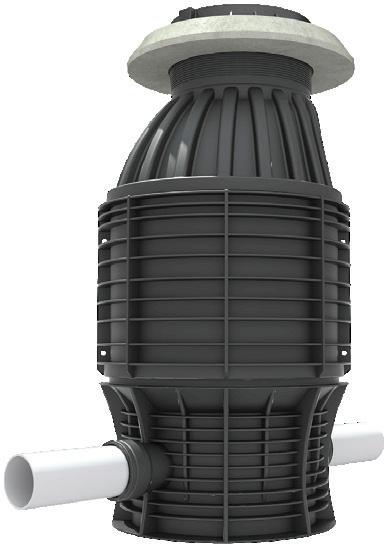




SEPTEMBER/OCTOBER 2023 WATER NEW ZEALAND 121
HAS A NETWORK OPERATING IN NEW ZEALAND We are the leading royal chartered professional body dedicated to sustainable management of the environment, globally. We aim to build a global community of water and environmental professionals dedicated to work for the public benefit. If you’d like to explore how to become a chartered professional in New Zealand, please visit: Contact: Dan Stevens: dan.stevens@beca.com Justine Jones: justine.jones@ghd.com website: www.ciwem.org Wayne Telfer General Manager Mobile: 027 491 4697 Office: 09 278 7109 Email: wayne@conhur.com Web: www.conhur.com 34 Oakleigh Avenue, Takanini, Auckland 2112 PO Box 204021, Highbrook Mail Centre, Manukau 2161 Dredging, Dewatering, Biosolids Cartage and Beneficial Reuse, Sludge Surveys, Wet / Dry Hire of Mechanical Dewatering Equipment Member Water NZ Member PWWA Member ANZBP Member AWA Member WIOA AGRU New Zealand Ltd Huerner Welding Technology Ltd
Electro-fusion
www.agru.co.nz www.huerner.co.nz
09
3640 Mob: 021
r.gruen@xtra.co.nz • Waste Treatment Ponds • Marinas • Dams • Lagoons • Lakes 07 868 1129 admin@hydracare.co.nz ◆ DESLUDGING ◆ DESILTING ◆ EXCAVATING
Specialisation in PP, PE, Specialisation in Butt Welding , fittings & piping systems
equipment & tools
Ph:
299
329432 @:


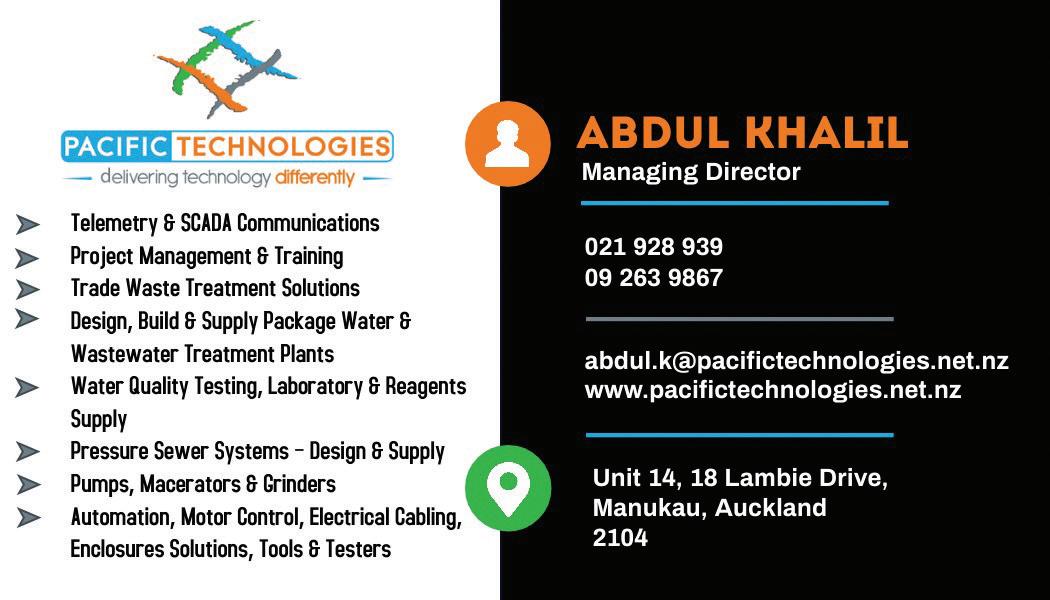

122 www.waternz.org.nz 43South 70 ACO Limited 53 Acuflo Industries Ltd IFC Agruline ............................................................................... 113 Altex Coatings 86 APD 97 Apex Water ........................................................................ 47 Aqua-K NZ 84 Aquatec 58 AquiSense 103 Armatec 31 Arthur D Riley & Co Ltd 14, 25 Beca 90 Brickhouse Technologies .......................................... 60 Brown Bros 41 Chemfeed 109 CKL 06 Cla Val 119 Combined Technologies 93 Connexis 21 Deeco Services Ltd ....................................................... 65 Detection Solutions 118 EMC Industrial Group Ltd 33 First Watch ......................................................................... 23 GHD 69 WATER NEW ZEALAND ADVERTISER'S INDEX YOUR AD HERE FOR JUST CONTACT Debbie Laing M: +64 27 455 0223 Email: advertising@waternz.org.nz plus GST $240 SBR Process Systems Thickening Systems Dewatering Systems Consultancy Aeration, Mixing, SBRs, Dewatering Aeration, Mixing, SBRs, Dewatering Aeration Blowers Aeration Diffusers High Efficiency Mixers Sludge Conditioning P: 09 479 3952 E: info@jipl.co.nz www.jipl.co.nz JONASSEN INDUSTRIAL PROJECTS LIMITED Process, Design & Environmental Engineers GWE Consulting 78 Heed HQ 44 Humes Pipelines 95 Hydroflux Epco ................................................................ 37 Hynds 64 ifm electronic 26 Interflow ............................................................................... 40 IPWEA 97 Kliptank 53 MacEwans 90 MTL 117 NZ Controls 84 P and F Global 110 Pipecore ............................................................................... 56 Pipetech 61 Prime Pump 51 Project Max 81 Promax Plastics 85 Pump & Machinery 79 Pump Supplies 26 Reliant Solutions ............................................................. 91 Shuk 70 Spark New Zealand Trading Limited 66 Steel Mains......................................................................... 45 Swan Analytical 103 Tasman Tanks 73 Taumata Arowai .......................................................... 105 Teltherm Instruments 77 TriOS 89 Ventia 99 Veolia Water Technologies and Solutions .... 55 Water Outlook 101 Water Supply Products IBC Xylem OBC CLASSIFIEDS Australasia Moulding Ltd 121 Backflow Prevention 121 Bay of Plenty Regional Council 121 CIWEM 121 Conhur 121 Detection Solutions 121 Huerner Welding Technology Ltd 121 Hydra-Care ...................................................................... 121 Jonassen Industrial Projects Ltd 122 Pacific Technologies (NZ) Limited 122 The Mighty Gripper Company Ltd 122
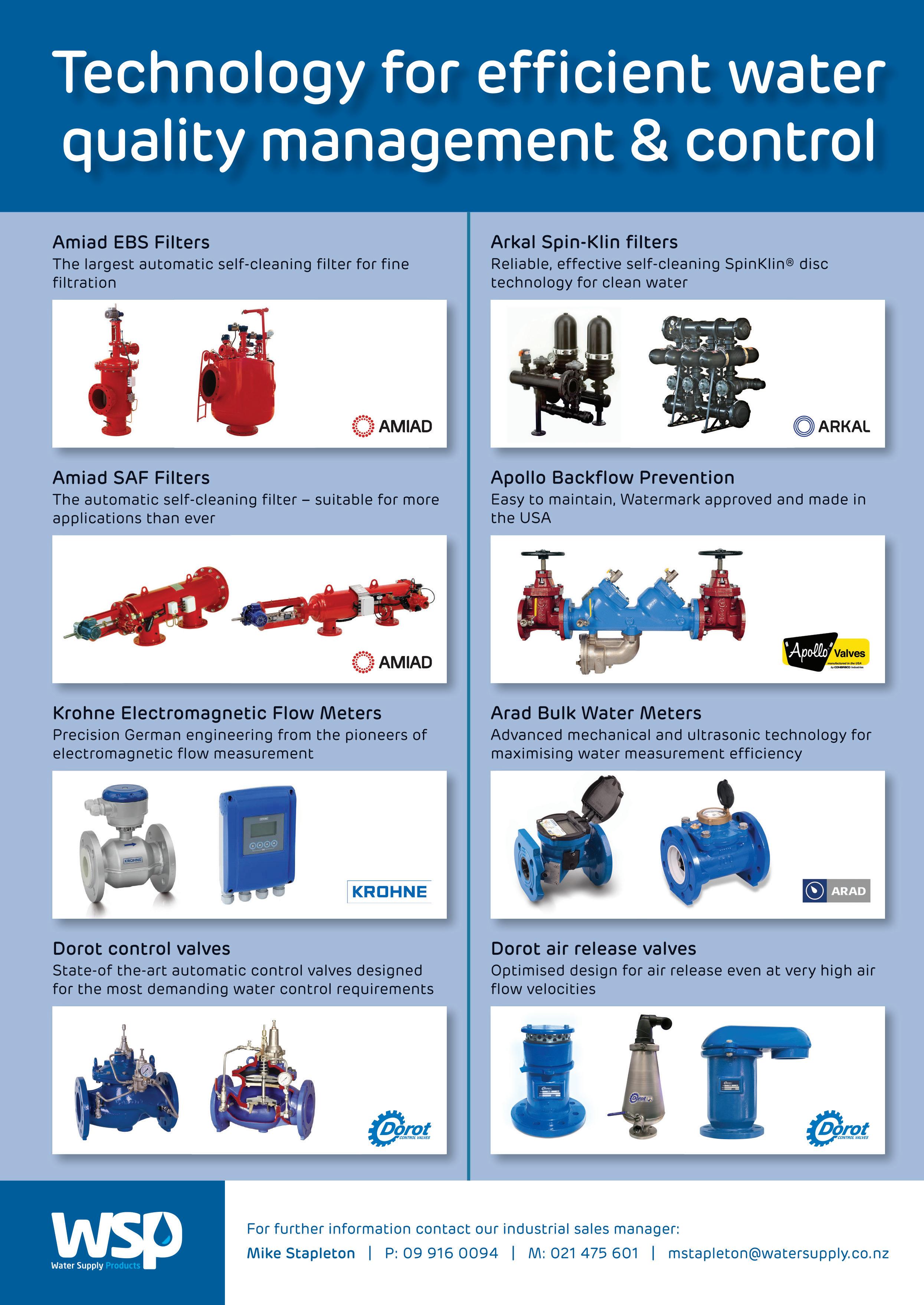
Flygt Adaptive Mixers
Treatment processes vary throughout the day, therefore the mixing requirements also change. Thanks to the integrated electronics and remote control of Flygt’s Adaptive Mixer the mixing requirements can be continuously adapted to the process requirements. Flygt adaptive allows you to use only the amount of energy you require for the desired output.
Key benefits include:

• Process flexibility with less wasted energy
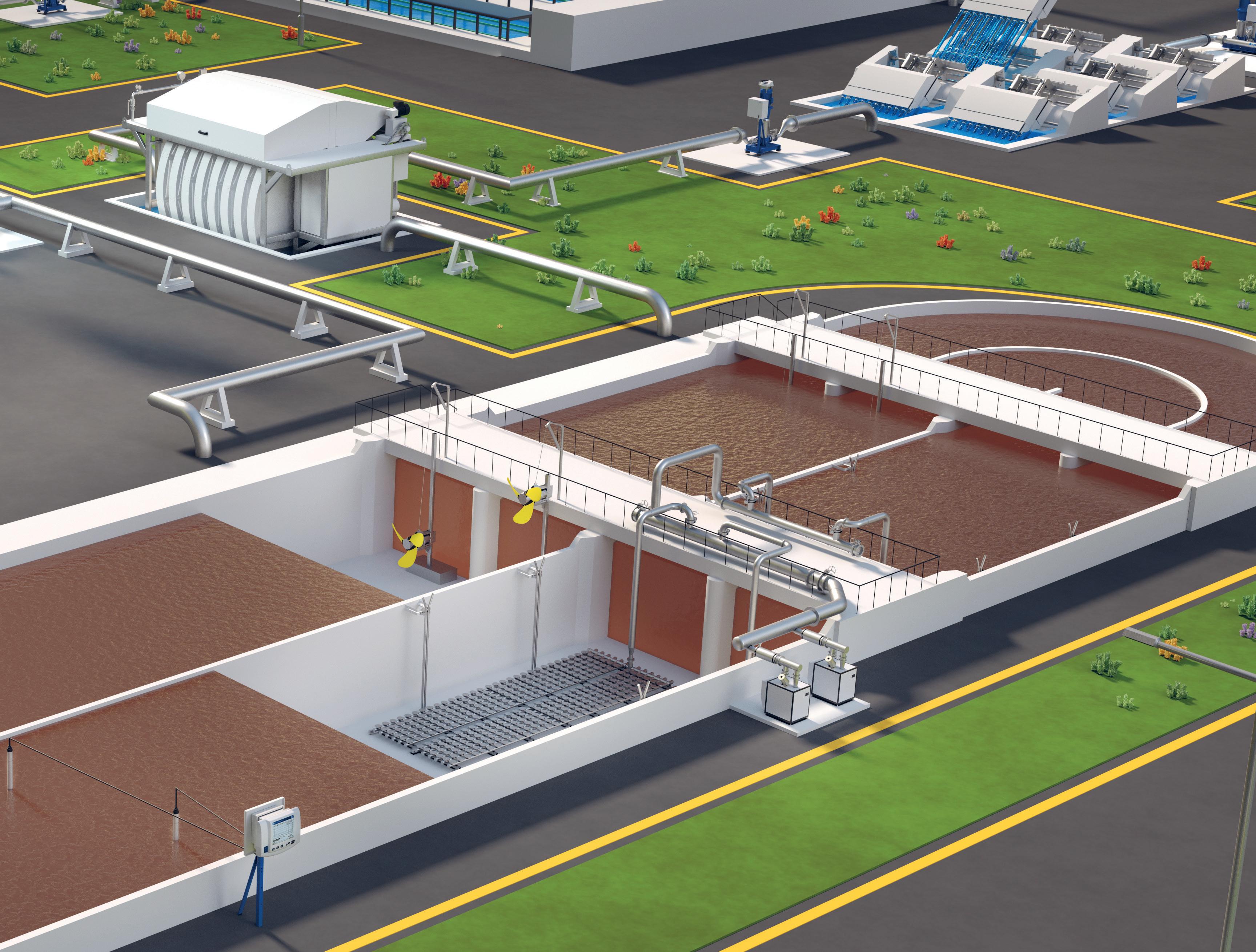
• Reduced mixer inventory due to variable thrust
• Greater reliability
• IE4 motor efficiency
Sanitaire TurboMax Blowers
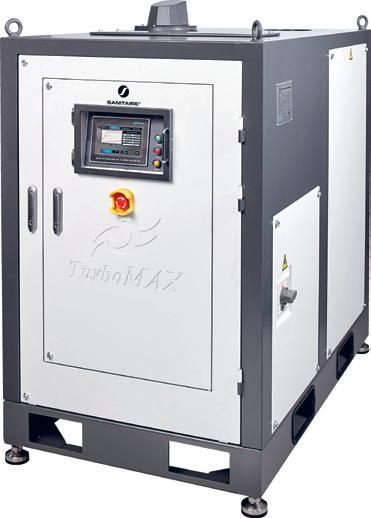
High-speed turboblowers use a direct-coupled impeller coupled to a permanent magnet synchronous motor, driven by a frequency converter and control system. The blower utilises the latest in air-foil bearing technology to reduce energy consumption, maintenance, noise and vibration.

• 1000’s of units installed globally, including Australia and New Zealand
• Air flows from 300 m3/h to 40,000 m3/h
• Low maintenance and noise
• Customisation options available
• Single and dual core models available
@xylemanz
Optimise your wastewater treatment plant
energy
from Xylem. 0800 33 19 14 | solve@xylem.com | xylem.com/nz
with
efficient solutions























































 Bill Bayfield Facilitator Allan Prangnell Chief Executive, Taumata Arowai
Andy Burgess General Manager Infrastructure, Commerce Commission
Fiona MacTavish Chief Executive, Bay of Plenty Regional Council
Bill Bayfield Facilitator Allan Prangnell Chief Executive, Taumata Arowai
Andy Burgess General Manager Infrastructure, Commerce Commission
Fiona MacTavish Chief Executive, Bay of Plenty Regional Council



















































 By Garth Tunnicliffe, chief executive, Heed.
By Garth Tunnicliffe, chief executive, Heed.














































 The first KlipTank in the Marshall Islands
The first KlipTank in the Marshall Islands




































































































































































































































































































































































